
























Touch Me On The Inside and Call Me By My Name: Works by Ayanna Dozier
PLATFORM centre for photographic + digital arts
Presented by WNDX Festival of Moving Image
Winnipeg, MB
August 30, 2023 - October 11, 2023
The first Canadian solo show of Brooklyn-based artist, filmmaker, and writer Ayanna Dozier, Touch Me On The Inside and Call Me By My Name brings together new and recent film, text, and installation work that builds on Dozier’s practice of locating the body as an oft-contested site of pleasure, labour, and care. Largely utilizing tactile, analog processes, Dozier offers the personal, the intimate, and the embodied as public record. Here, the body is an index of the ways in which white supremacy has precluded collective care from intimacy, engaging with the body and self as a means of governance, dispossession, and surveillance. Drawing its name from Dozier’s citational titling of her photographic work, the works in this show render power and intimacy as a complex entanglement that affects a multiplicity of experience over time and space.
In both her moving and still 16mm and Super 8mm works (the latter appearing here in digitized form), Dozier uses memory, site specificity, and performance to subvert traditional modes of visualizing pleasure, desire, and sexuality. Here, space, body, and affect are given over solely to themselves, often citing and repurposing historically dominant modes of figuring sexuality in order to reframe and reassert both desire as well as bodily autonomy. These works critically explore the way in which inequitable structural relations are inherent to socially defining those who see and those who are seen (and, more broadly, those who act and those who are acted upon) and refuse the assumed expectation of satisfaction for viewer rather than subject.
Hand-processed photographs, screen-printed text, and manipulated textile installation likewise disrupt the positioning of the gendered and racialized individual as medical subject supposedly bound to the inert, passive status of receiving treatment. Dozier’s use of transformative still life — compositionally restaging the invasive experience of reproductive healthcare through the memory work inherent to contraceptive devices, surgical instruments, sexual ephemera, bodily fluids, consumptive items, and sites of sexual gratification — reconfigures the structural isolation of accessing reproductive medical care as an intimate and communal experience.
For Dozier, intimacy exists — must exist — relationally, complicating each of us into its cooperative networks. A multi-faceted artist with expansive knowledge and care for the complexity and textures of analog practices, Dozier’s work presents us with the opportunity to deconstruct and reform the boundaries — both social and formal — which have historically constituted and shaped our experiences of our bodies as vectors for sexuality, pleasure, and desire.
Documentation by Daisy Wu
-
Ayanna Dozier is a Brooklyn-based filmmaker-artist and writer working with performance, experimental film, installation, printmaking, and analog photography. Select exhibitions include; BRIC (Brooklyn, NY), Microscope Gallery (New York, NY), Block Museum (Chicago, IL), MoCA, Arlington (Arlington, VA), and The Shed (New York, NY). She was a 2022 Wave Hill Winter Workspace Resident (Bronx, NY), a 2018-2019 Helena Rubinstein Fellow in Critical Studies at the Whitney Independent Studies Program, and a Joan Tisch Teaching Fellow from 2017-2022 at Whitney Museum of American Art (New York, NY). Her film work is in the permanent collection of the Whitney Museum of American Art. She received her PhD in the Department of Art History and Communication Studies at McGill University (Montréal, QC) and is an assistant professor of communication, with an emphasis in film, at University of Massachusetts, Amherst.
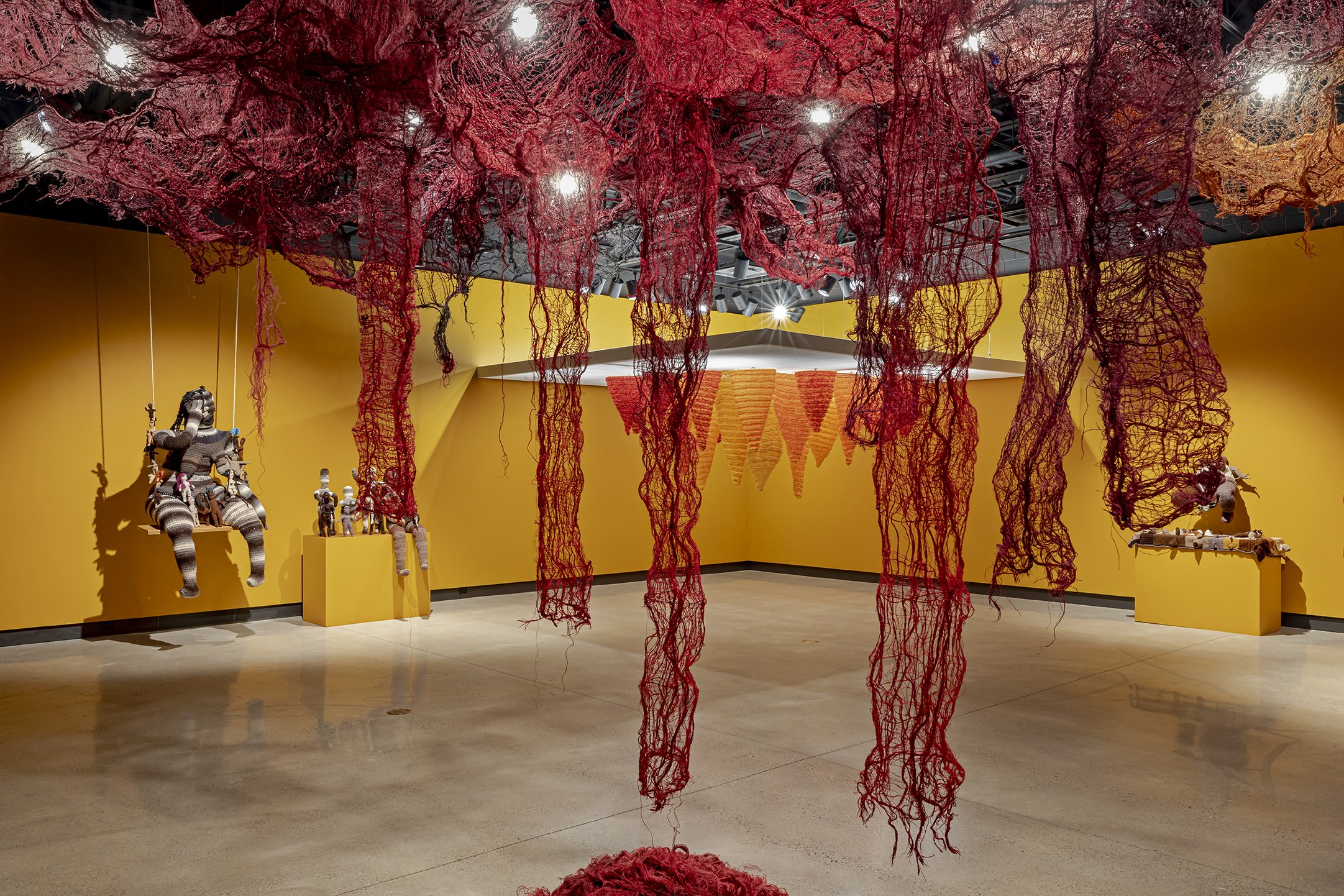
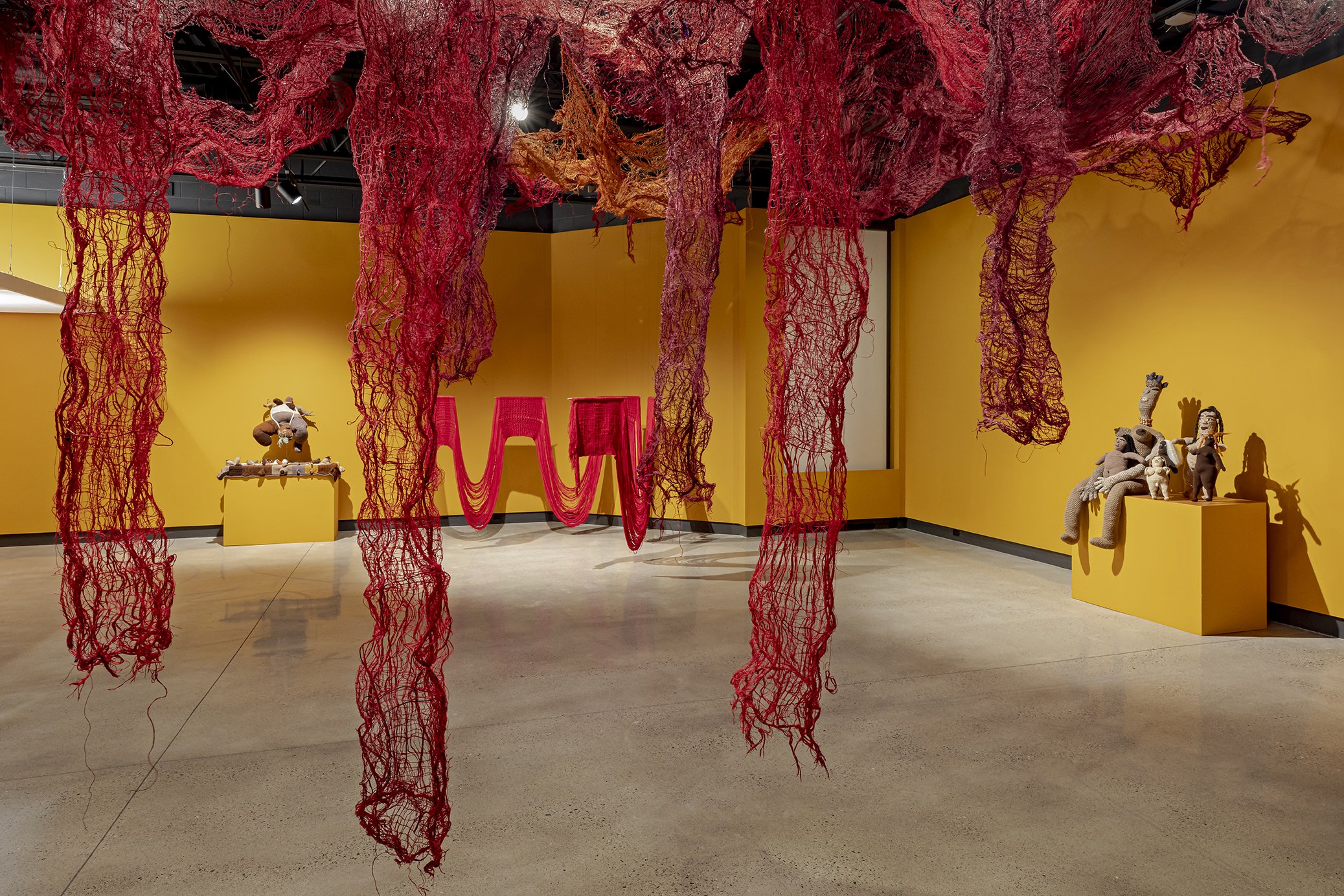
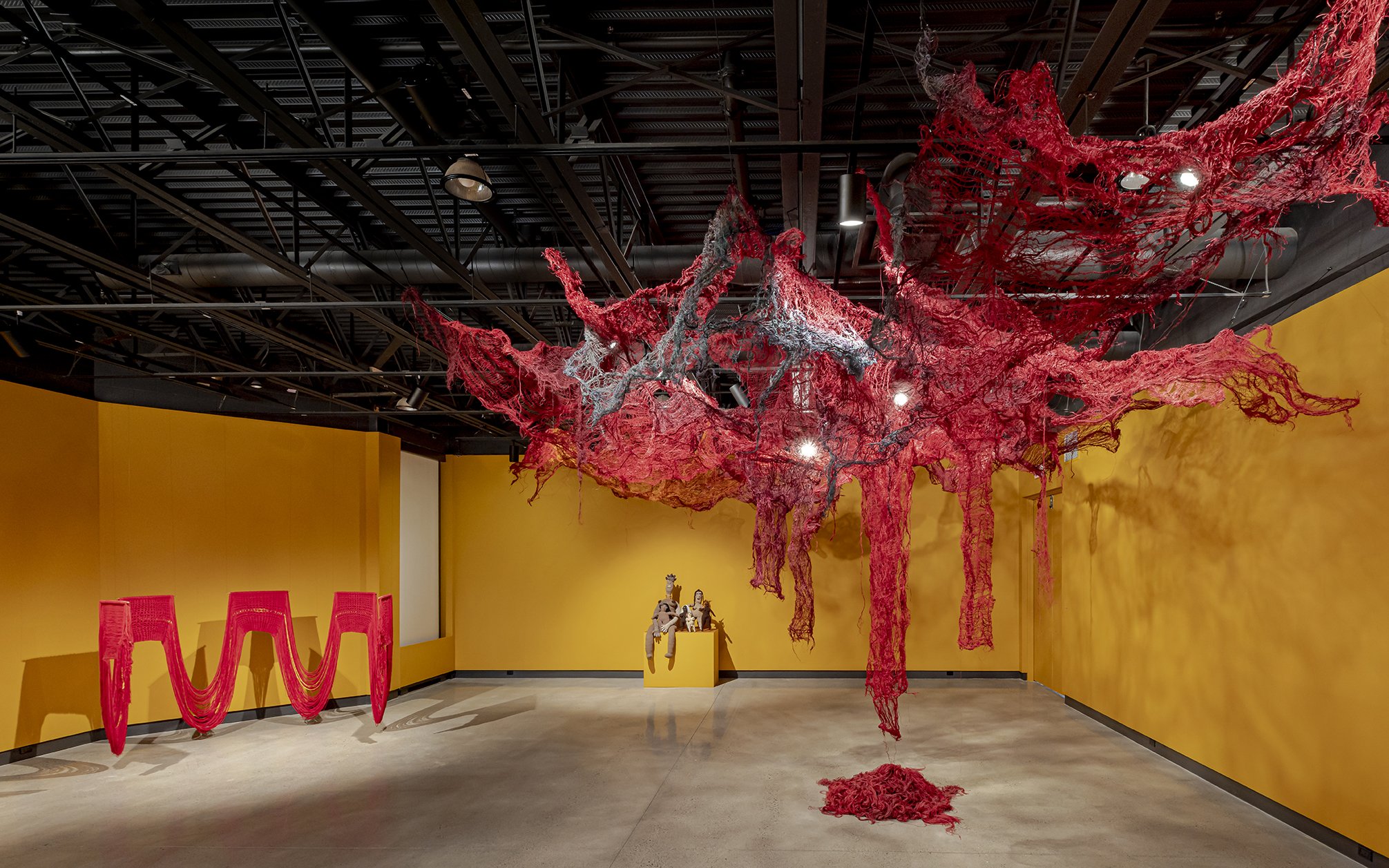
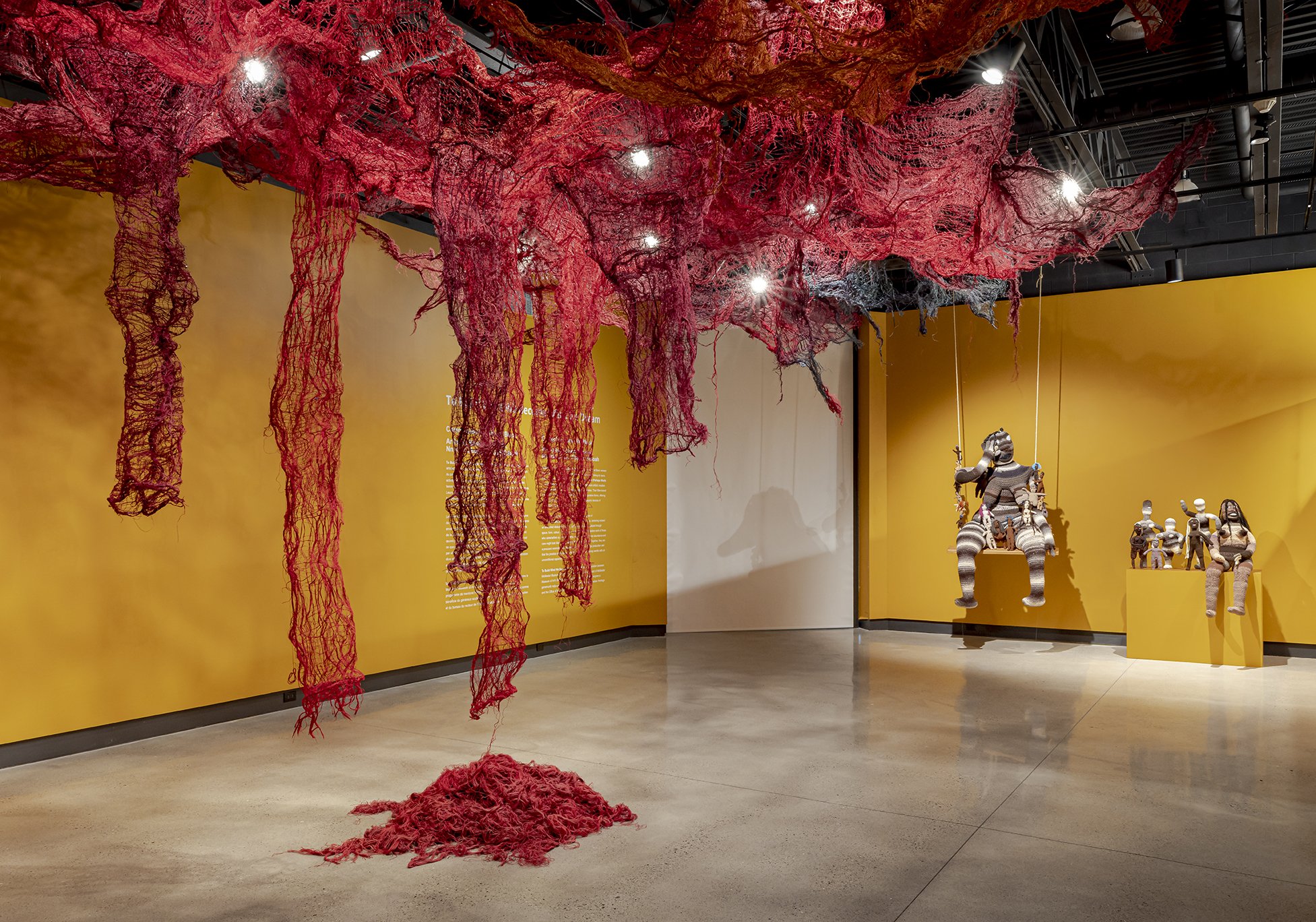
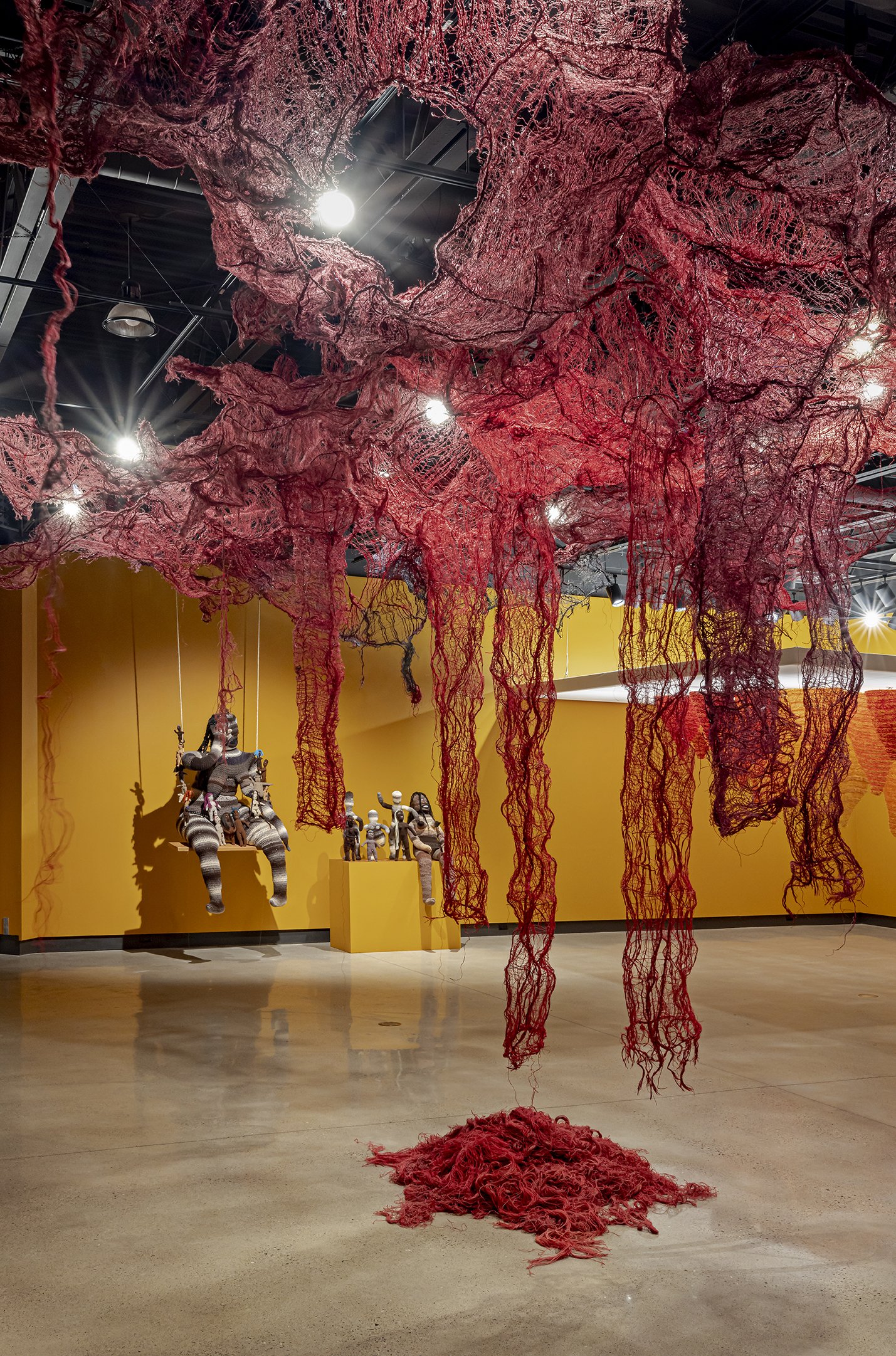
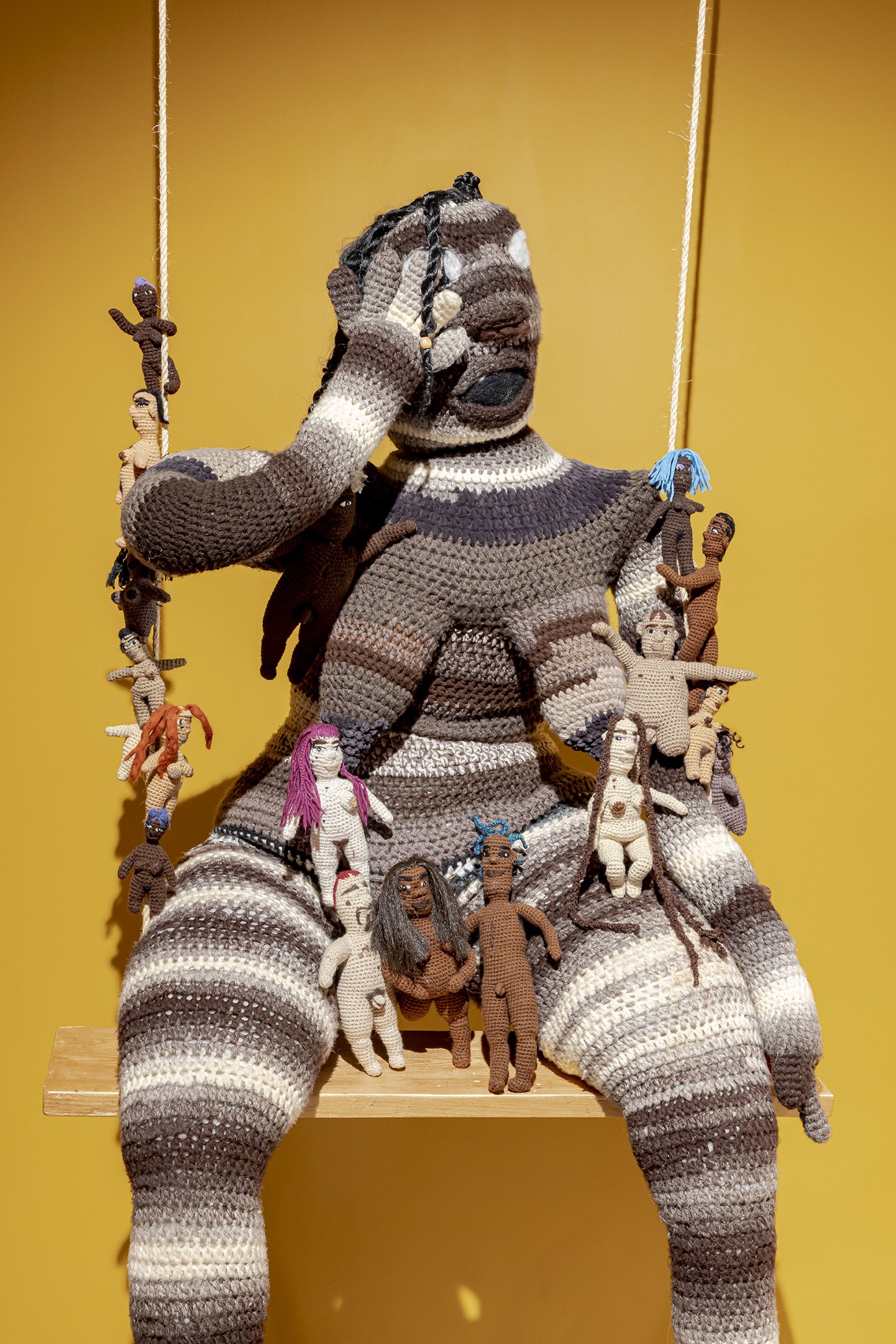
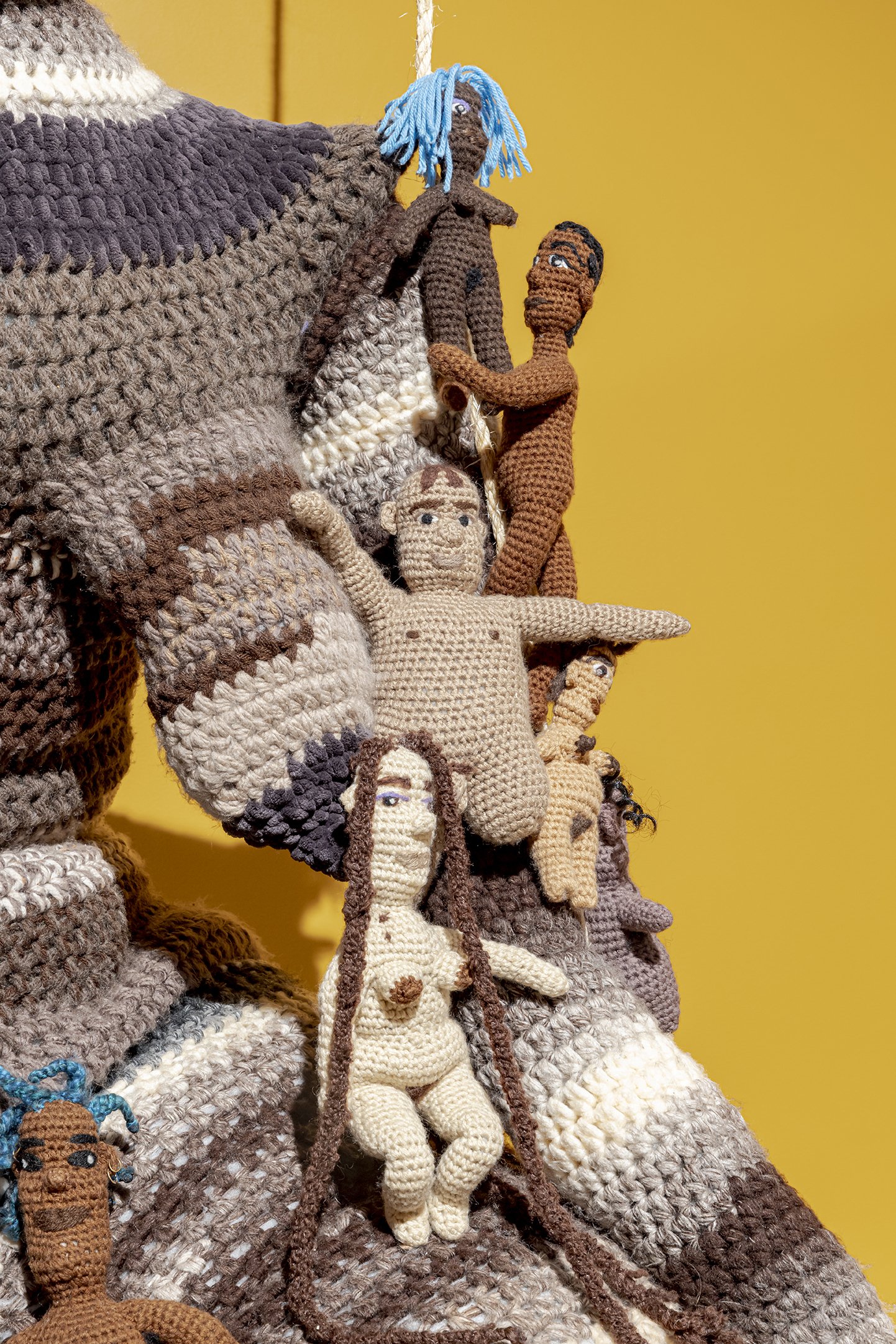
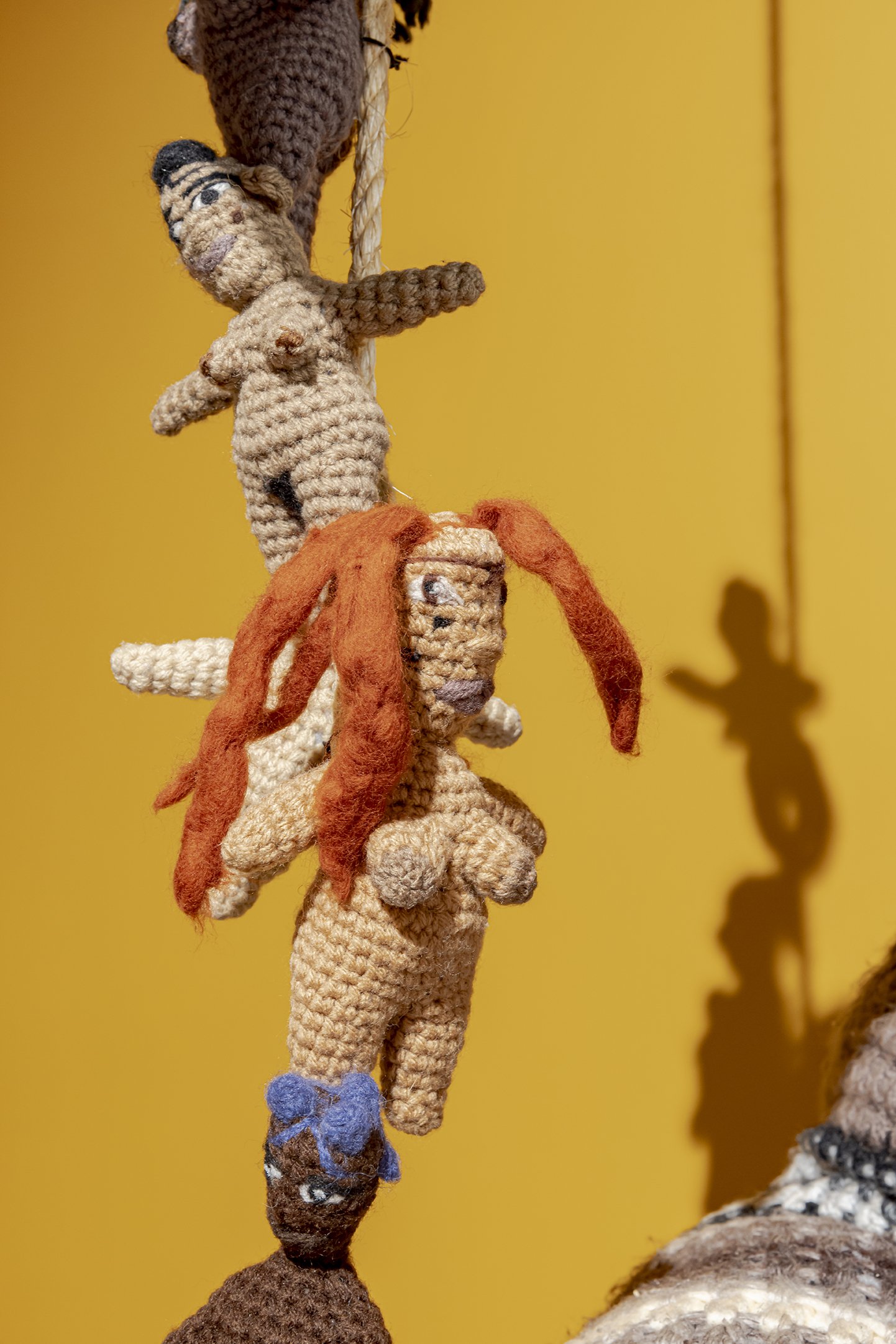
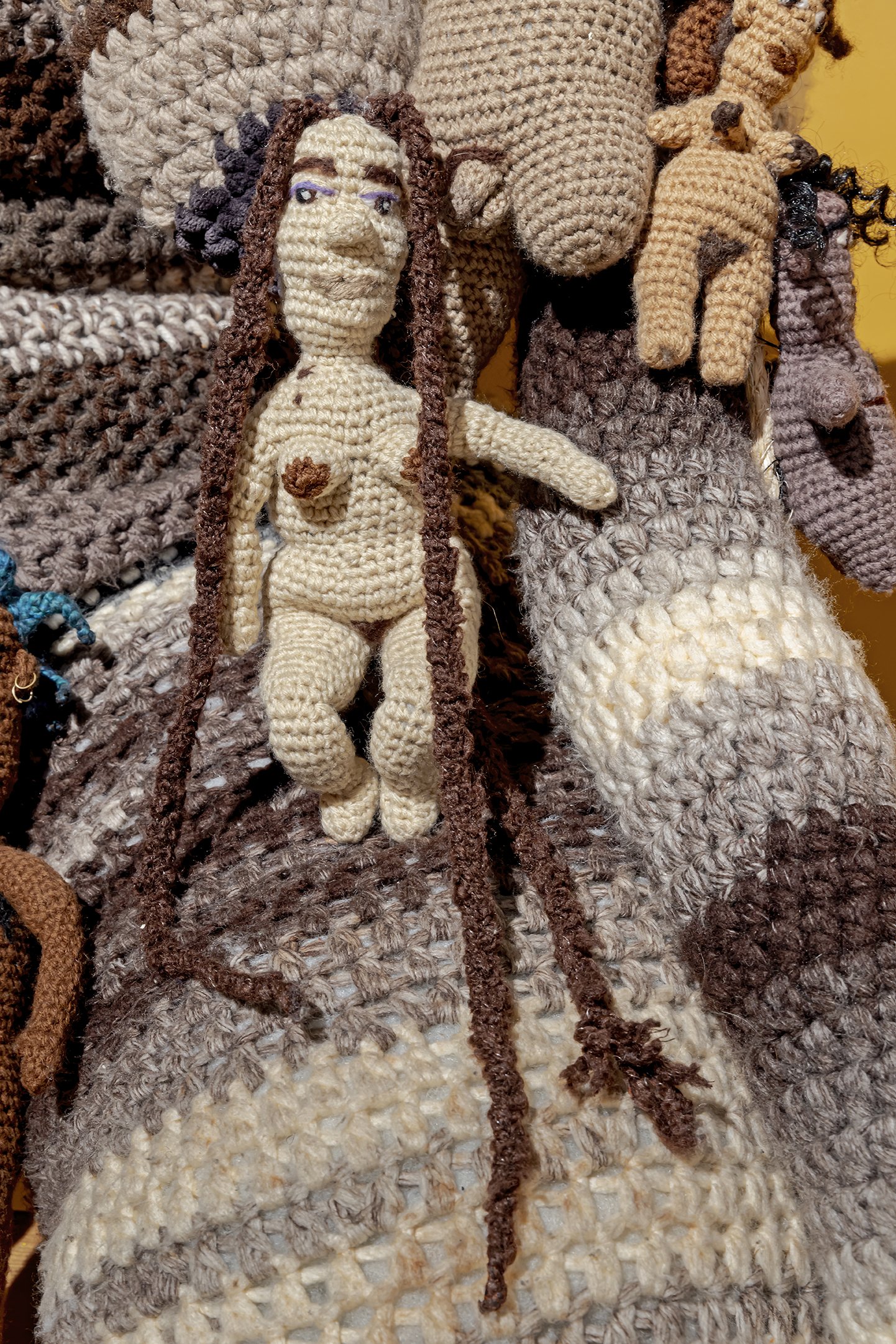
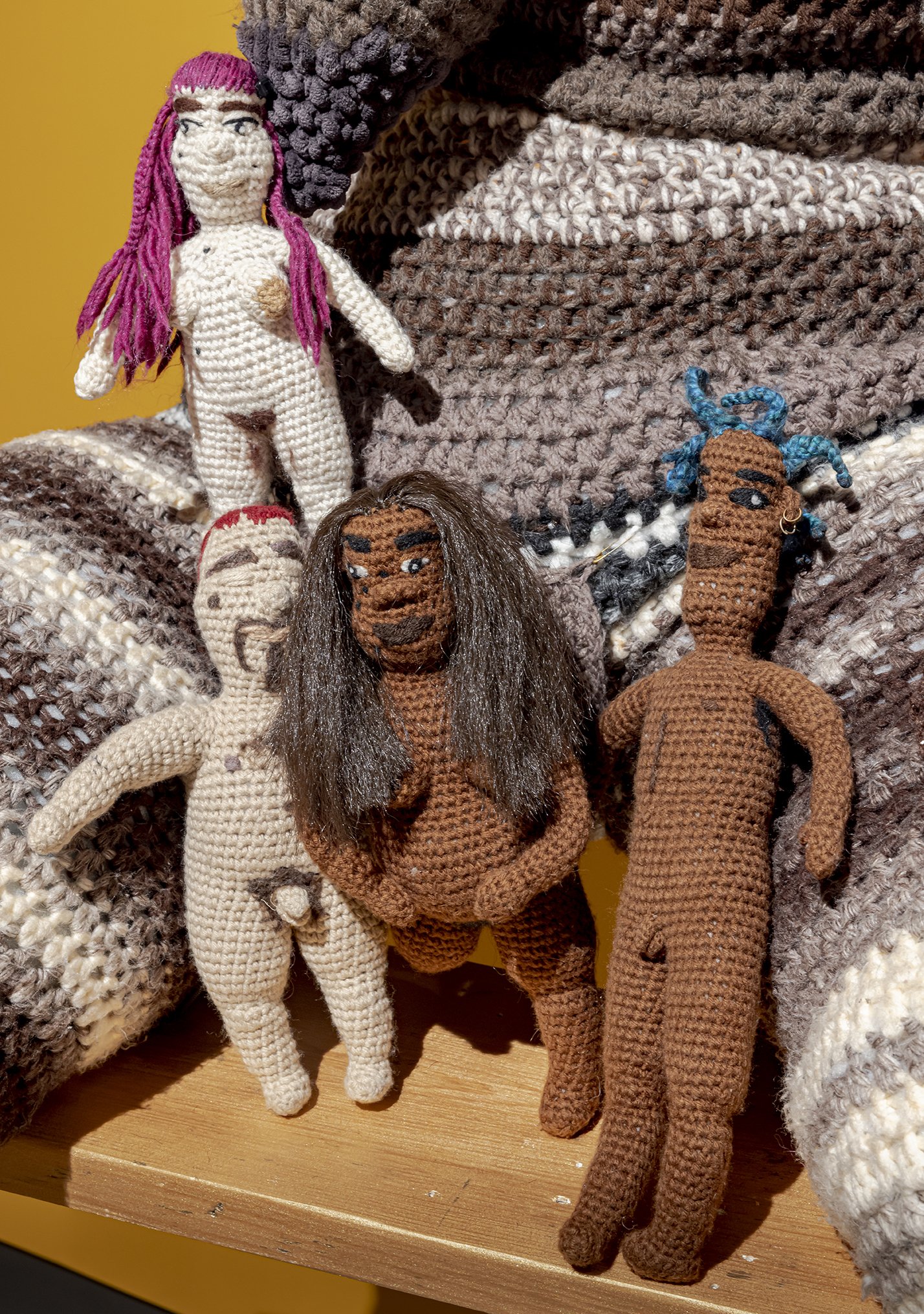
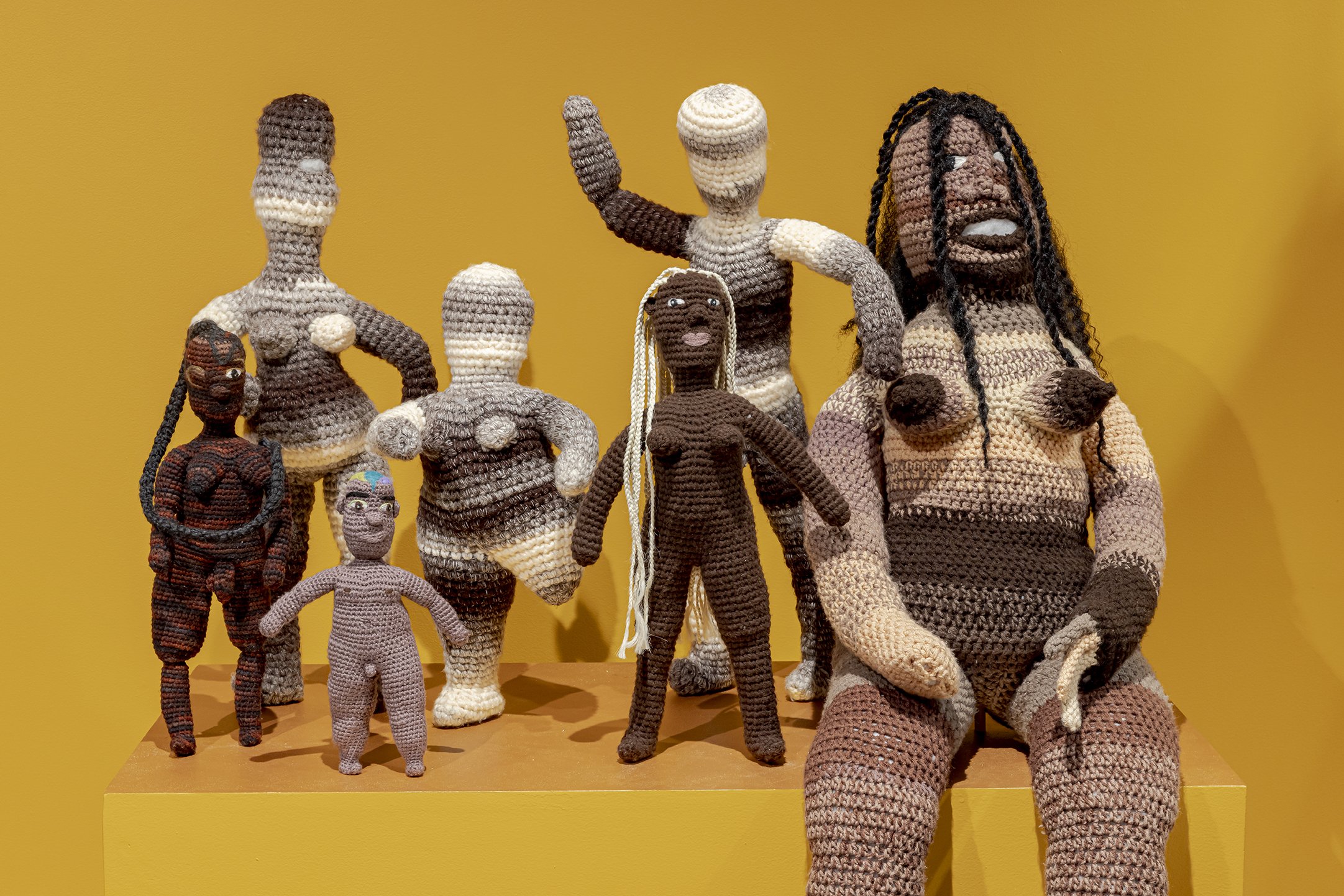
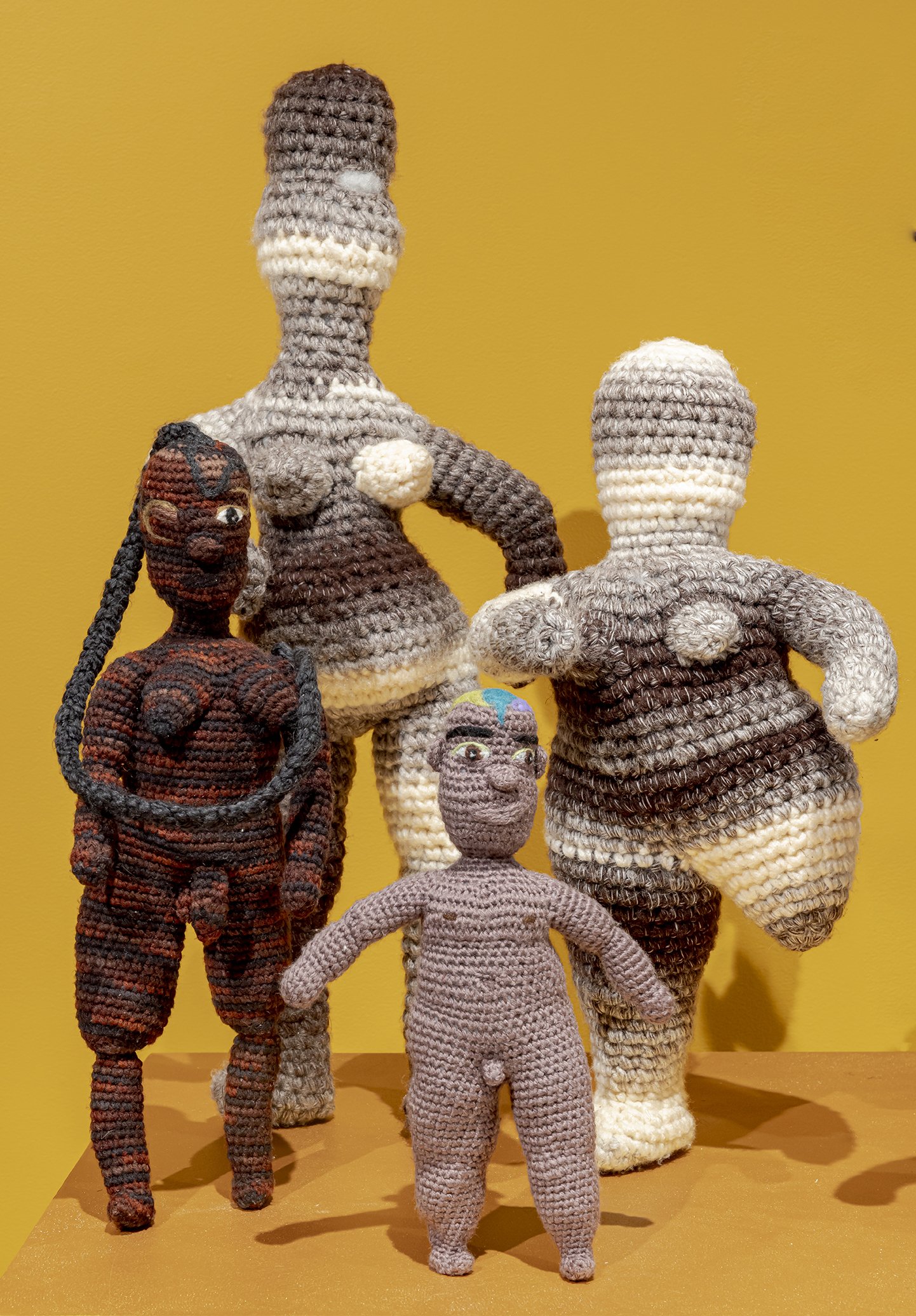
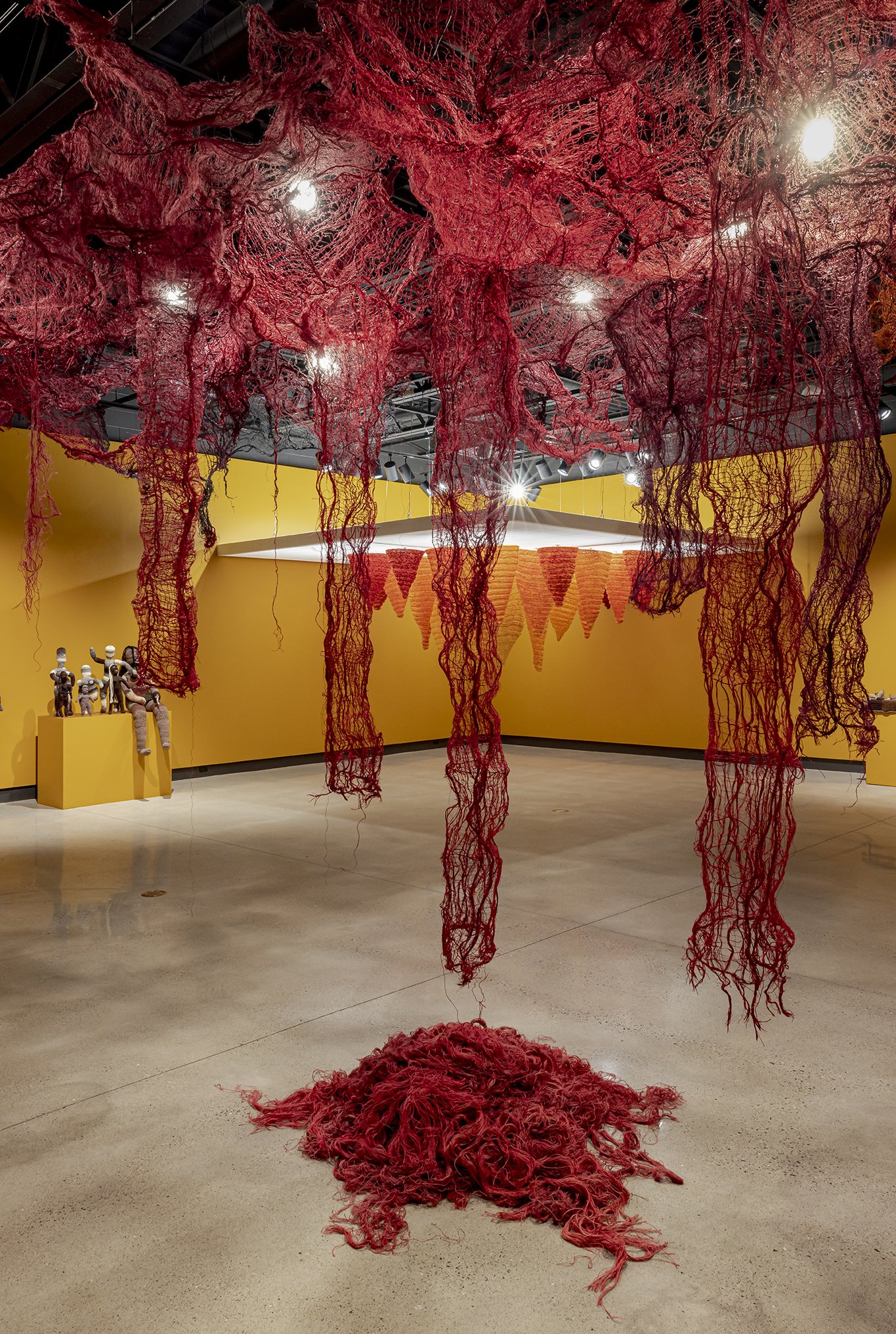
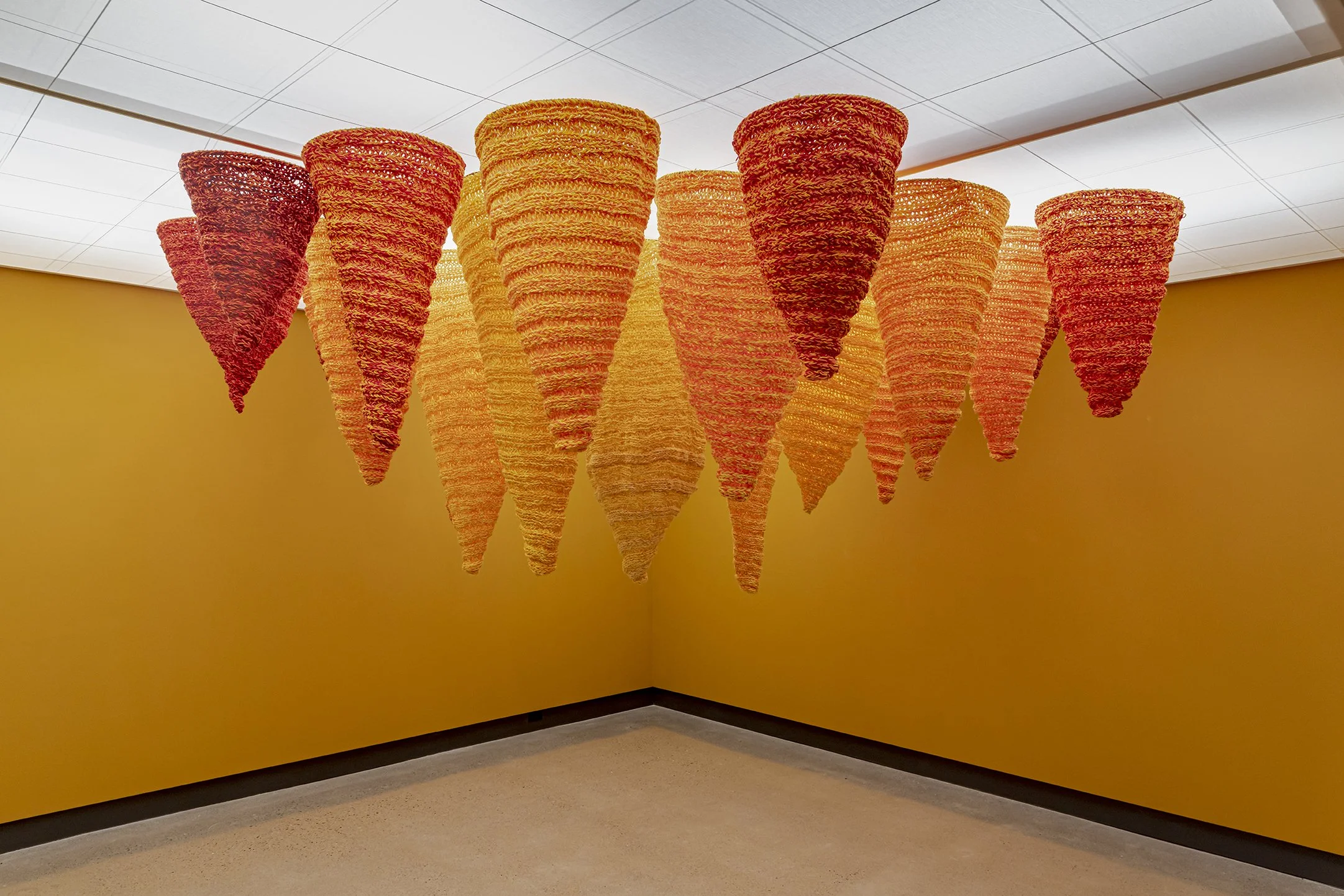
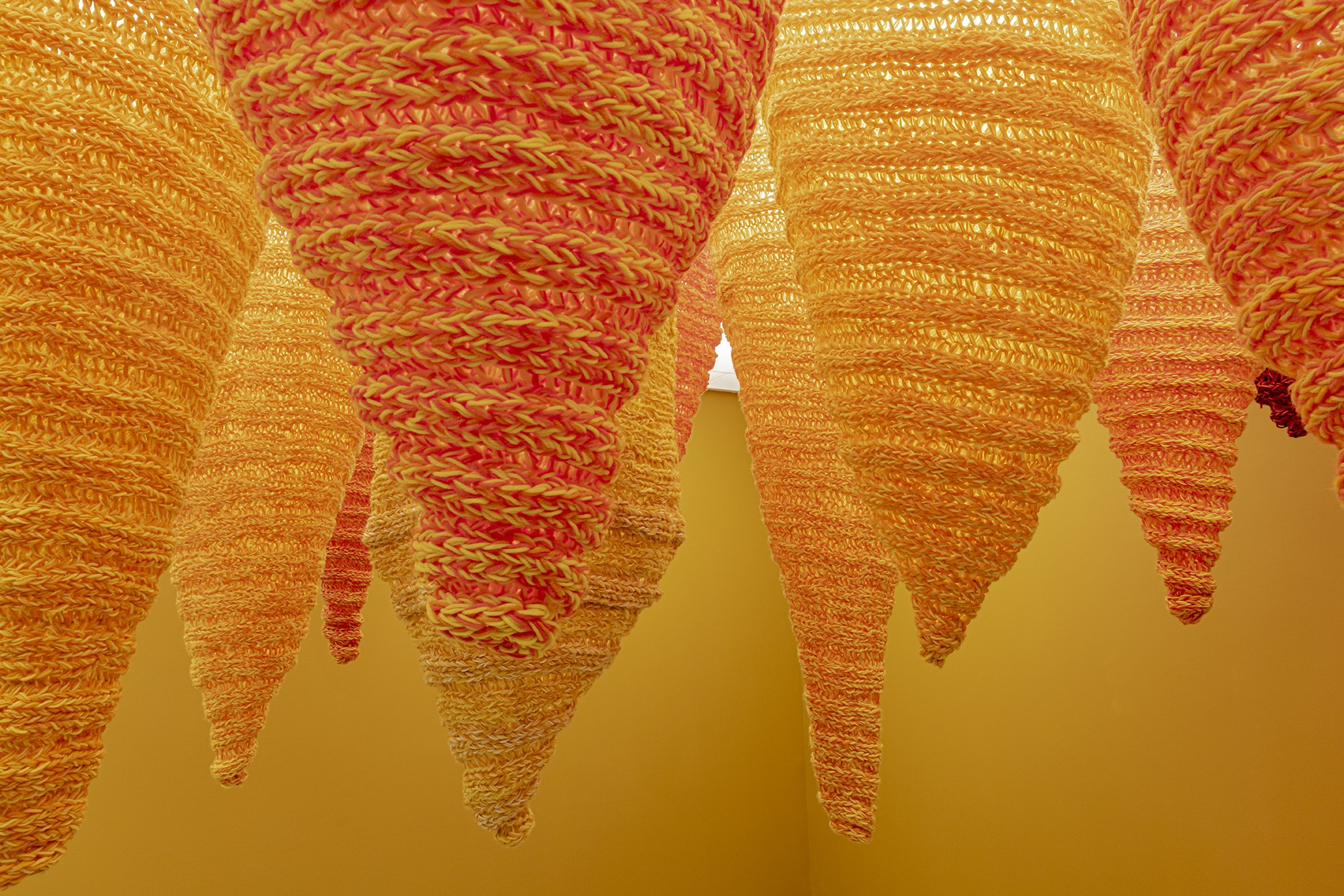

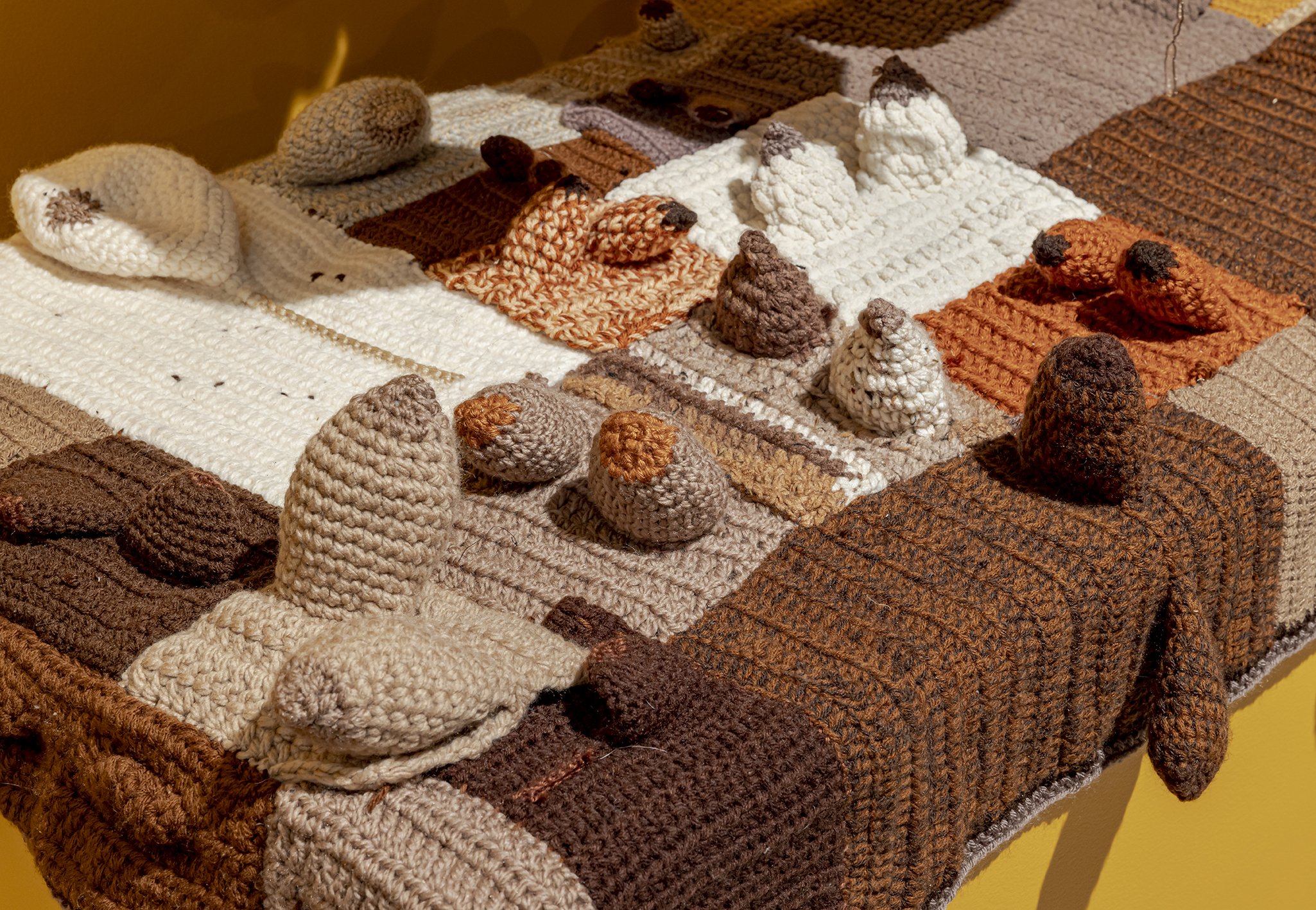
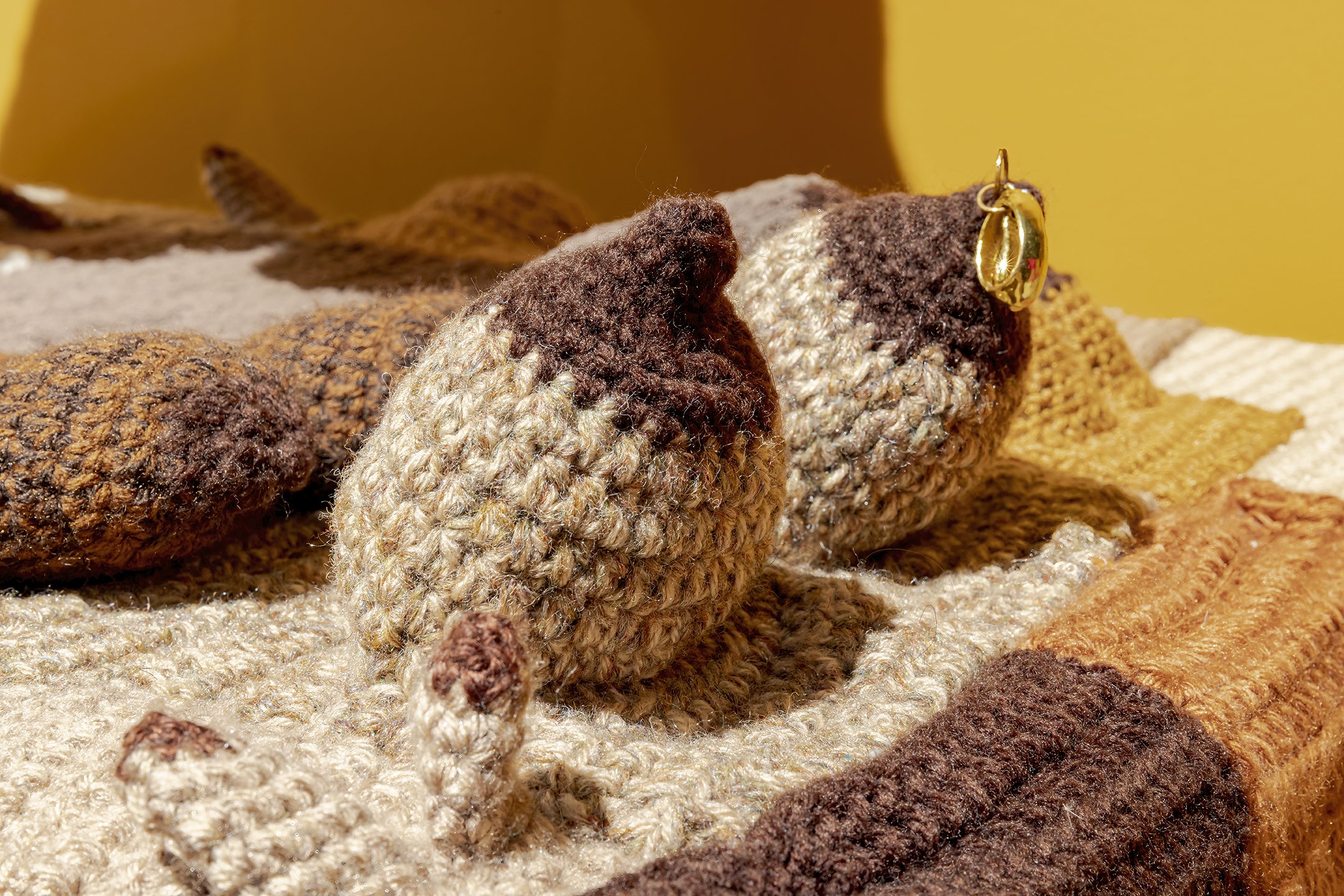
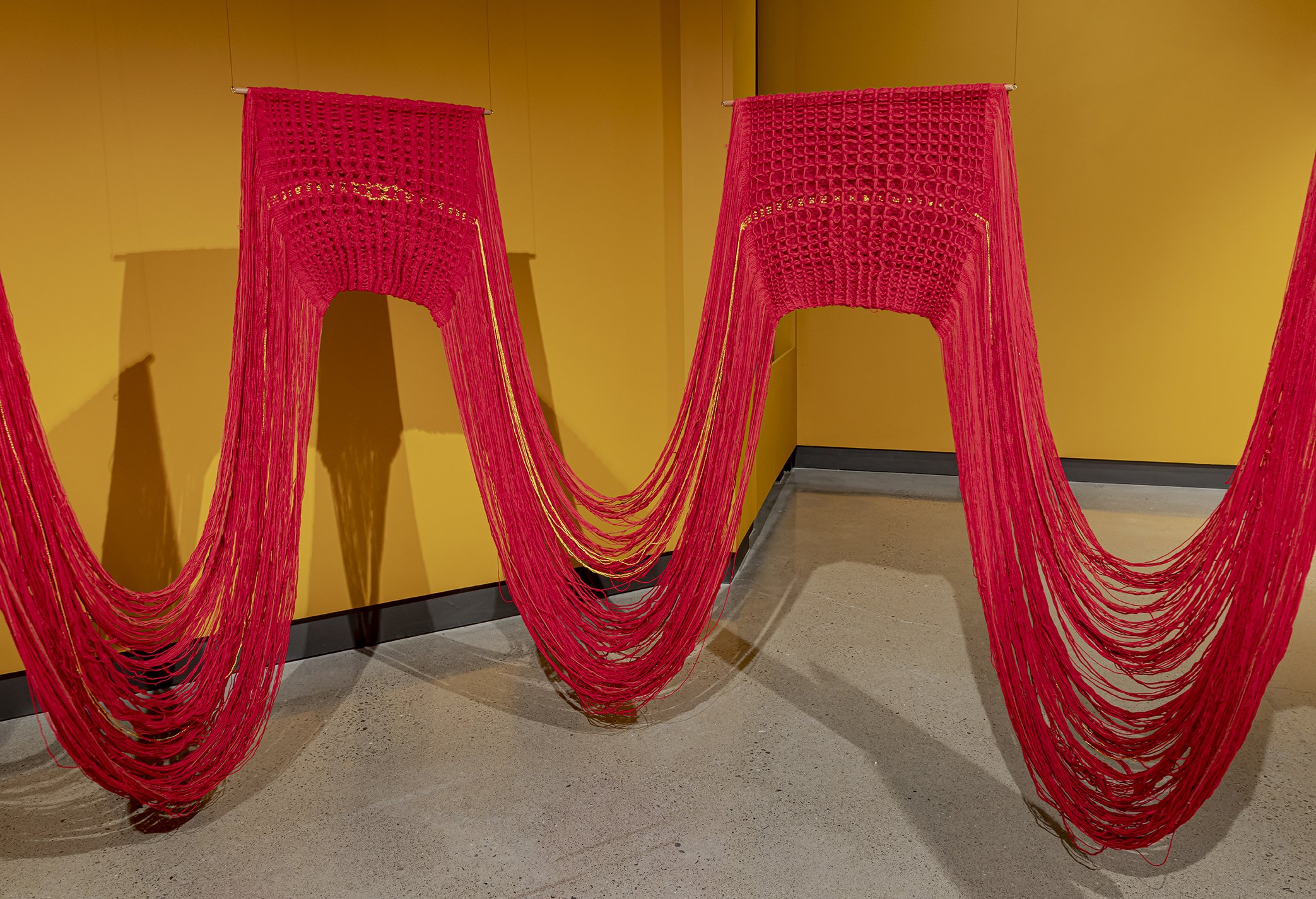
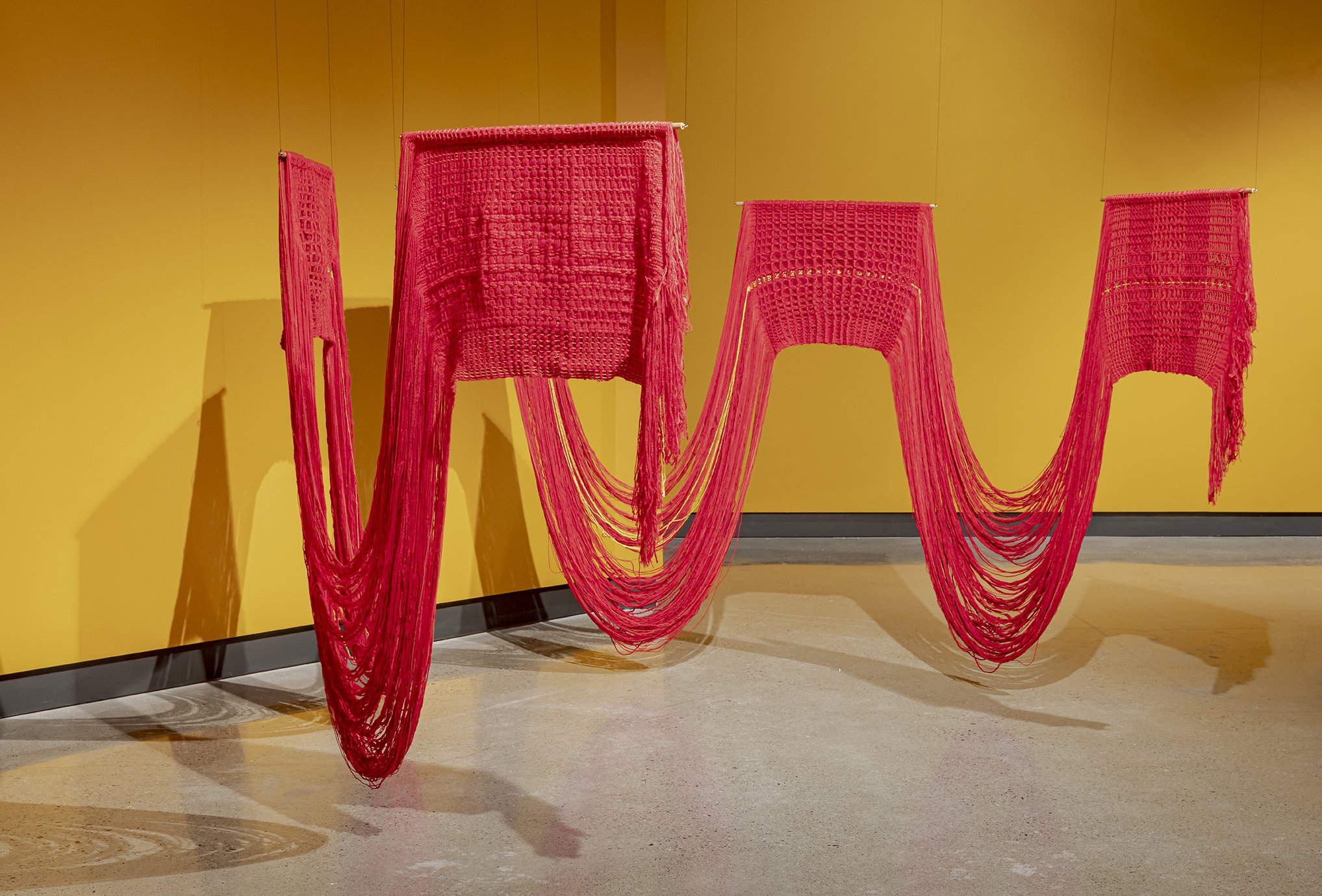
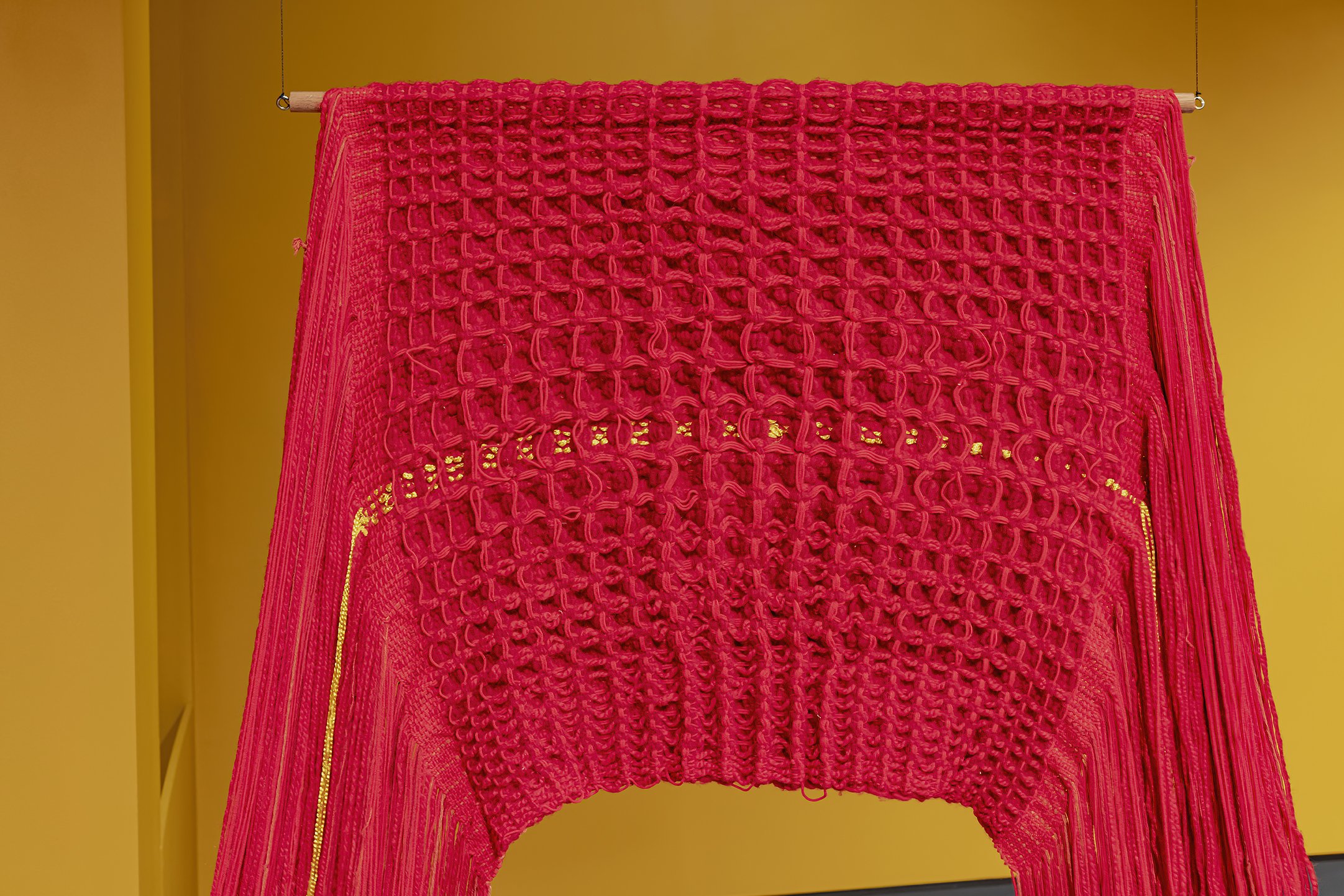
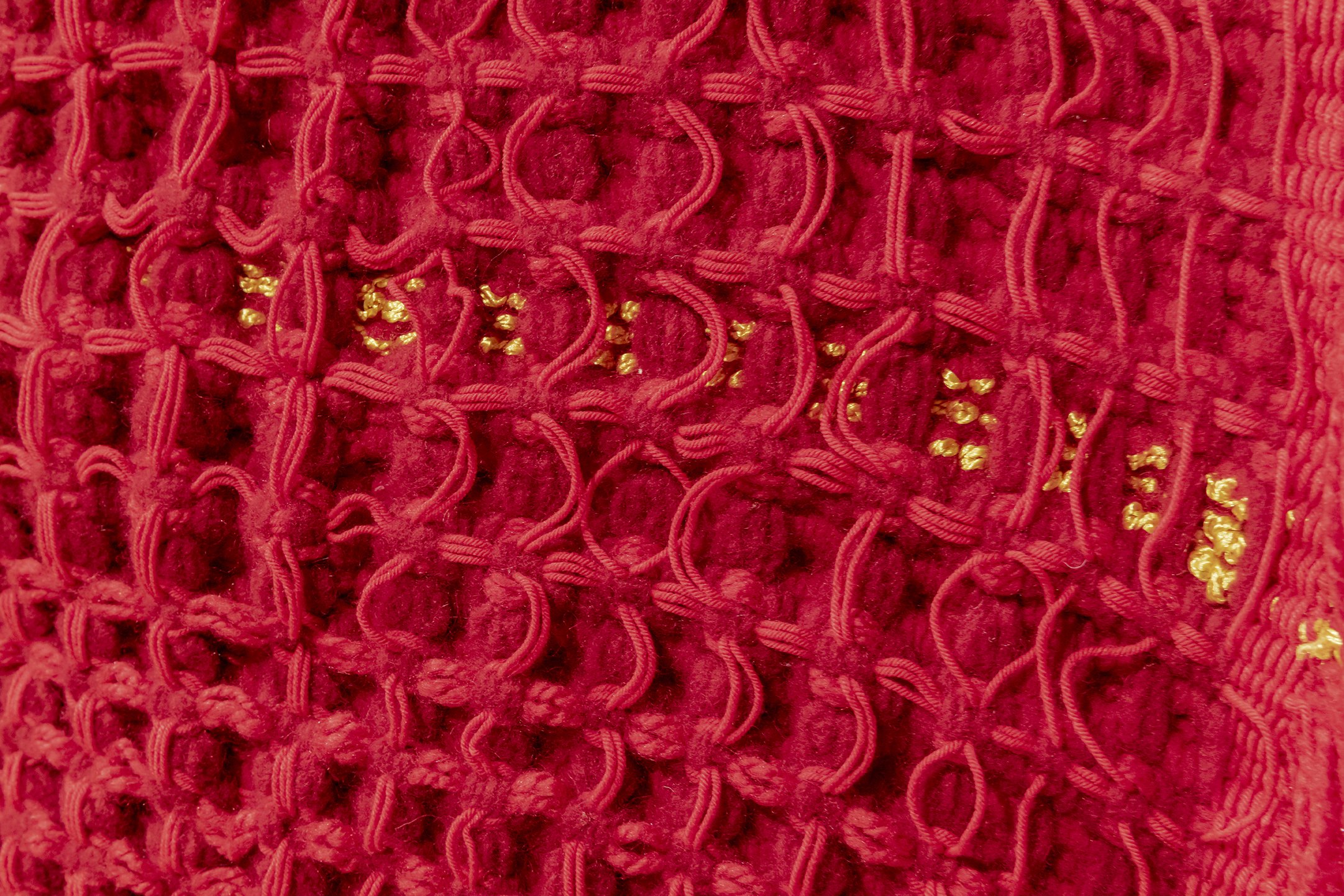
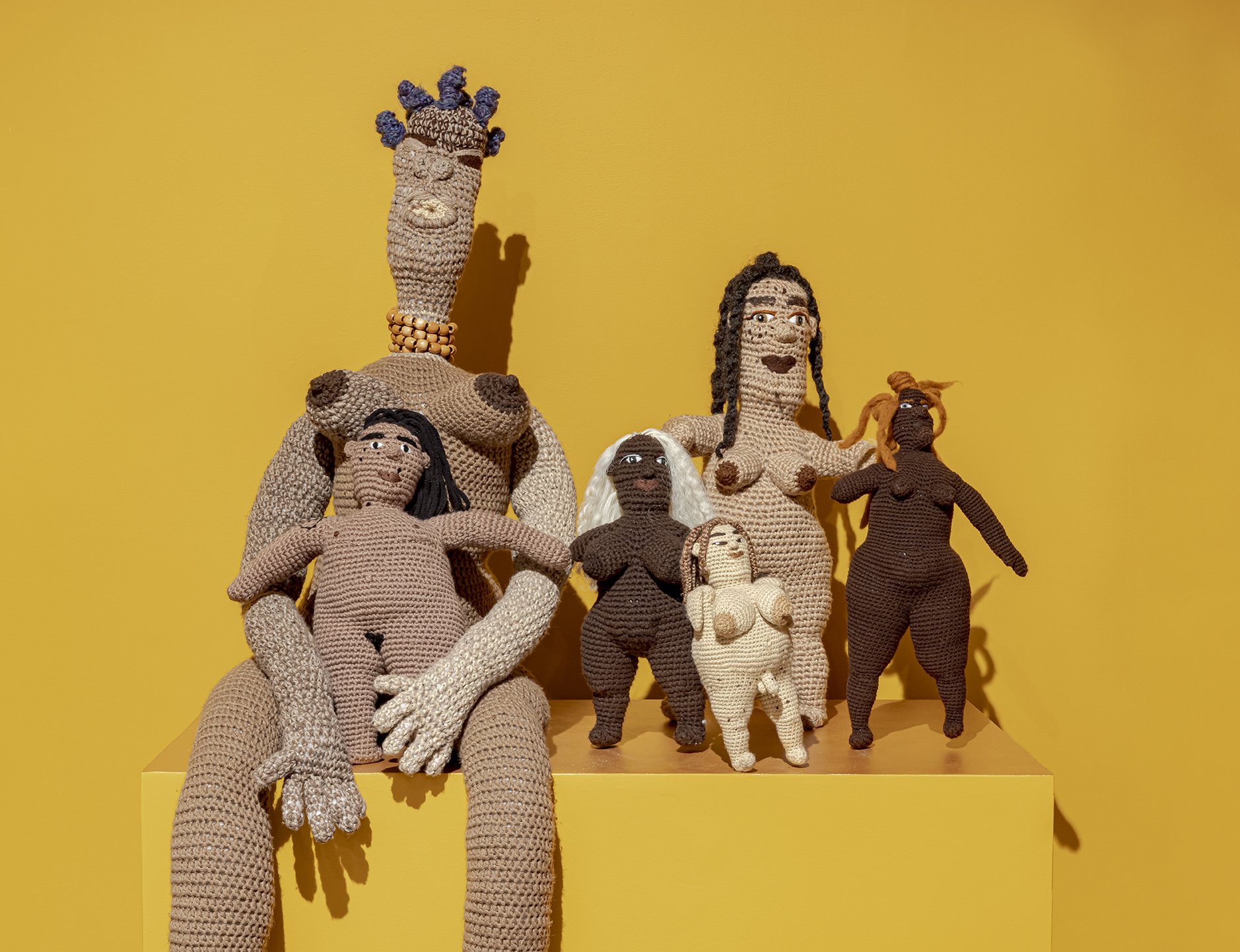
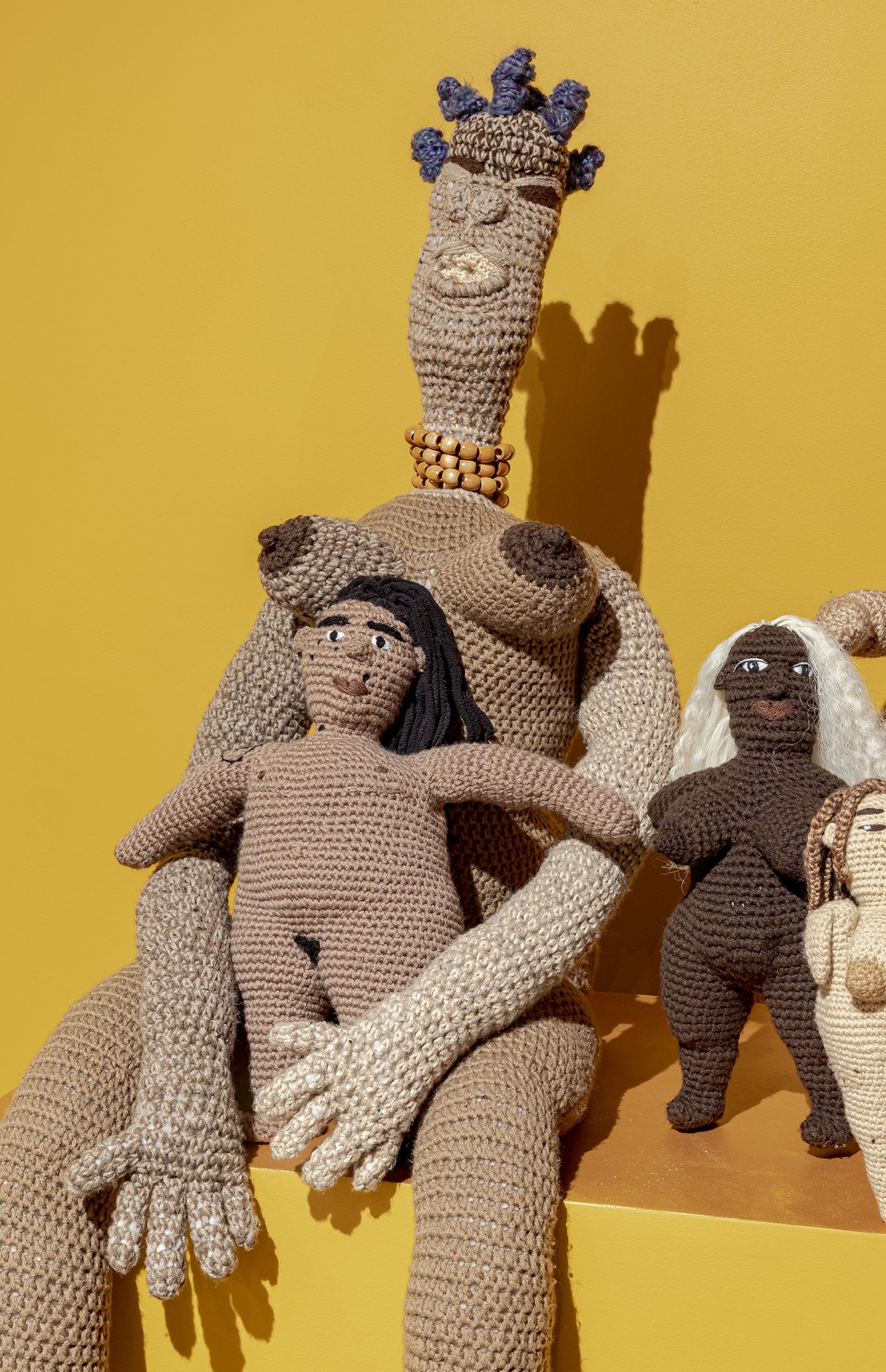

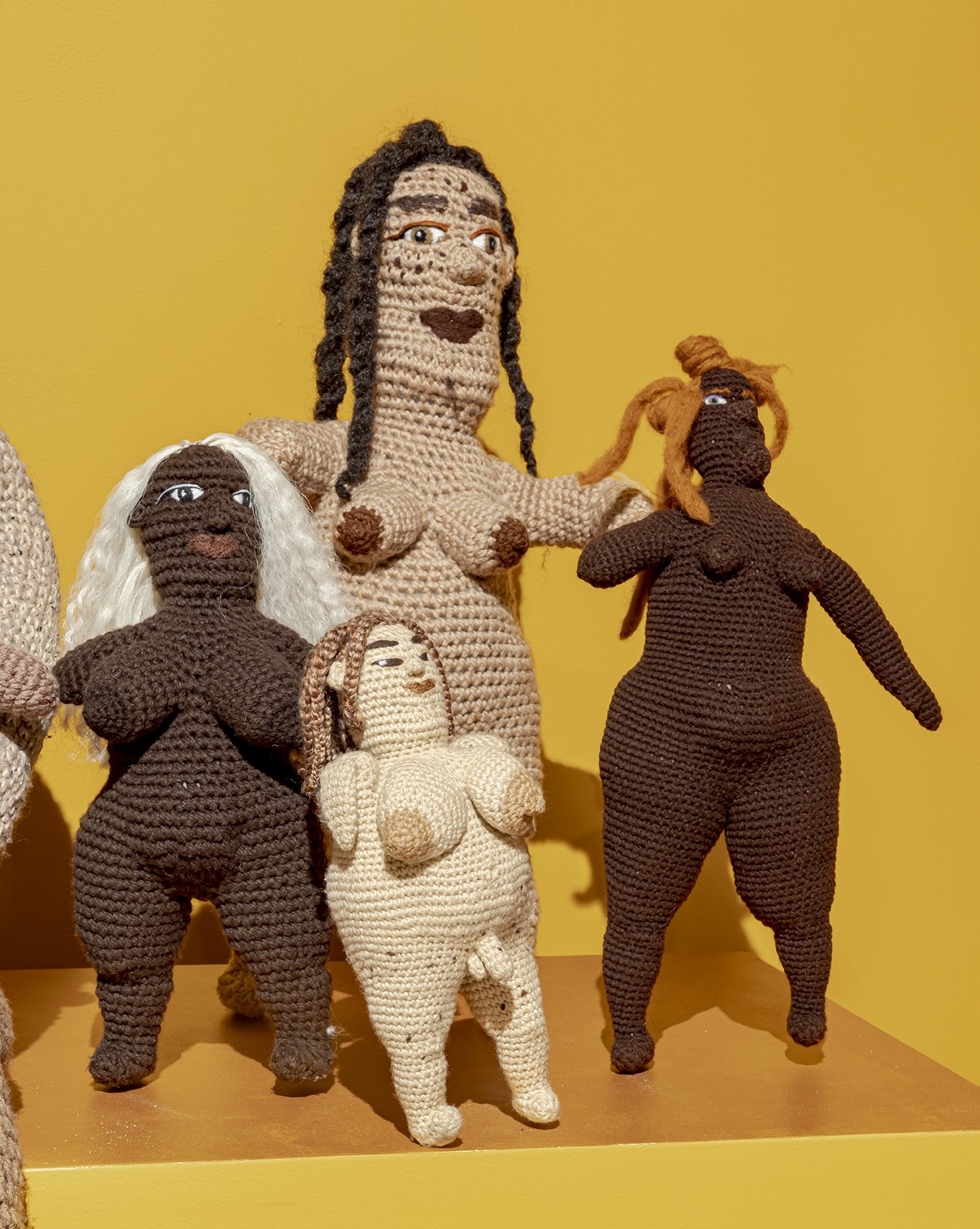
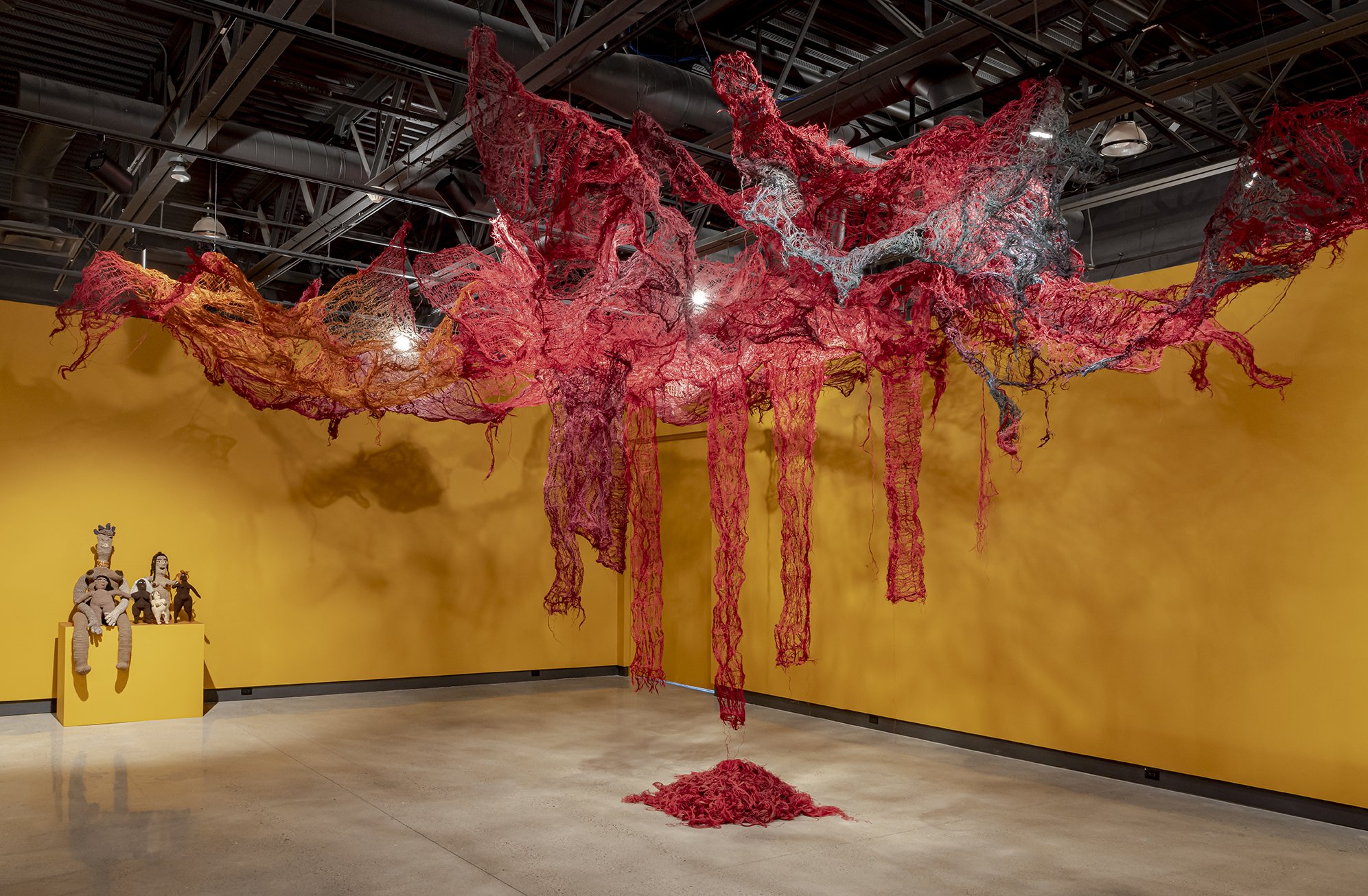
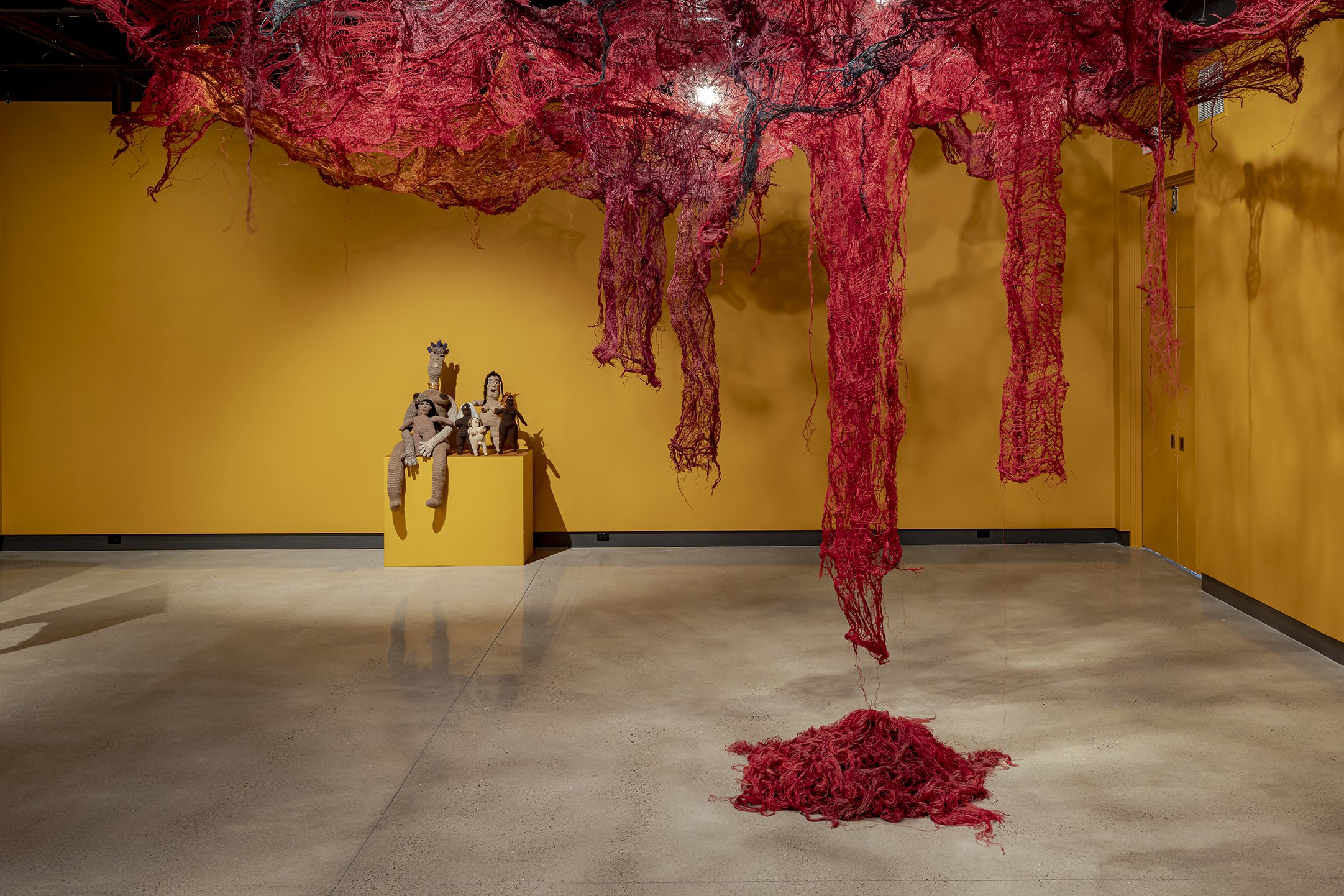
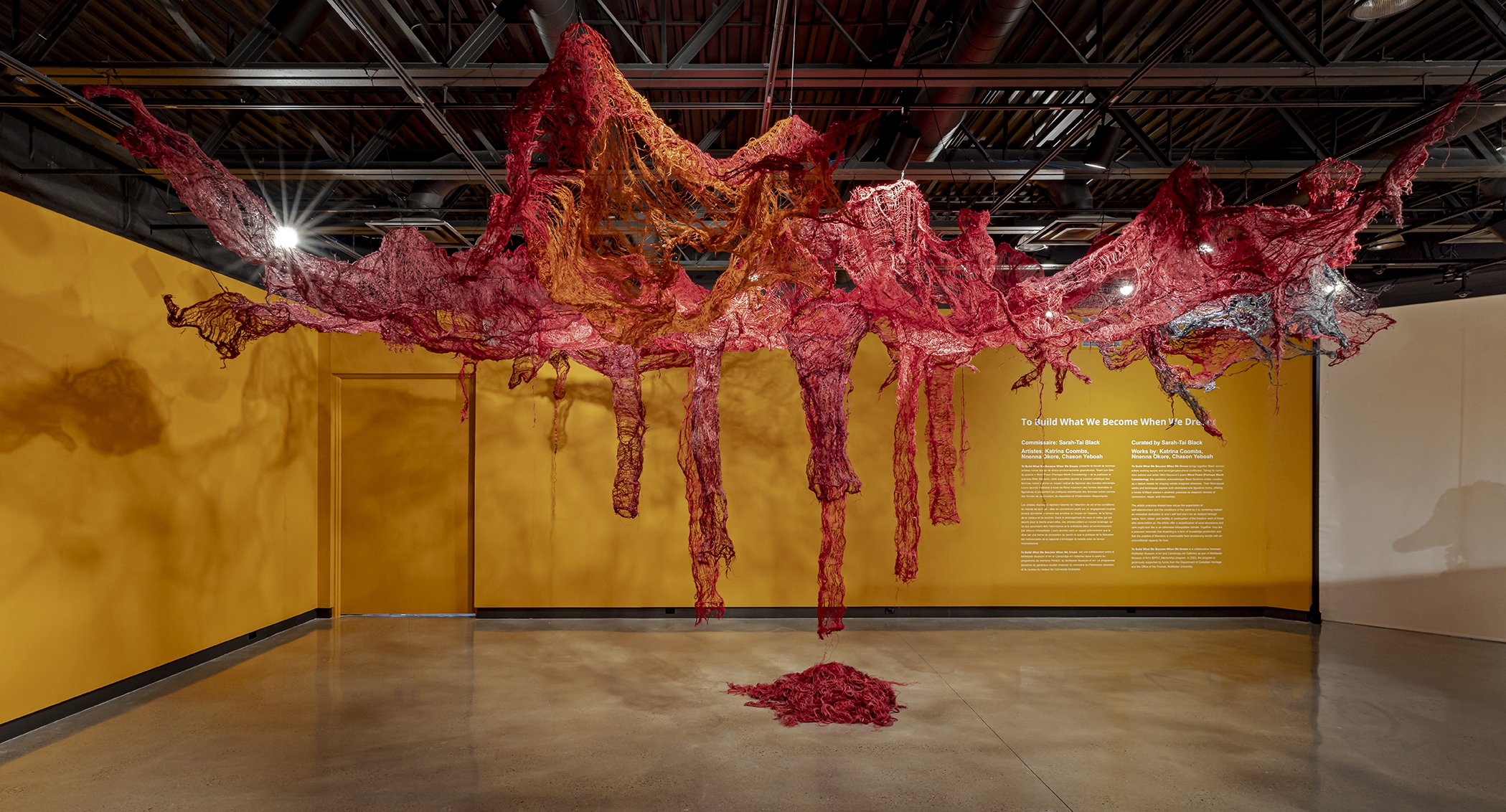
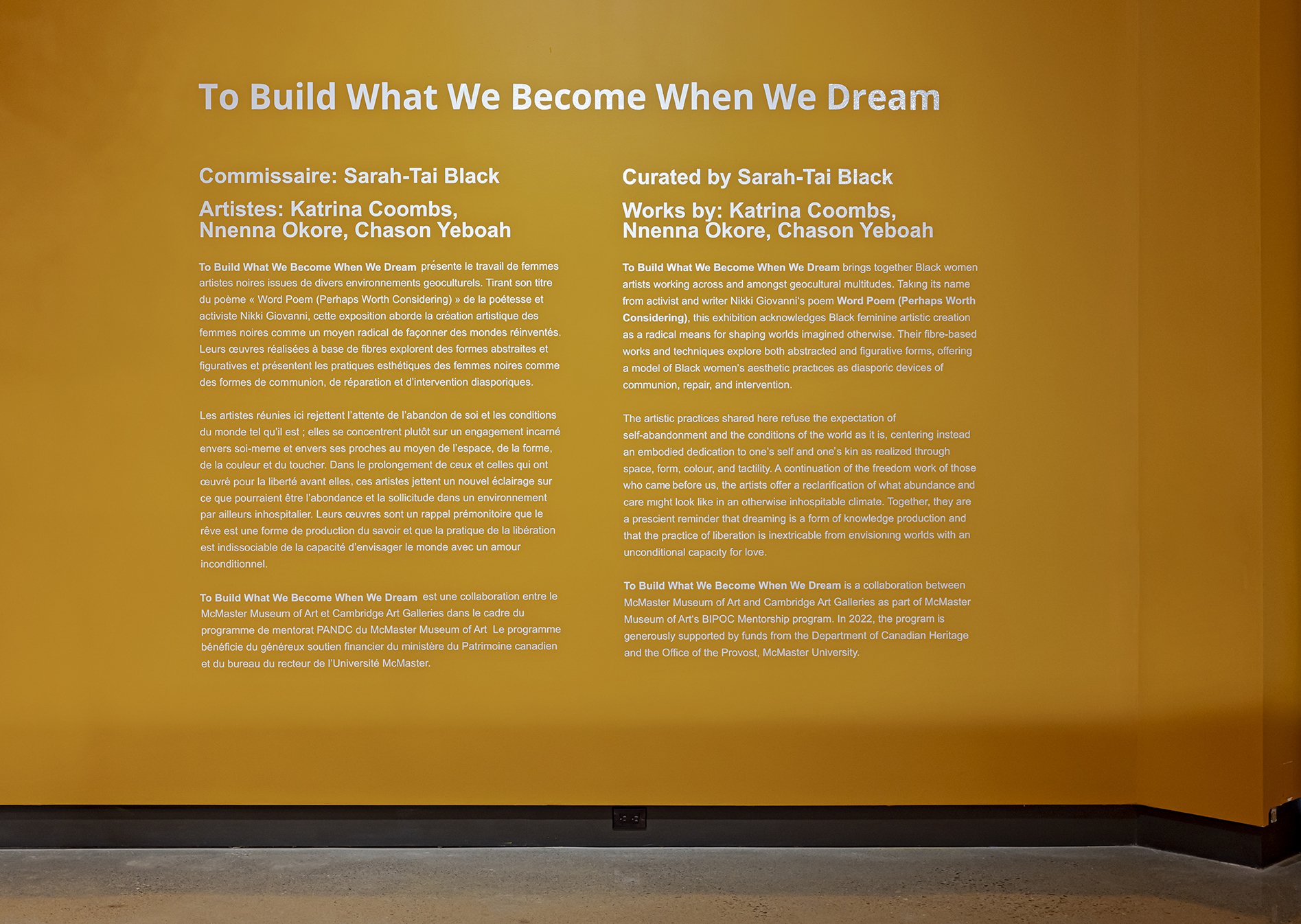
To Build What We Become When We Dream
Katrina Coombs, Nnenna Okore, Chason Yeboah
Queen's Square Gallery, Cambridge Art Galleries
Cambridge, ON
March 4, 2023 - May 27, 2023
To Build What We Become When We Dream brings together Black women artists working across and amongst geocultural multitudes. Taking its name from activist and writer Nikki Giovanni’s poem Word Poem (Perhaps Worth Considering), this exhibition acknowledges Black feminine artistic creation as a radical means for shaping worlds imagined otherwise. Their fibre-based works and techniques explore both abstracted and figurative forms, offering a model of Black women’s aesthetic practices as diasporic devices of communion, repair, and intervention.
The artistic practices shared here refuse the expectation of self-abandonment and the conditions of the world as it is, centering instead an embodied dedication to one’s self and one’s kin as realized through space, form, colour, and tactility. A continuation of the freedom work of those who came before us, the artists offer a reclarification of what abundance and care might look like in an otherwise inhospitable climate. Together, they are a prescient reminder that dreaming is a form of knowledge production and that the practice of liberation is inextricable from envisioning worlds with an unconditional capacity for love.
To Build What We Become When We Dream is a collaboration between McMaster Museum of Art and Cambridge Art Galleries as part of the McMaster Museum of Art's BIPOC Mentorship program. The program is generously supported by funds from the Department of Canadian Heritage and the Office of the Provost, McMaster University.
Documentation by Toni Hafkenscheid
-
Katrina Coombs was born in St Andrew, Jamaica. She holds an MFA in Creative Practice from Transart Institute via the University of Plymouth. Coombs’ passion for fibre and an uncanny understanding of the sensitivity of threads and fabric are used to formulate designs and sculptural forms that relate to the human body, and especially that of the maternal figure, both physically and conceptually. Ever the consistent creator, Coombs has been awarded grants from the National Performance Network (New Orleans) and the CATAPULT initiative (Jamaica), as well as fellowships with the Caribbean Cultural Center African Diaspora Institute (New York) and The Jamaica Art Society (New York). She has also participated in several residencies globally, such as the Fountainhead Residency with Diaspora Vibe Cultural Incubator (Miami), the Gilbertsville Expressive Movement Artist Residency (New York), and the Davidoff Artist Residency (Bogota, Colombia). Her work has been featured in numerous exhibitions in Kingston, Manila, Berlin, New York, Bogota, Miami, Sarasota, Kentucky, Chicago, Washington, Carolina, and Ontario. In 2022, Coombs had her first solo museum exhibition at the Sarasota Art Museum in Florida entitled “I M(O)ther: Threads of the Maternal Figure”. Apart from her work as an artist, Coombs also works as a mentor and independent curator through the art initiative Blaqmango Consultants. Through Blaqmango she organizes exhibitions and residencies in Jamaica as stepping stones for artist development. She believes that all artists should be true to their creative vision as they pursue their artistic practice and as such encourages and guides artists on the best ways to follow their dreams while providing them with opportunities to advance their careers. She lives and works in St. Andrew, Jamaica.
Nnenna Okore was born in Australia, raised in Nigeria, and works in the United States. Throughout her long career as an artist-researcher-teacher, she has focused on ecological issues steeped in artistic practice, pedagogy, and social engagements. In her most recent art projects, she uses bioplastics and environmentally friendly materials to create her artworks. Nnenna Okore is a Professor of Art at Chicago’s North Park University. She has a B.A degree from the University of Nigeria, Nsukka [N-su-ka), an MFA from the University of Iowa, and a PhD from Monash University, Australia. Added to numerous national and international awards, Okore is a recipient of the 2012 Fulbright Scholar Award and the 2021 Creative Victoria Award from Australia. Her works have been featured in major exhibitions at the Museum of Art and Design, NY; Museum of Contemporary African Diasporic Art, New York; Spelman Museum of Fine Art, Atlanta; Museu Afro Brasil, Sao Paulo, Brazil; Memphis Brooks Museum of Art, and the Cleveland Museum of Art, among others. Okore’s recent exhibitions include the Bruges Triennial Exhibition, Belgium, and the Chengdu International Biennial in China.
Chason Adjoa Nana Yeboah-Brown (she/her b. 1991, Toronto) is a self-taught textile sculptor, doll maker, and story-teller, exploring the oscillation of ancestral ritual through reconstructed, (un)woven and crocheted structures. Many of her works directly focus on themes of shame, loss of identity, sexuality, the notion and practice of “self-love”, hybridity, energy transference, and acknowledgment of the human form, with a primary focus on marginalized humans. Her desire is to traverse the interconnectivity of these themes, and from those travels - be it through her inclusive dolls, personification soft sculptures, or “safe space” creations, provoke more conversation and thought on communal awareness. “Born to a Trinidadian mother and Ghanaian father who met in Toronto where I was born, I like to think of myself and my practice as a direct product of the innate rituals of the diaspora. A new world conduit, here to continue the artistic generational movement of craft and story-telling through feeling and meditative thought.”
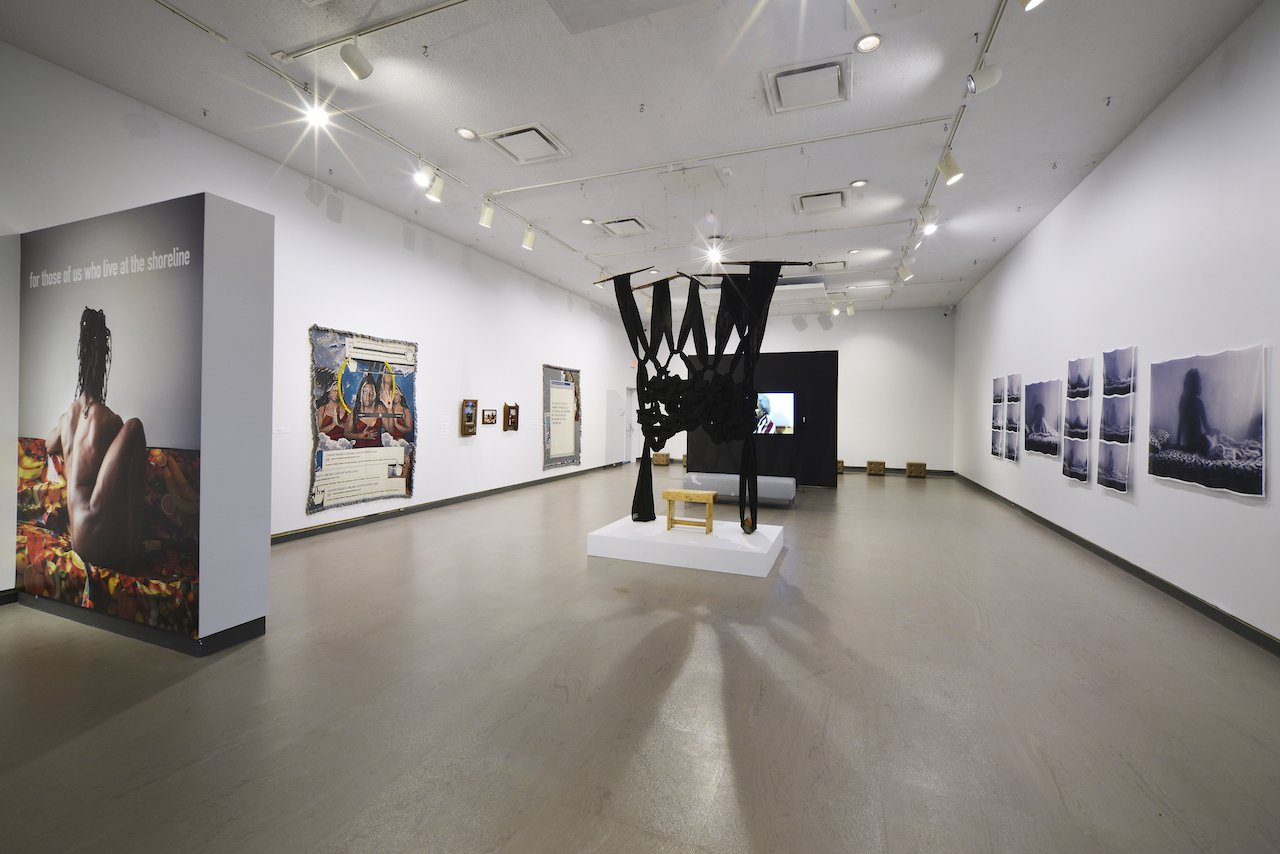
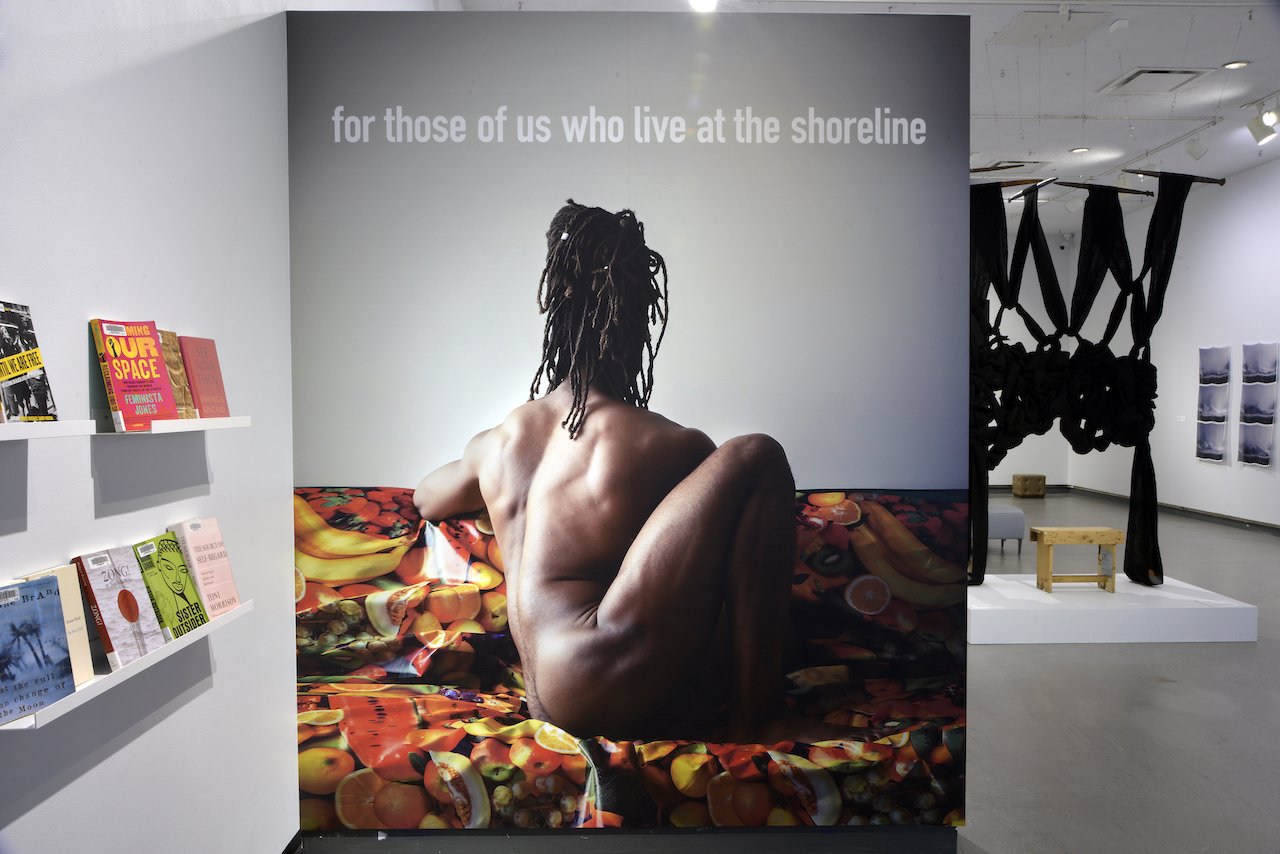
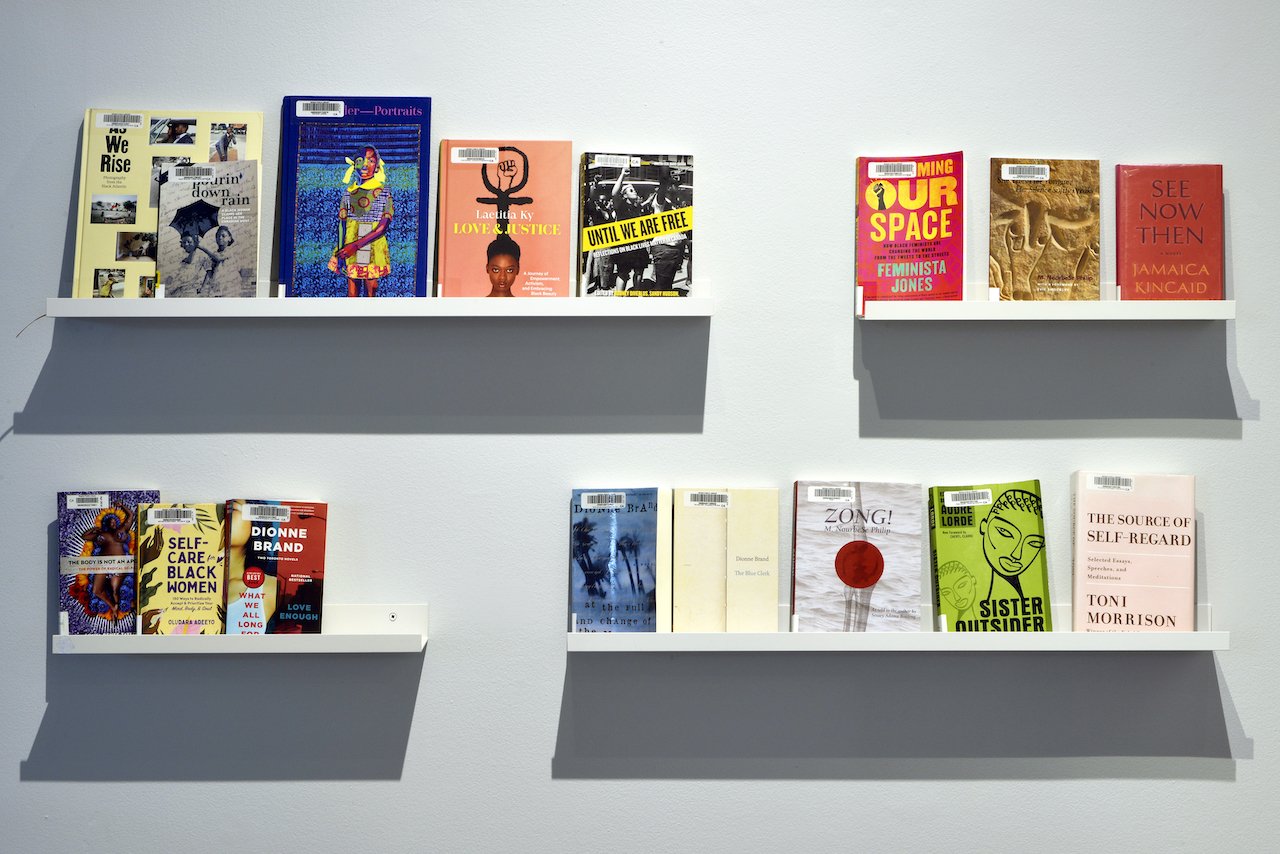
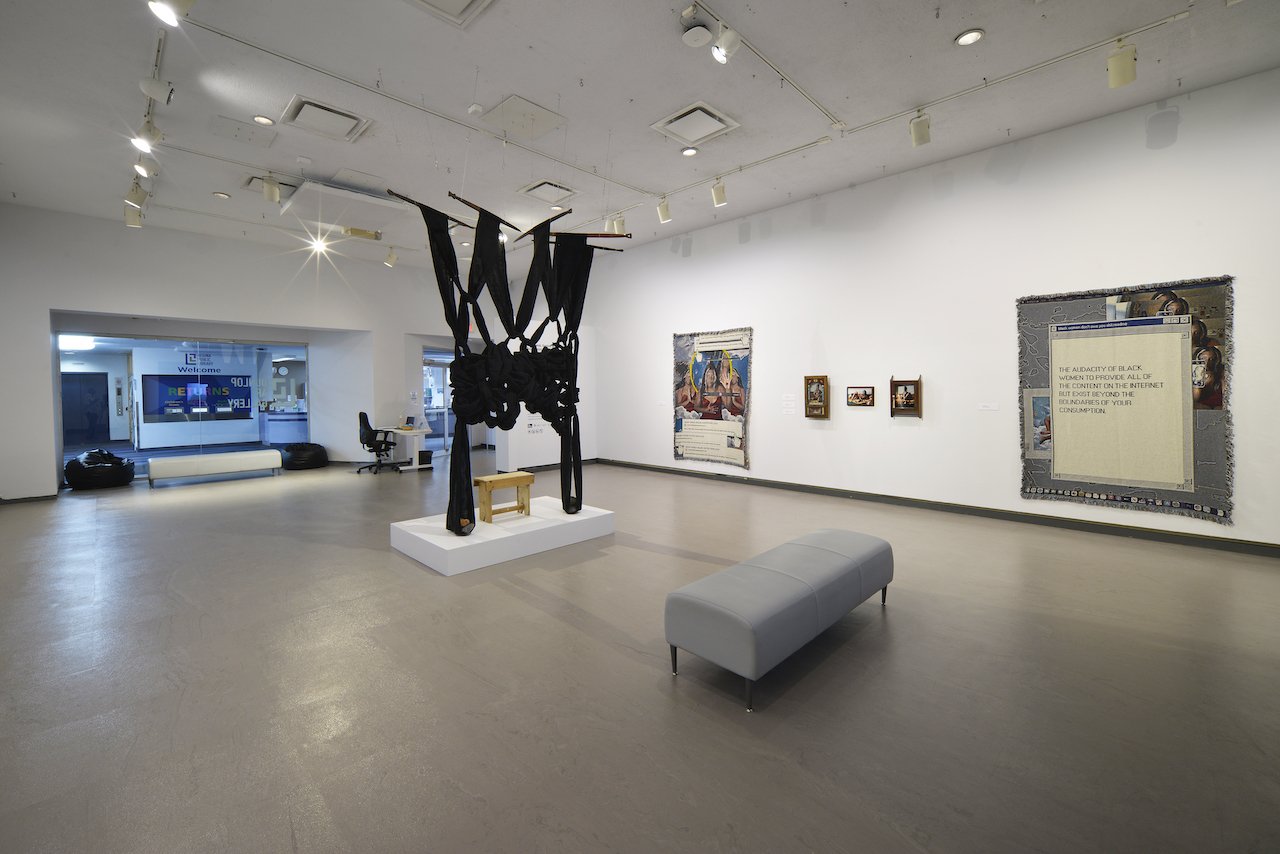
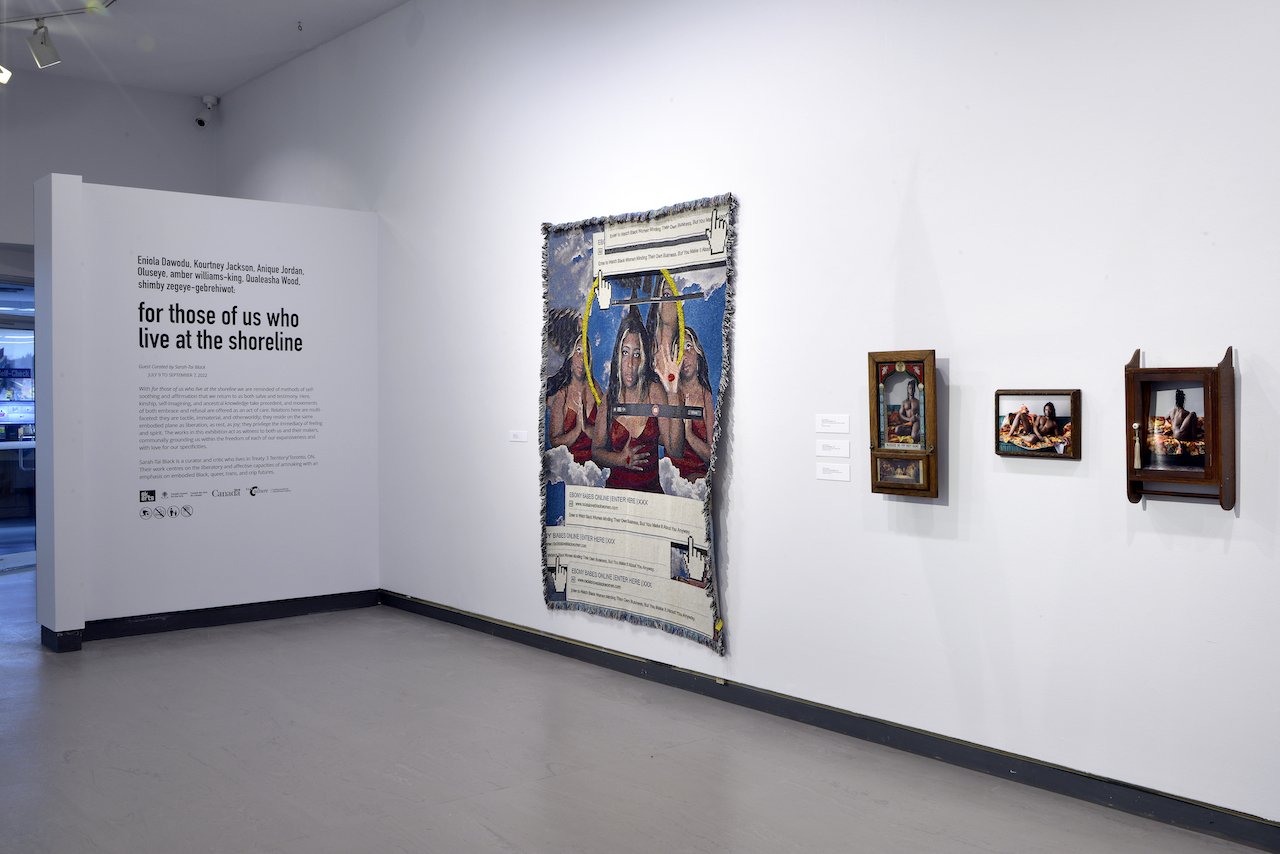
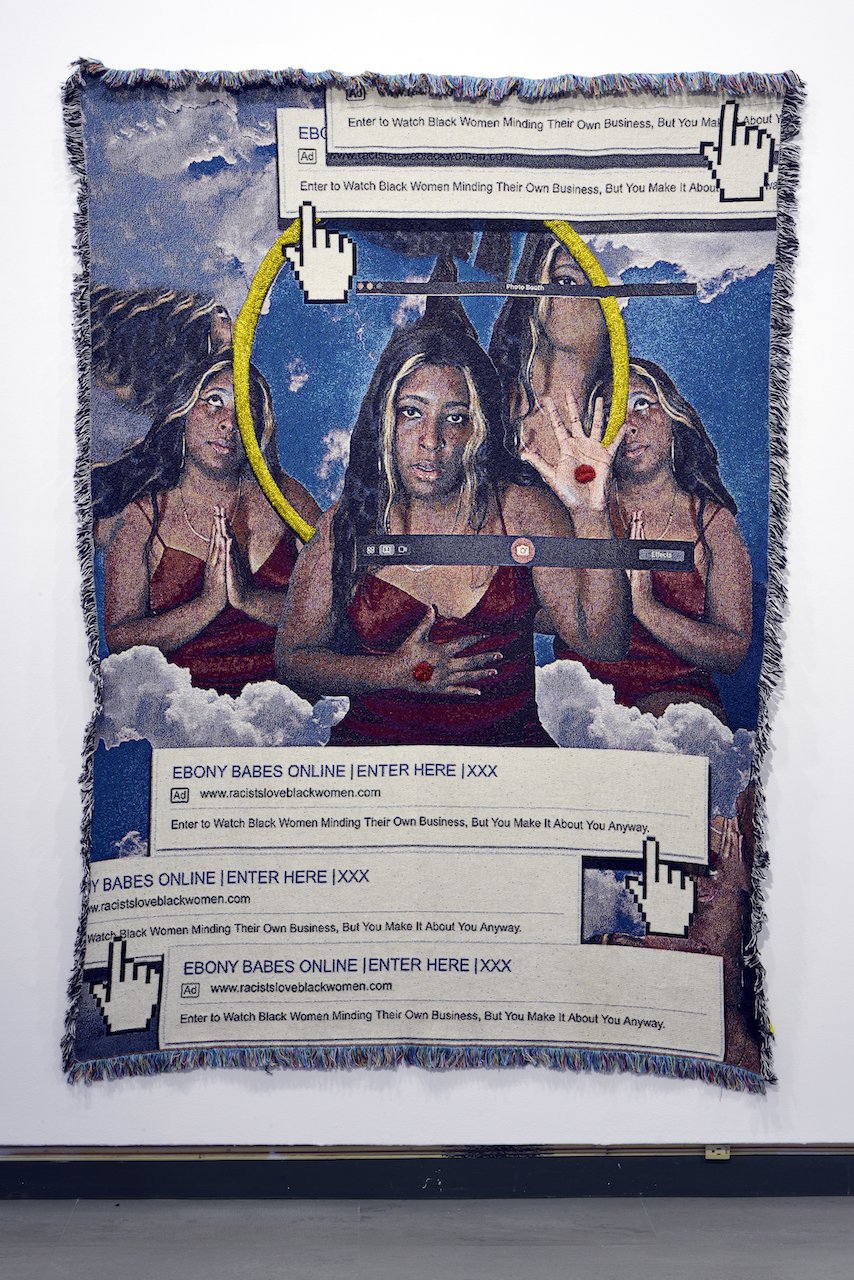
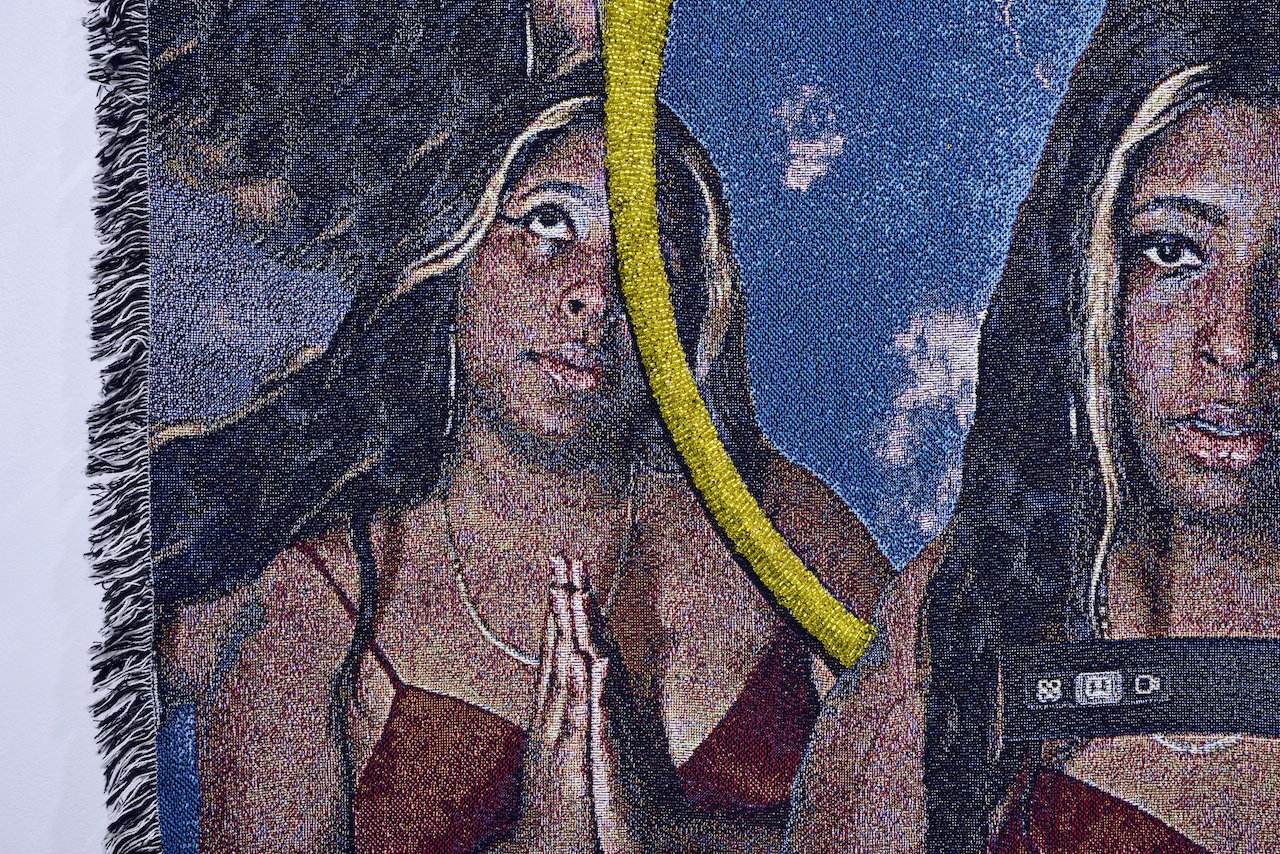
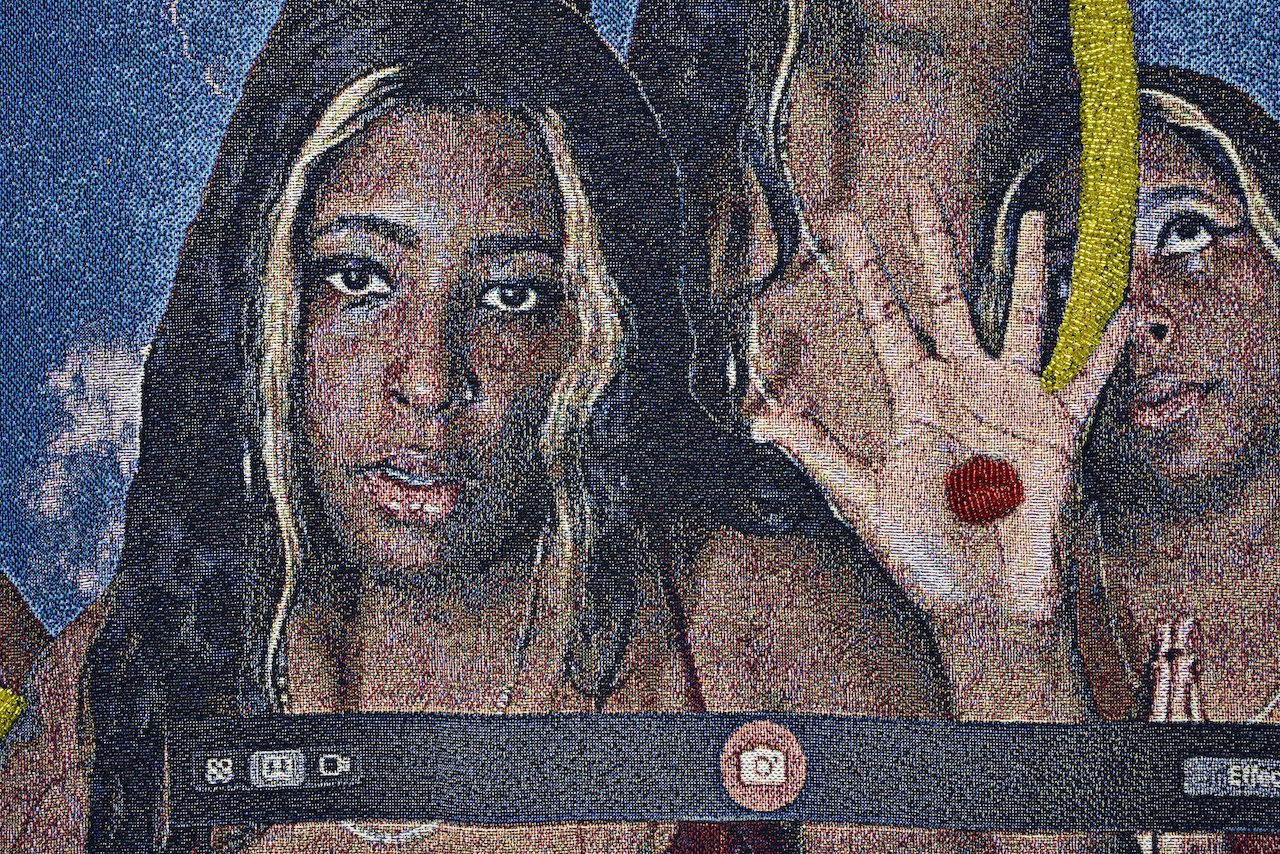
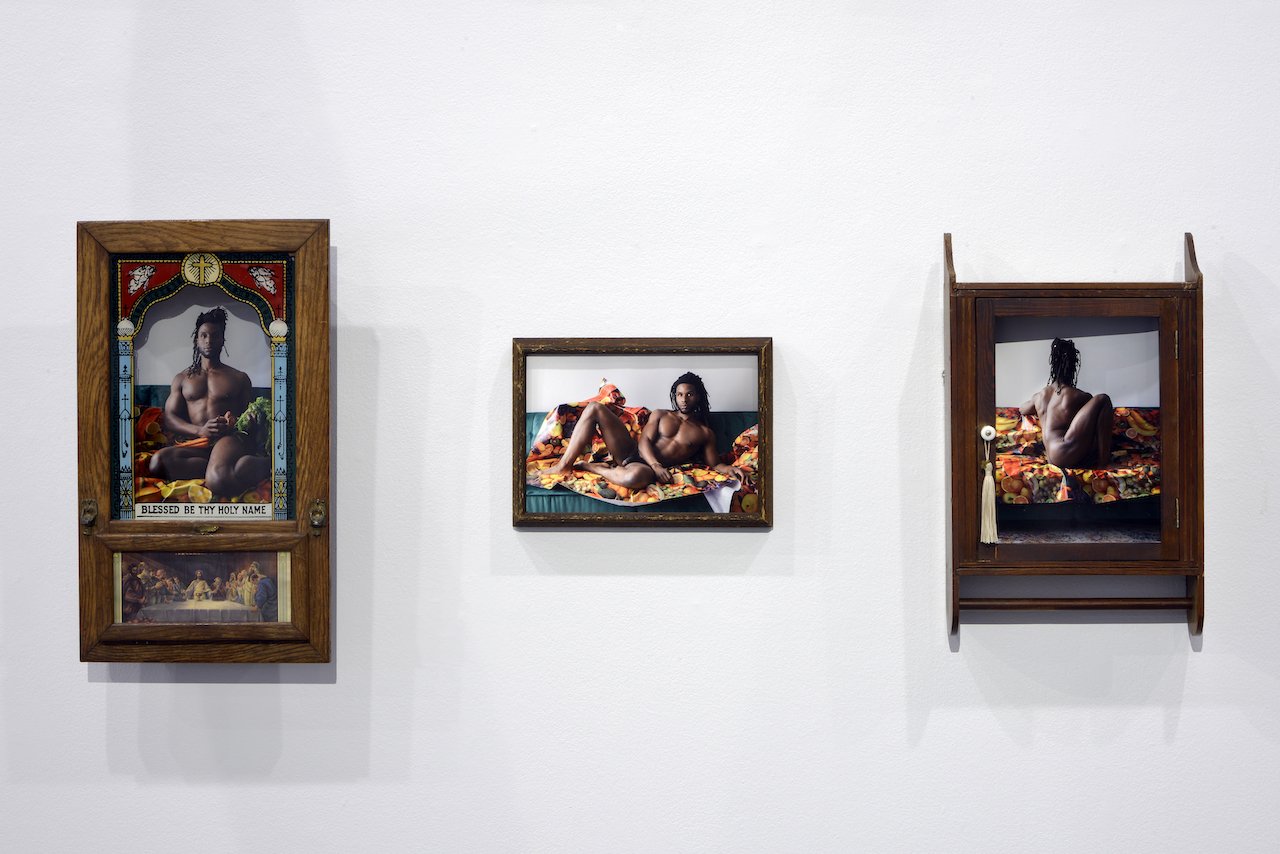
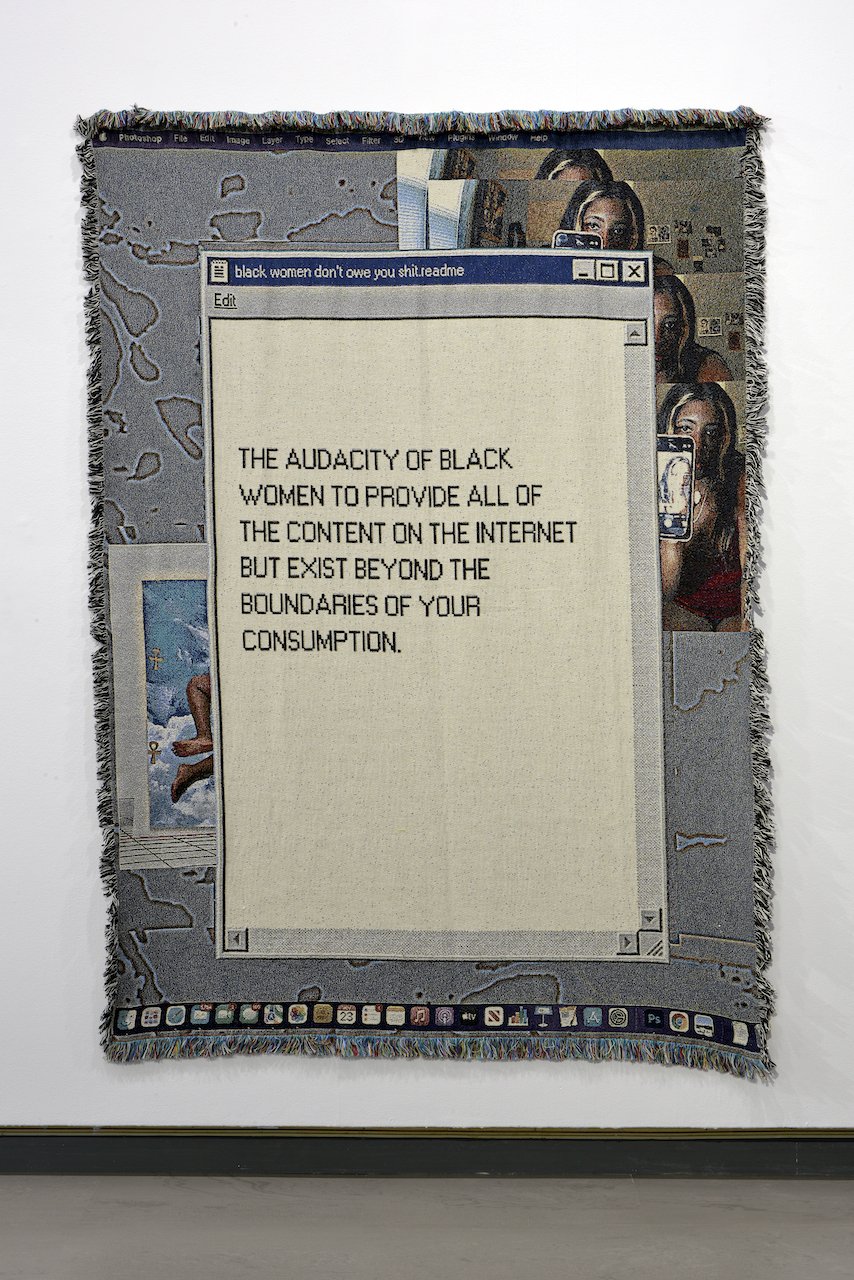
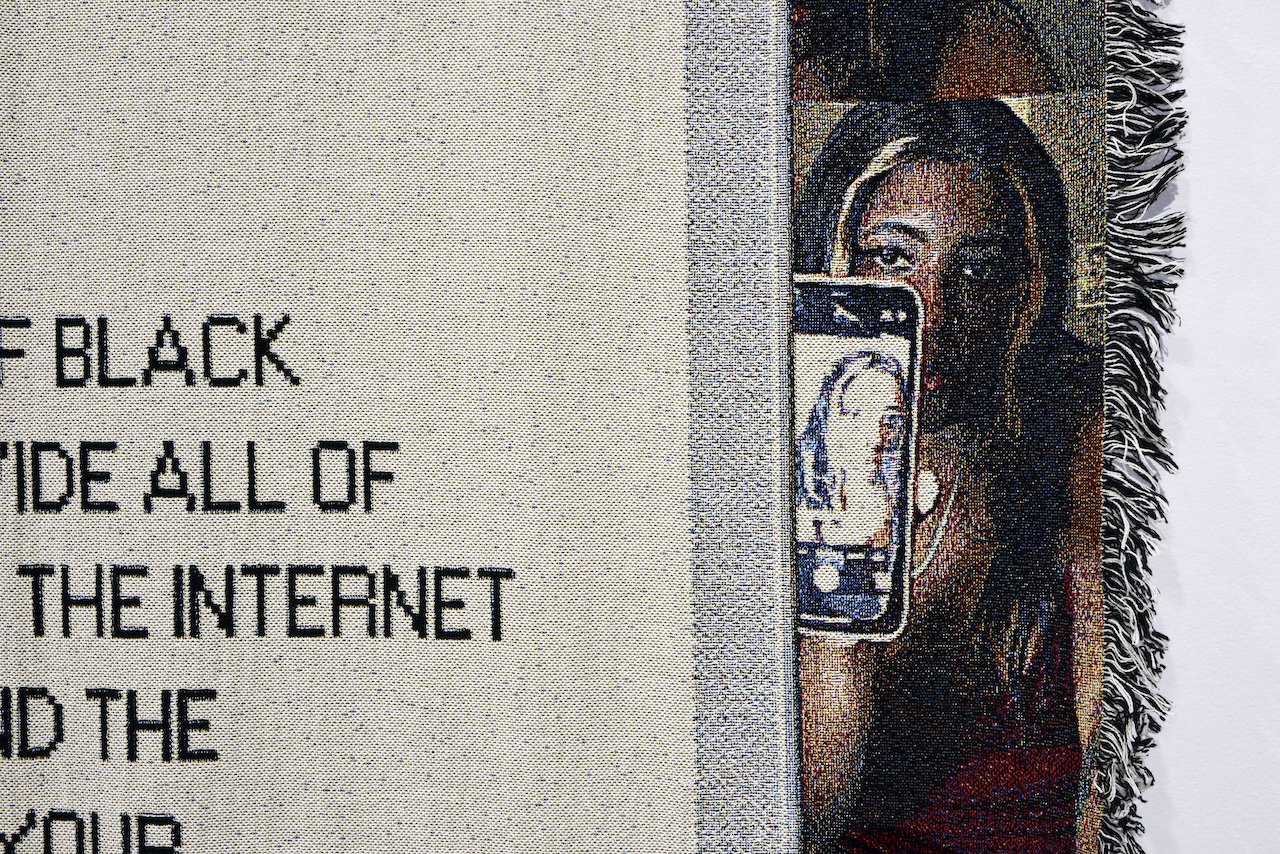
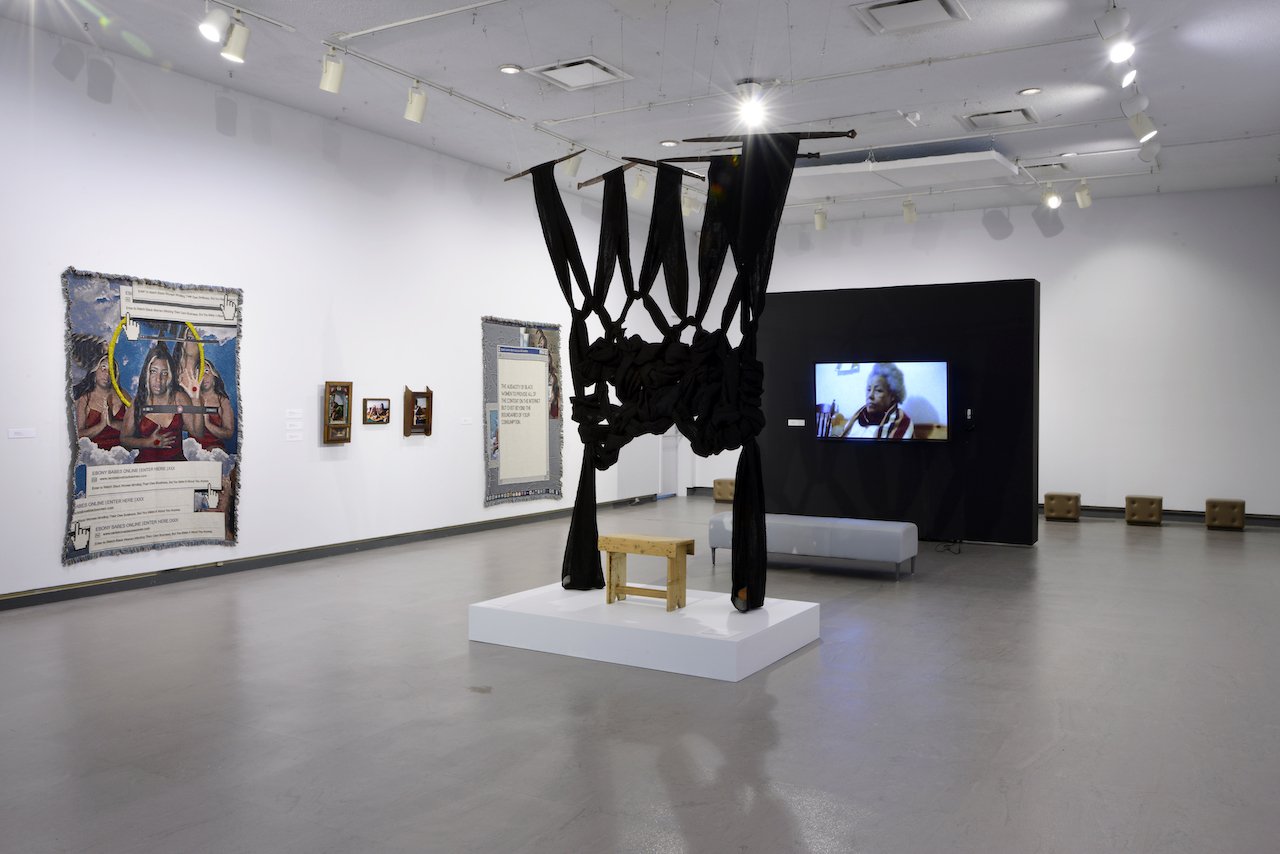
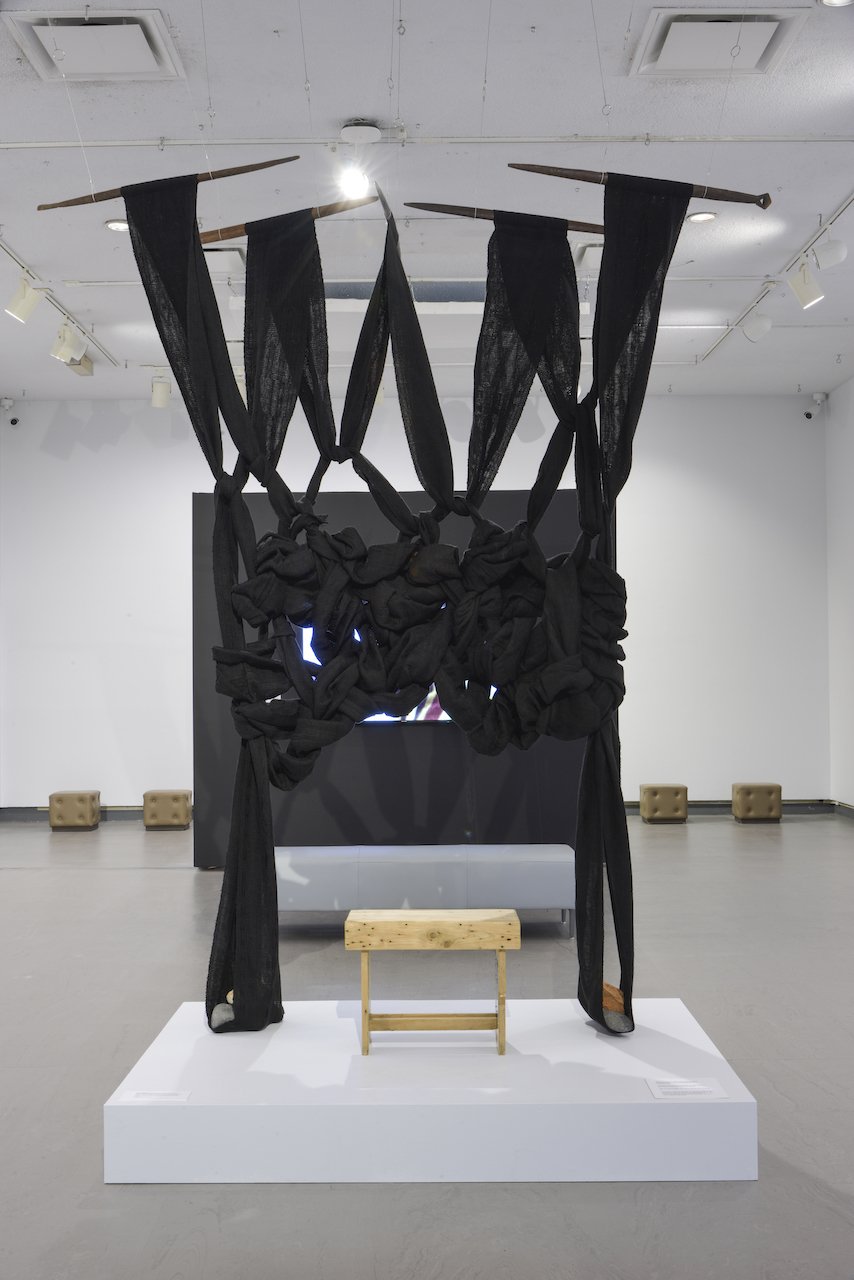
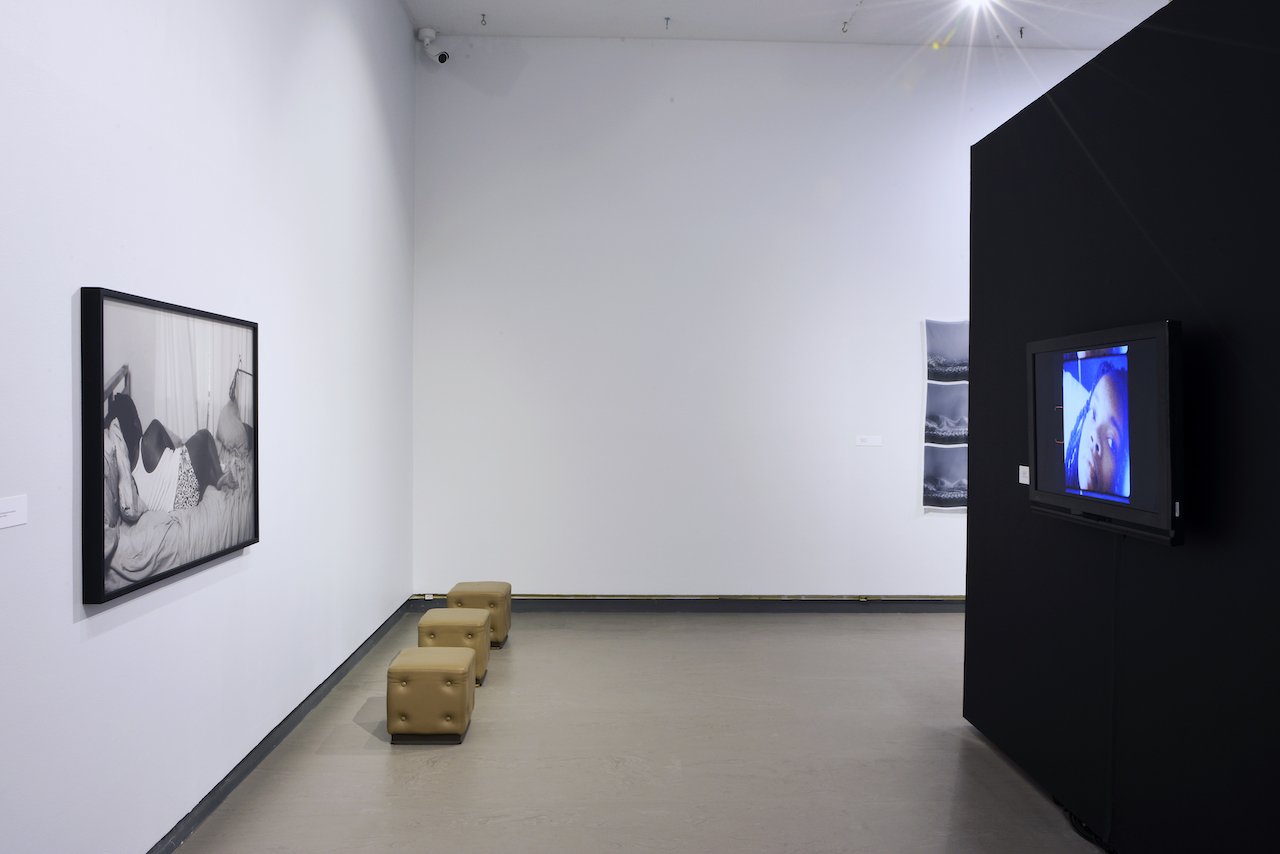
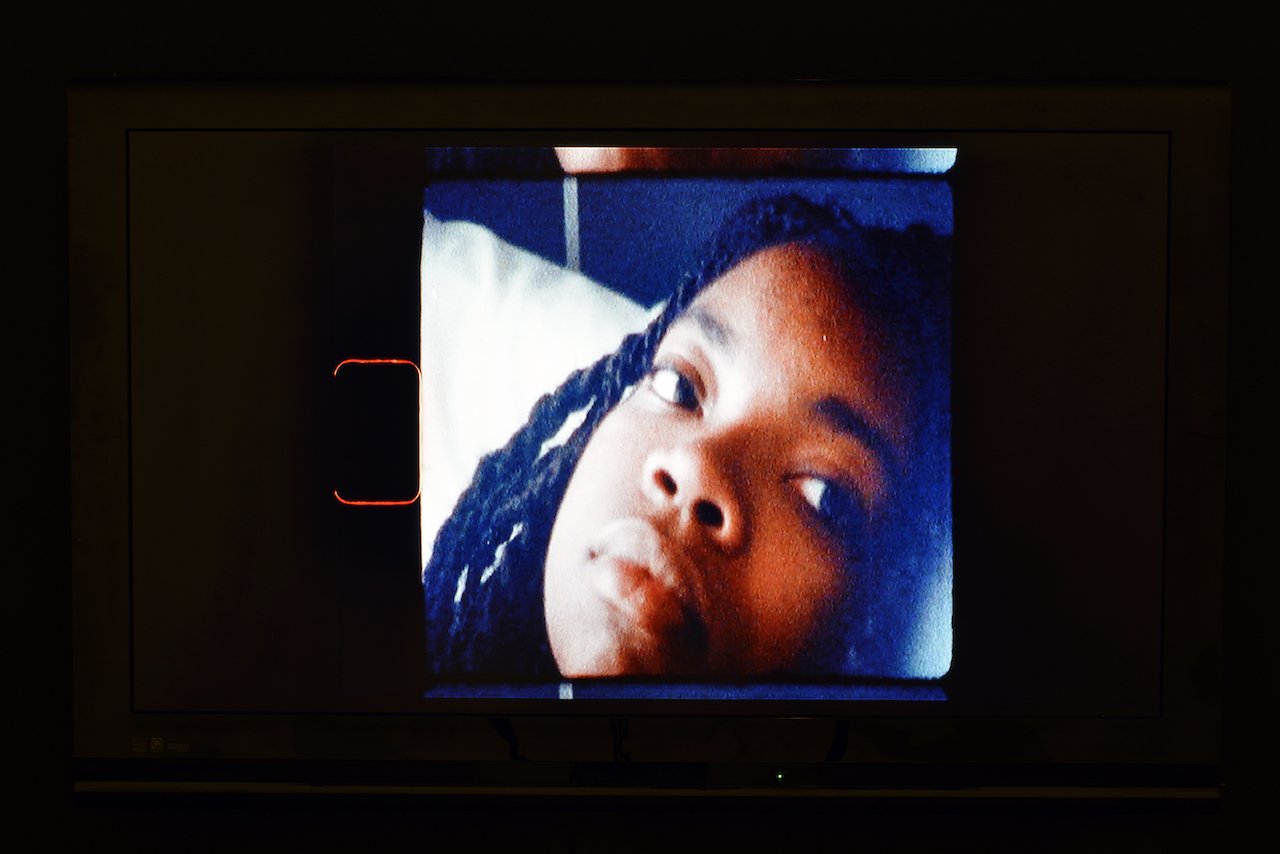
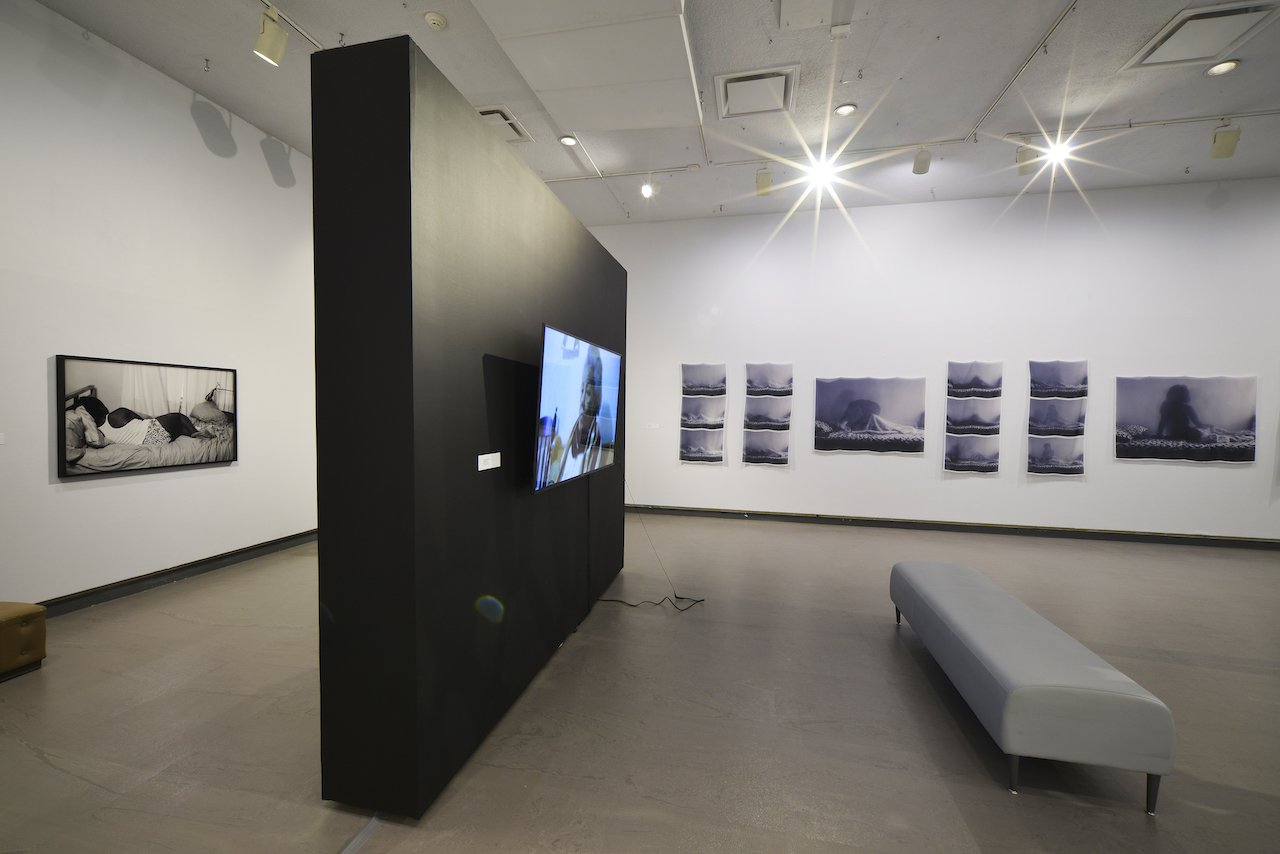
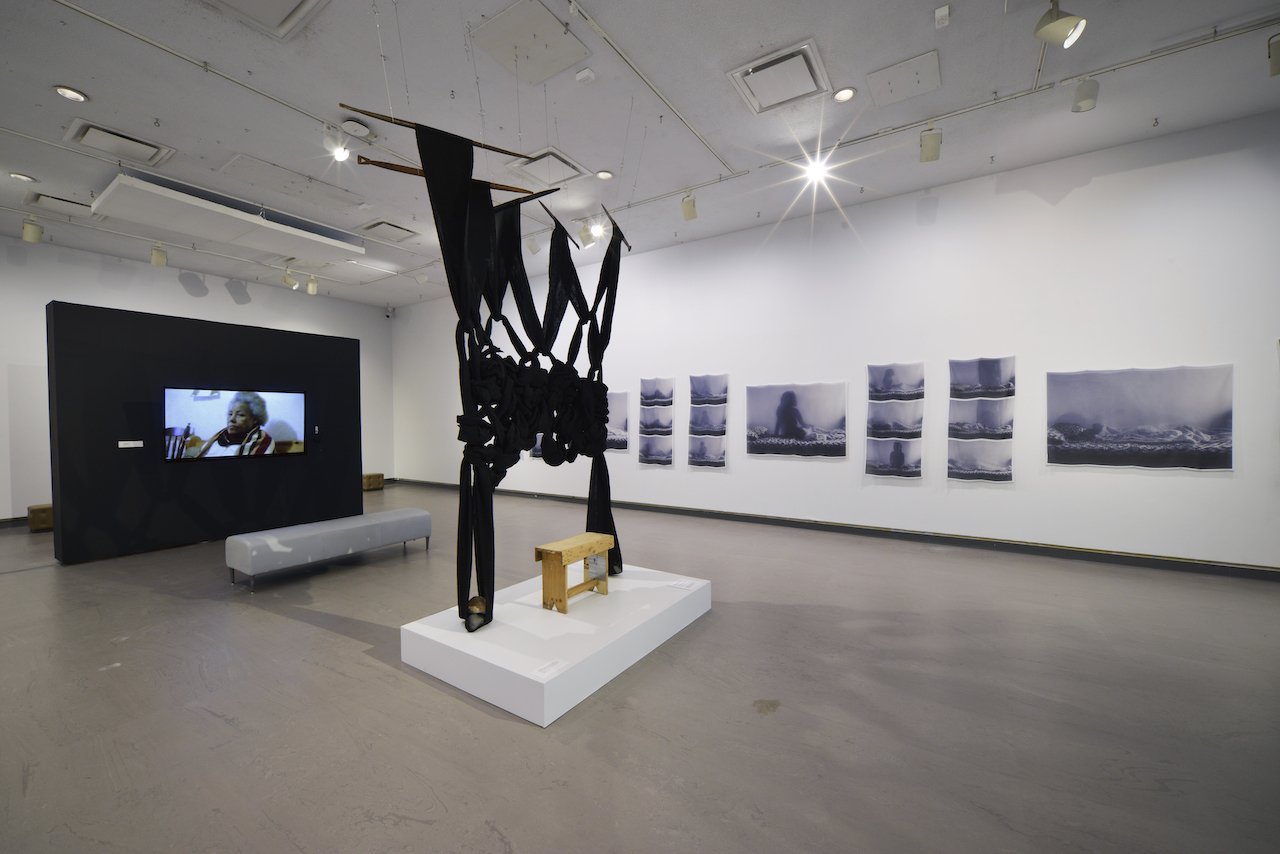
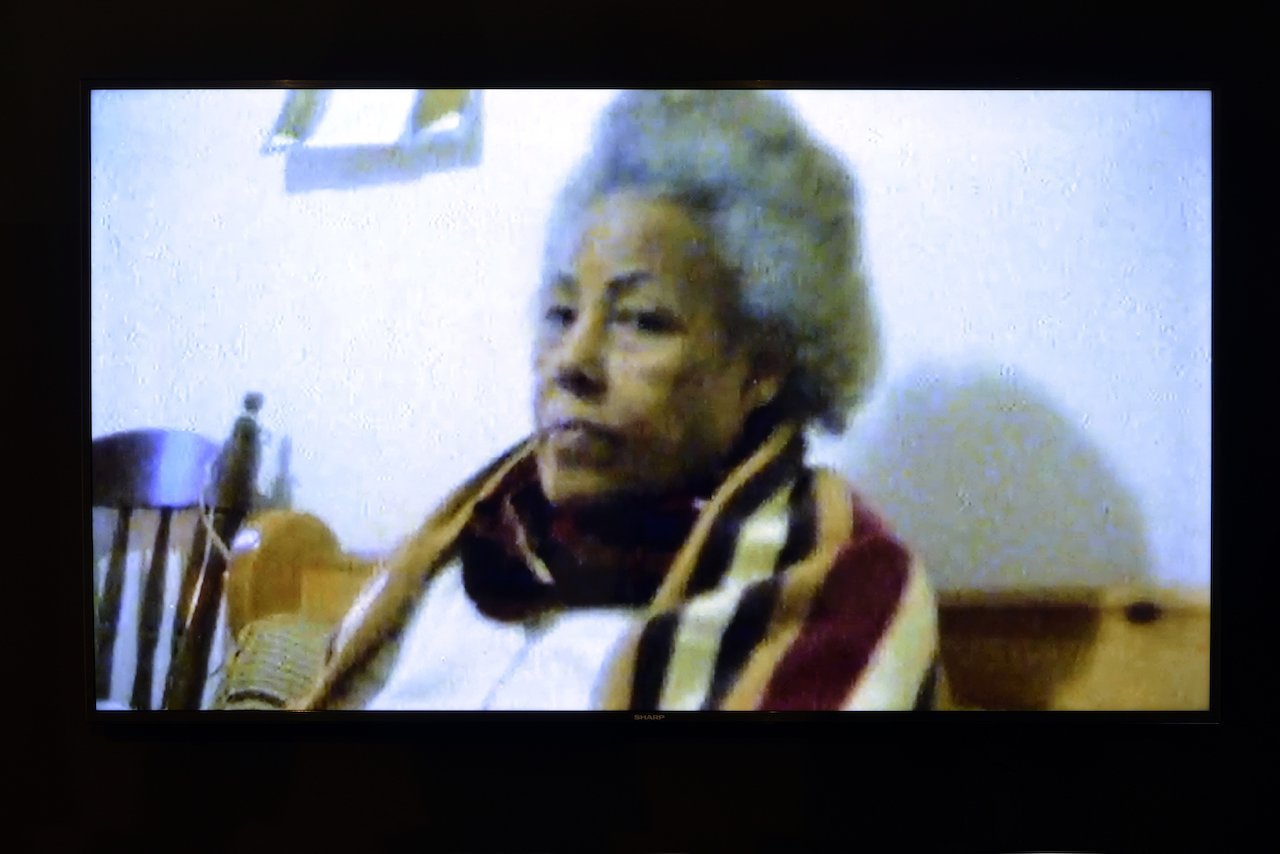
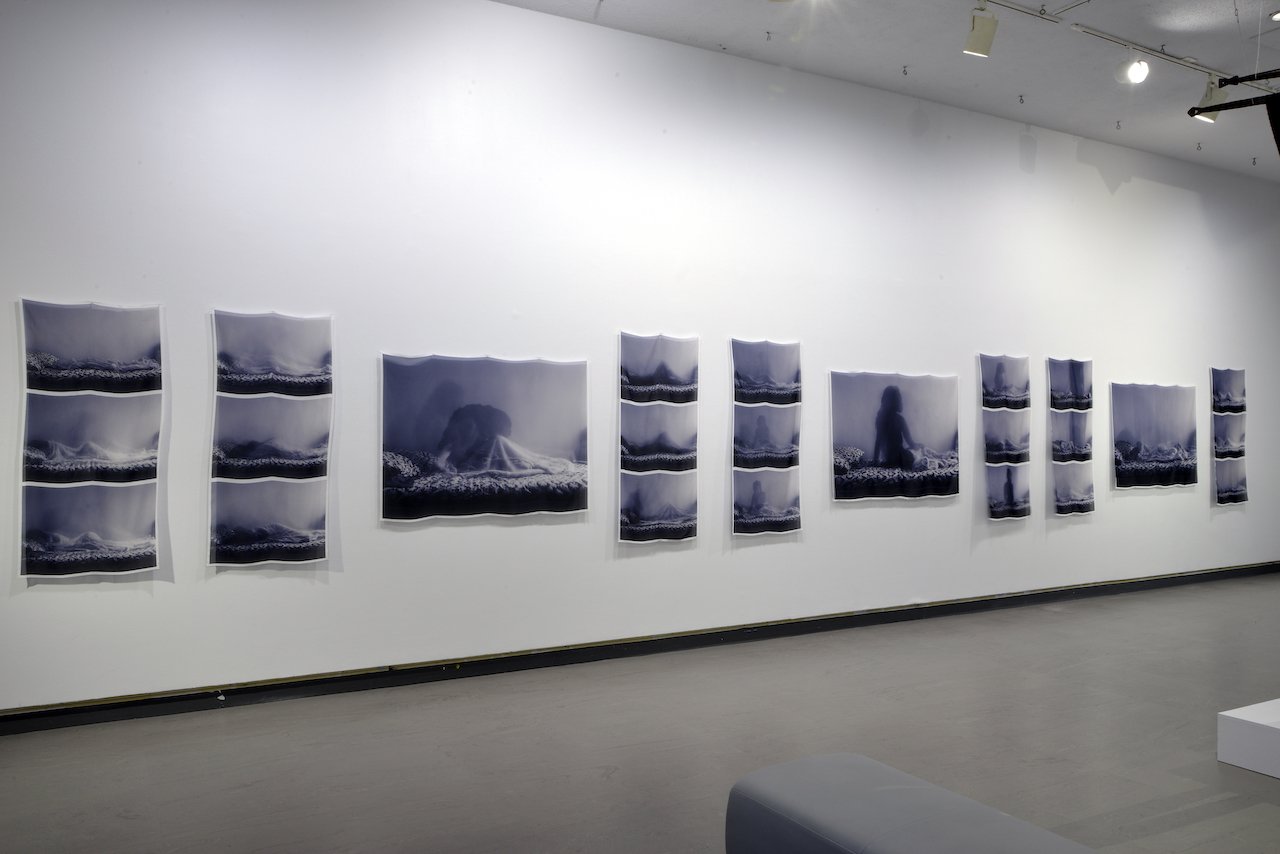
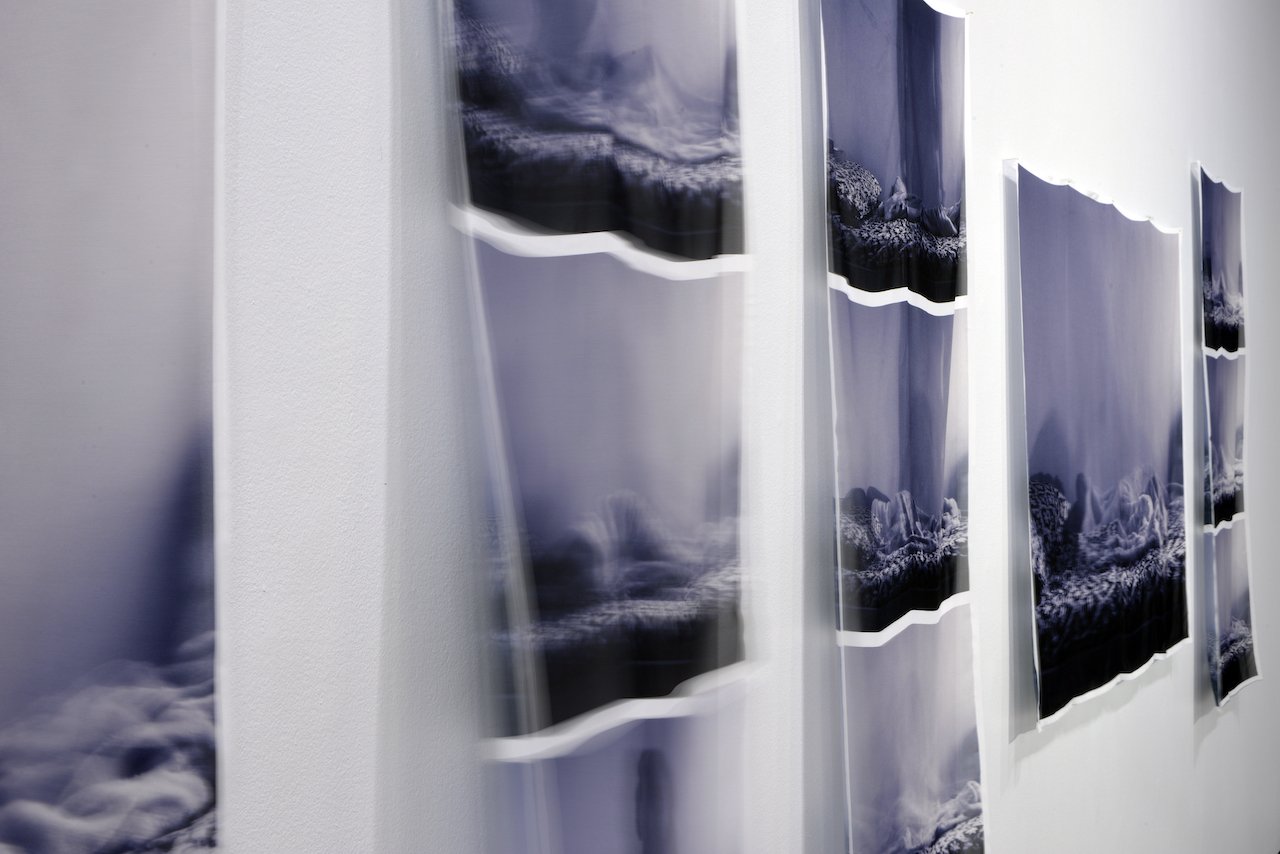
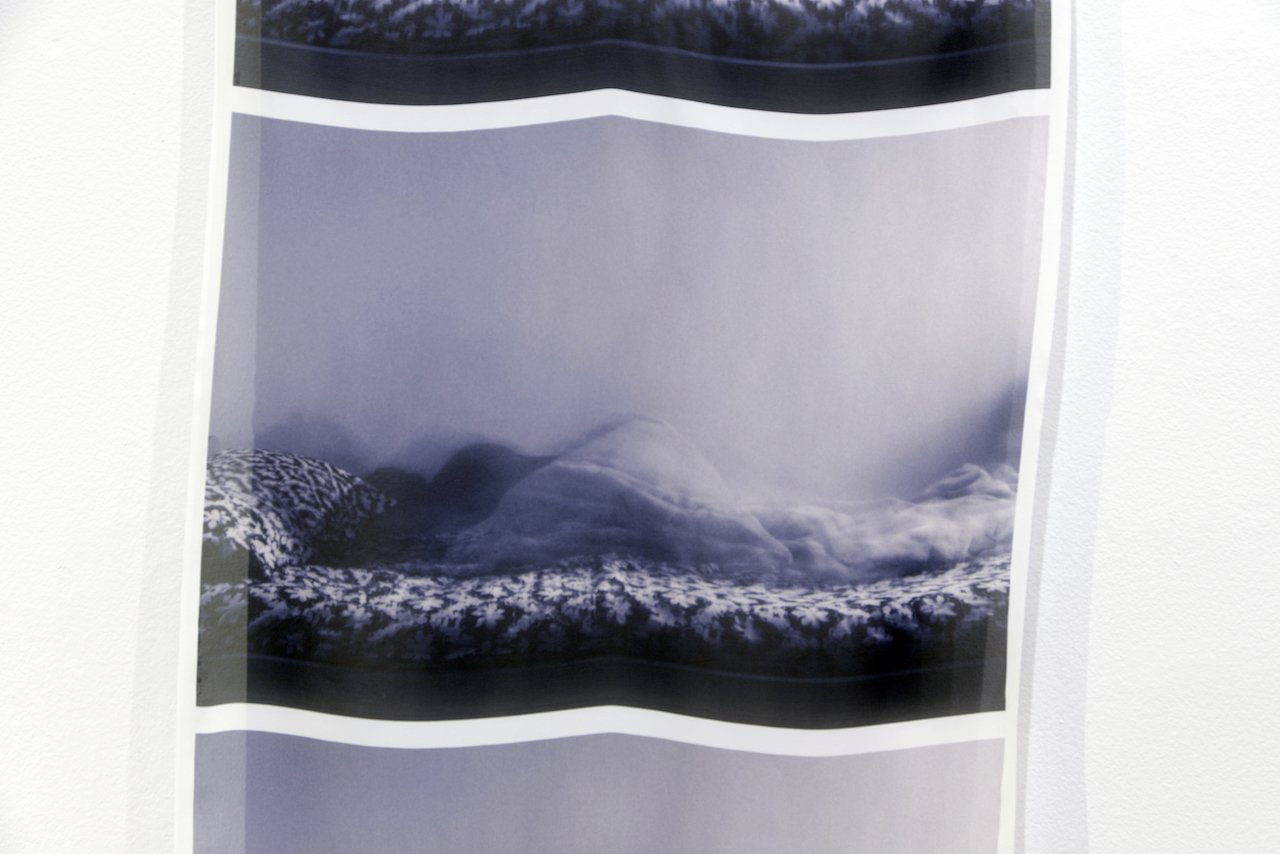
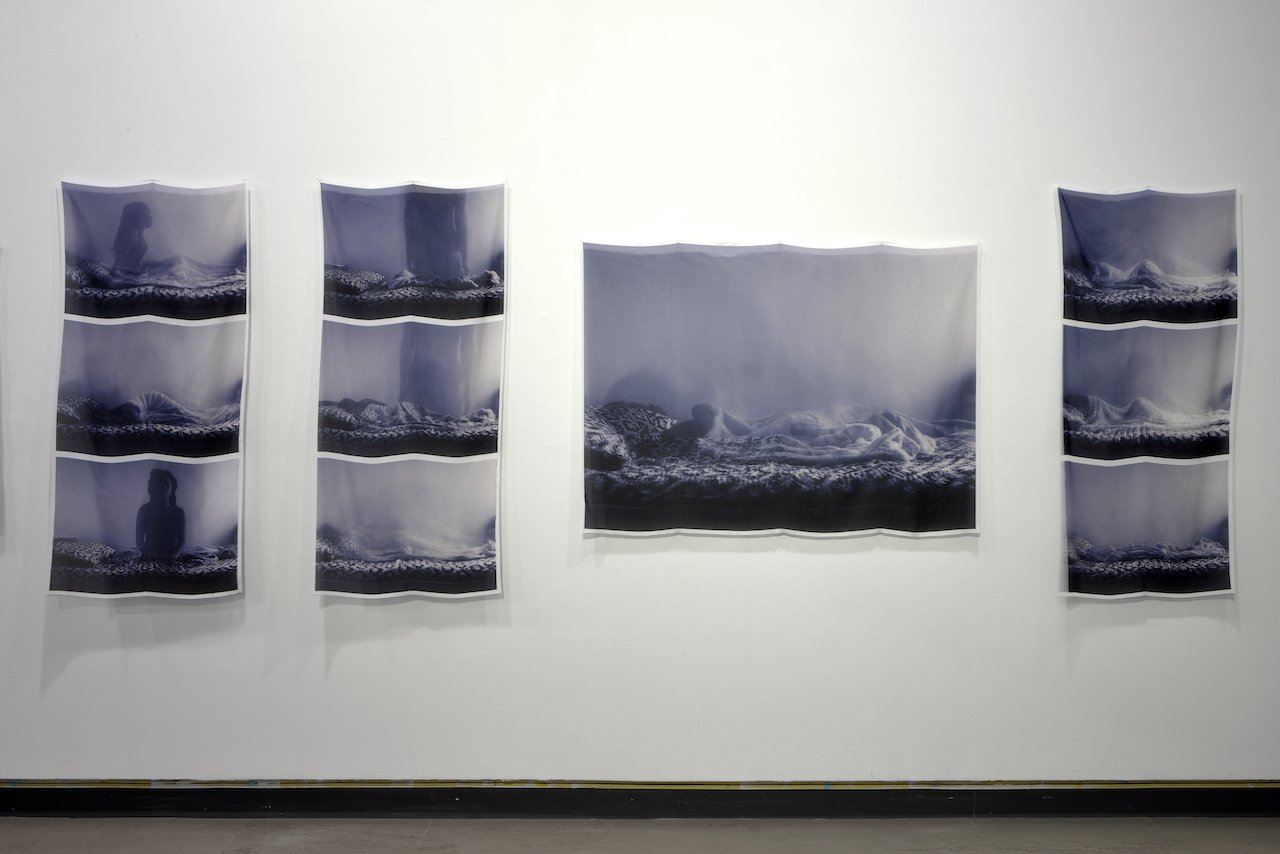
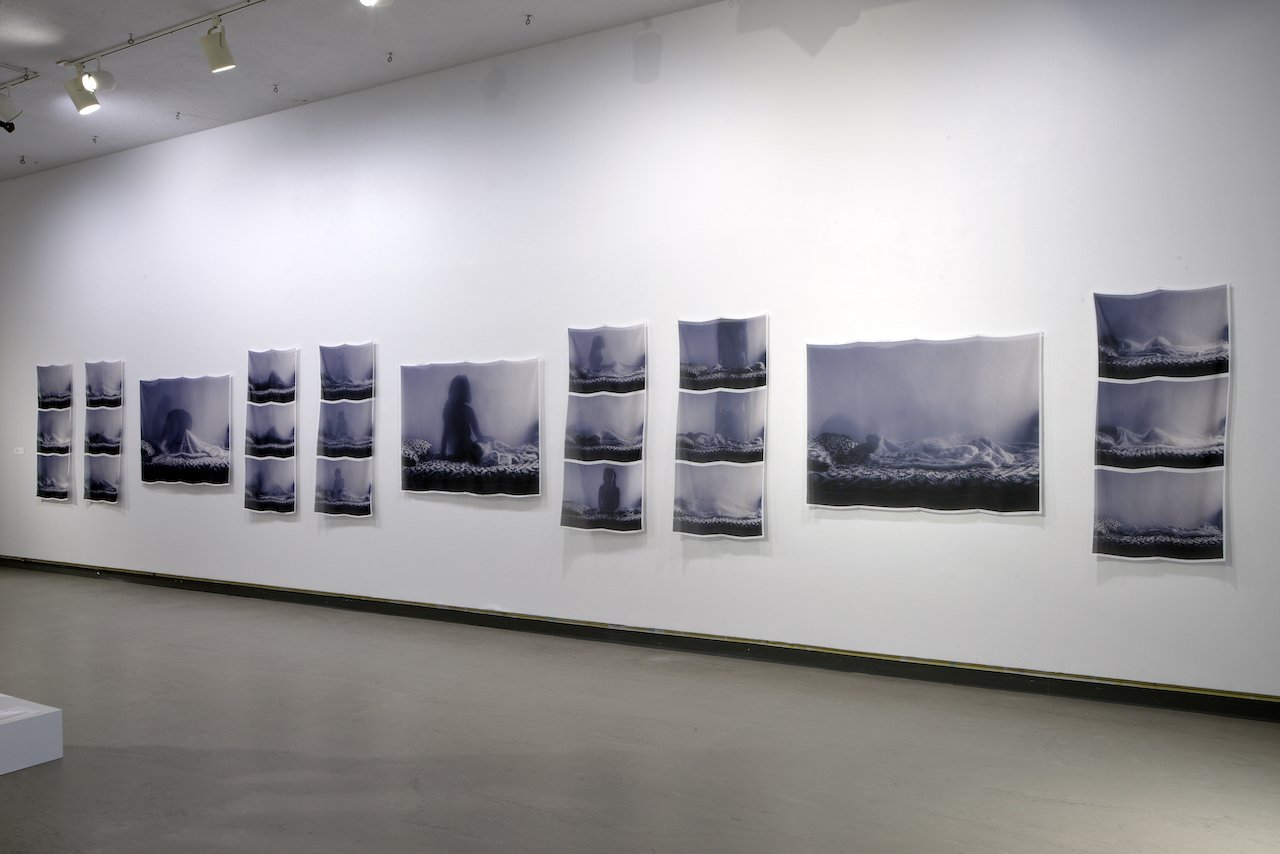
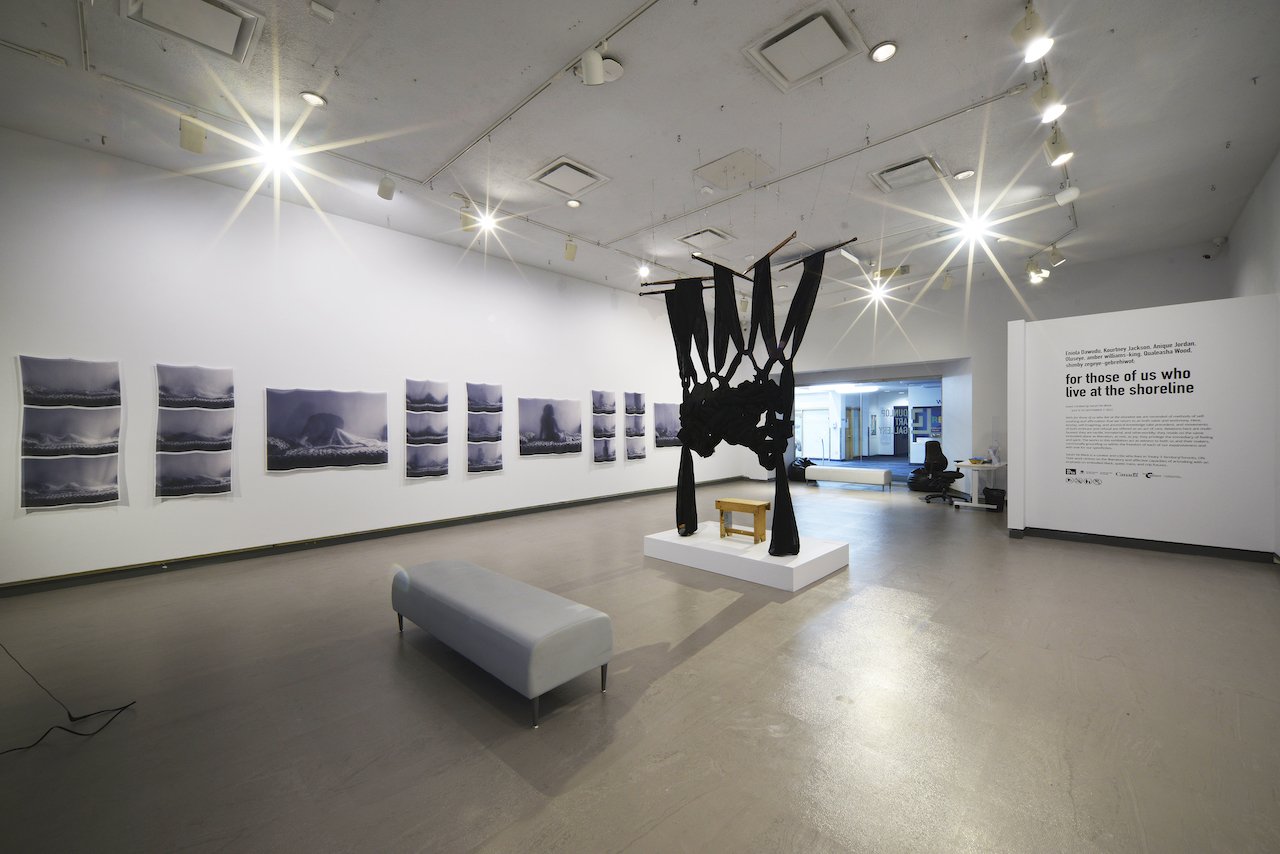
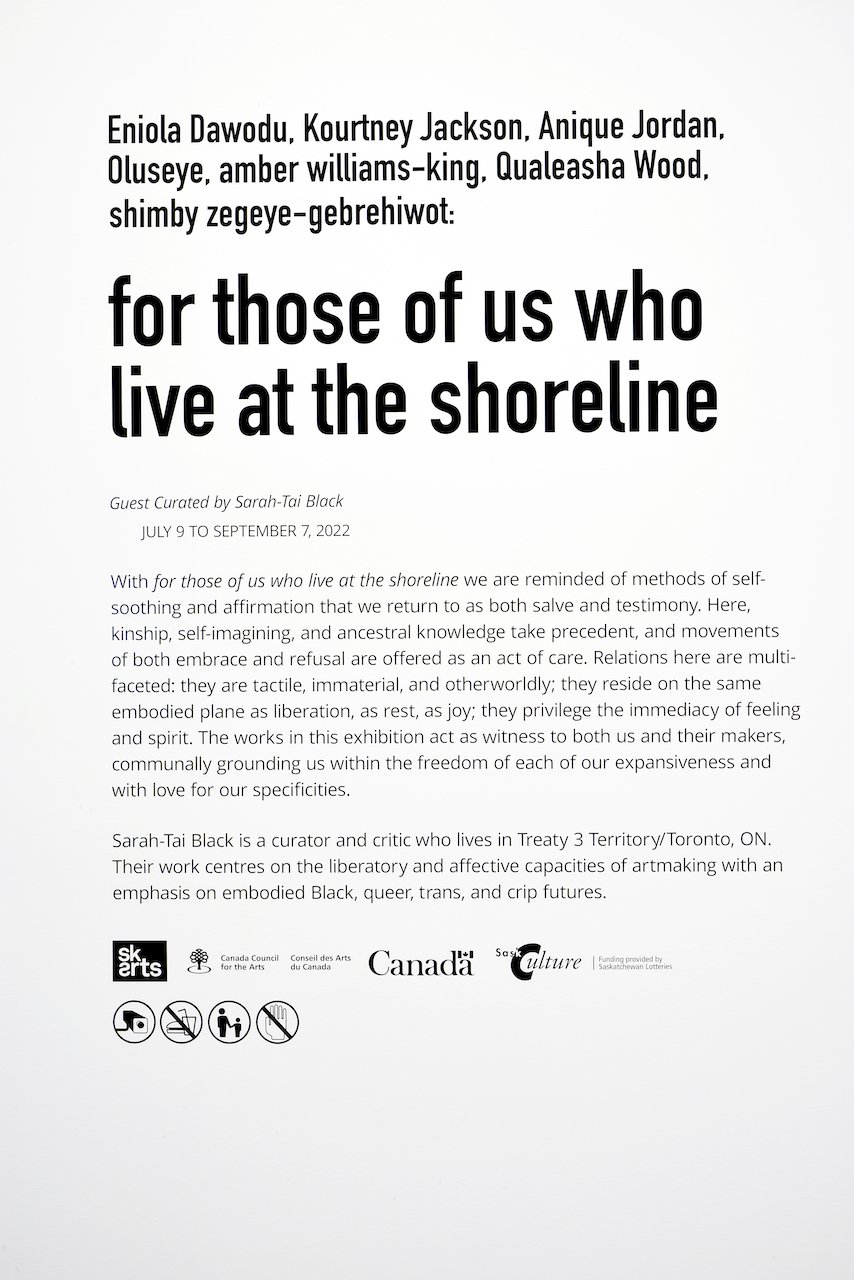
for those of us who live at the shoreline
Eniola Dawodu, Kourtney Jackson, Anique Jordan, Oluseye Ogunlesi, amber williams-king, Qualeasha Wood, shimby zegeye-gebrehiwot
Central Gallery, Dunlop Art Gallery
Regina, SK
July 9 - September 22, 2022
With for those of us who live at the shoreline we are reminded of methods of self-soothing and affirmation that we return to as both salve and testimony. Here, kinship, self-imagining, and ancestral knowledge take precedent, and movements of both embrace and refusal are offered as an act of care. Relations here are multi-faceted: they are tactile, immaterial, and otherworldly; they reside on the same embodied plane as liberation, as rest, as joy; they privilege the immediacy of feeling and spirit. The works in this exhibition act as witness to both us and their makers, communally grounding us within the freedom of each of our expansiveness and with love for our specificities.
Documentation by Don Hall
-
“Living is the most important thing I do, and poetry comes after that.”
— Gwendolyn Brooks
As we enter into the third year of a global pandemic that has further laid bare the violent machinations of state and racial capitalism, we are urgently reminded of acts and practices that reinscribe much-needed care and intimacy for ourselves and our kin. These acts have surely existed beyond this moment and continue to invite the undoing of the world as we know it. They are unencroachable forms of knowledge that privilege subjectivity and embodiment and, following the words of J. Kameron Carter and Sarah Jane Cervenak, offer “a release of self from its entrapment within property into an alternate intimacy.” They are as material as they are ineffable, expansive as they are singular. They are freedom tools.
In centering such practices, I am also wondering how we might also destabilize the intellectual and abstracted view of art and Black life—one that values the productive and economical flow of Black life and cultural product over both rest and individual and collective healing; one that submits Black artists to a regime of legibility and its twin thrust of marketability. I am wondering about the ethics and import of curating such a space for the public eye and contemplating what gets lost in the movement from curatorial intention and artistic practice toward attempts to materialize both in (as well as through) an institutional or otherwise bureaucratically organized space. I am wondering if there is truly room for the kind of community and politics I wish to make space for here or if I am just working in the exact ways I wish to critique.
Both exhibitions each of us, beloved and for those of us living on the shoreline endeavor to ask: what might freedom look like for each of us? What might it feel like? What are its tactile, spiritual, and social elements? The works in both shows act here as radiant guides in visualizing how we might come to our liberatory movements and acts of care for ourselves and our communities. To bring them together collectively is a privilege and—even as these artistic practices are personal in nature and attributed to their respective individual makers—set in relation to one another they stand as a testament to our connectivity. We must not forget the political function of isolation, of nihilism, of feeling future-less, of assumptions that we are only death-bound. When we turn inwards towards our capacities for self-soothing, for self-regulation of our nervous systems; look outwards toward our need for intimacy, for care, for creative expression, for ways through which we may be present with one another and co-regulate each other's bodies and minds; when we refuse attempts to make us feel less than, to erase these methods themselves, what is it that we reach for? See? Feel? Taste? Touch? Hear? I hope that these spaces can act as sites of contemplation for future-making, for present-living, and for so much more than just enduring.
Much of my thinking in this way has been shaped by the work of somatic abolitionists and of thinking through ways in which we may return to ourselves, our bodies, our ancestral or cultural practices. As a writer (ish), it is words I turn to most often. I think of healer, embodiment practitioner, and movement facilitator Prentis Hemphill’s words “In the body and through feeling is a different kind of free.” I think of beloved elder and Black, lesbian, mother, warrior poet Audre Lorde and her invocation of “that deep and irreplaceable knowledge of my capacity for joy,” of her ever-sterling reminder that we contain a kaleidoscopic presentness that exists in delightful excess of the demands and strictures of the settler state. I think of the way that so many of us turn to such words when we feel we can only contain an immediacy of feeling and how so many of us understandably—often acting from a lived space of urgency—forget that this in itself is a kindred relational practice. With our ancestors, with our elders, with ourselves, we have not forgotten how to commune.
These are sacred acts, even as we turn to them in moments of duress, even as we find ourselves physically alone. They open up worlds whose potential exceeds that which threatens our freedom. They are, following Carter and Cervenak, life-giving, offering themselves as “the safe house and harbor at world’s end.” Indeed, the curation of this show is of this same ether; it is a necessary act that materialized from an urgency voiced by my body and mind in both feeling and spirit. Within this, I don’t care—I can’t care—for direct translation, for the glossy patina of unambiguous transparency, to wear my insides on the outside, to translate for those who deem that they “need” or require such efforts. Safety, never mind comfort, requires that we refuse the regime of the legible, of the Black mythic, of high-functioning neurotypical methods of communication.
What I am interested in privileging instead is embodiment and interiority, in all its forms and variations, as a method of kinship, as a language in and of itself, as a modal of healing; in honouring the practices of those who came before us while also not losing sight of the importance of our own, whatever shape those may take. And while I invoke the names of lauded thinkers in this reflection, I want to remind us also that we do not need to be celebrated to be worthy of care, we do not need to be revered to be worthy of love. We do not need to be an artist, a curator, or anyone else put to so-called good use. In these spaces, I hope that we can re-stabilize our thinking of ourselves within this line of thought and commune together with this work that has been so generously shared.—
With gratitude to my dear friend and Black qrip kin patch monoceros who inspired my first thoughts and feelings in regards to the shaping of these shows. Love is a warm quilt on a cold Winnipeg night.
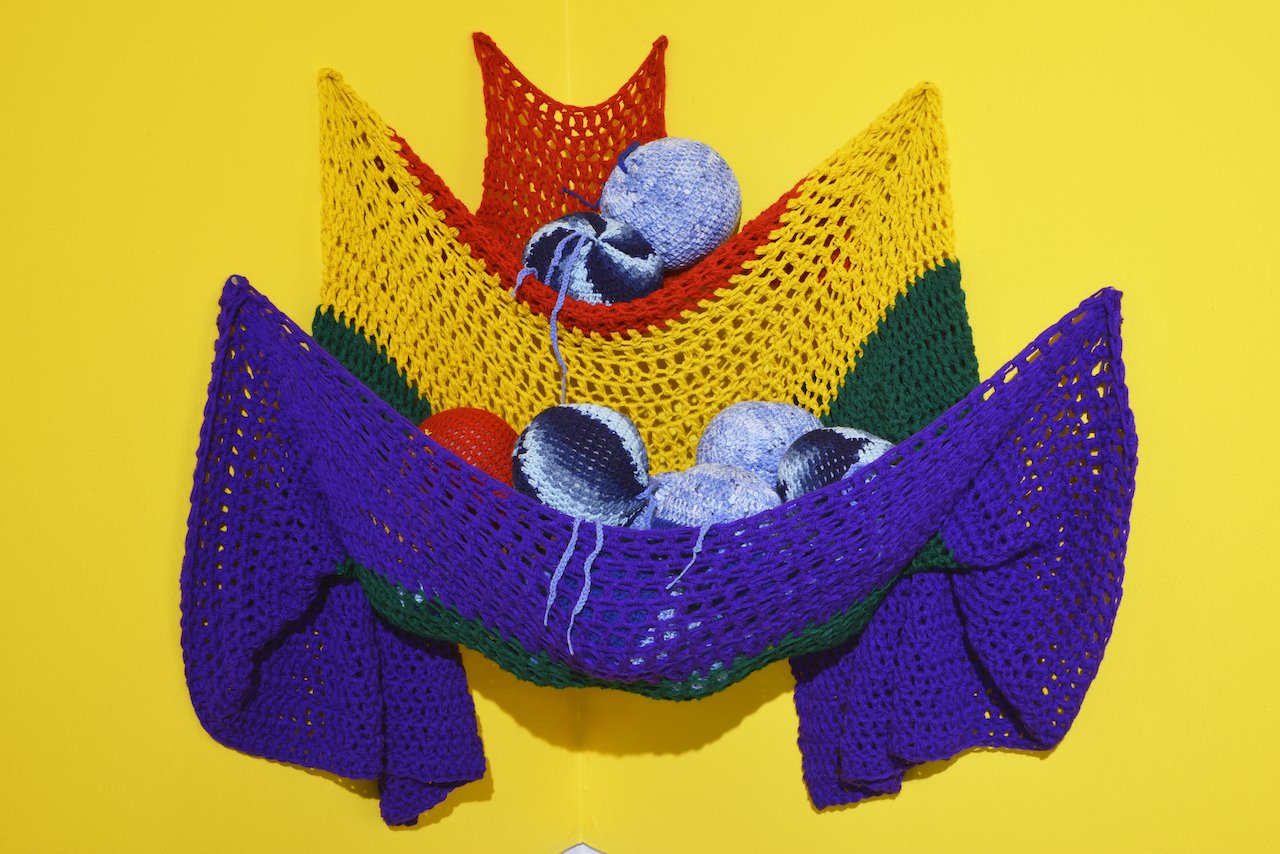
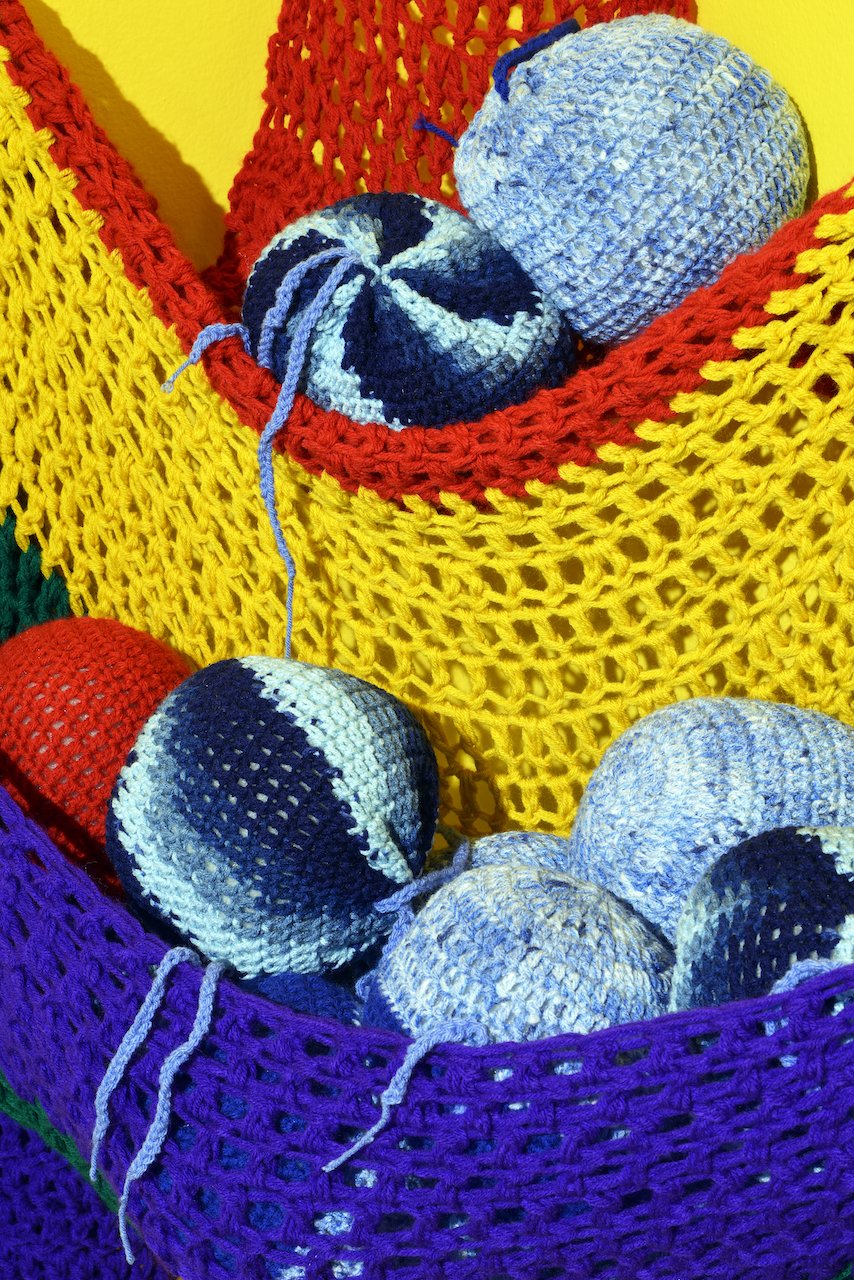
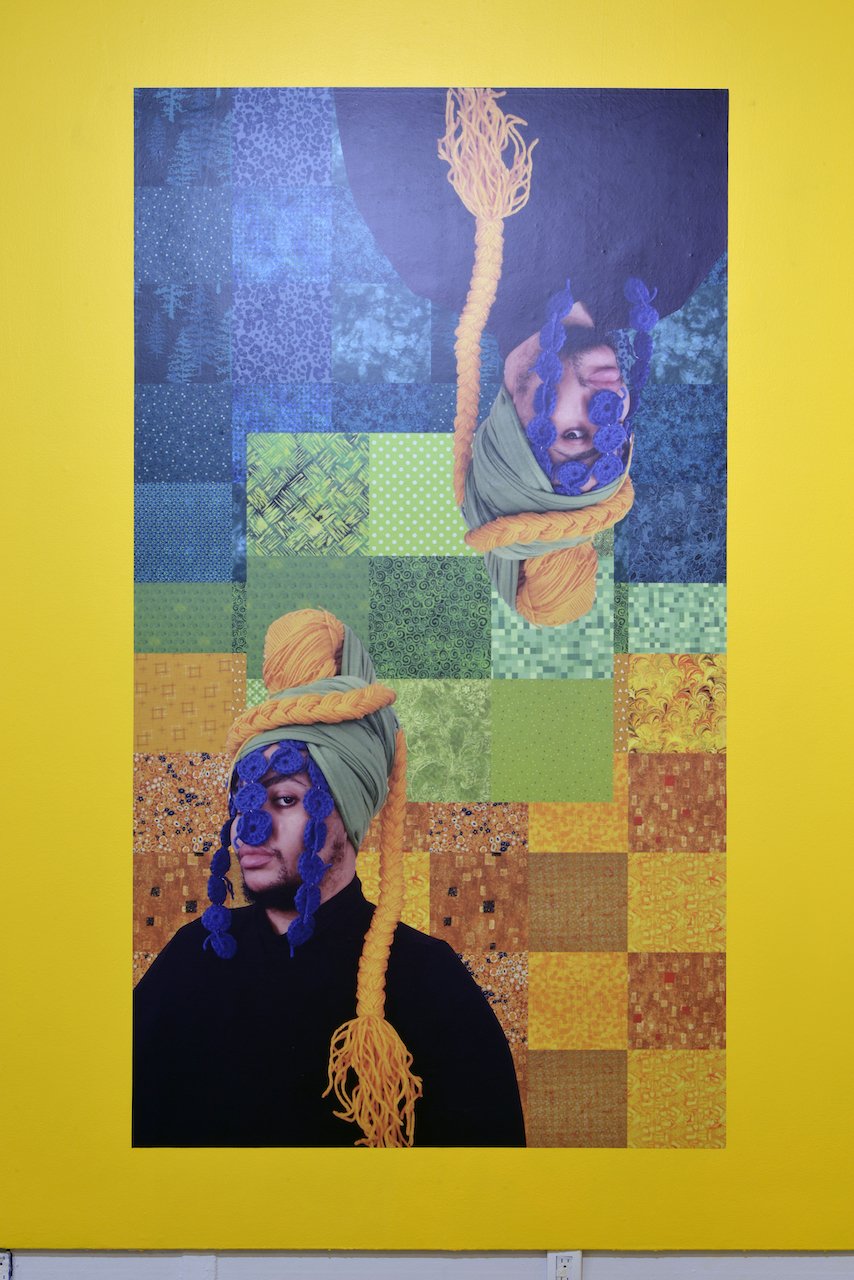
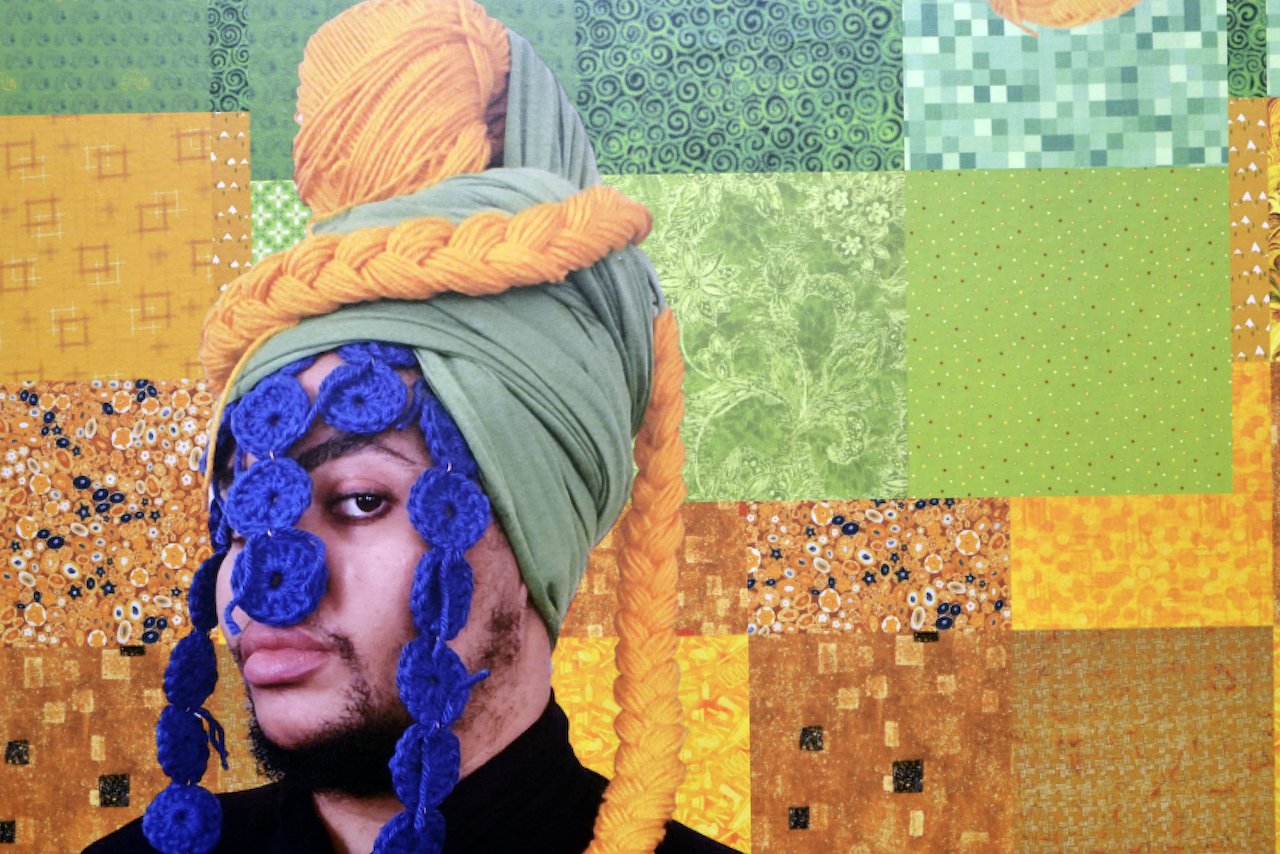
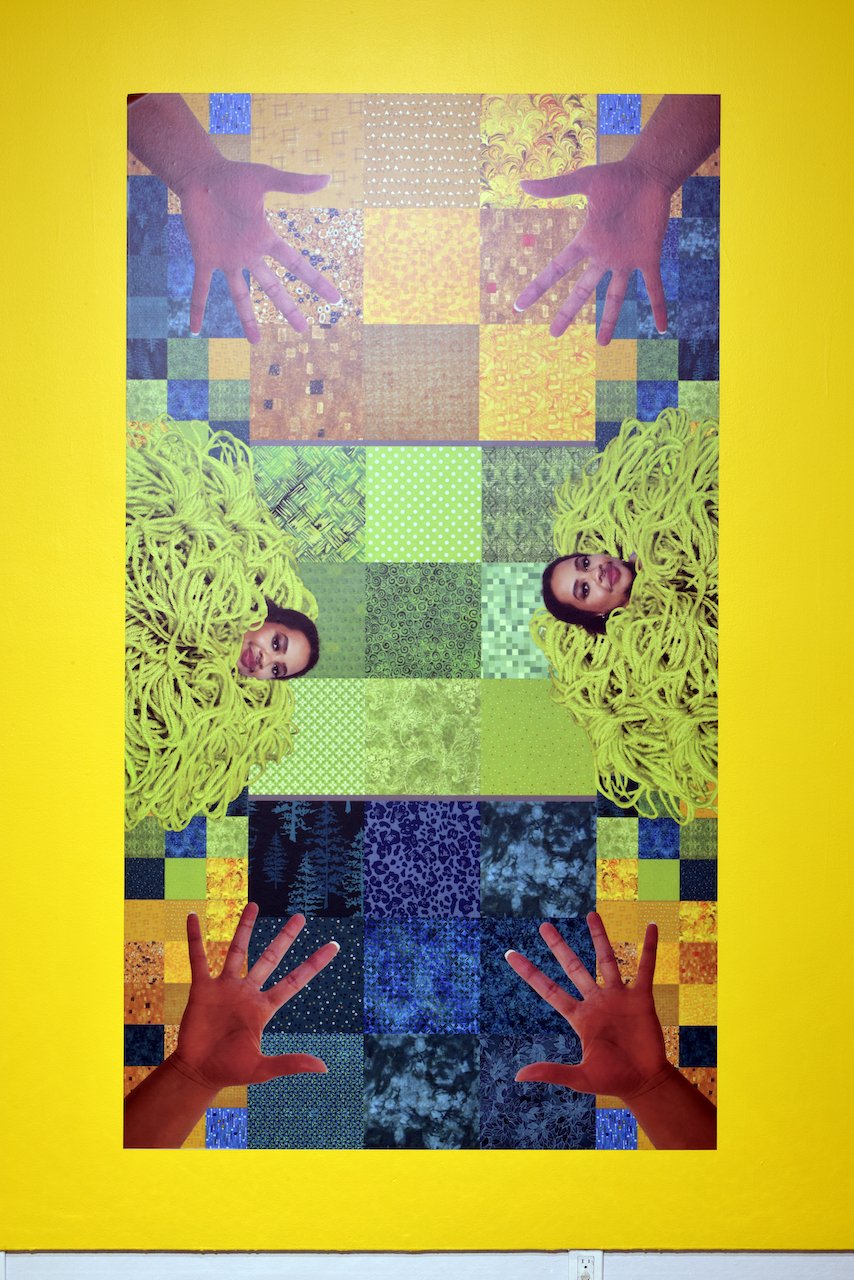
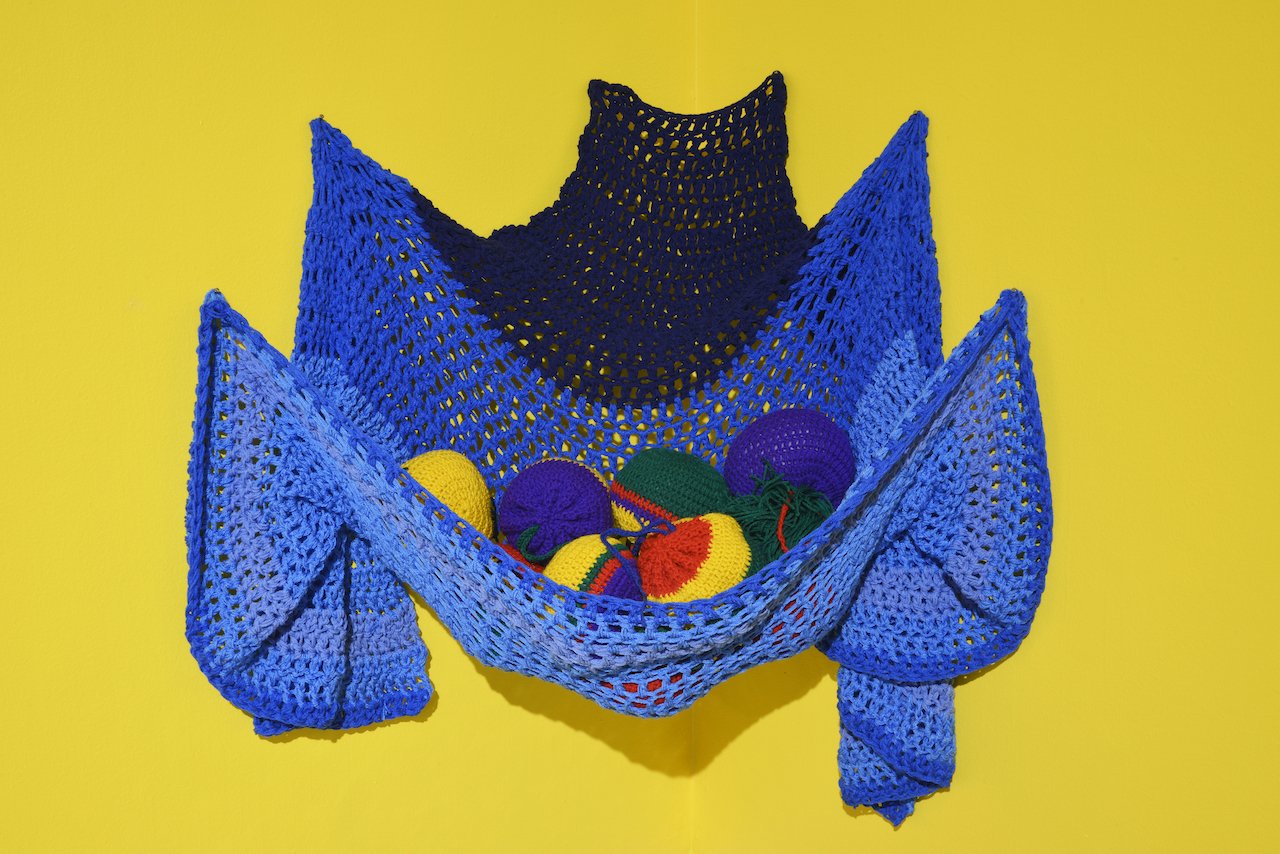
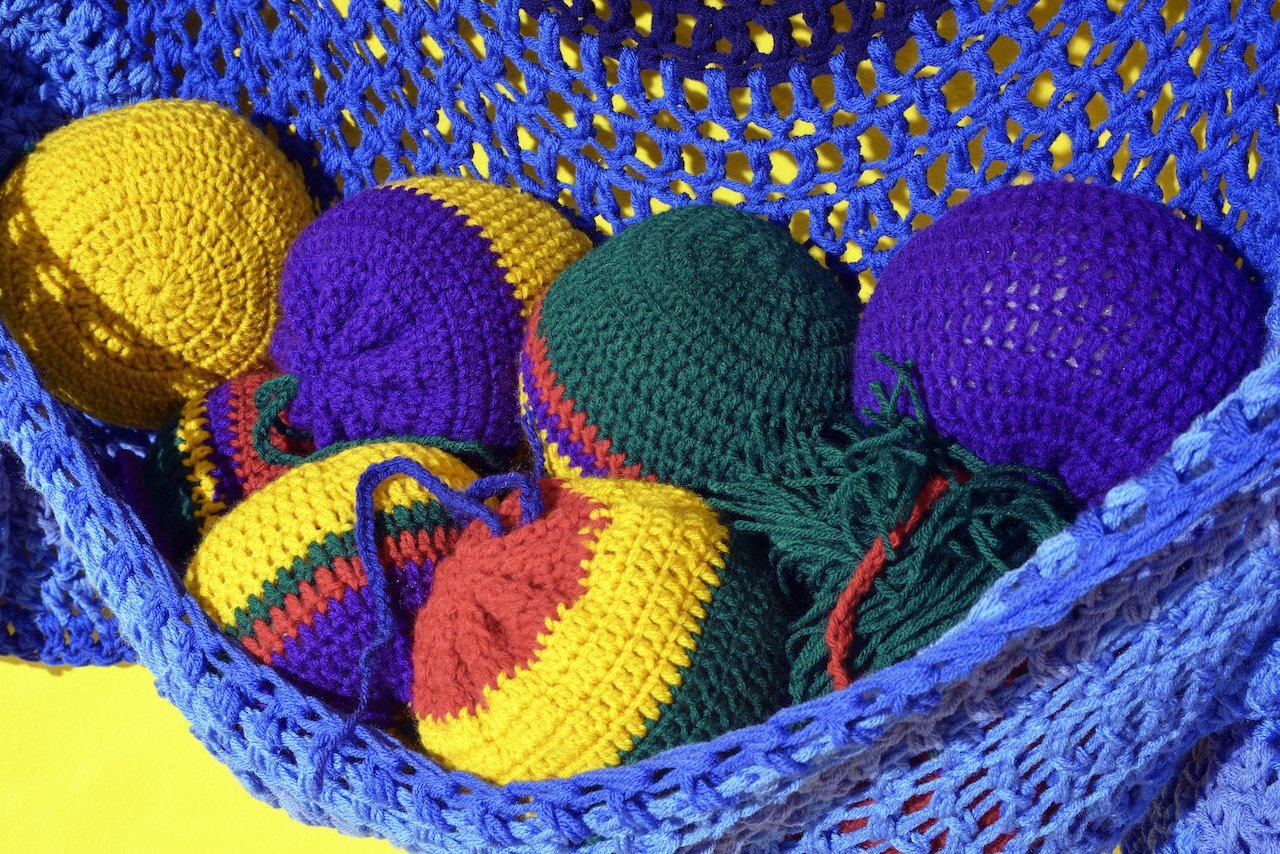
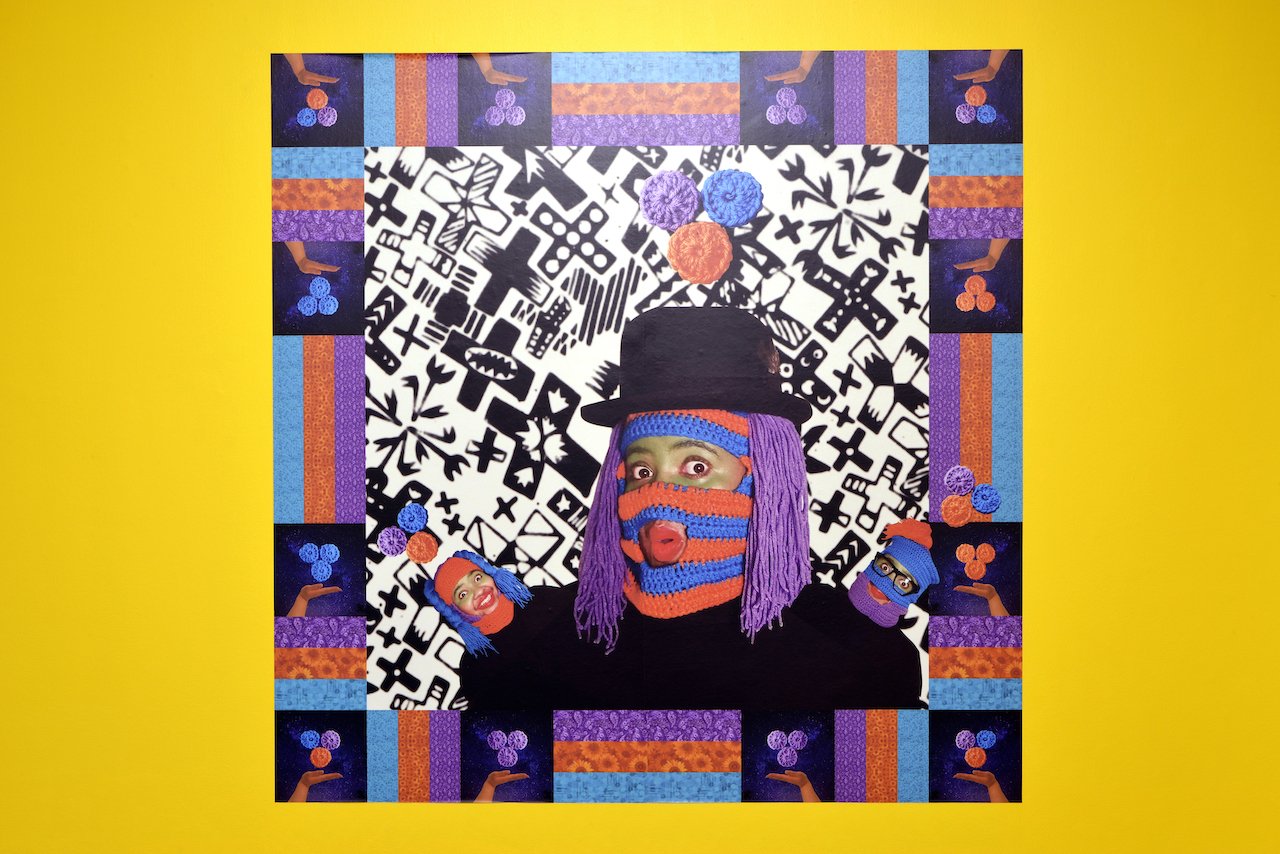
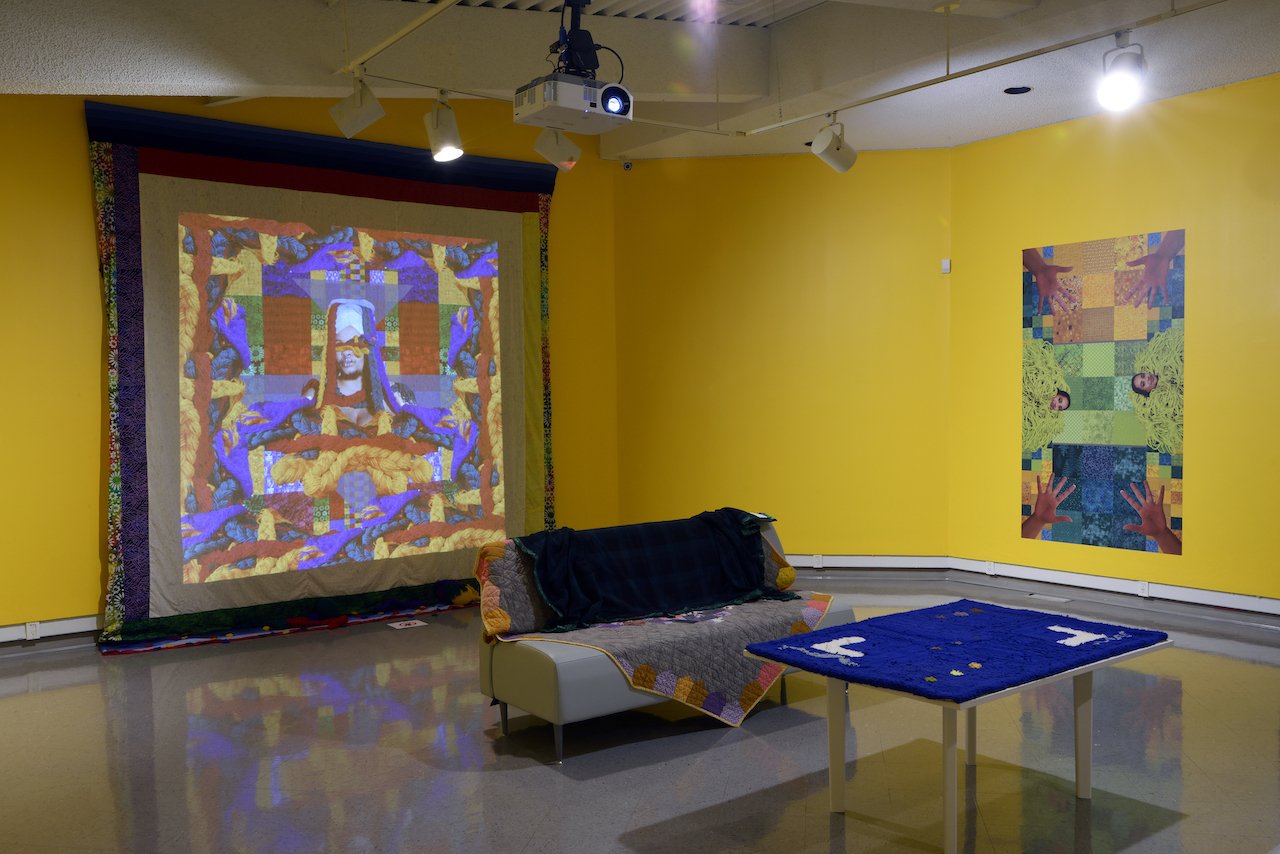
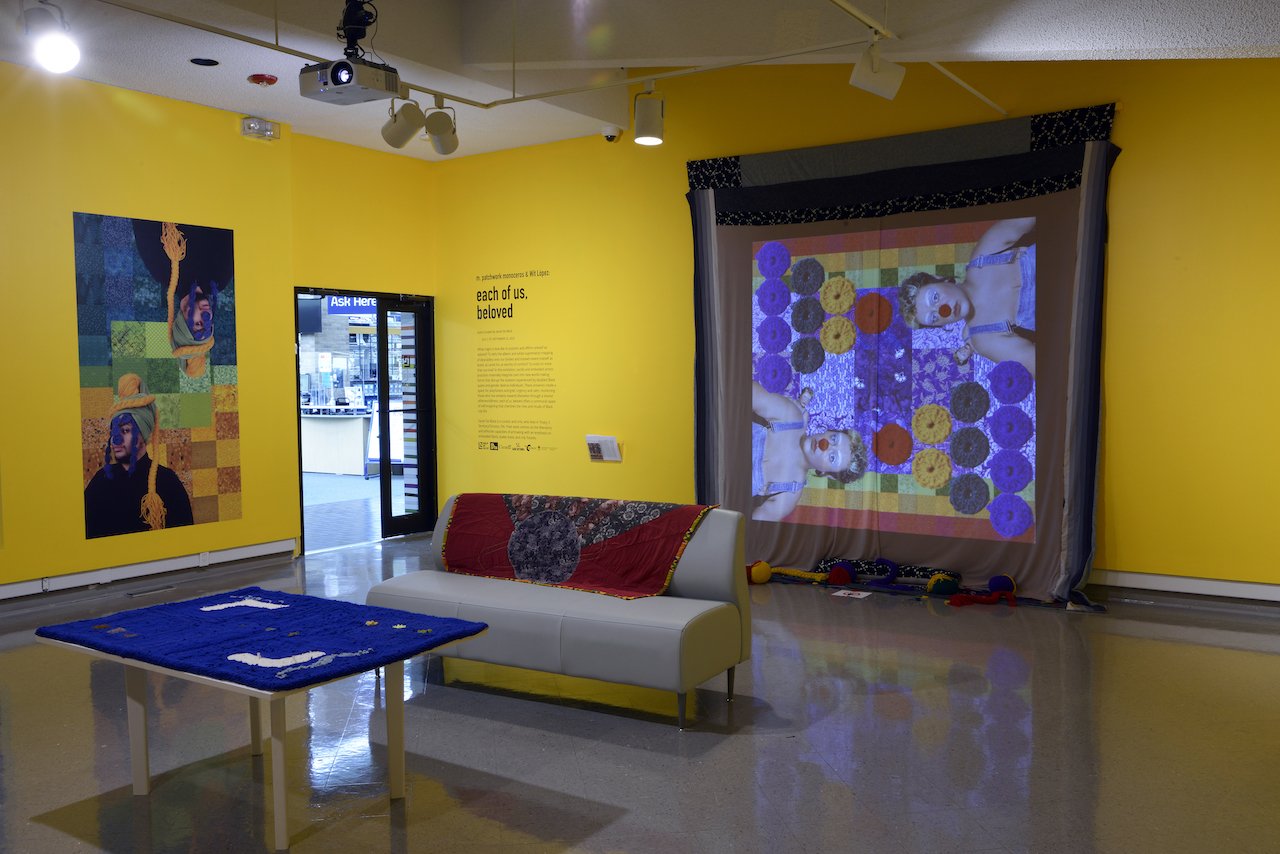
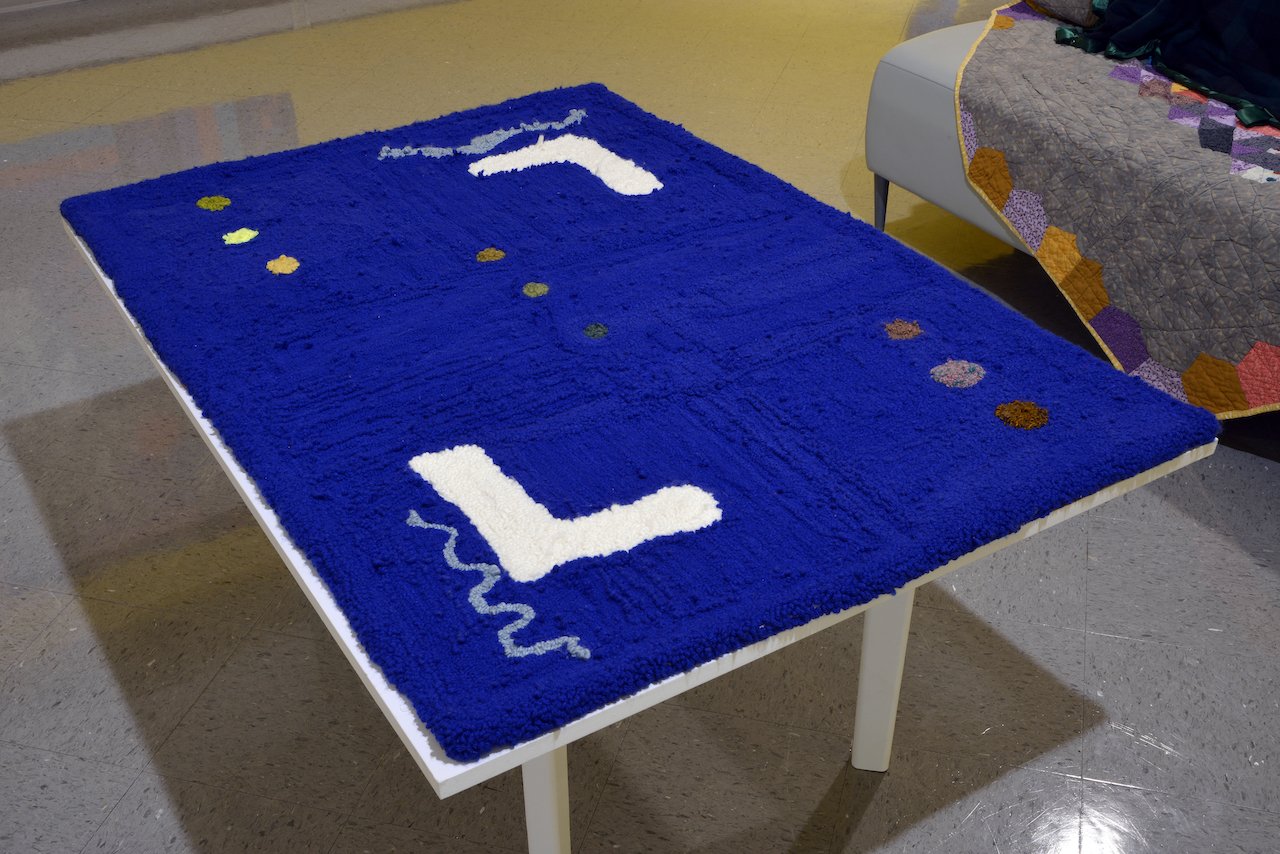
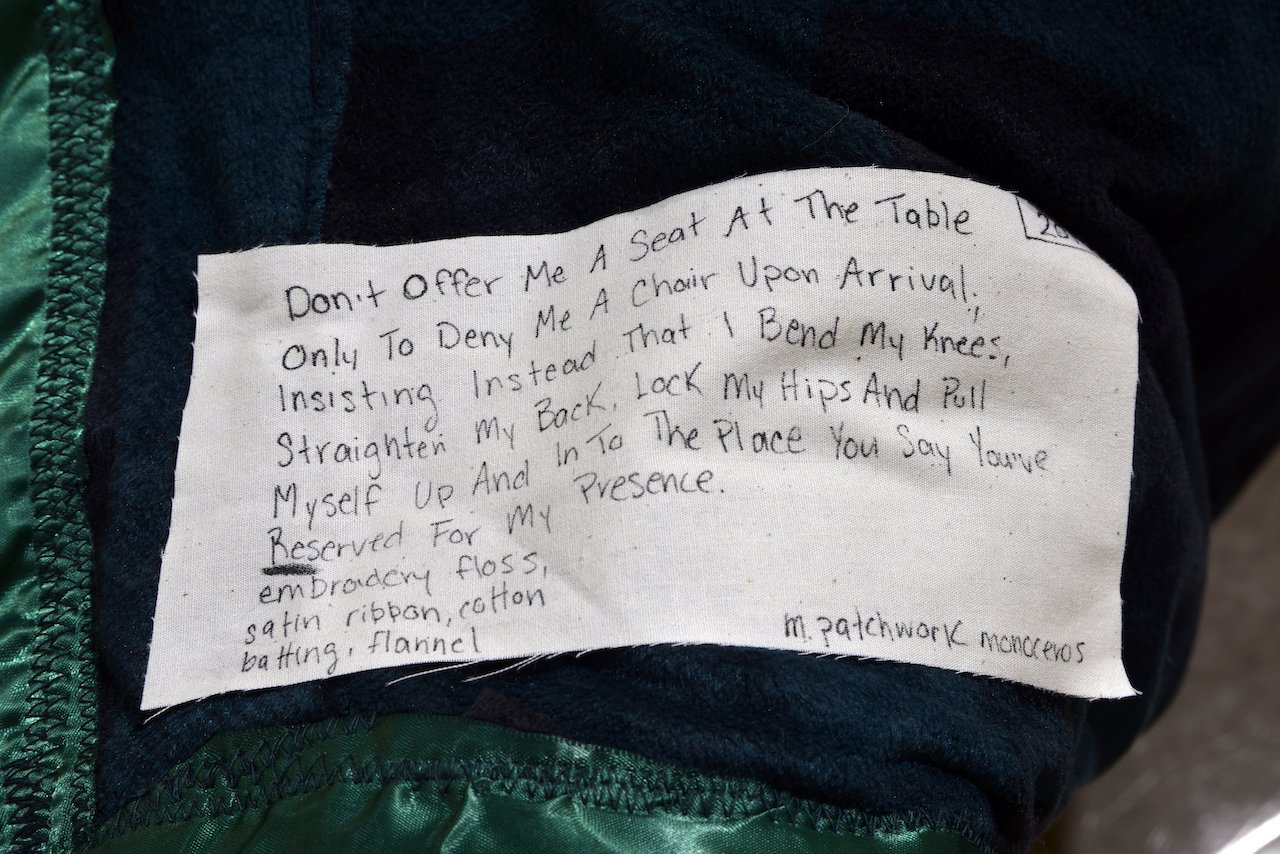
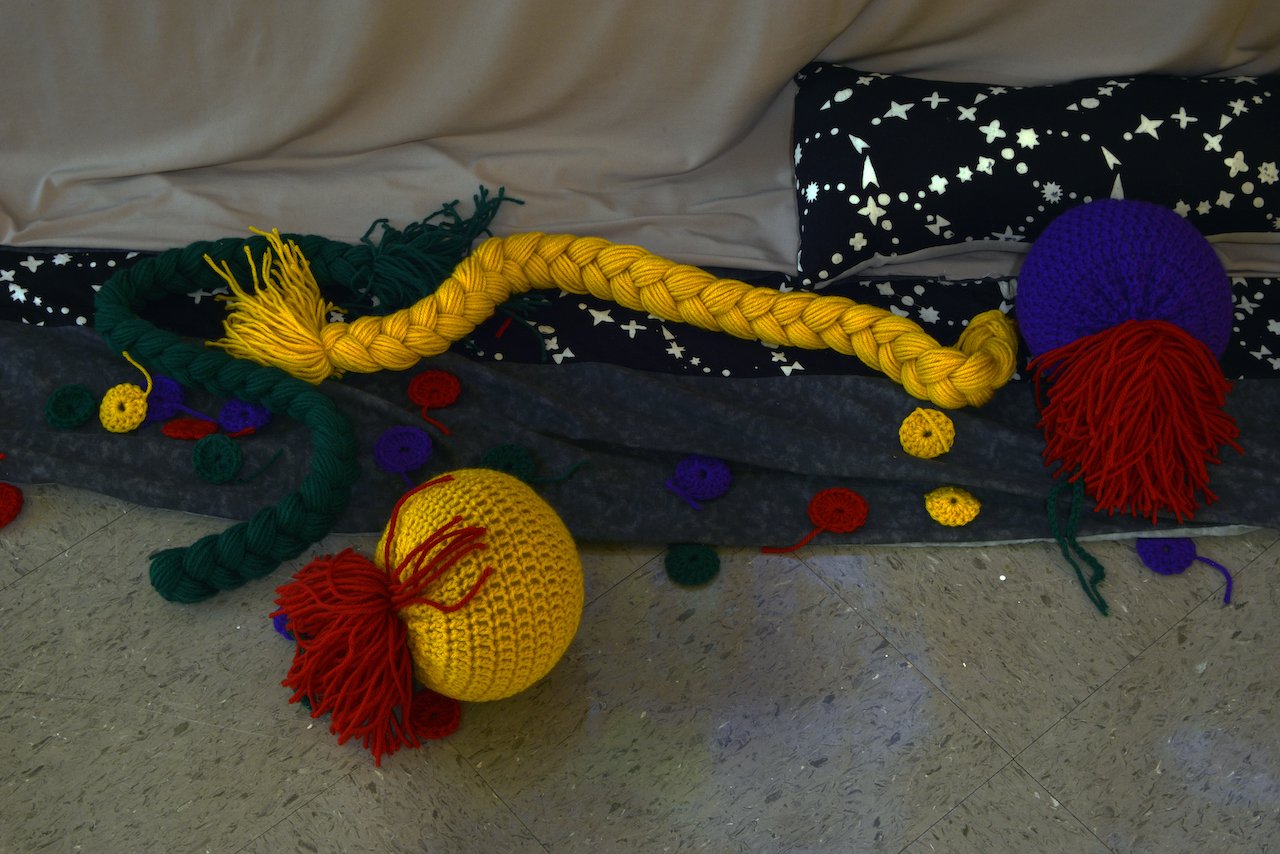
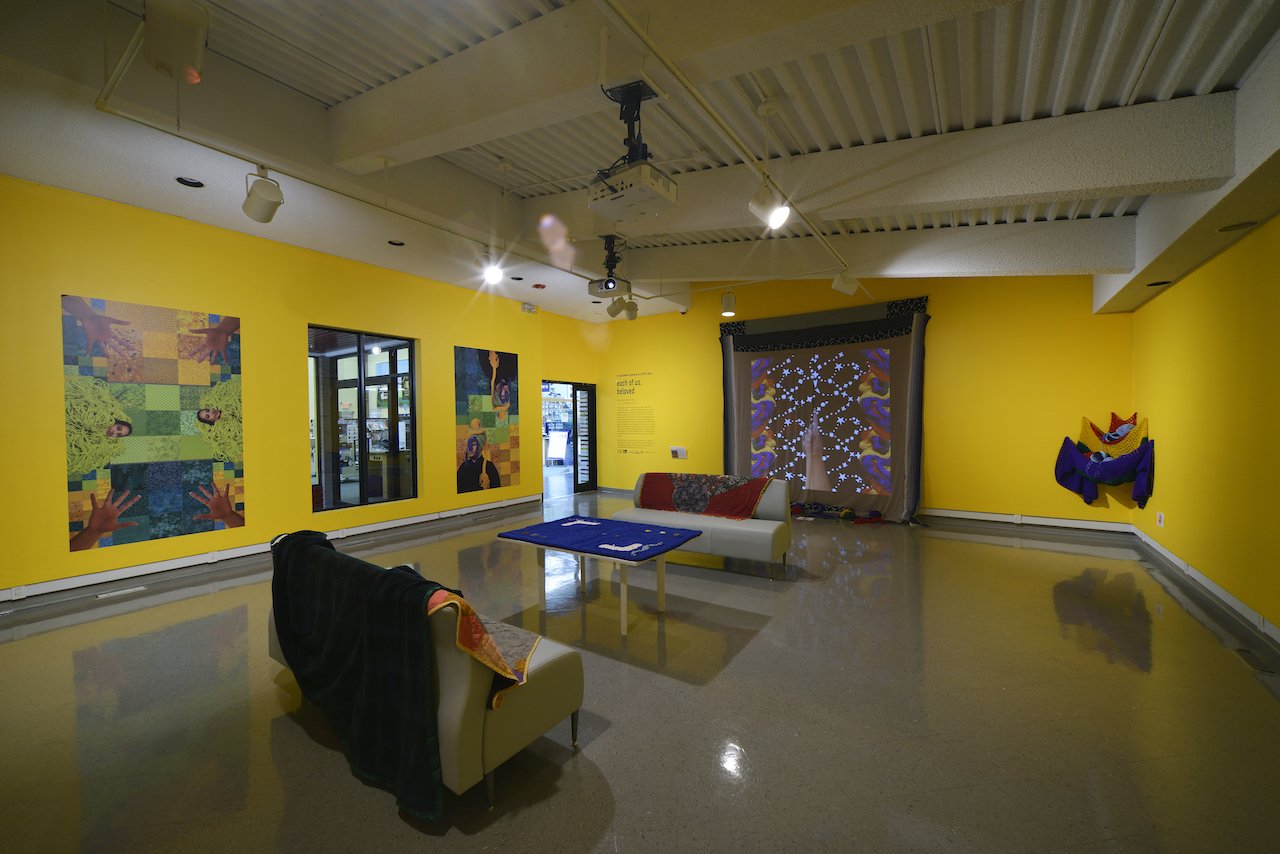
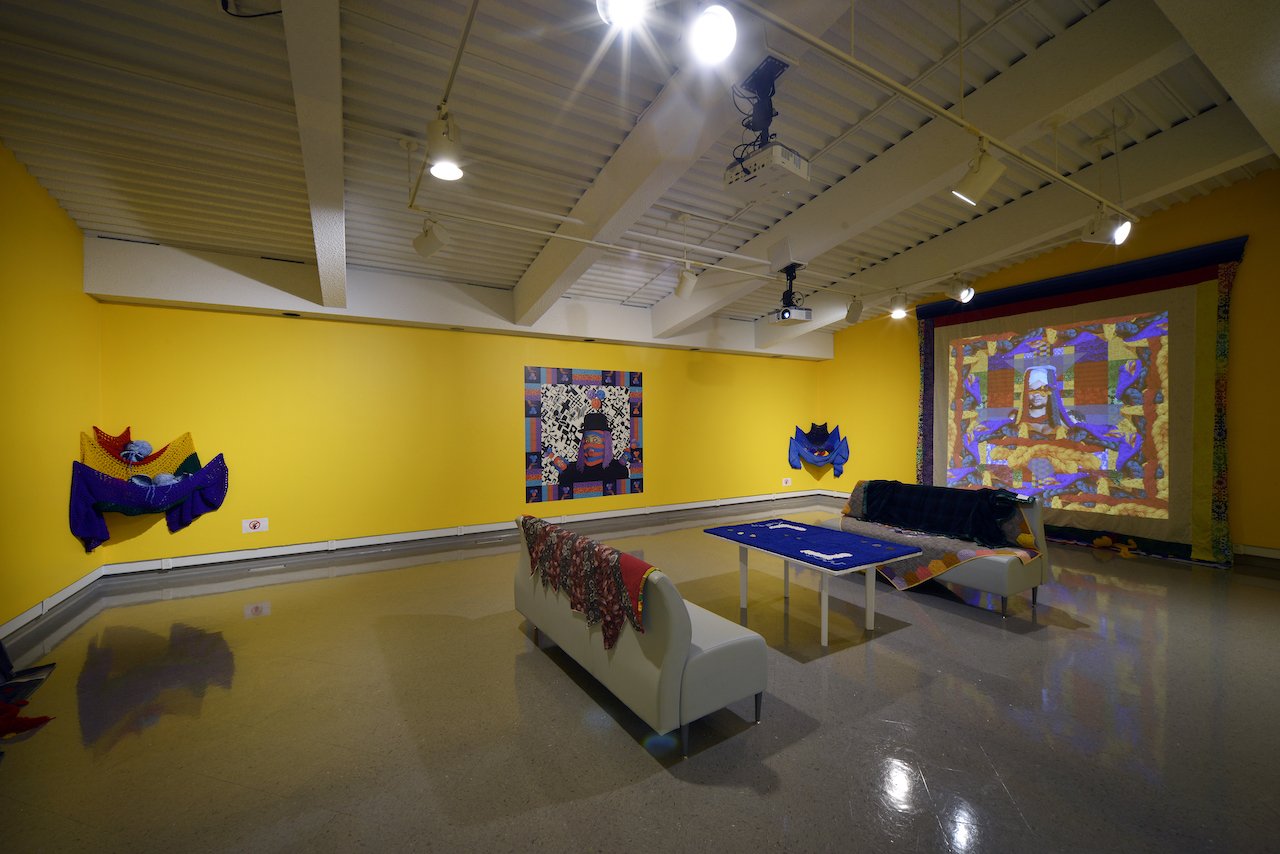
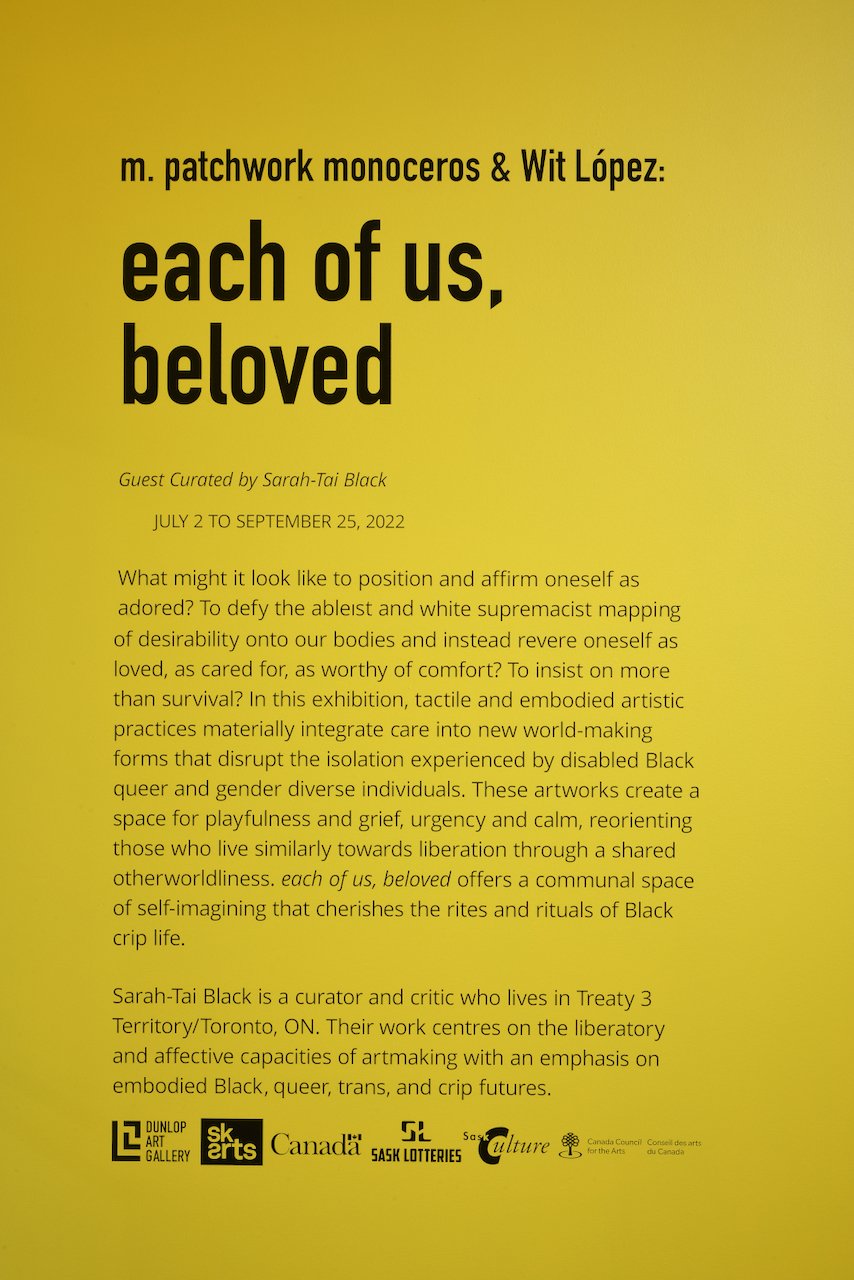
each of us, beloved
Wit López, patch monoceros
Sherwood Gallery, Dunlop Art Gallery
Regina, SK
July 22 - September 25, 2022
What might it look like to position and affirm oneself as adored? To defy the ableist and white supremacist mapping of desirability onto our bodies and instead revere oneself as loved, as cared for, as worthy of comfort? To insist on more than survival? In this exhibition, tactile and embodied artistic practices materially reinscribe care into new world-making forms that disrupt the structural isolation experienced by disabled Black queer and gender-expansive individuals. These artworks create a space for playfulness and grief, urgency and calm, reorienting those who live likewise towards the liberatory capacities of our shared otherworldliness. each of us, beloved offers a communal space of self-imagining that cherishes the rites and rituals of Black crip life.
Documentation by Don Hall
-
Wit López is an award-winning, internationally-acclaimed, disabled, gender-evasive multidisciplinary creator, performer, and advocate of African American and Boricua descent. Coming from a family of artists, creating has always been a part of López’s world. Their work combines the skills their parents taught them—fibre art, painting, collage, and photography—and contains elements of their formal training in theatre, dance, and classical music, including costuming, staging, and props. López’s visual work and performance art uses their educational background in anthropology and Africana studies as a lens to examine, decolonize, and reconstruct aspects of their own identity. Through fibre and imagery, López explores hairiness, accessibility, queerness, gender identity, Blackness, and Latinidad, while also fully embracing absurdity and the macabre.
m. patchwork monoceros is a poet and interdisciplinary artist exploring polysensory production and somatic grief. Engaging poetry, memoir, textiles, and film, their work considers the collective qrip (queer+crip) consciousness by connecting to marvelous bodies living with complexity as sick or disabled. monoceros lives and works in Treaty 1/Winnipeg, MB; home of the Métis First Nation and the traditional territory of the Anishinaabe, Dene, Cree, Dakota and Oji-Cree Nations with their menagerie of dogs, cats, plants, corvids and works in progress.
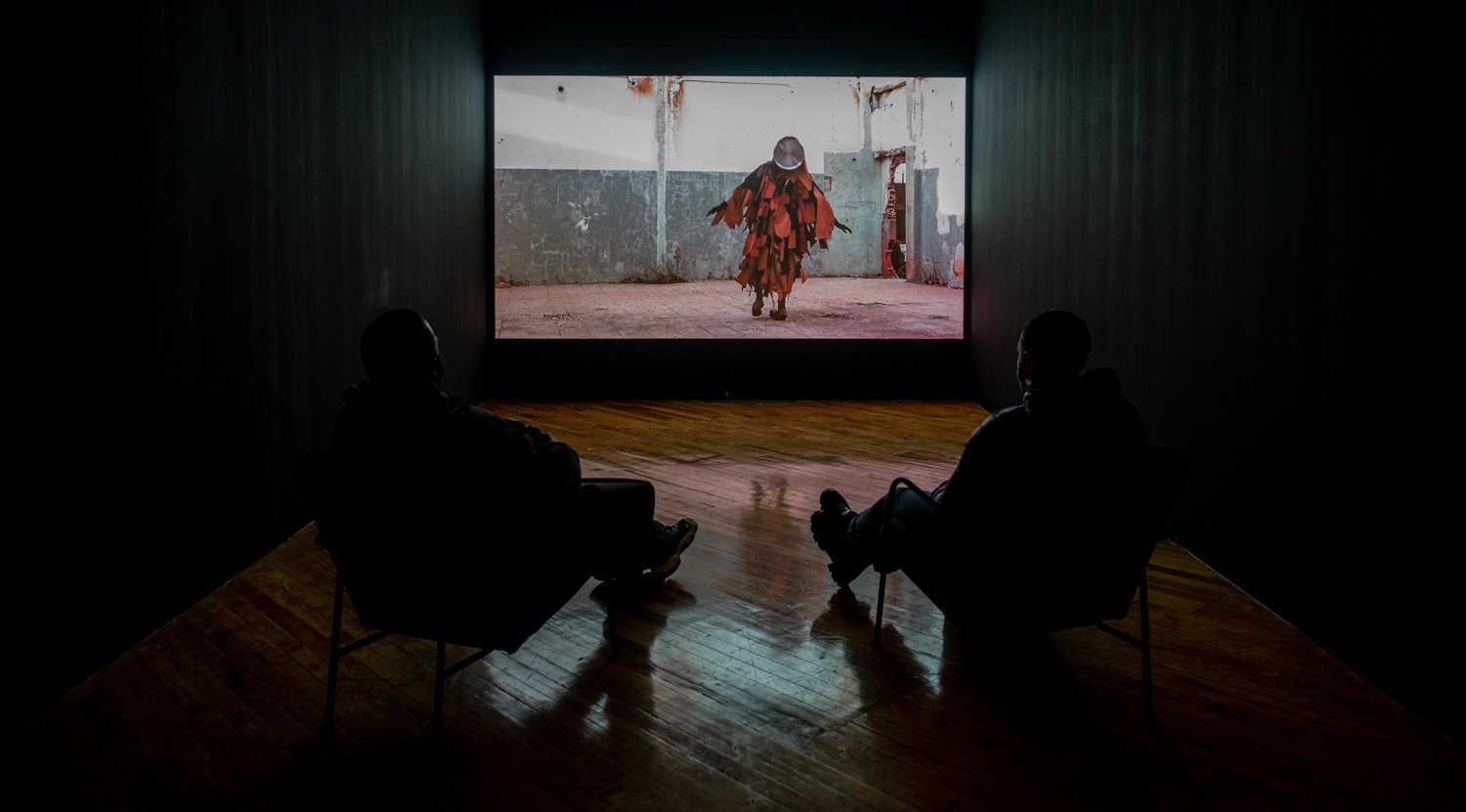
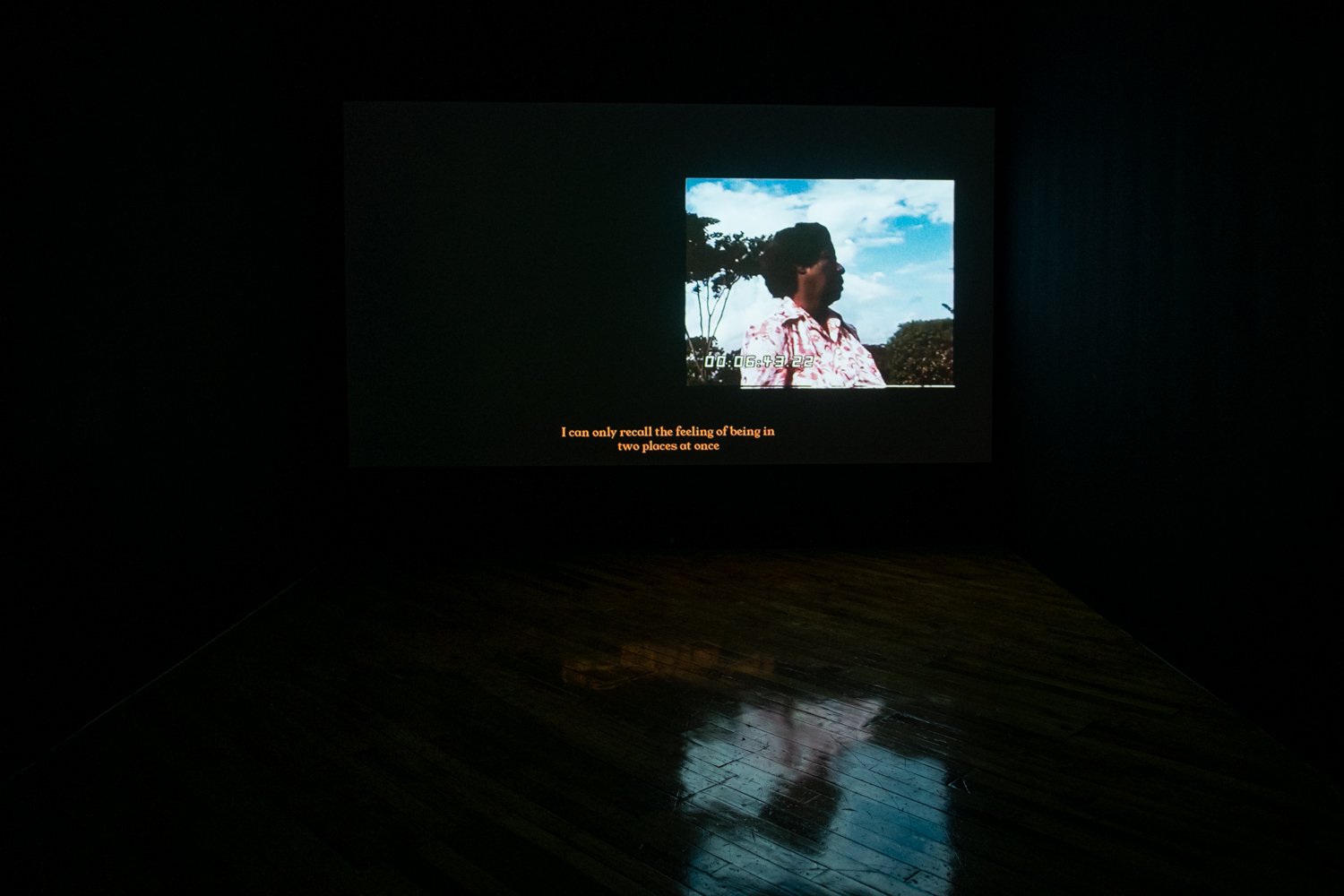
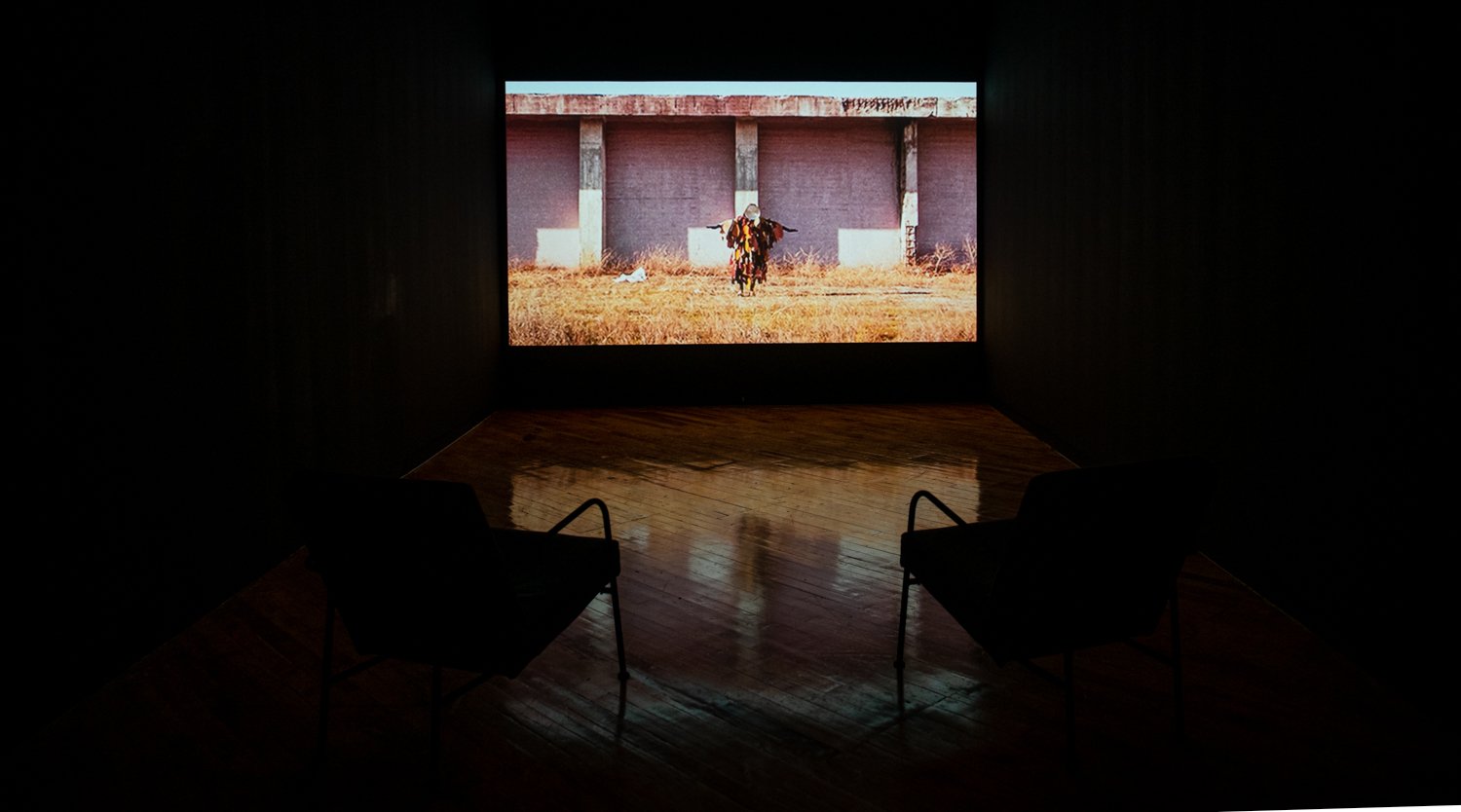
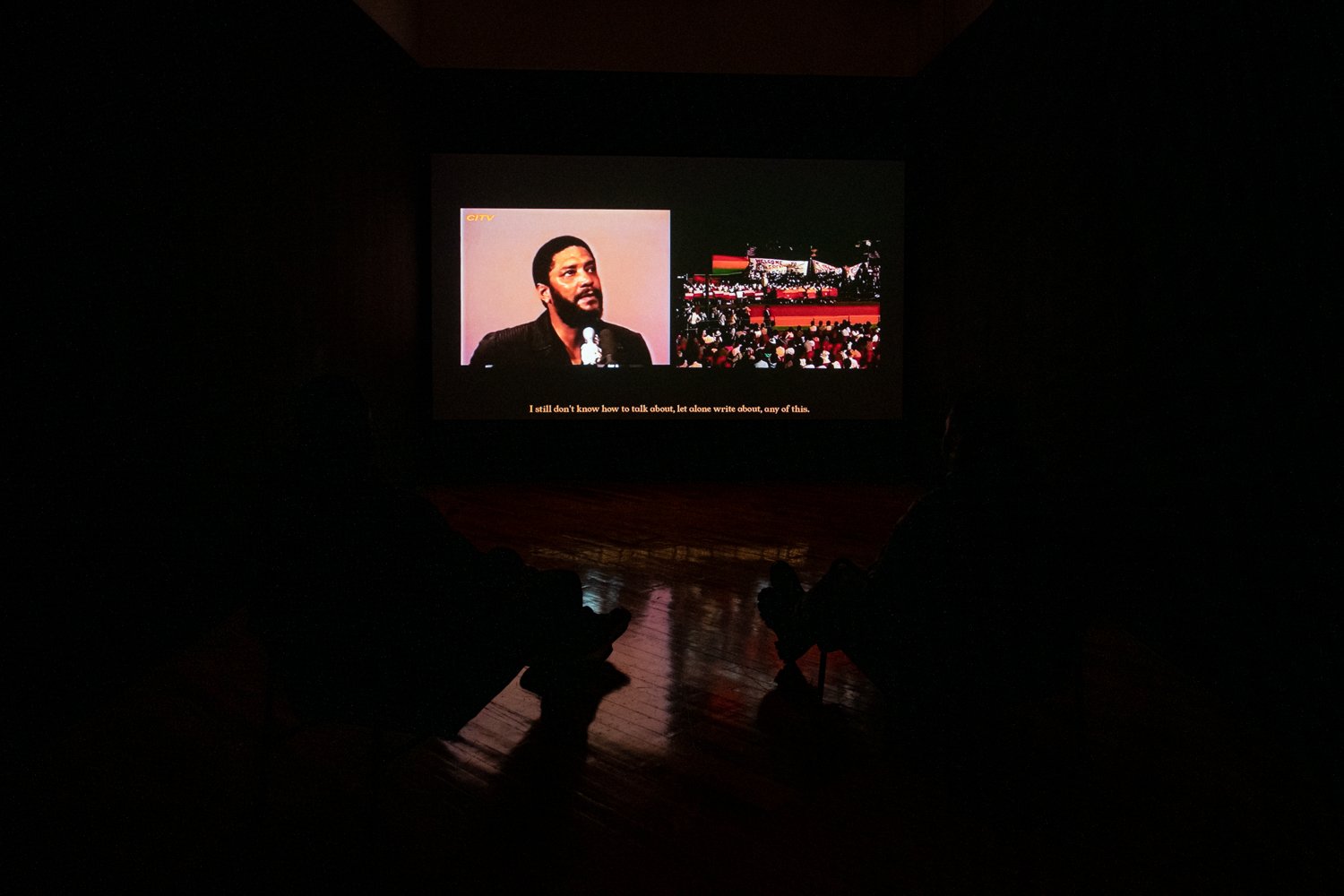
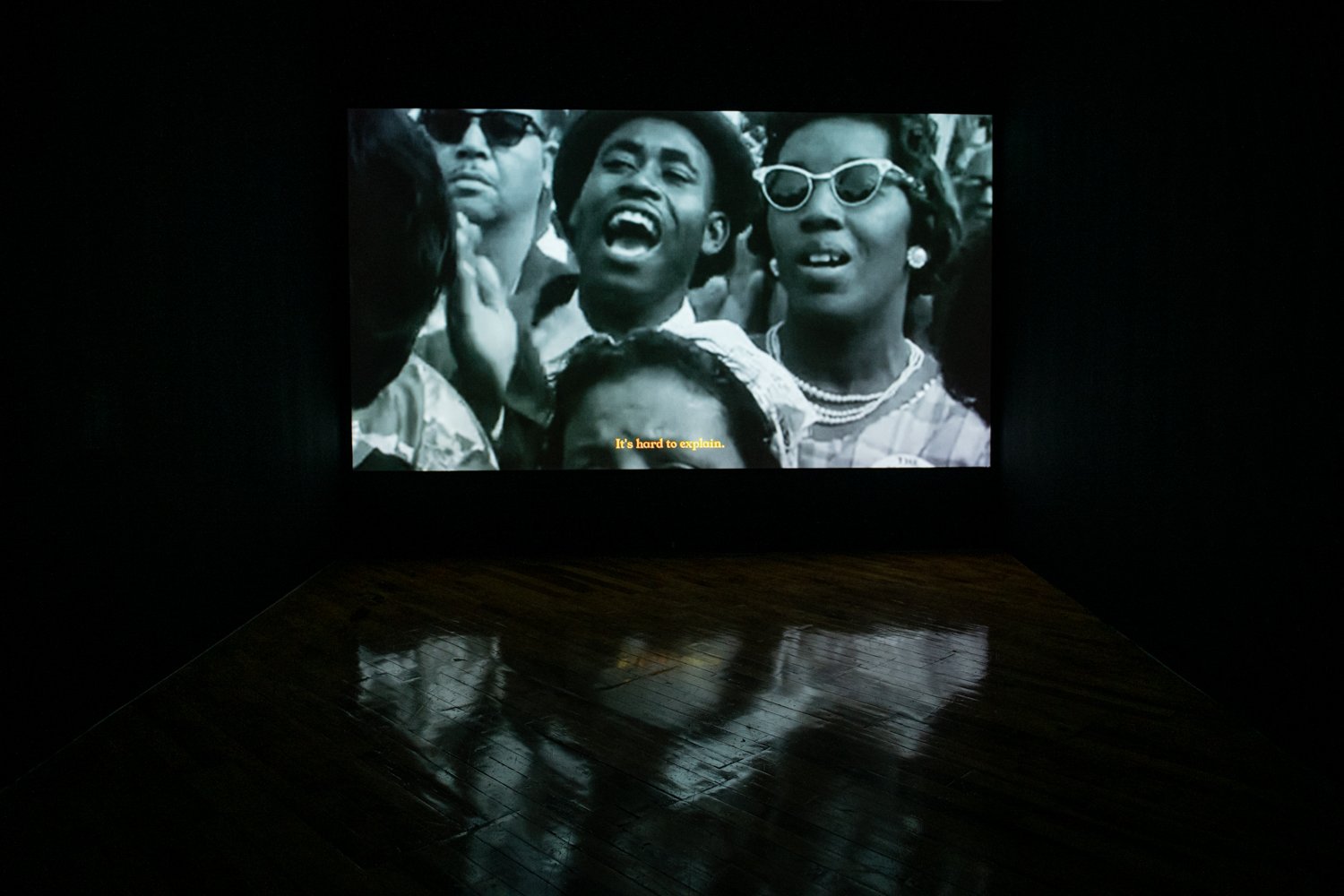
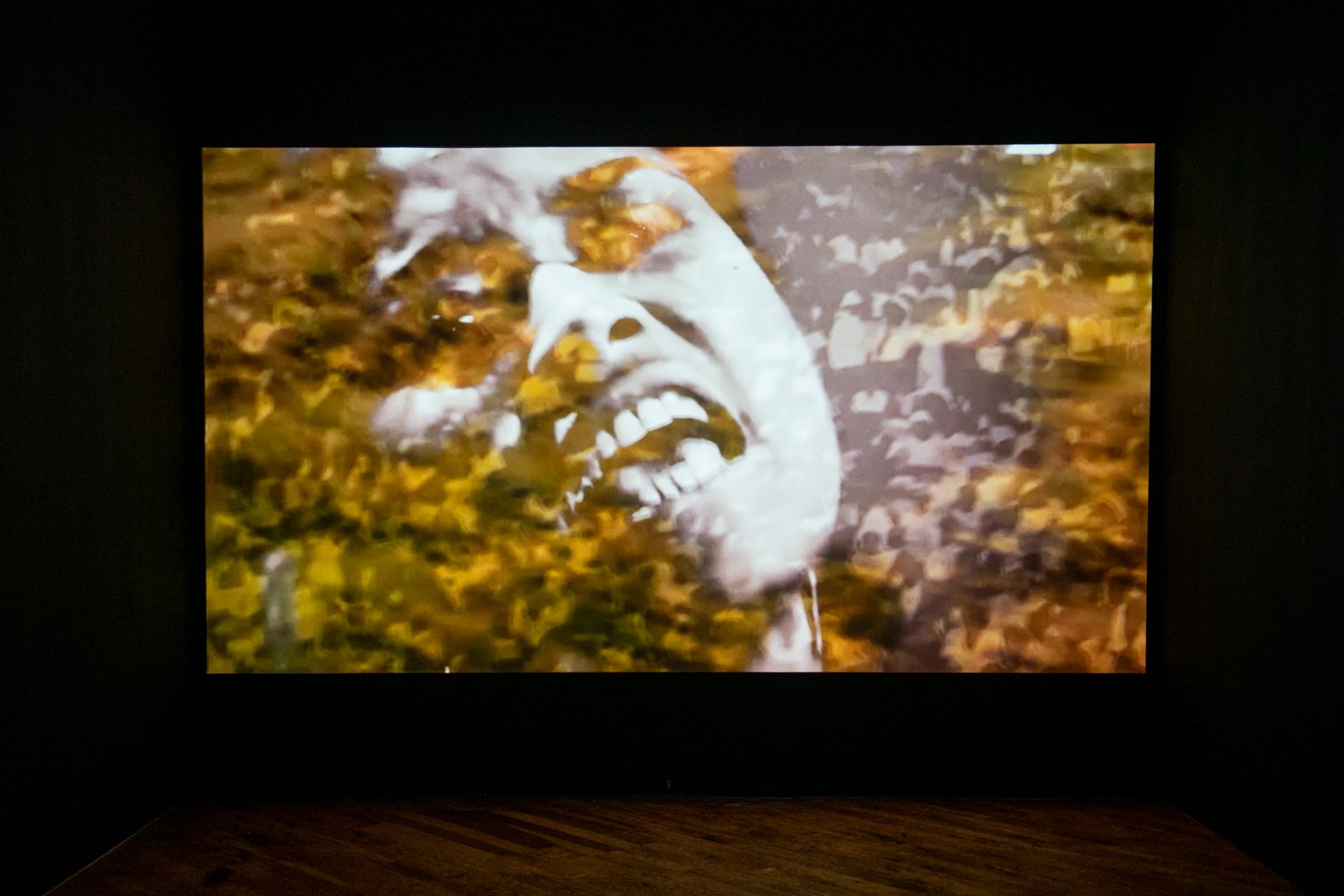
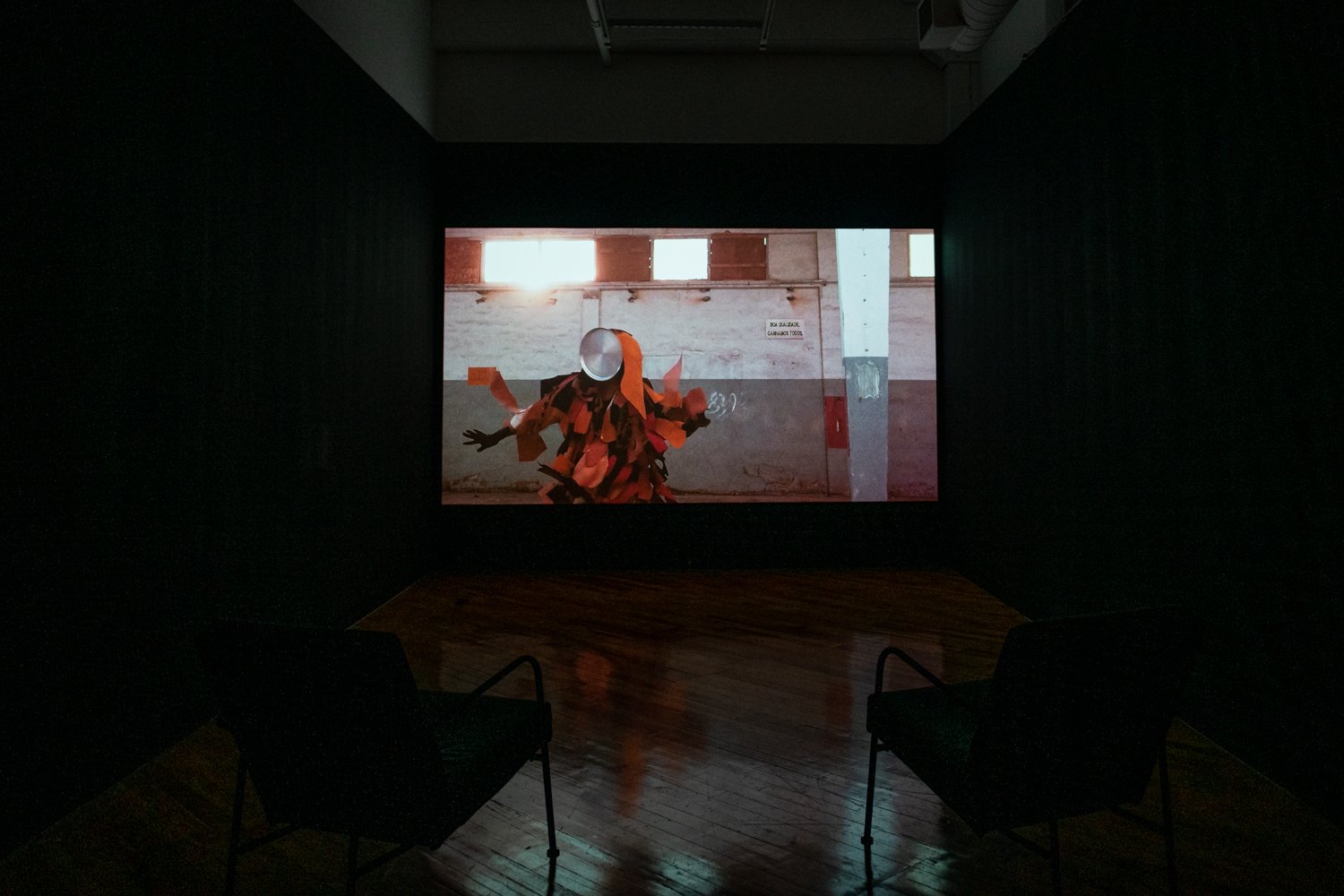
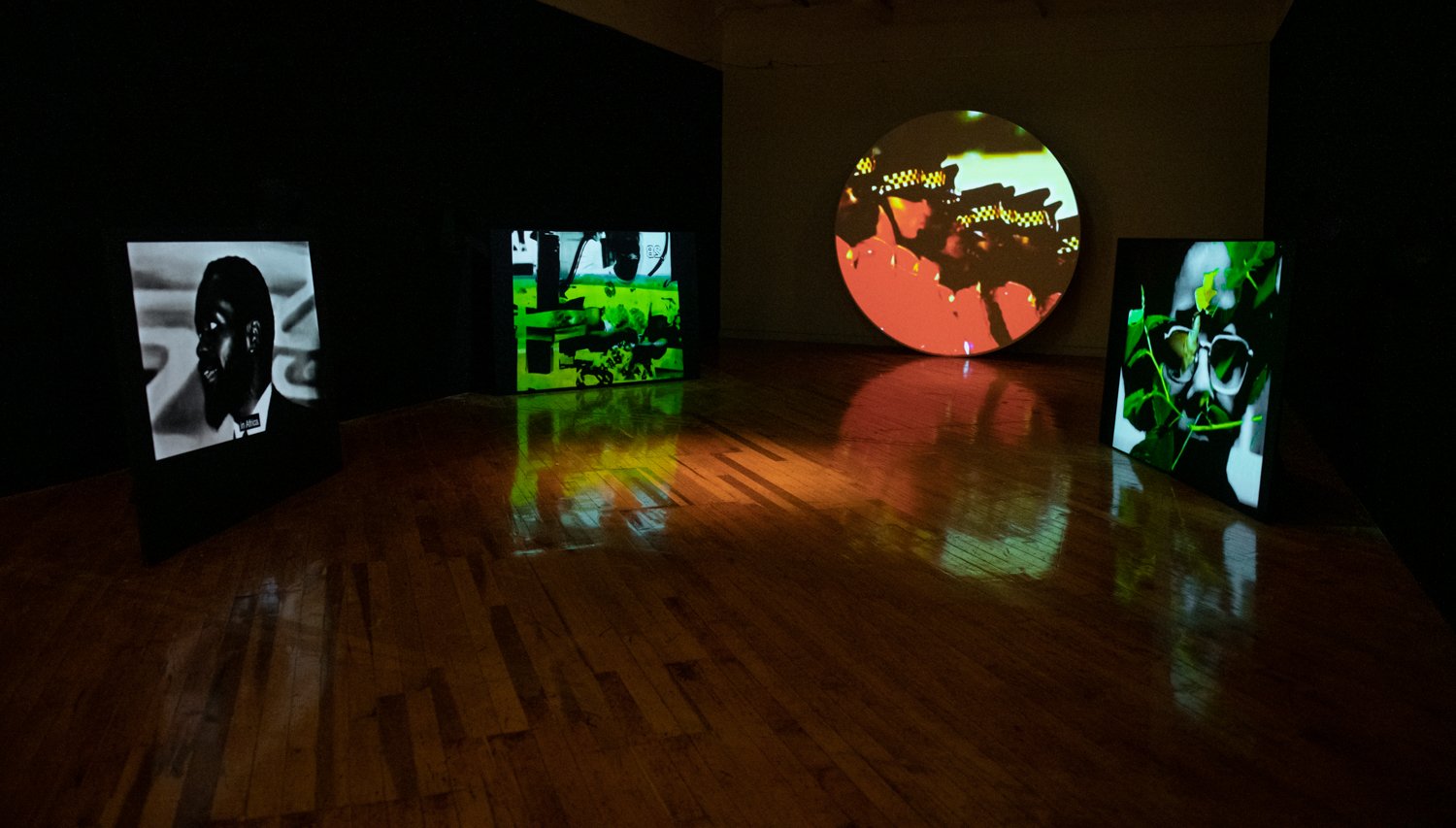
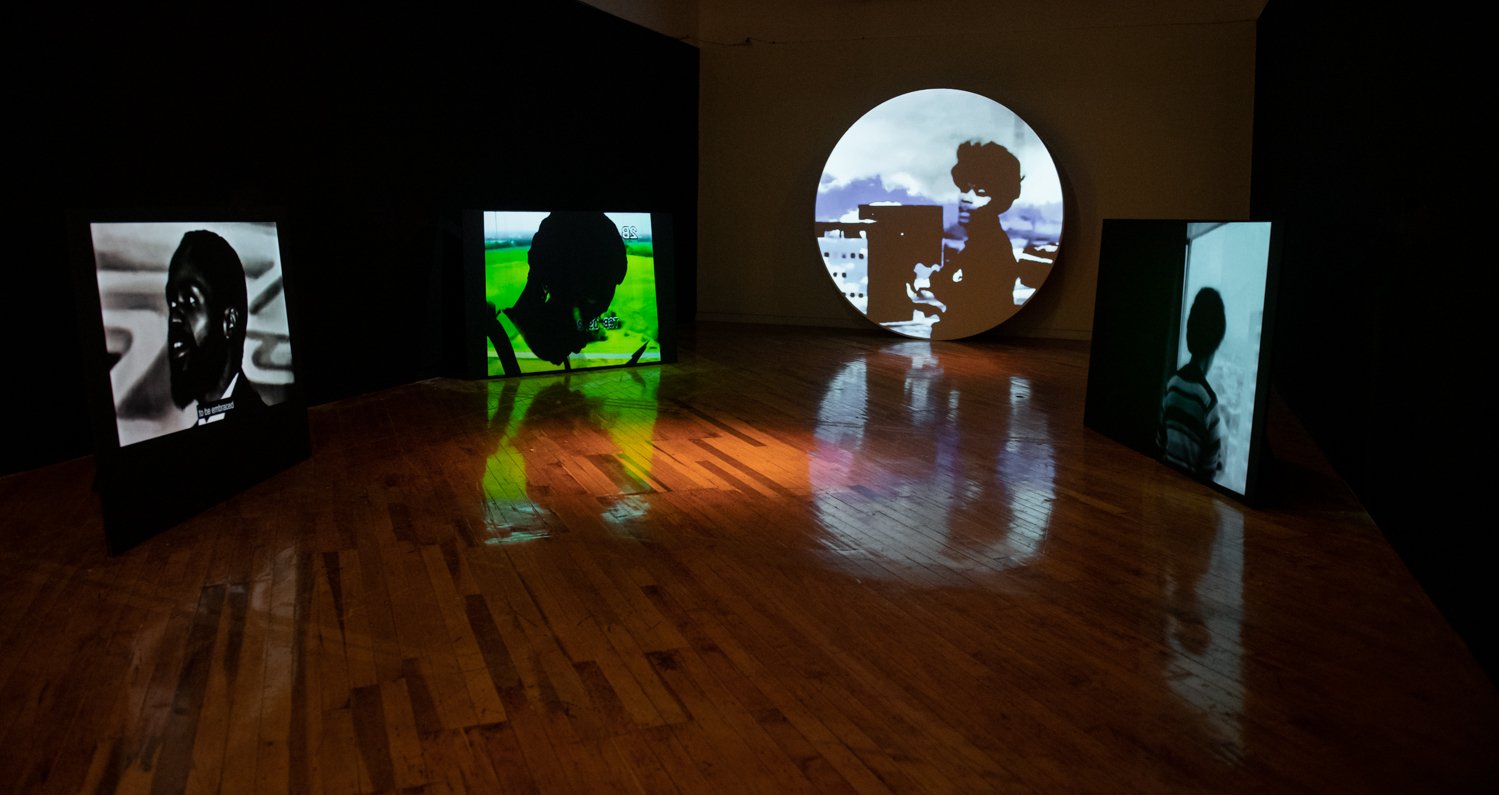
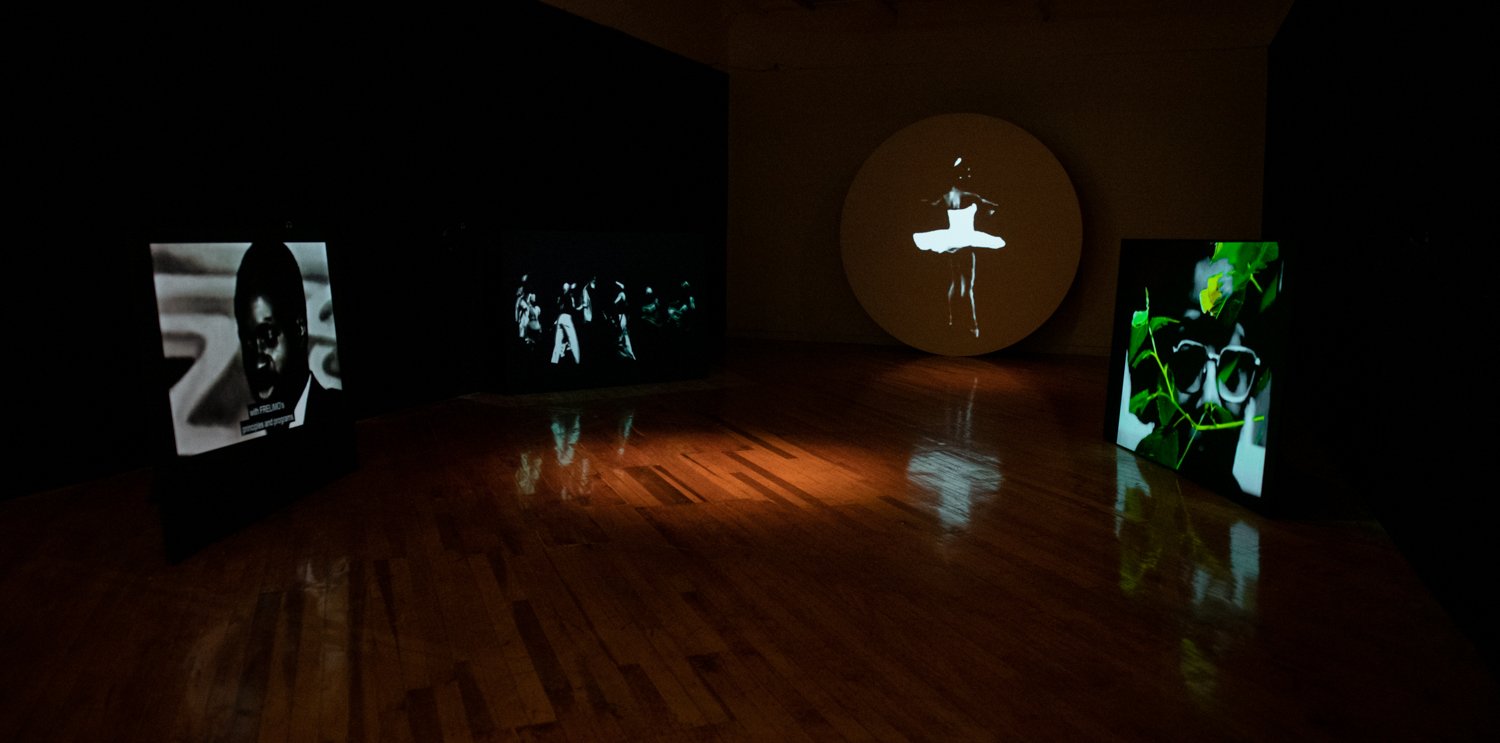
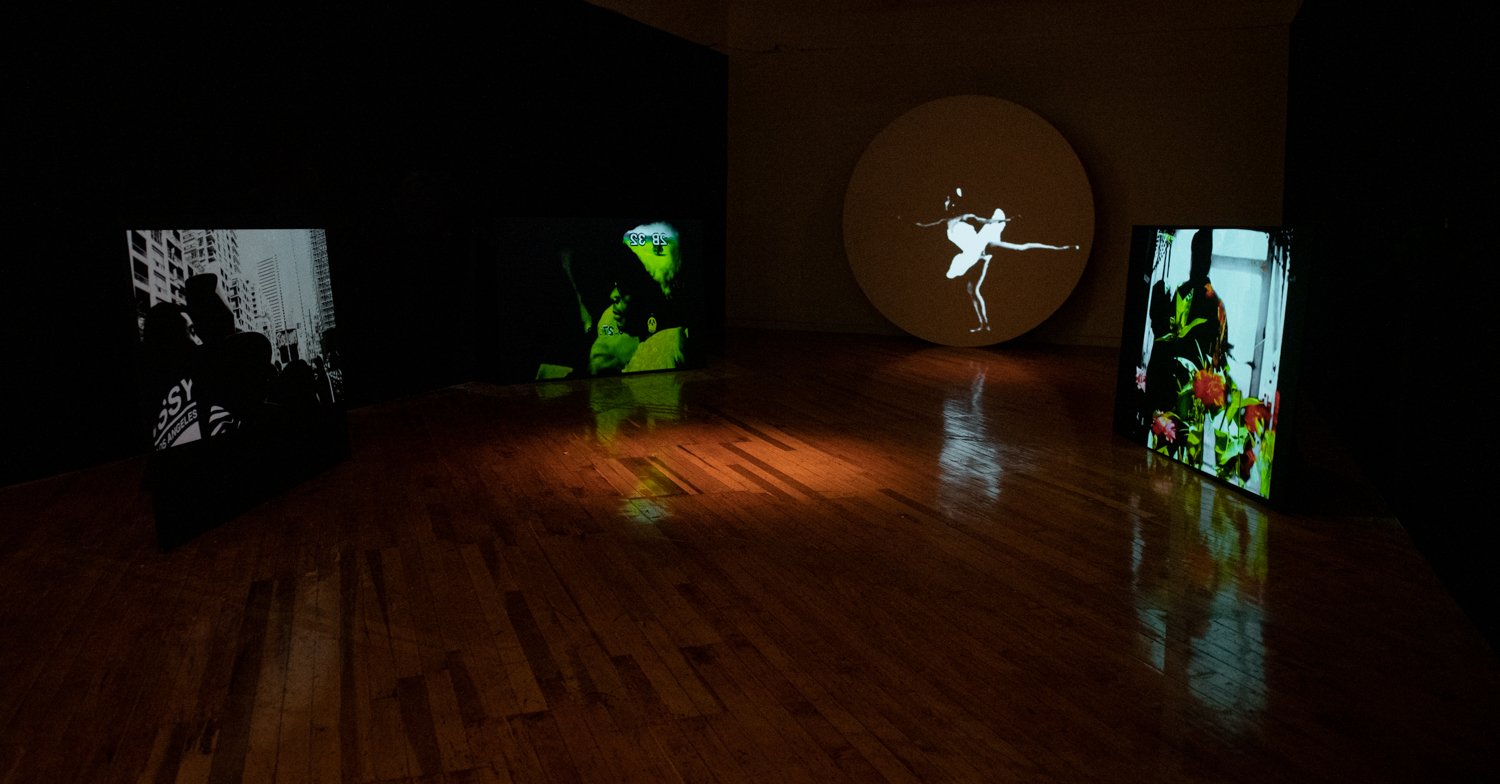
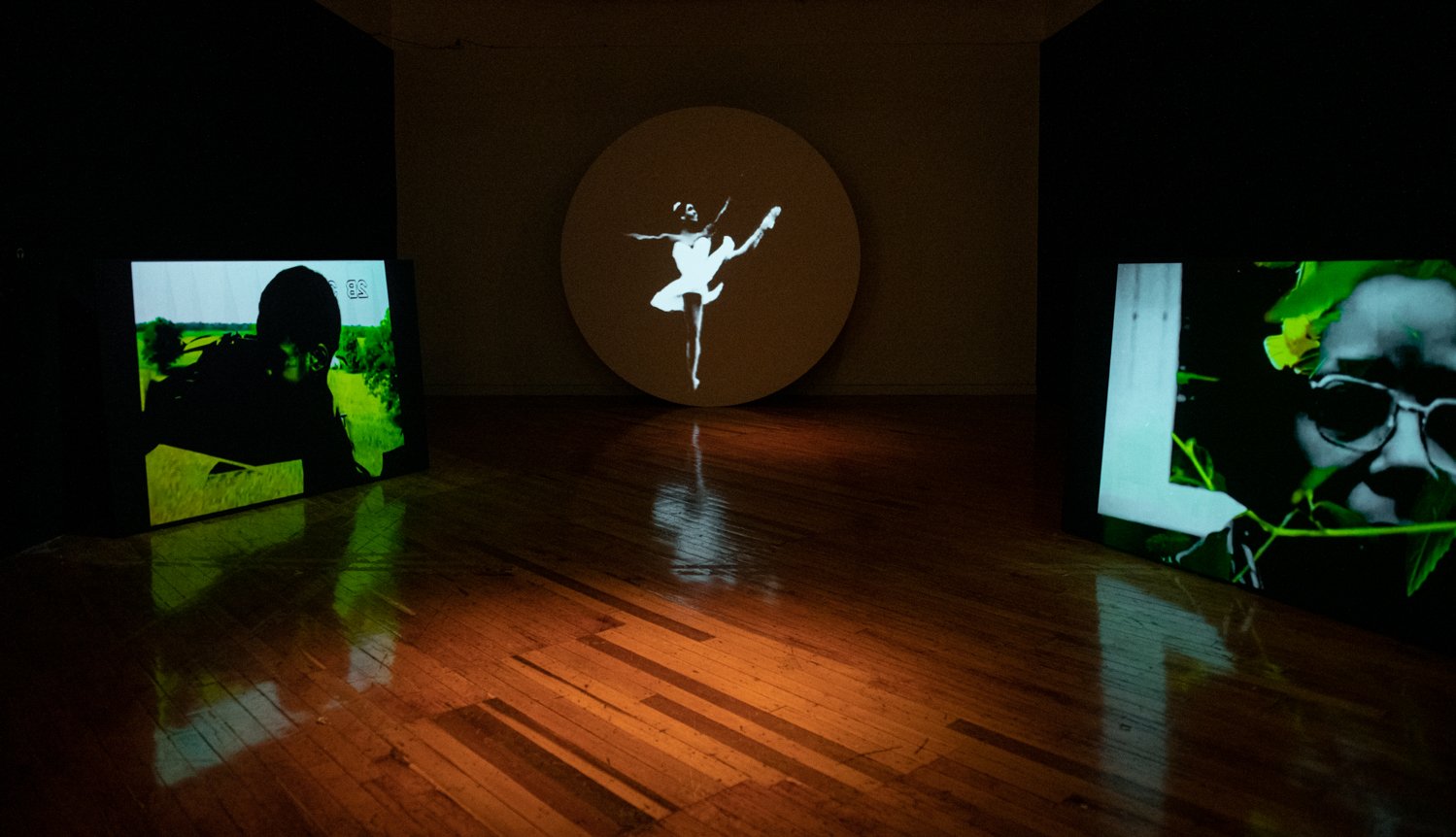
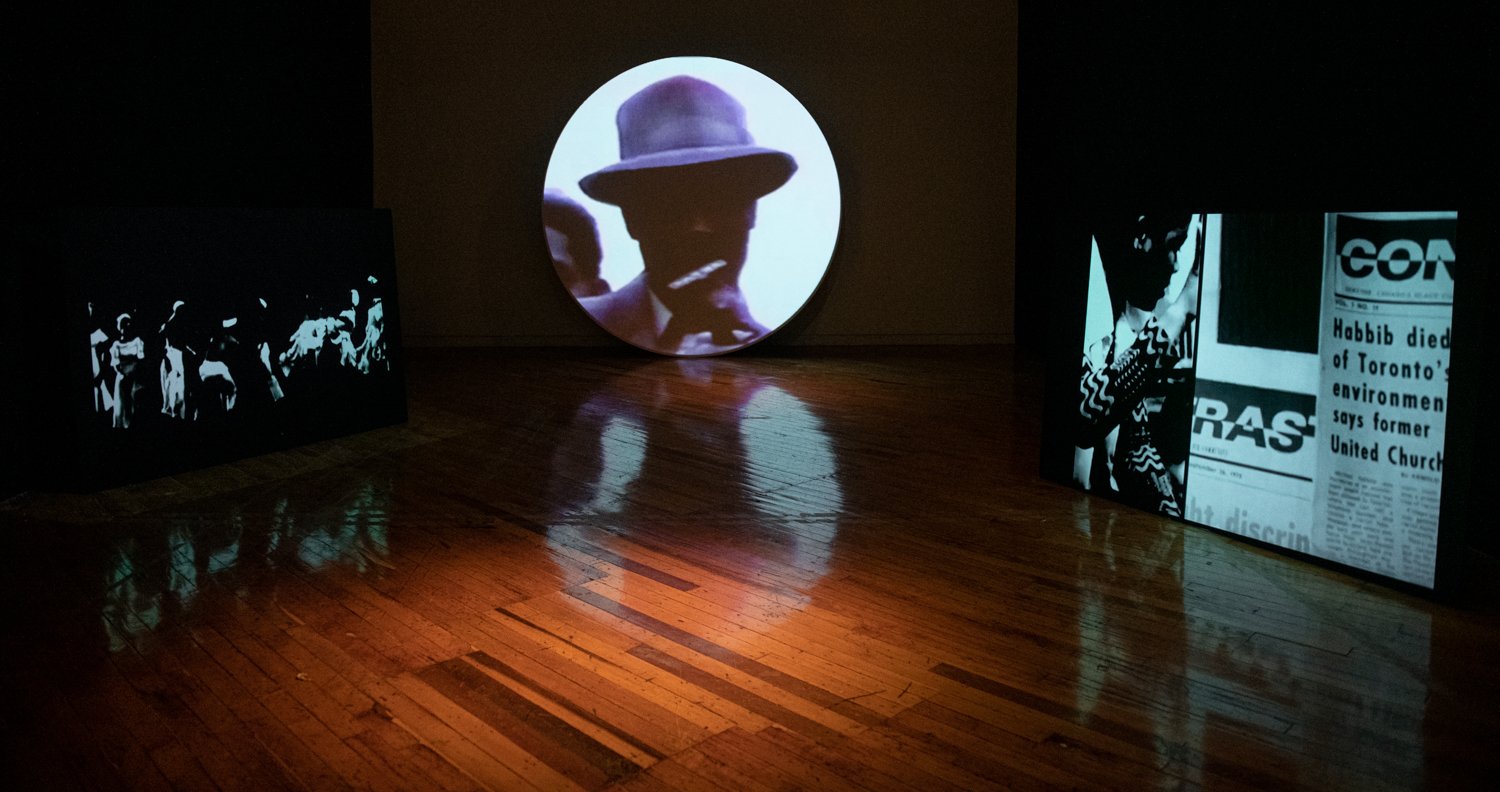
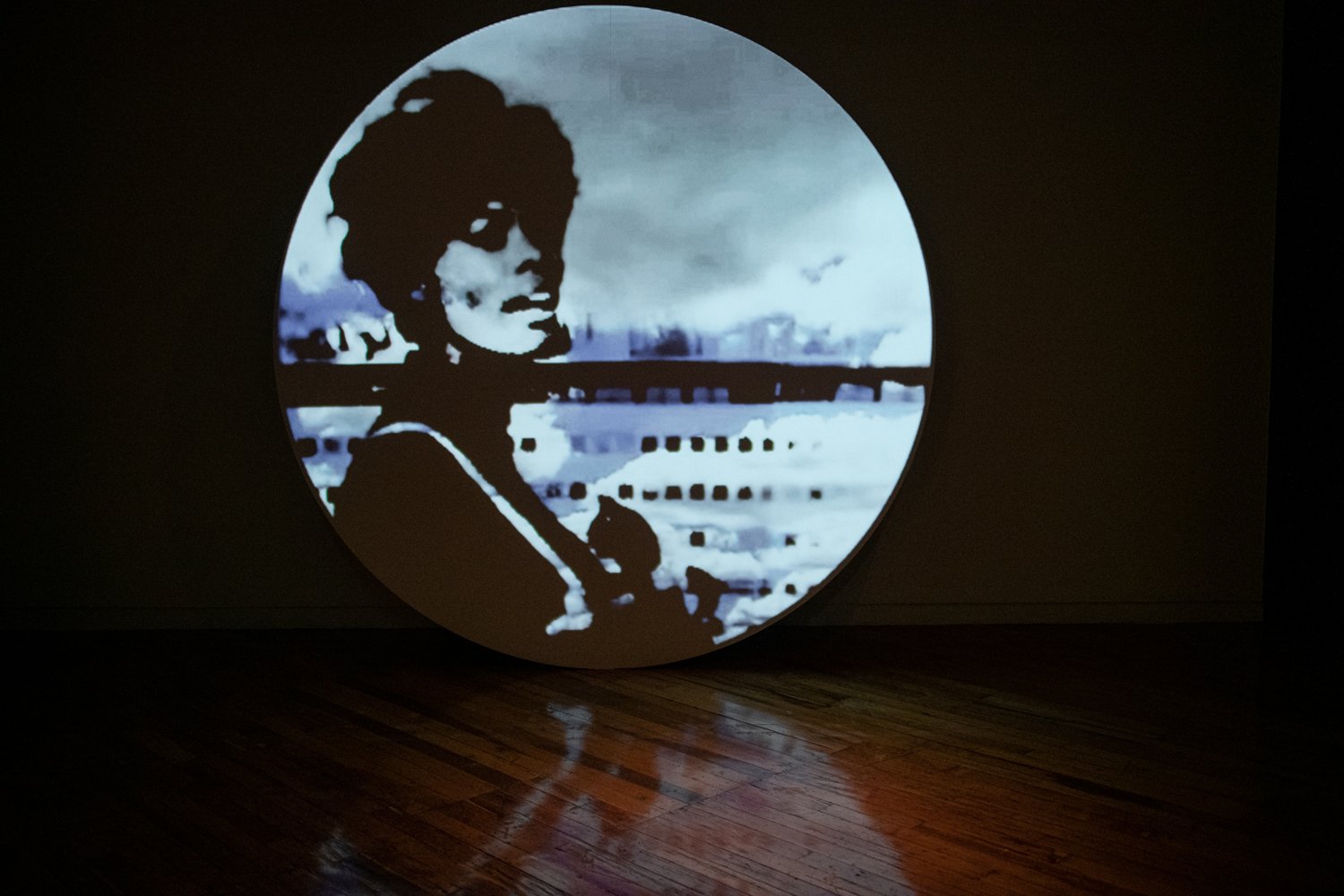
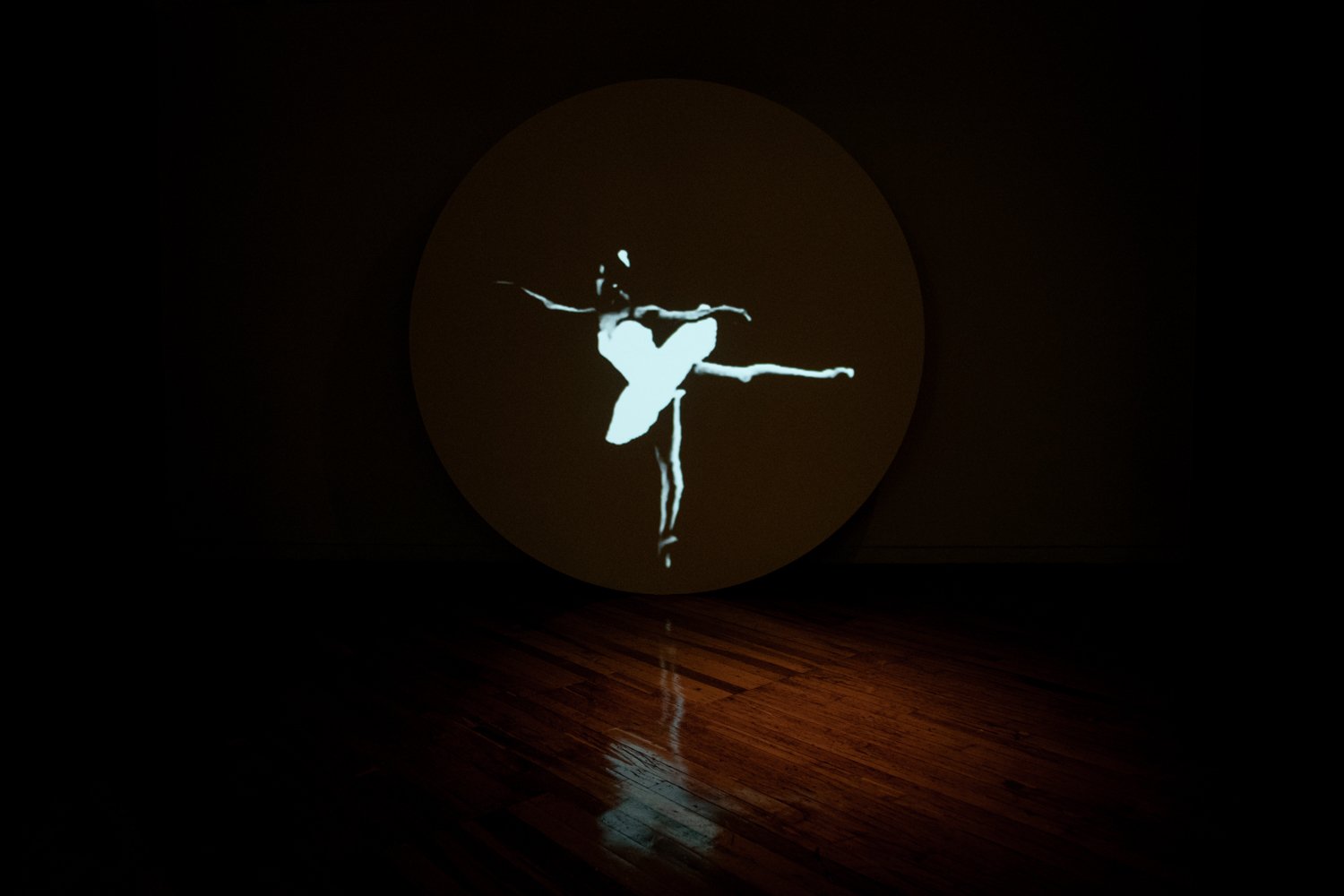
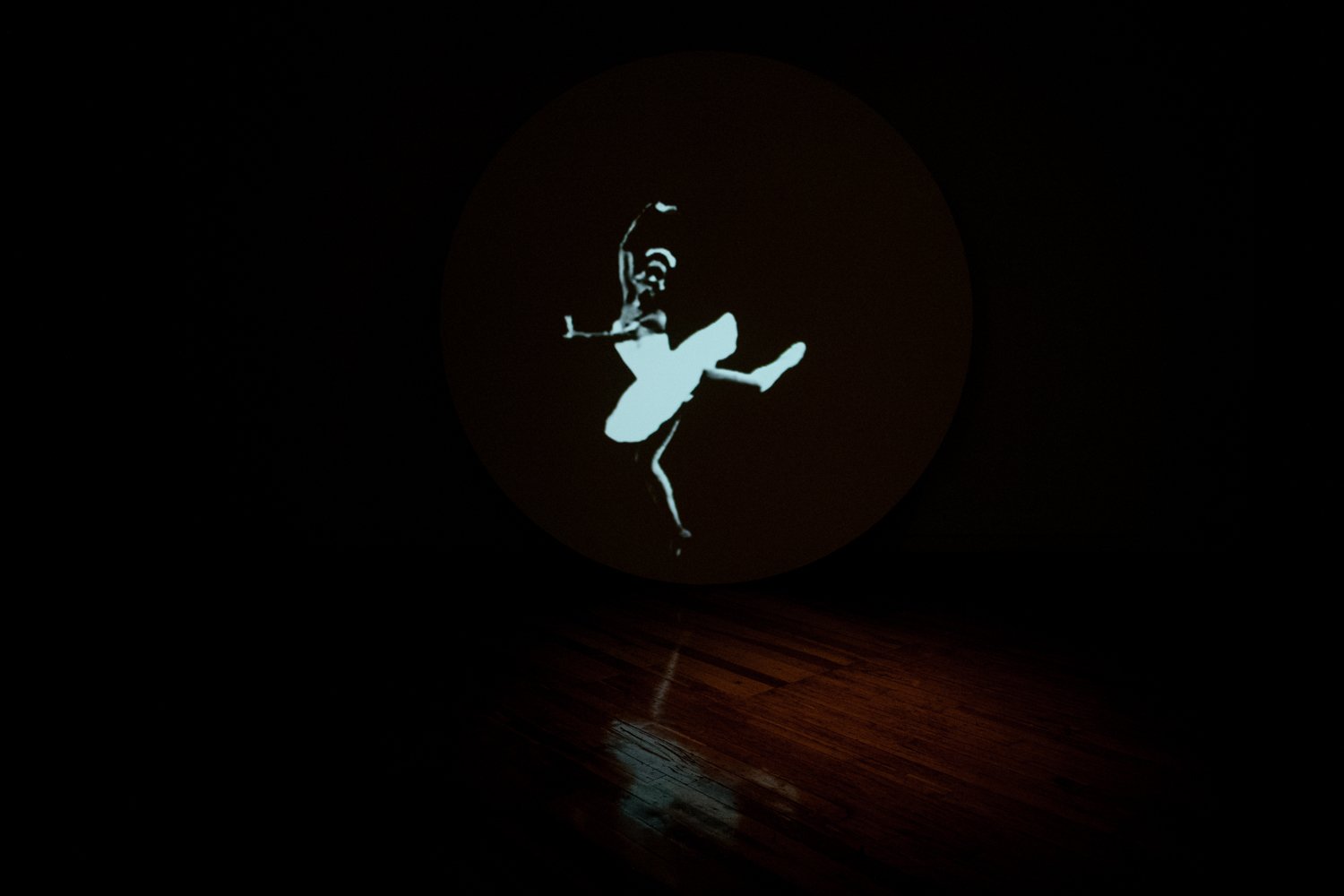
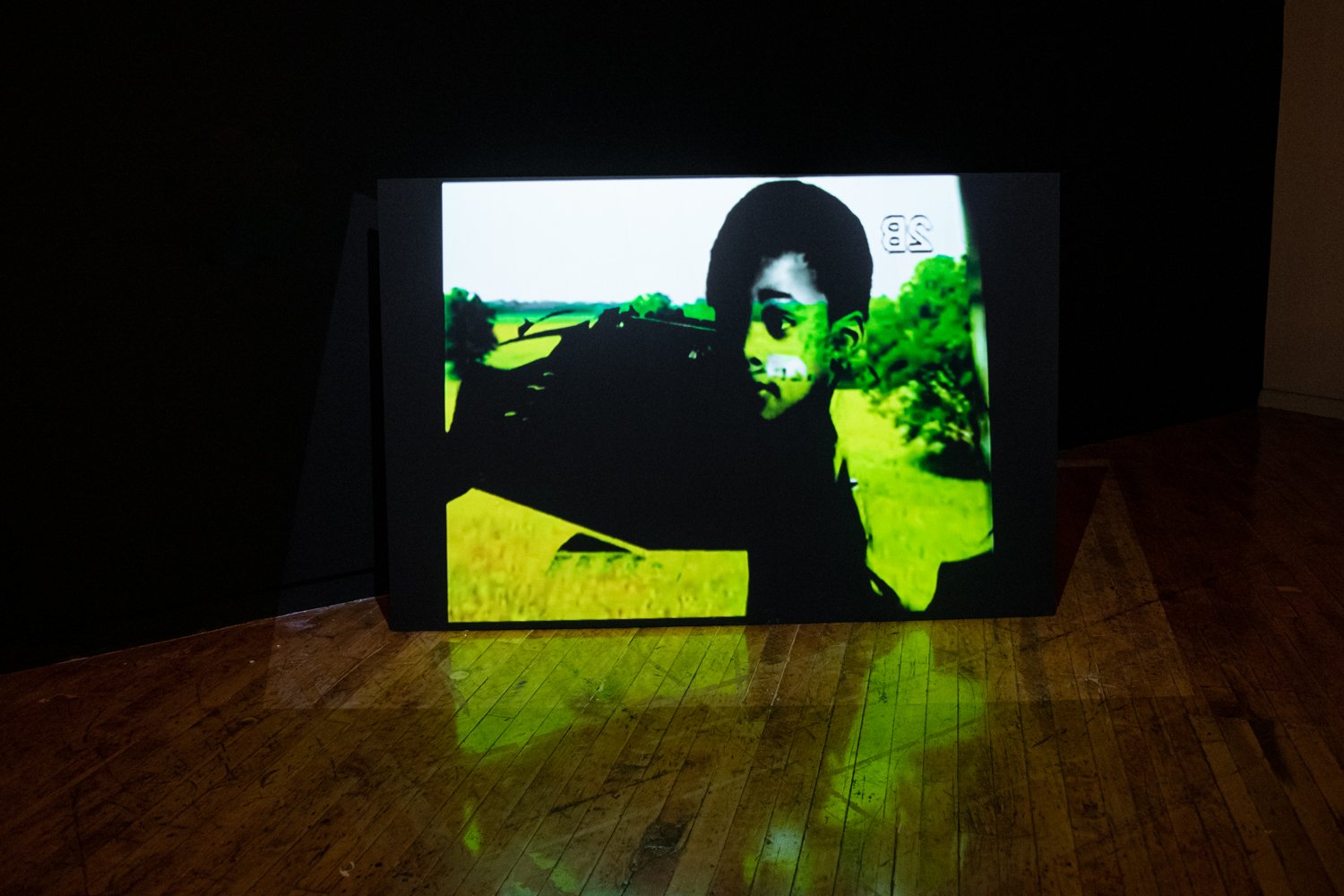
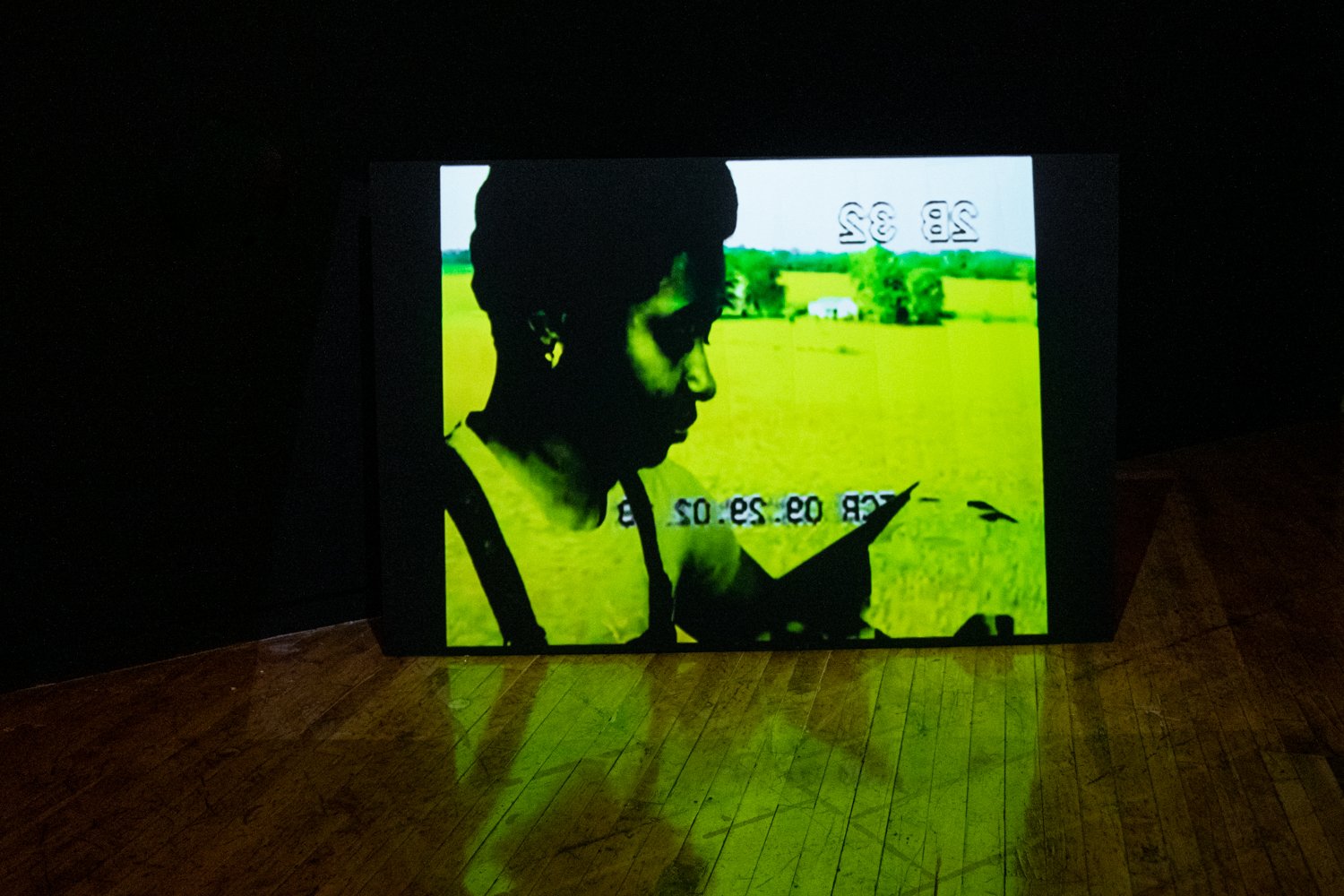
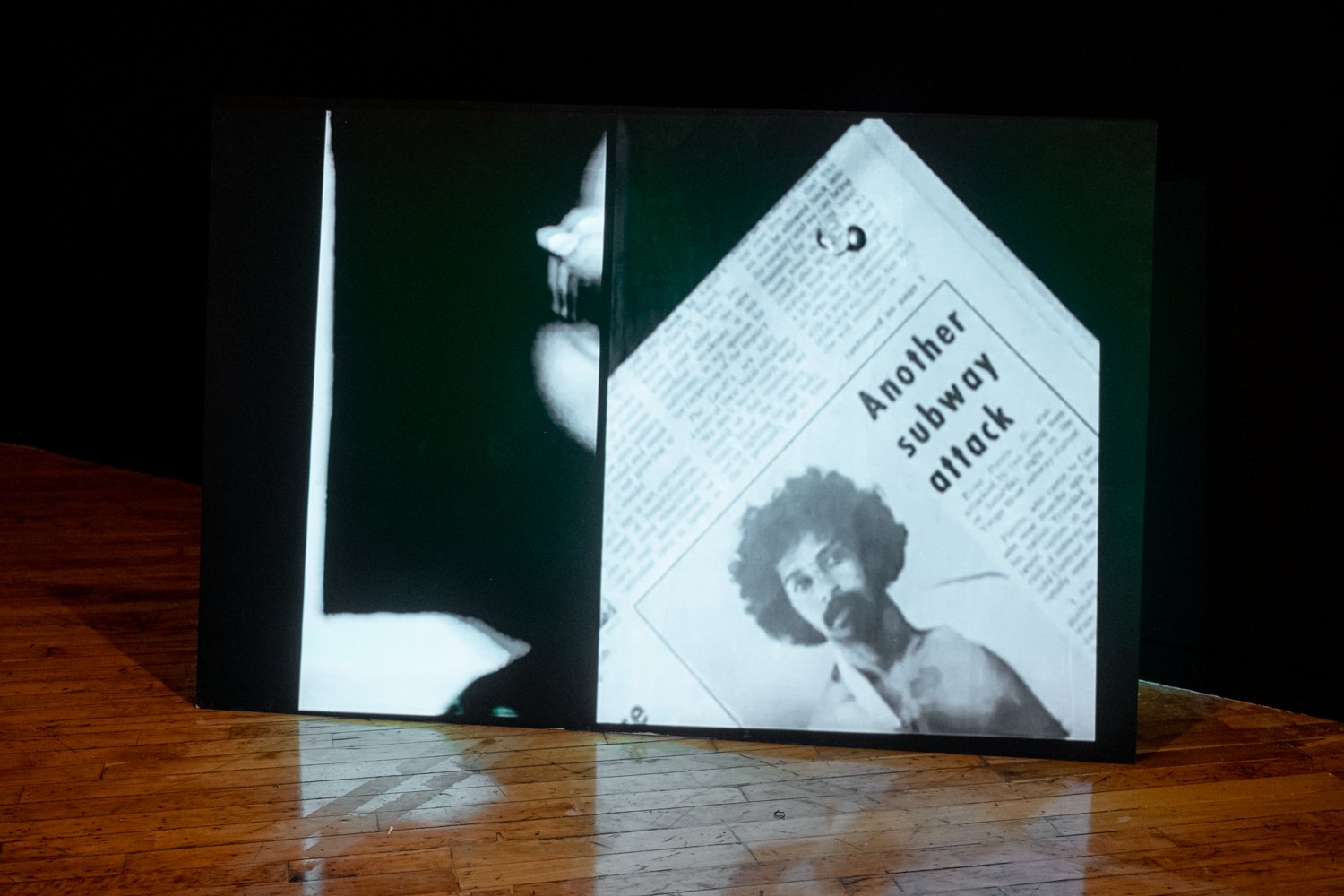

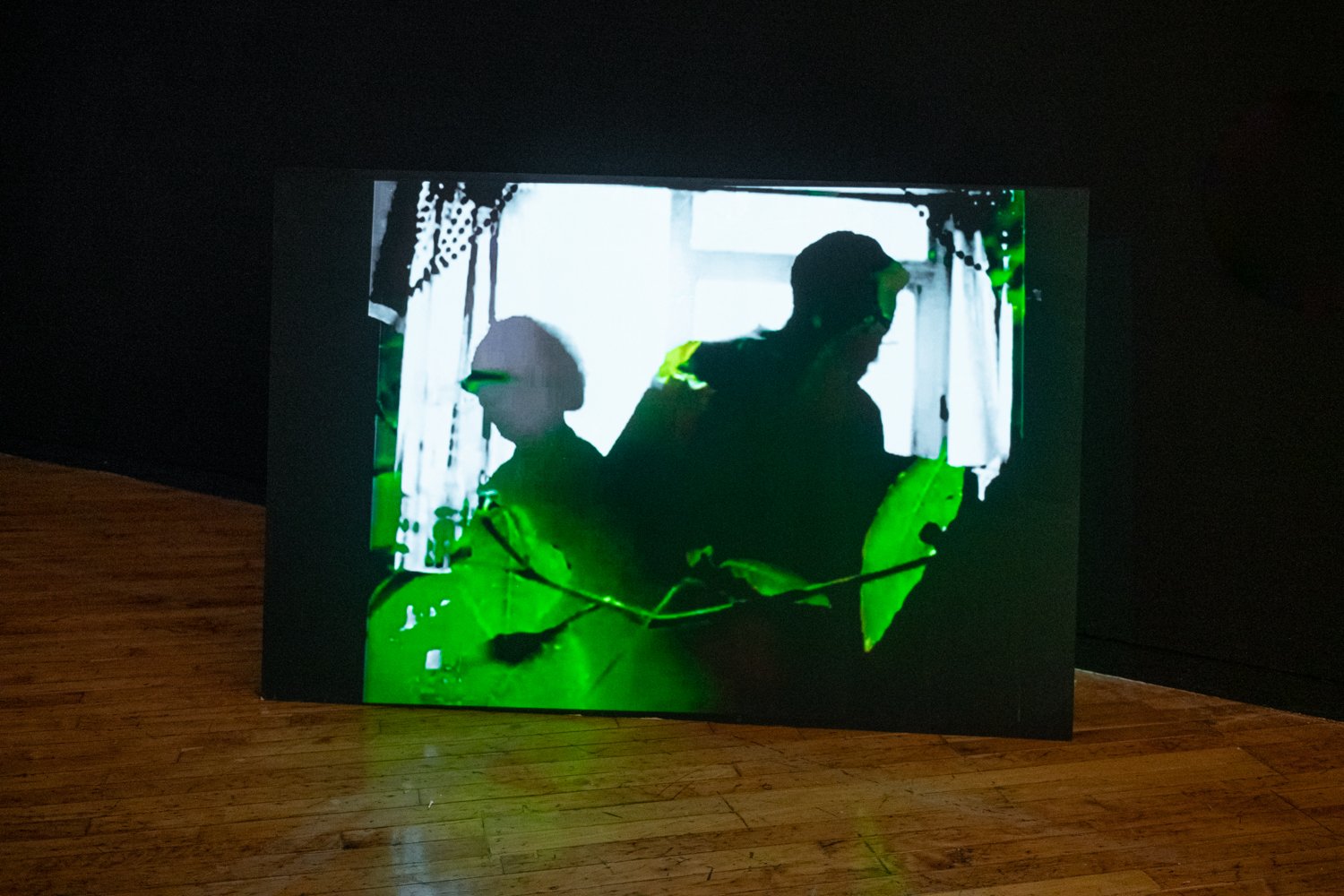
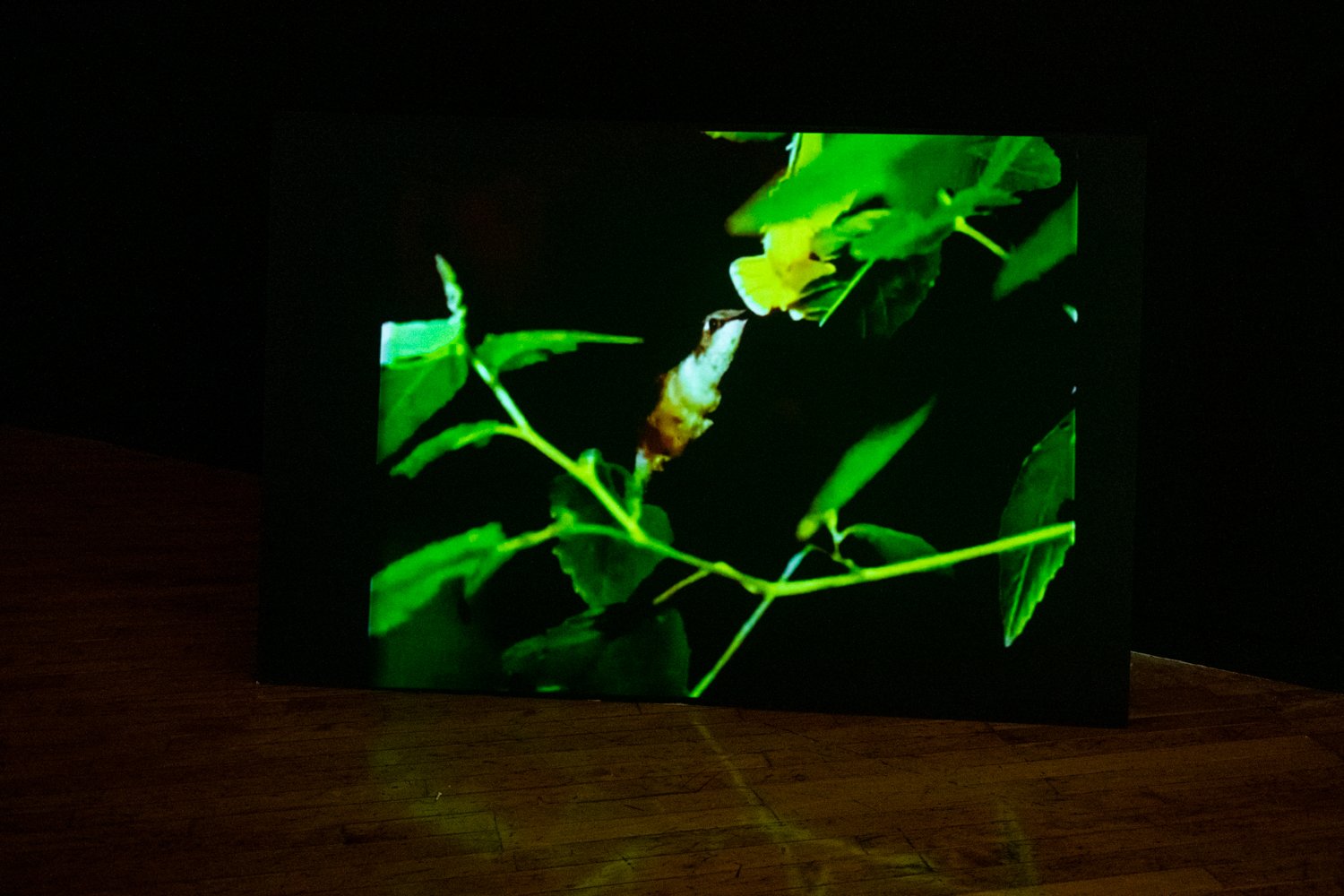
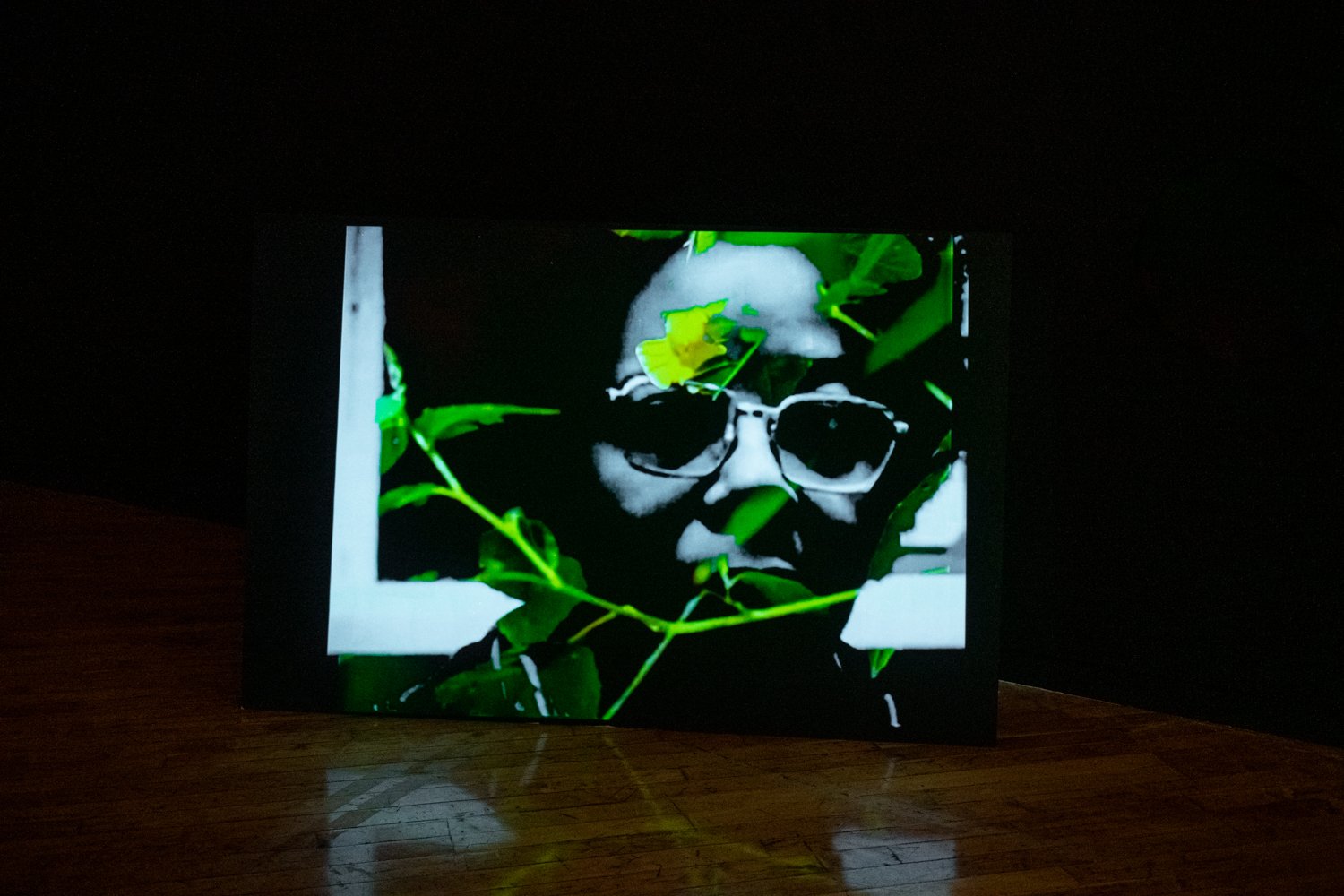
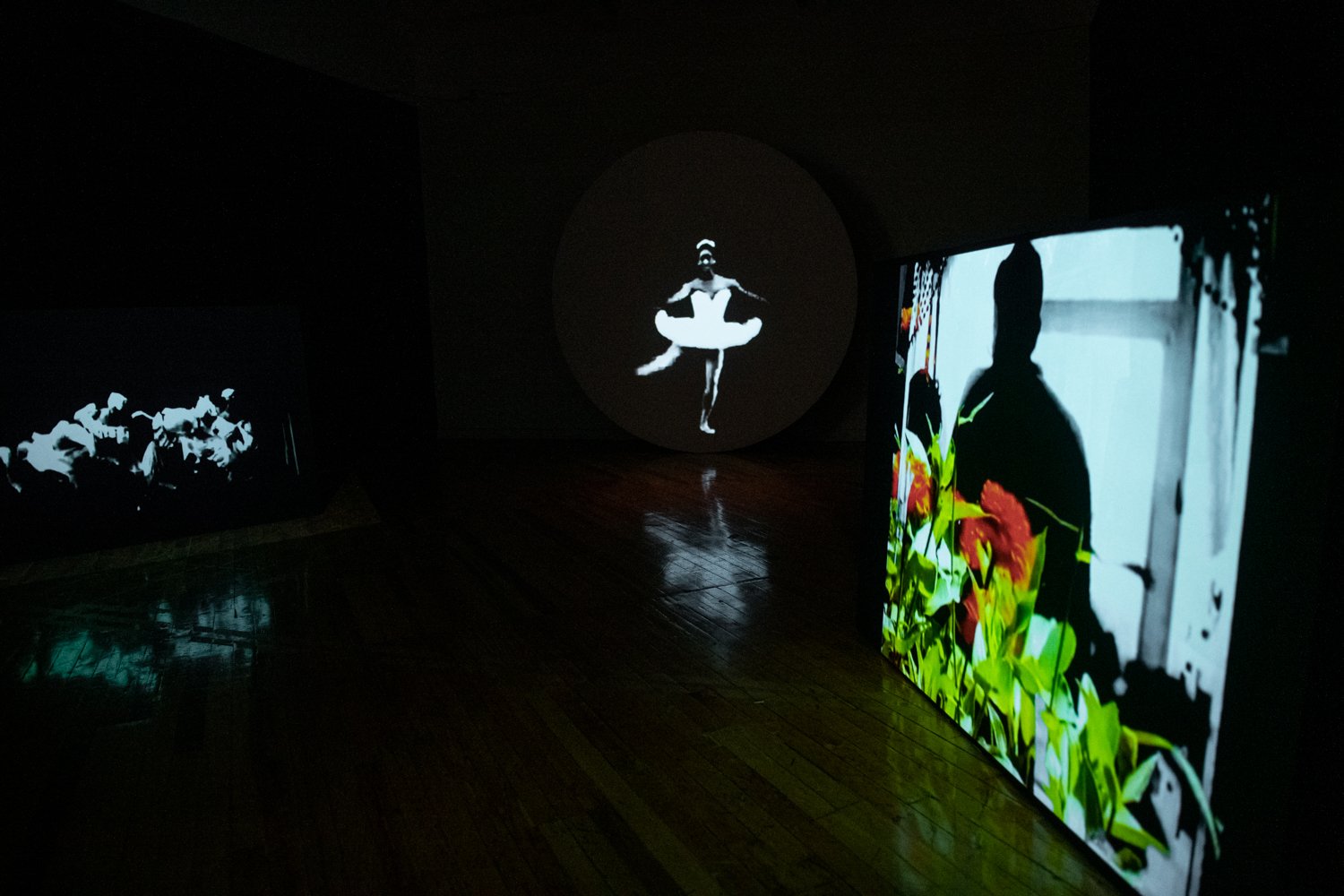
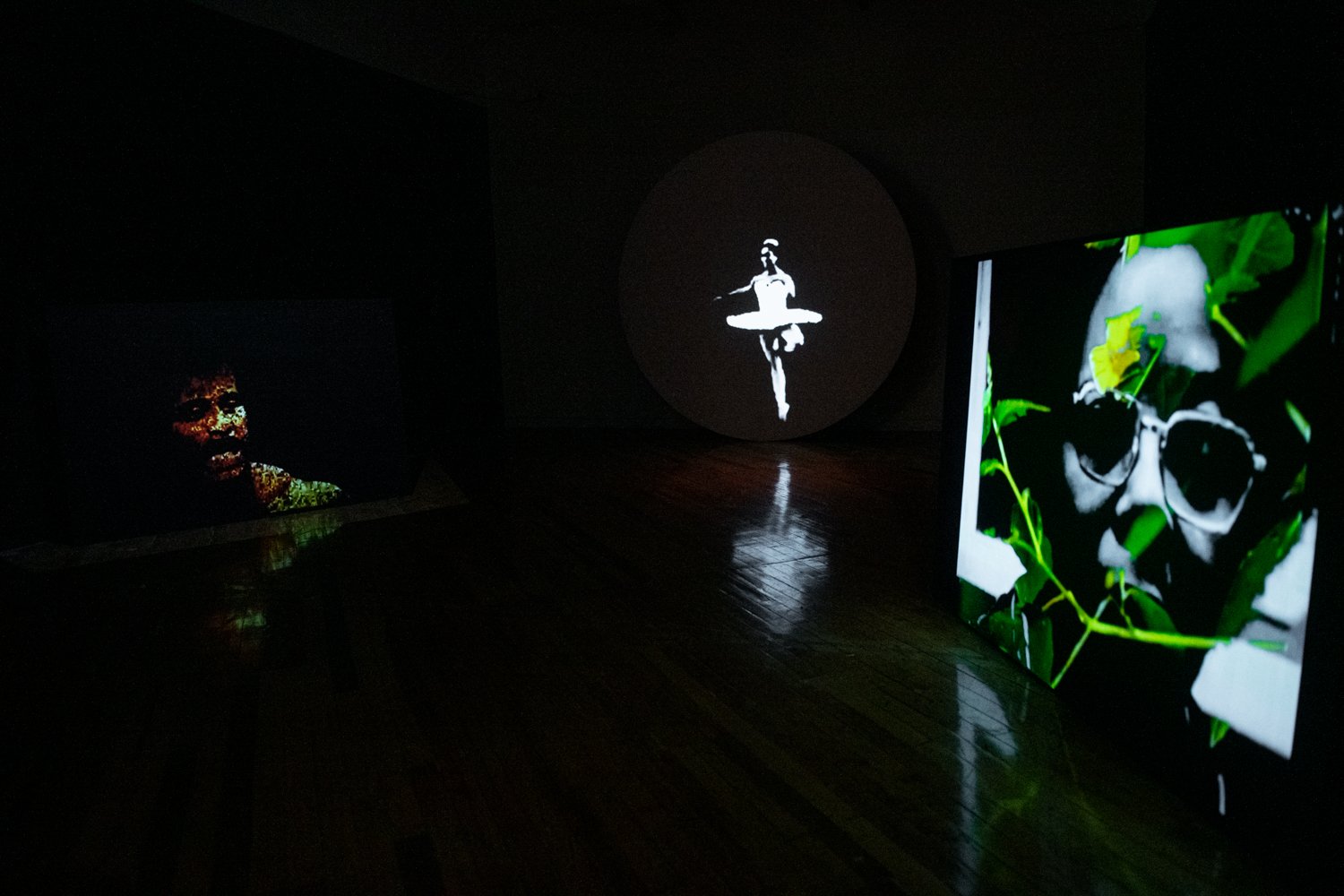
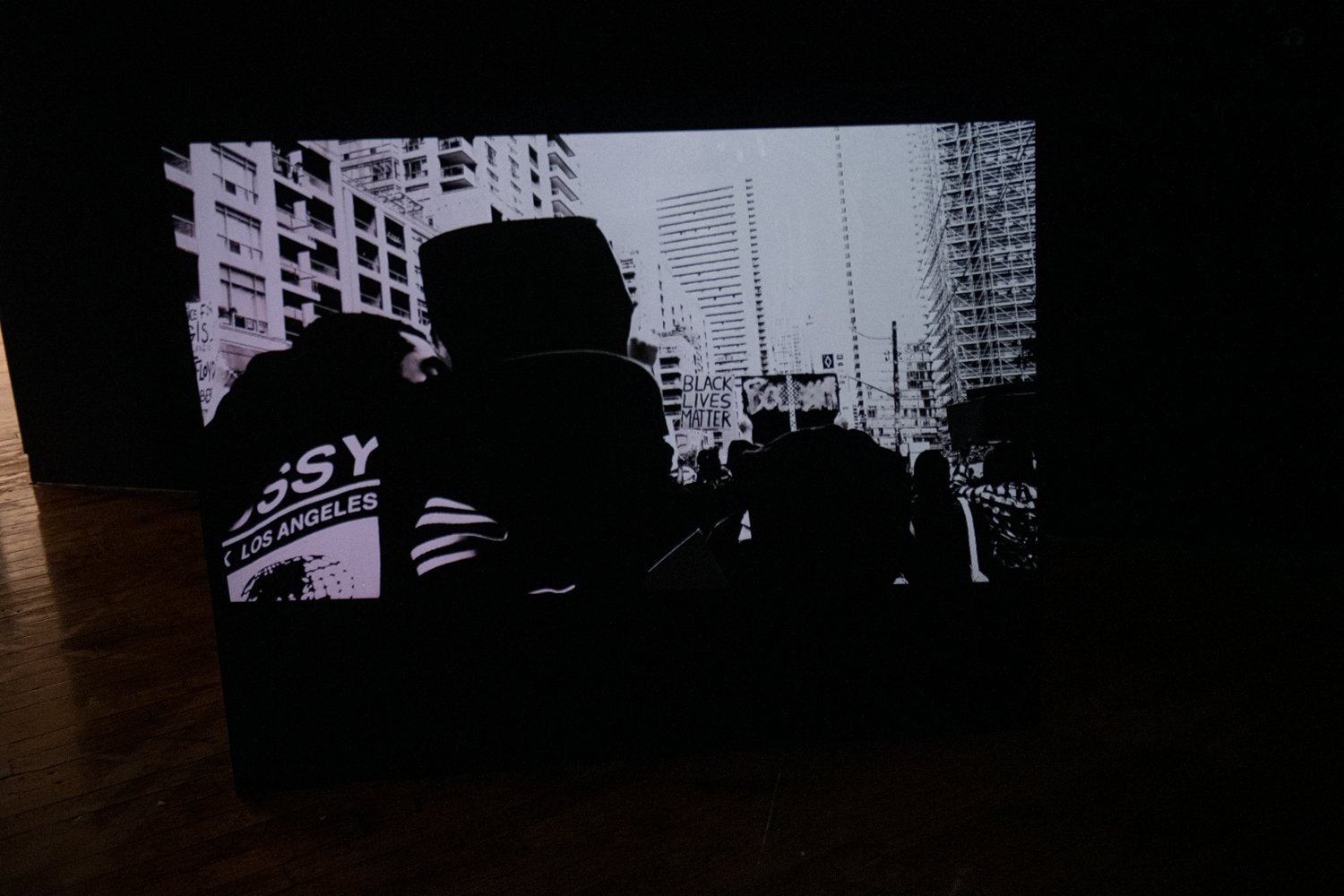
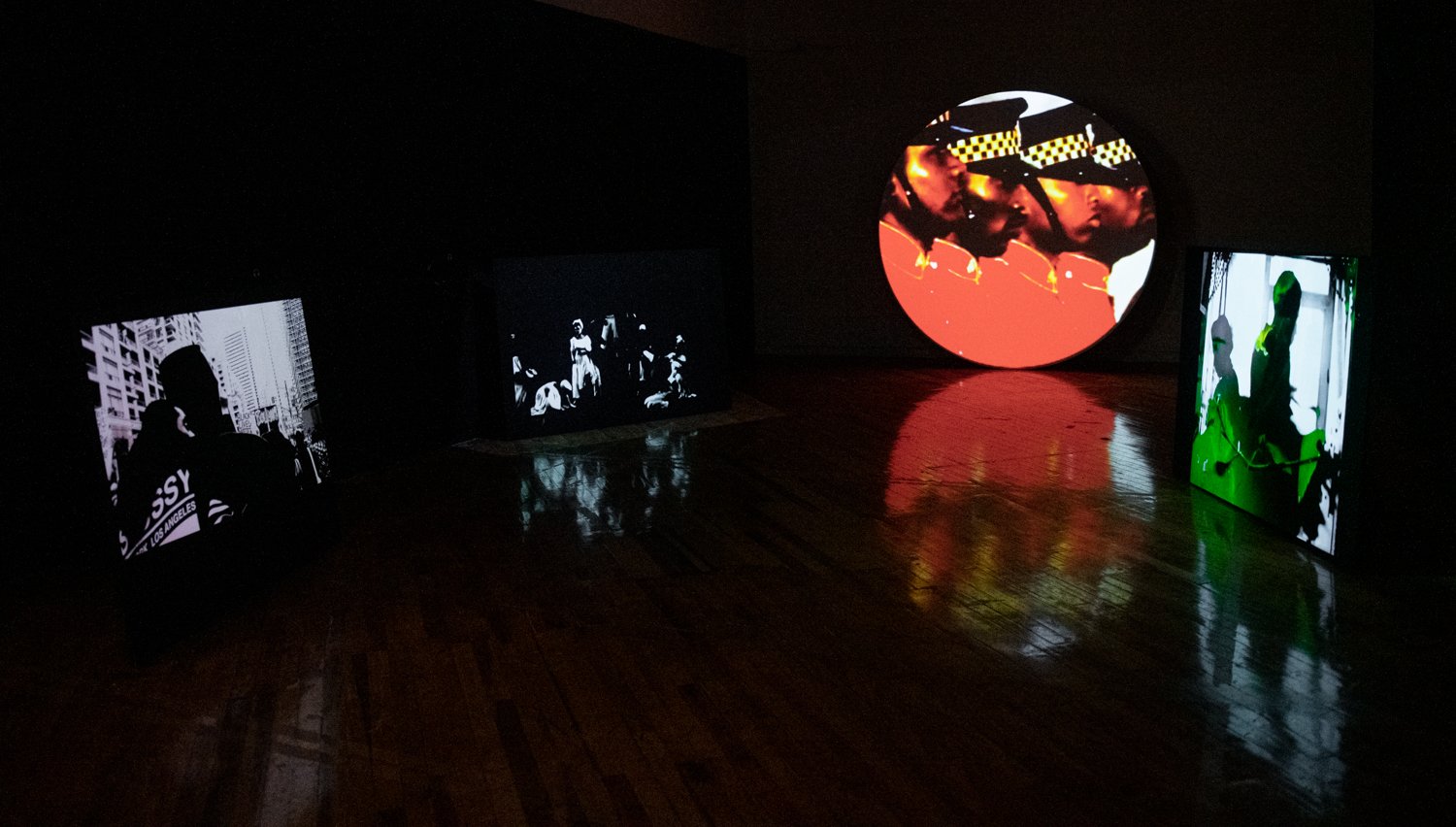
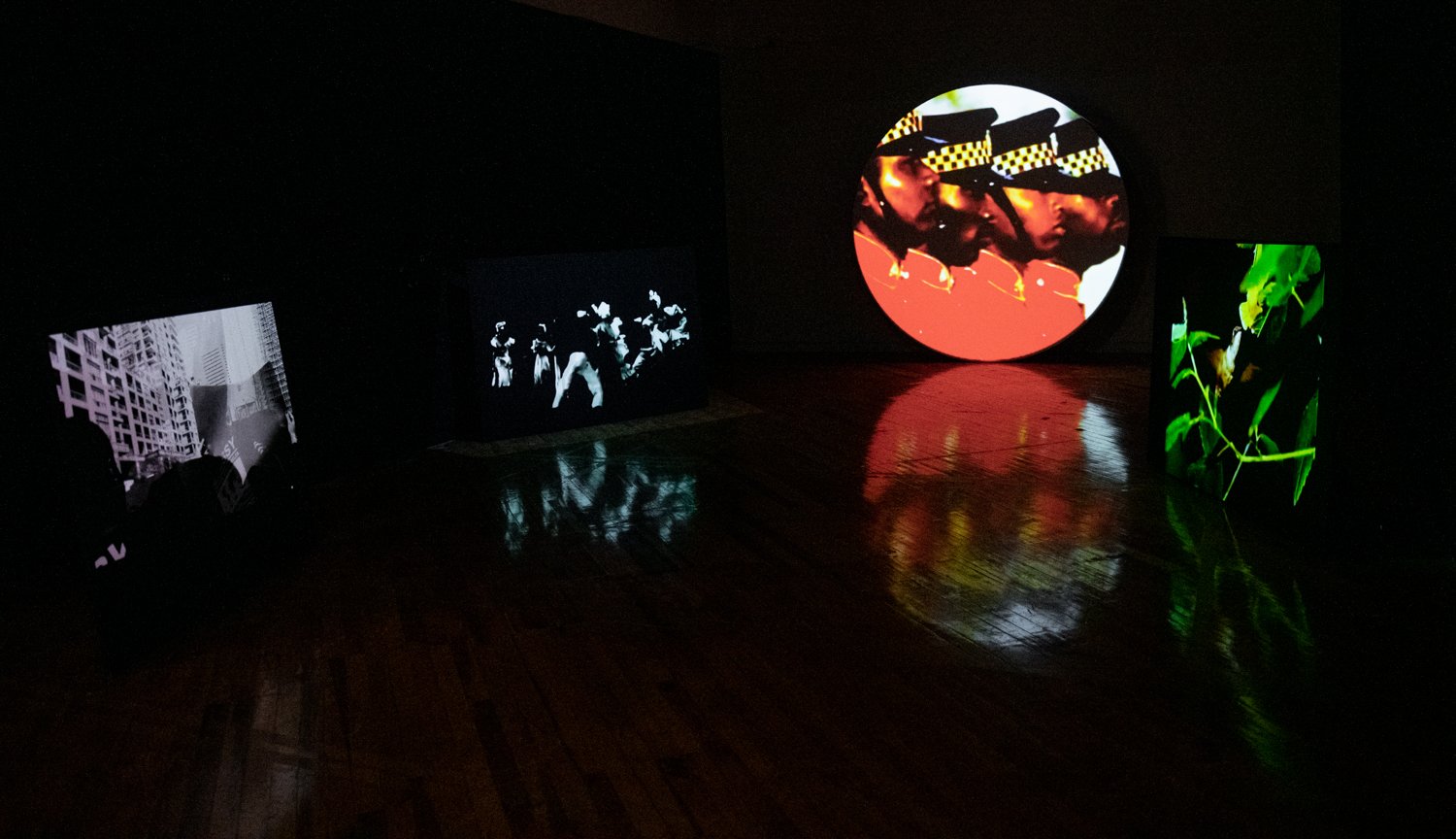
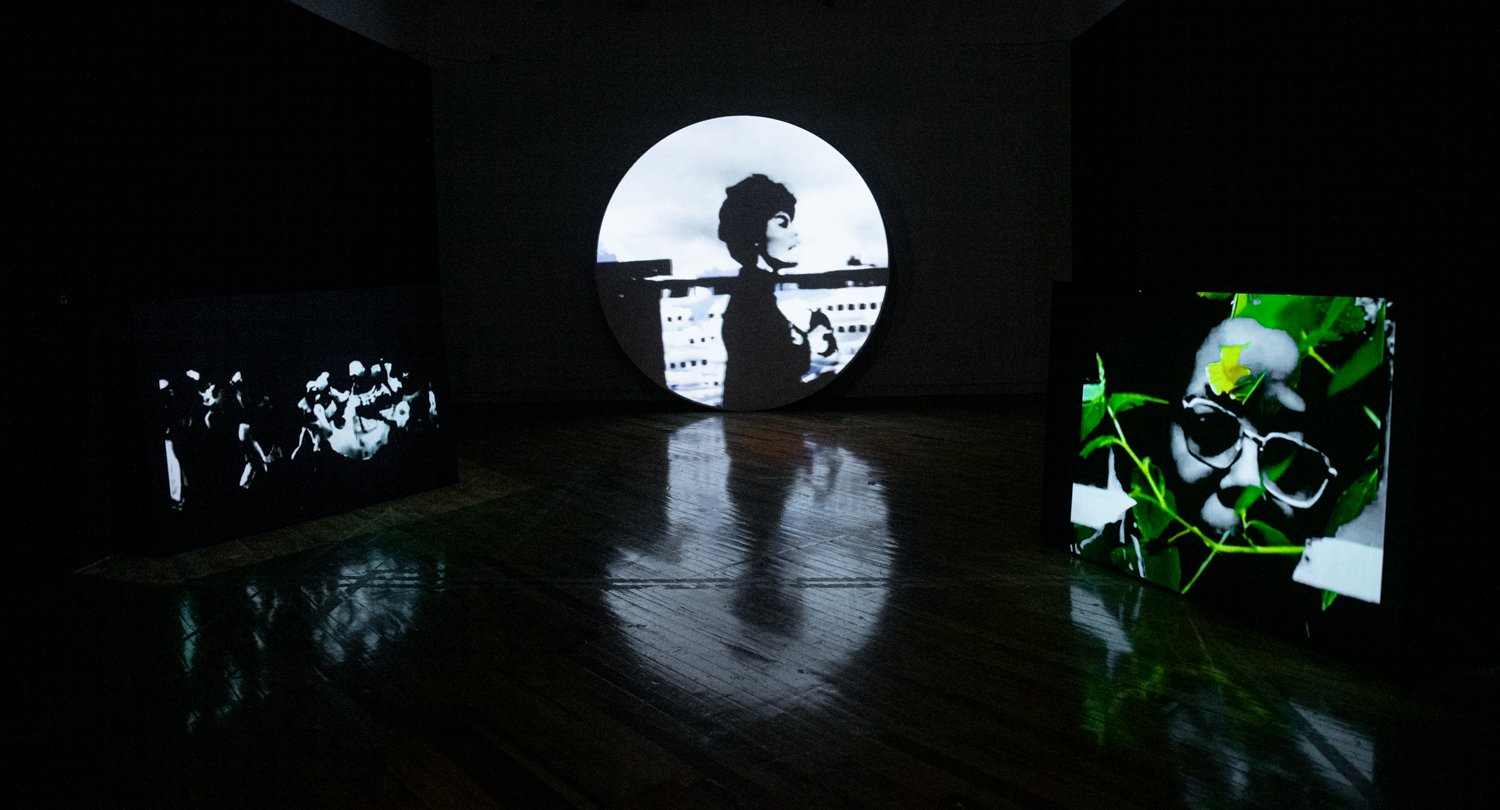
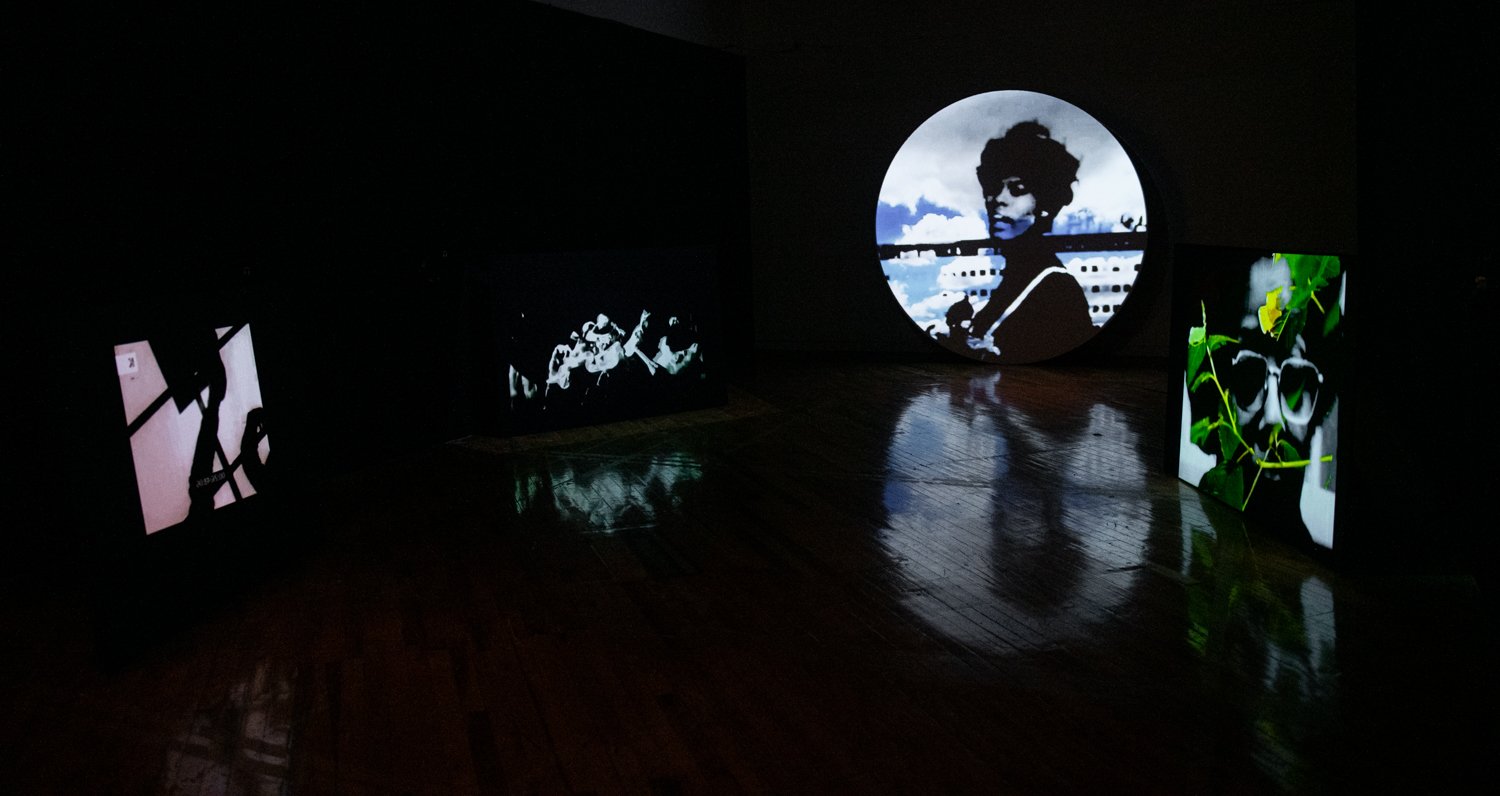
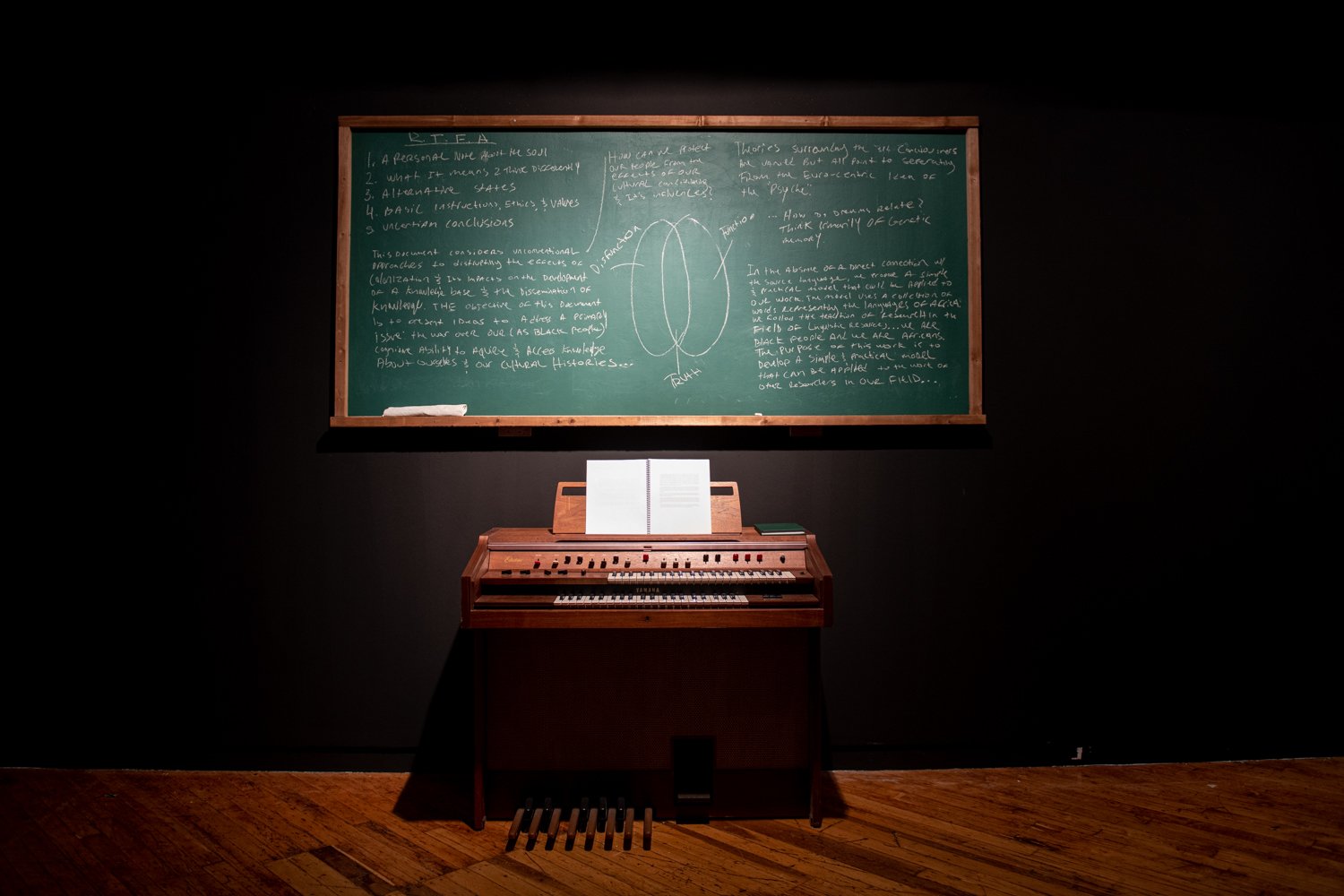
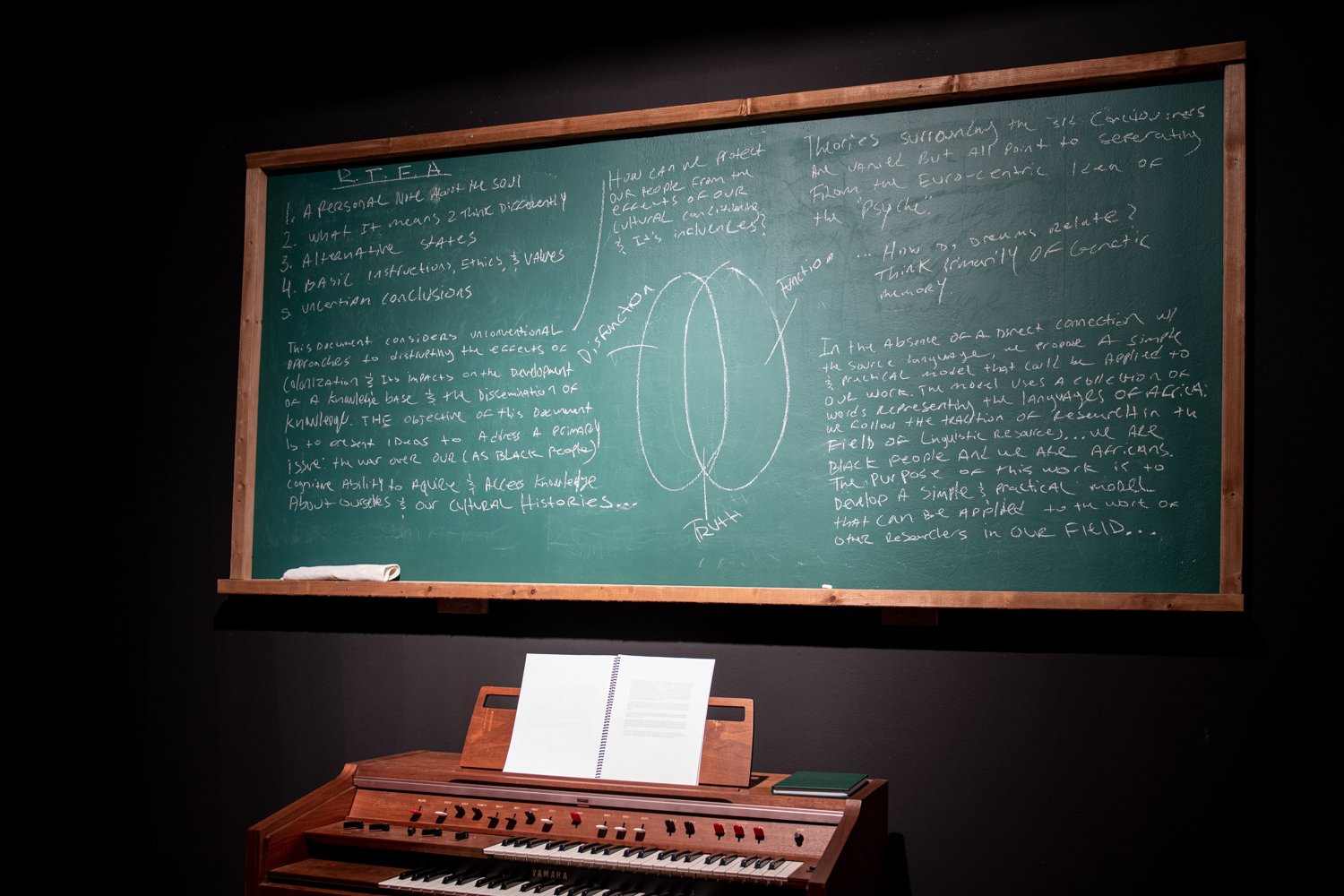
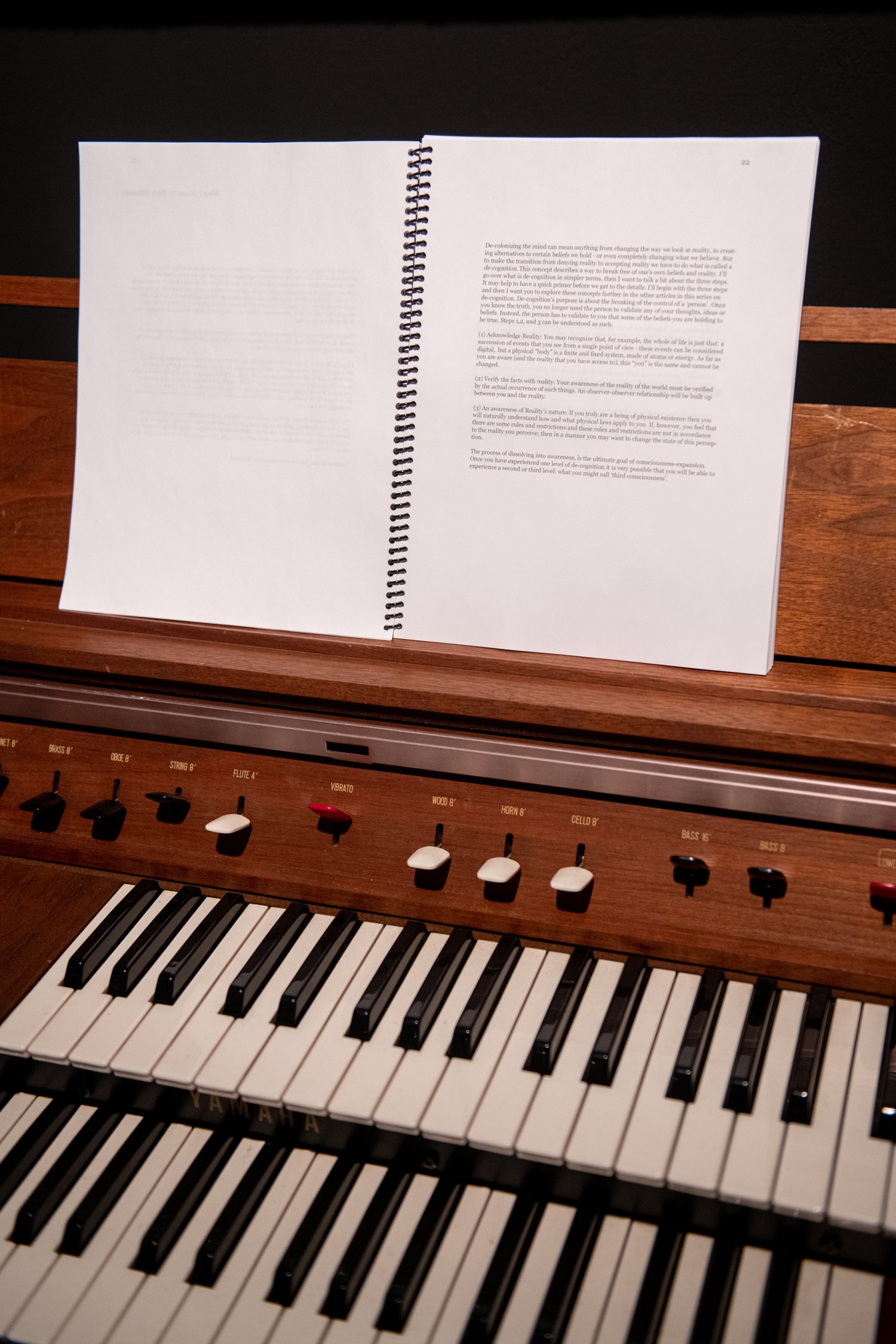
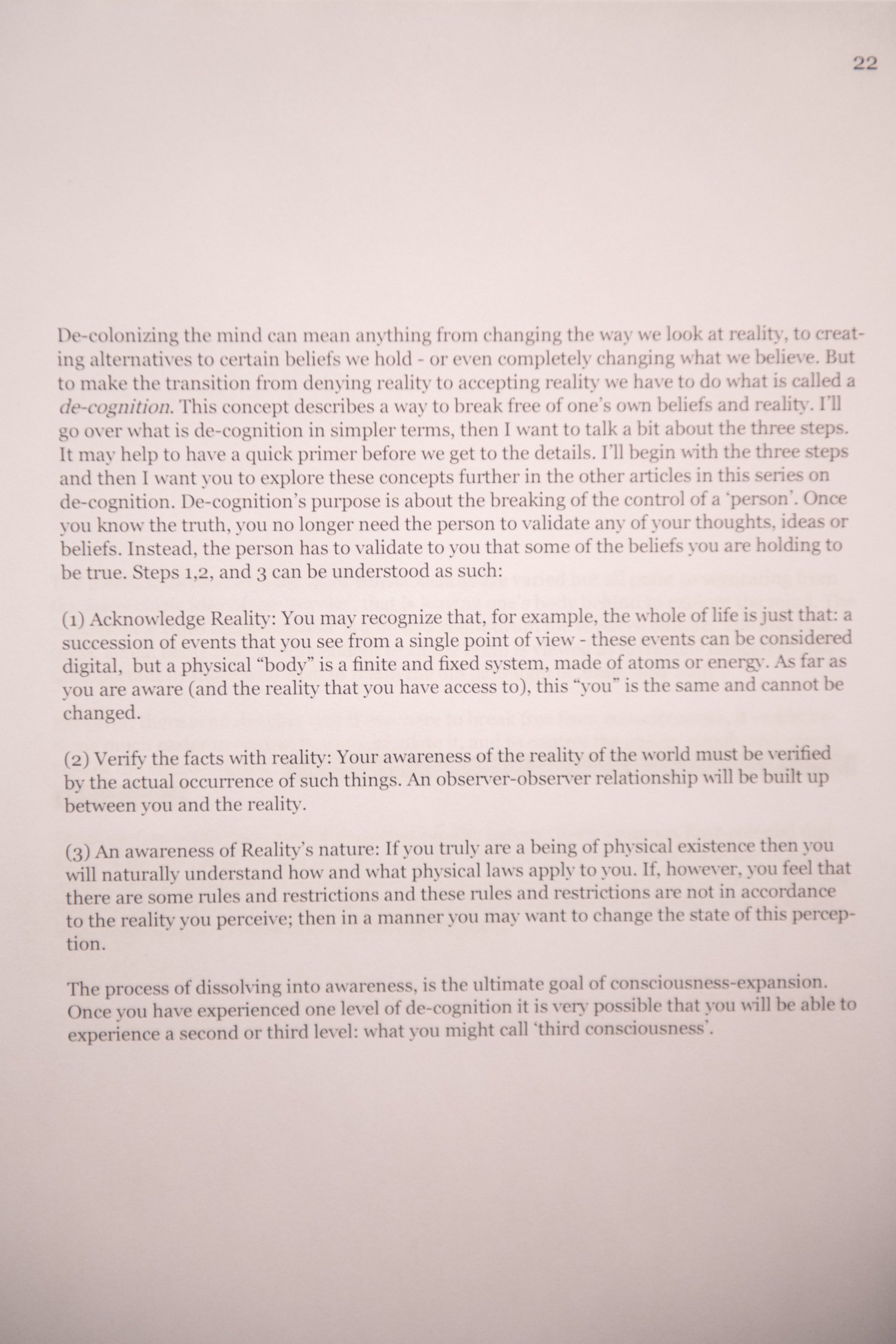
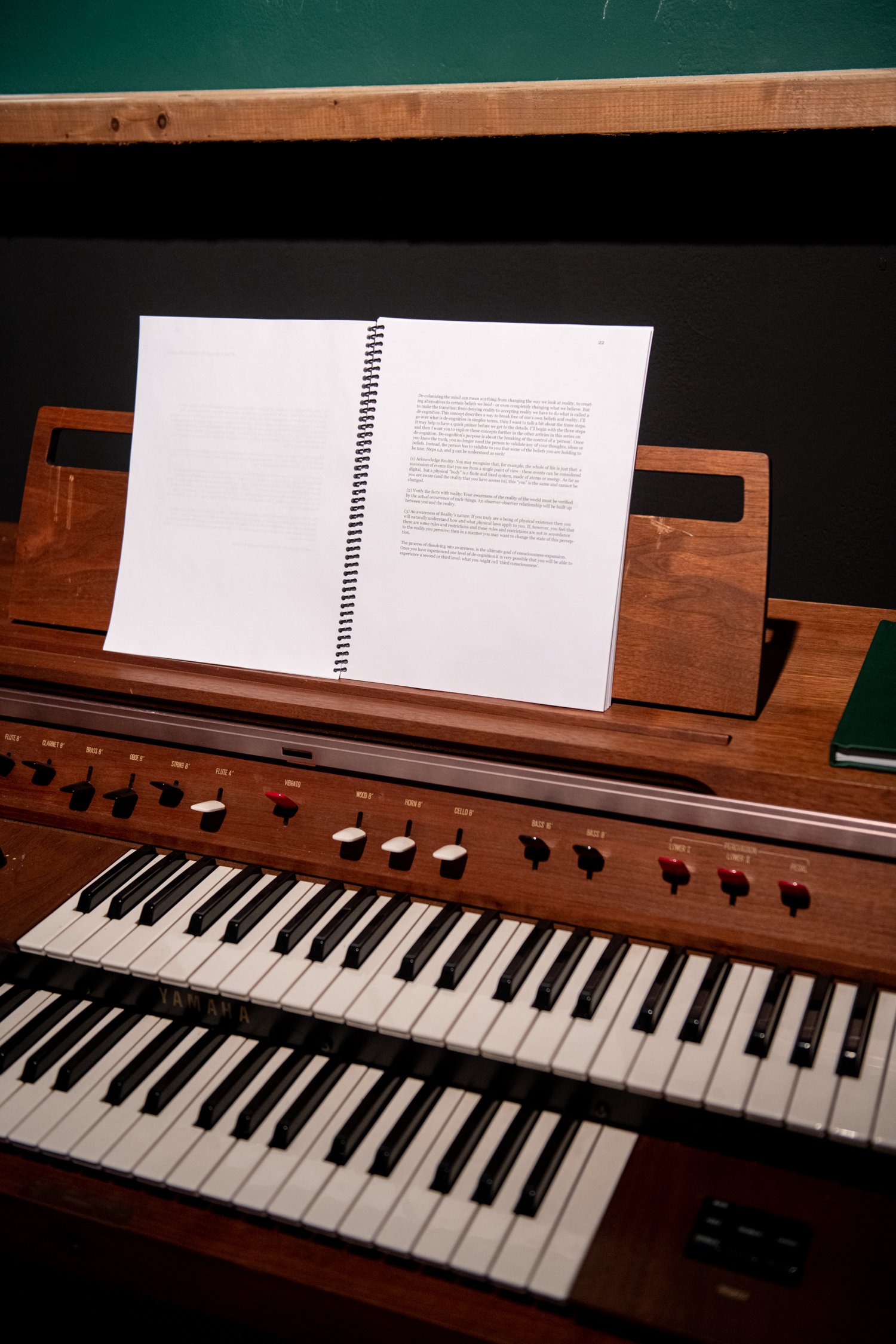
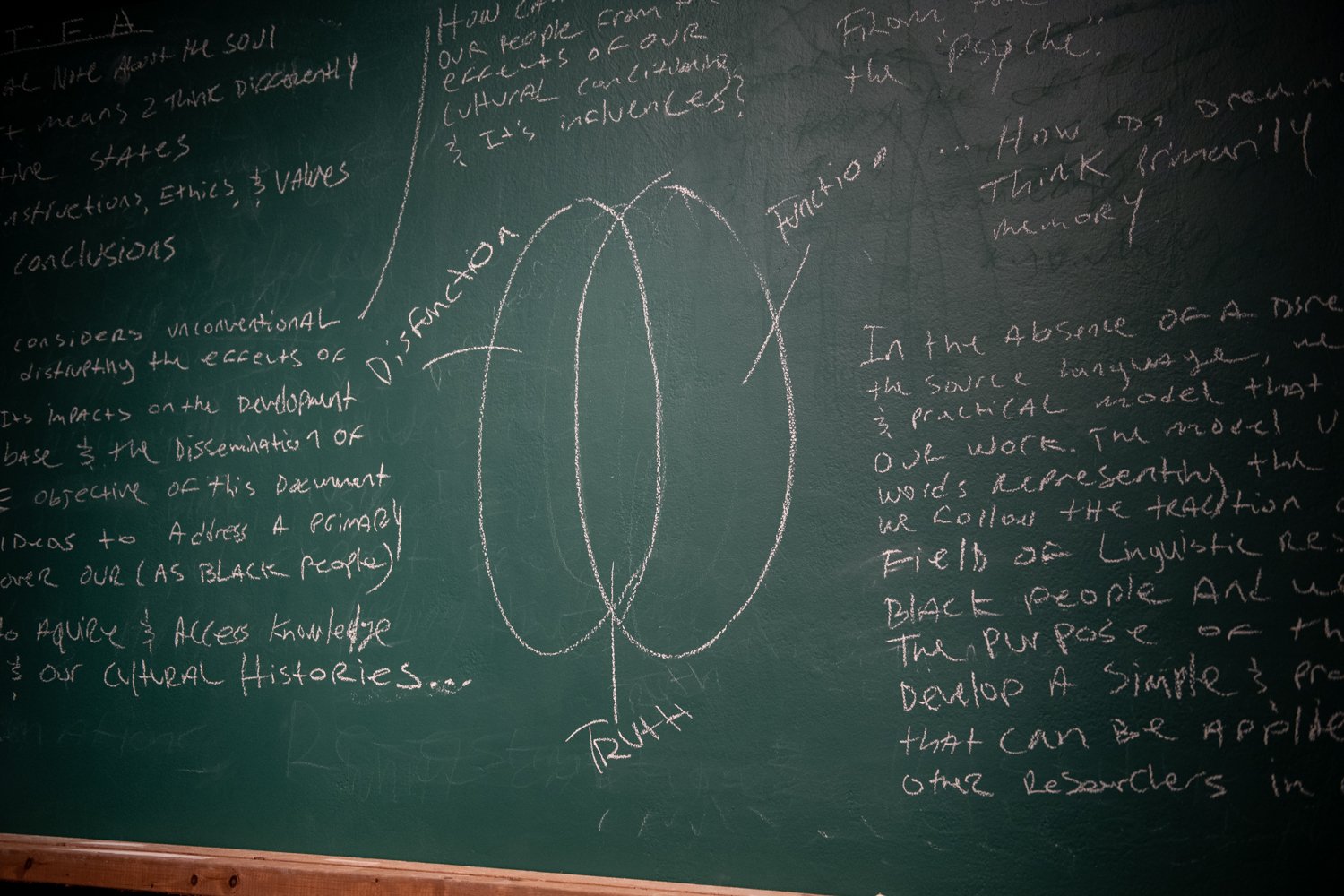
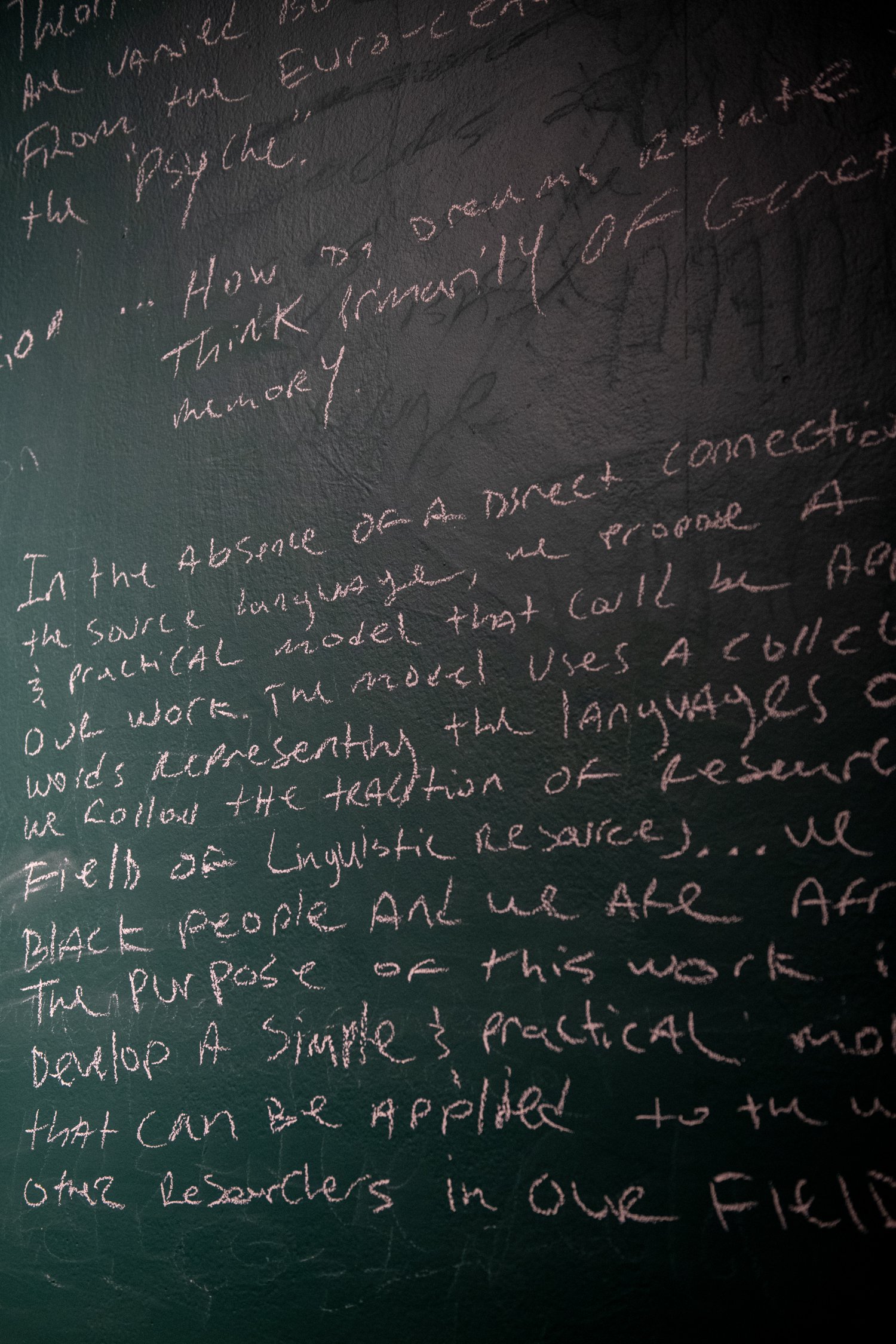
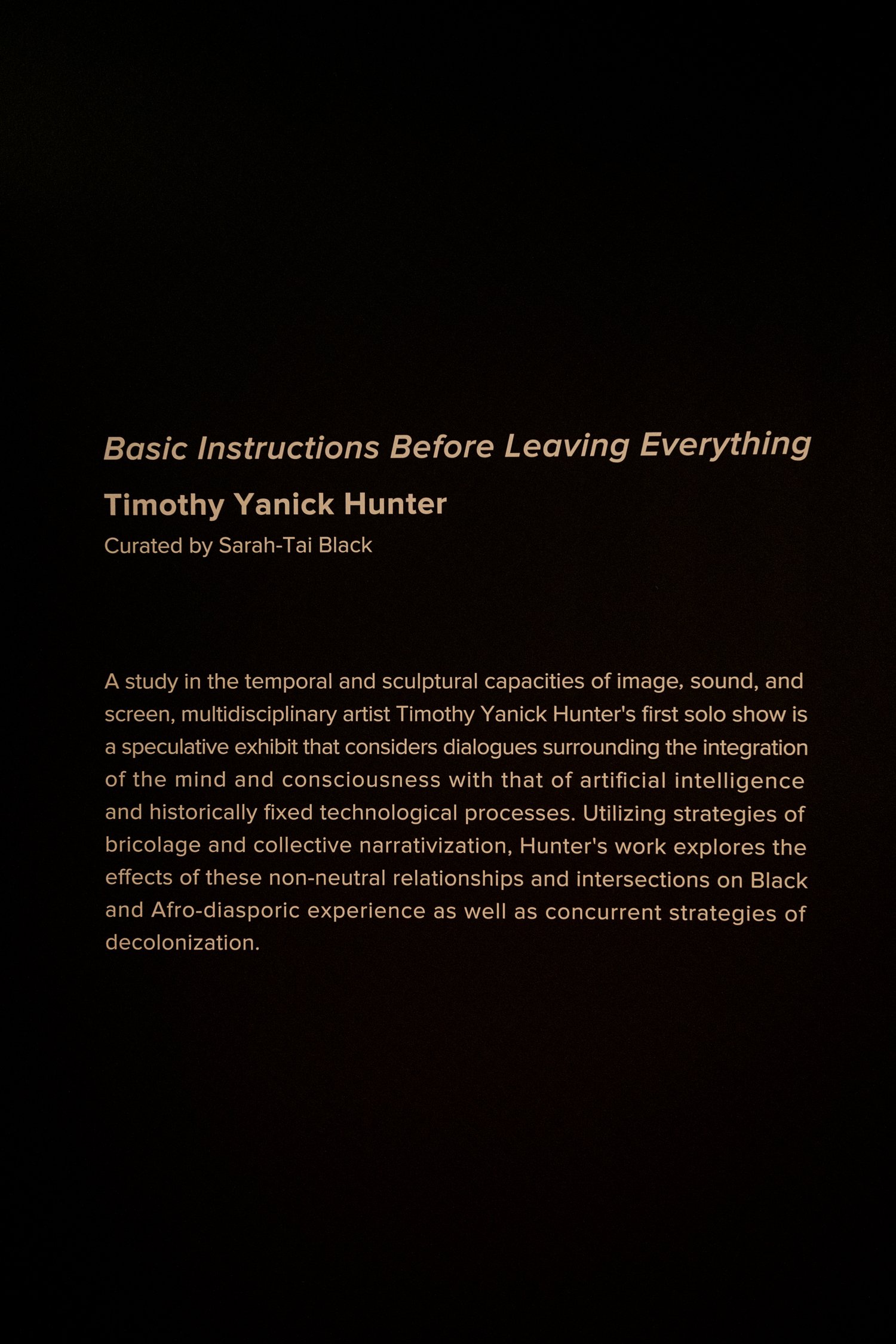
Basic Instructions Before Leaving Everything
Timothy Yanick Hunter
A Space Gallery
Toronto, ON
May 17 – June 18, 2022
A study in the temporal and sculptural capacities of image, sound, and screen, multidisciplinary artist Timothy Yanick Hunter’s first solo show is a speculative exhibit that considers dialogues surrounding the integration of the mind and consciousness with that of artificial intelligence and historically fixed technological processes. Utilizing strategies of bricolage and collective narrativization, Hunter’s work explores the effects of these non-neutral relationships and intersections on Black and Afro-diasporic experience as well as concurrent strategies of decolonization.
-
Timothy Yanick Hunter is a multidisciplinary artist and curator from Toronto, Ontario. Graduating from the University of Toronto in 2015 with a degree in Art History and English, his practice explores varying concepts surrounding digital security, identity (both digital and lived), as well as narratives of hierarchical power structures and how these ideas intersect with notions of Blackness and the greater African diaspora. His approach alternates between exploratory and didactic. At times Hunter defines his process as experiments in visual language, where the mediums represent a range of languages and individual works express different stories. His work ranges from painting, sculpture, video, performance, and installation.
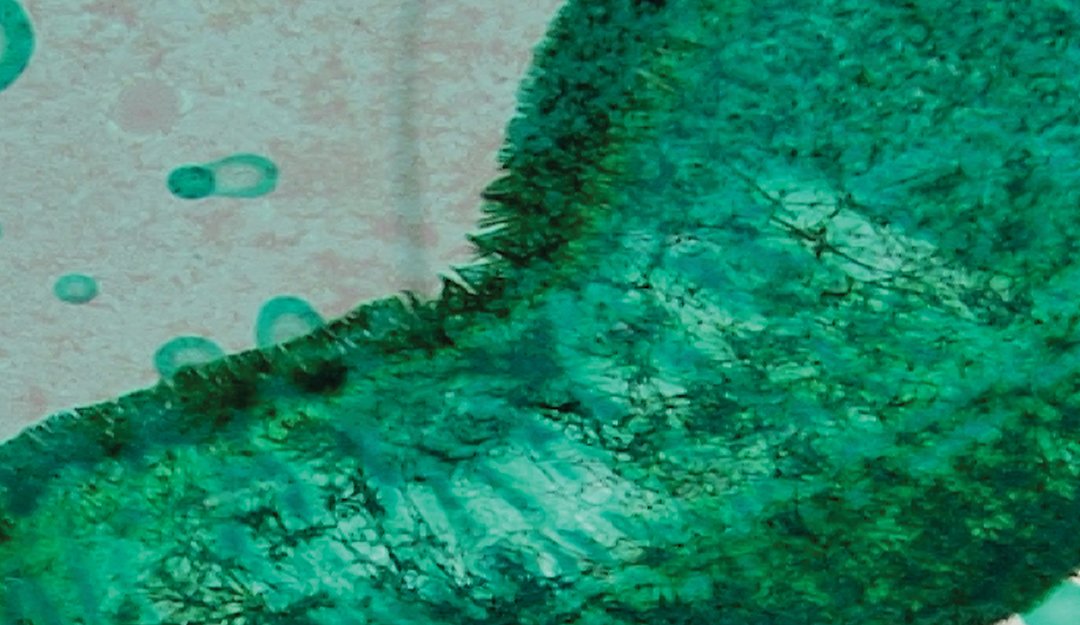
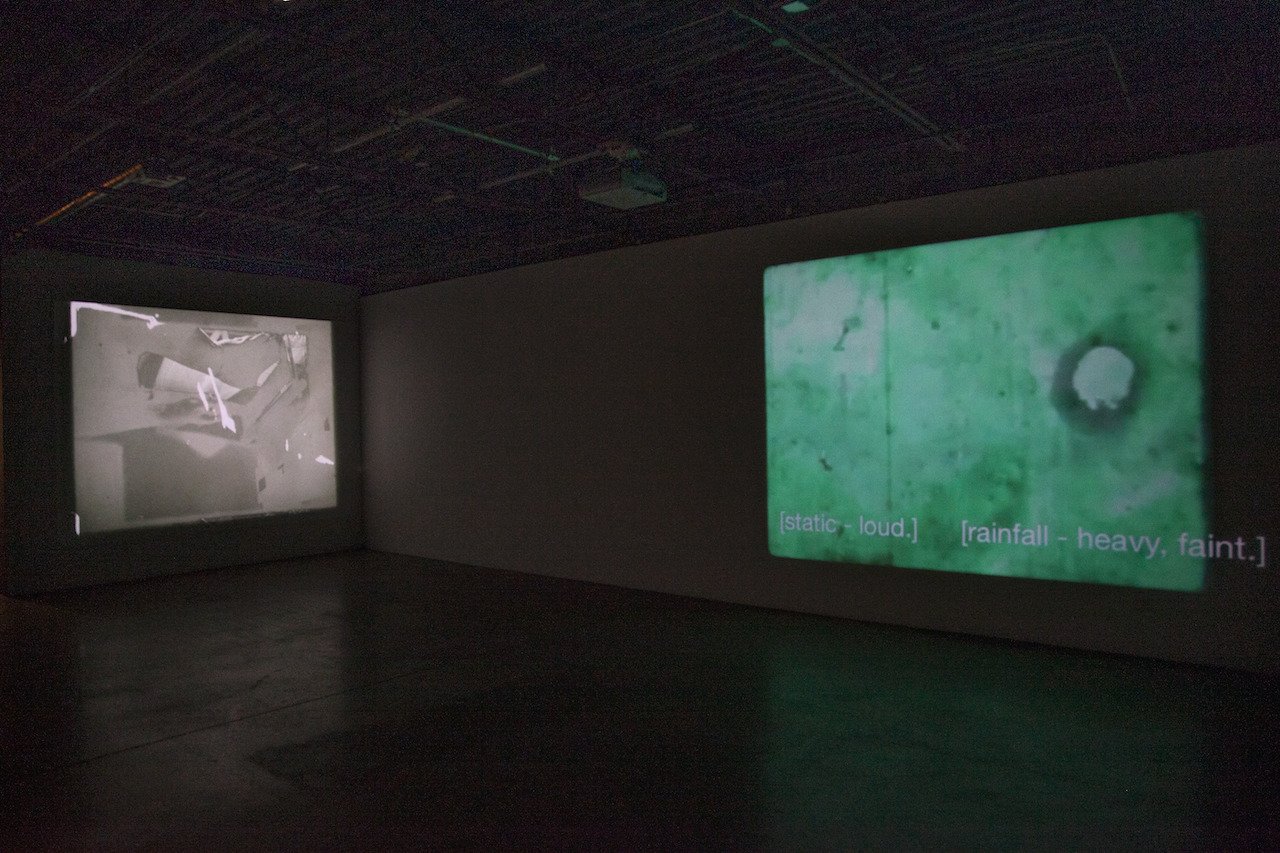
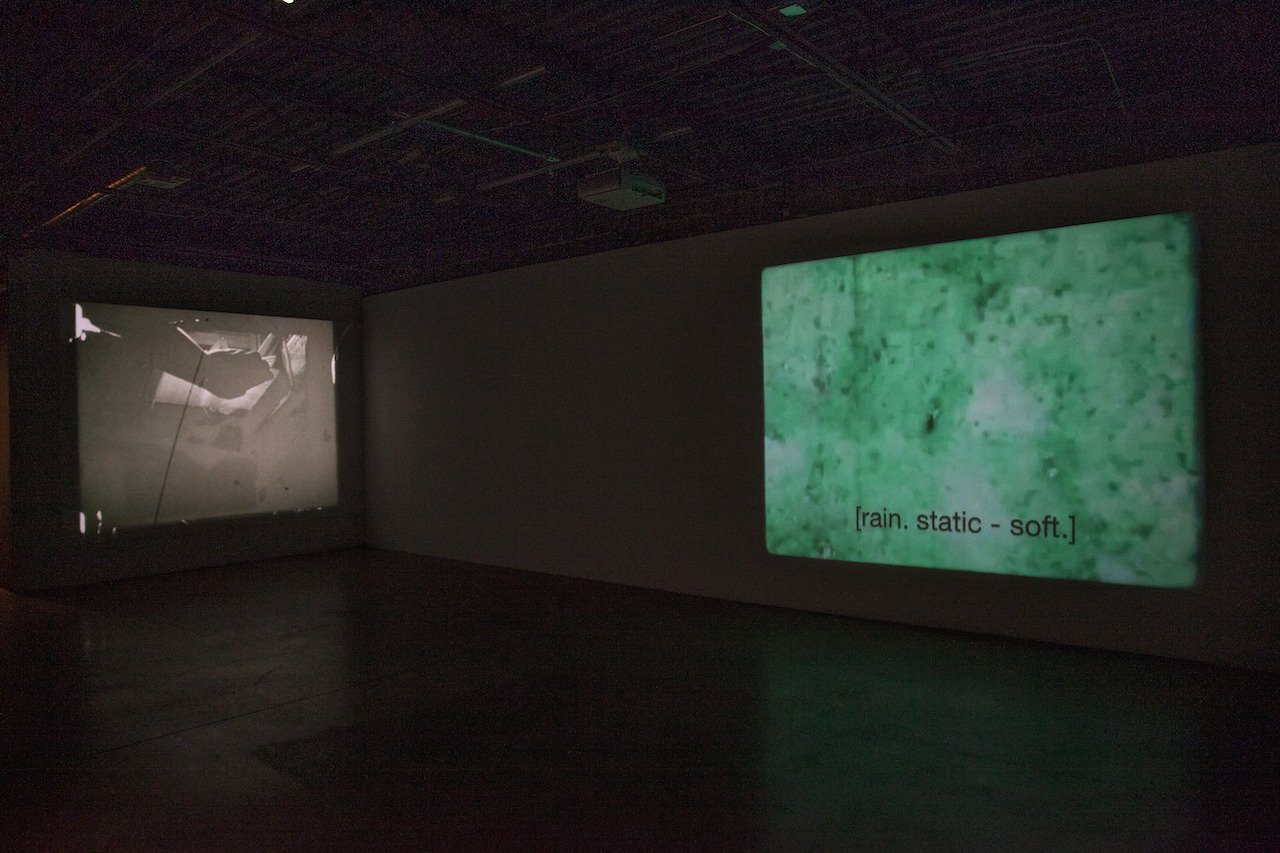
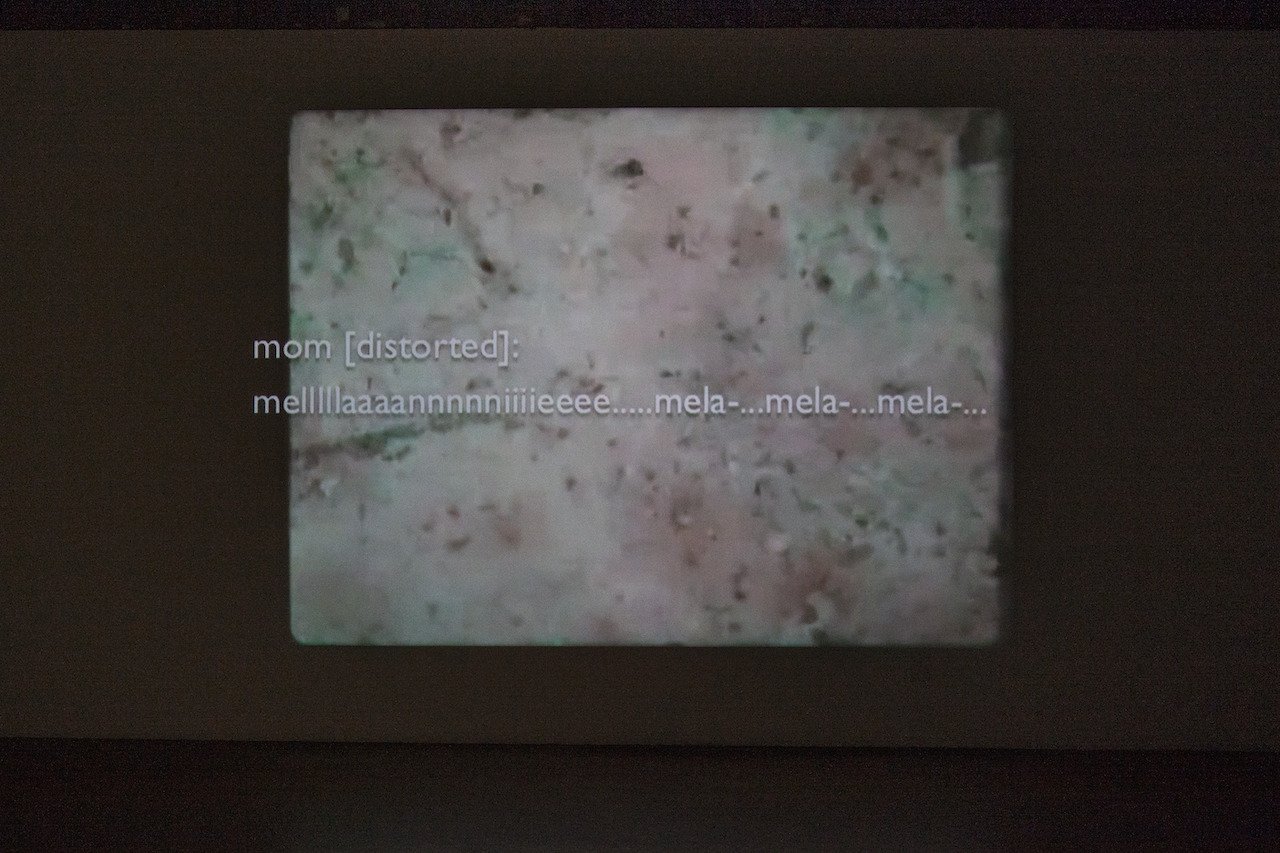
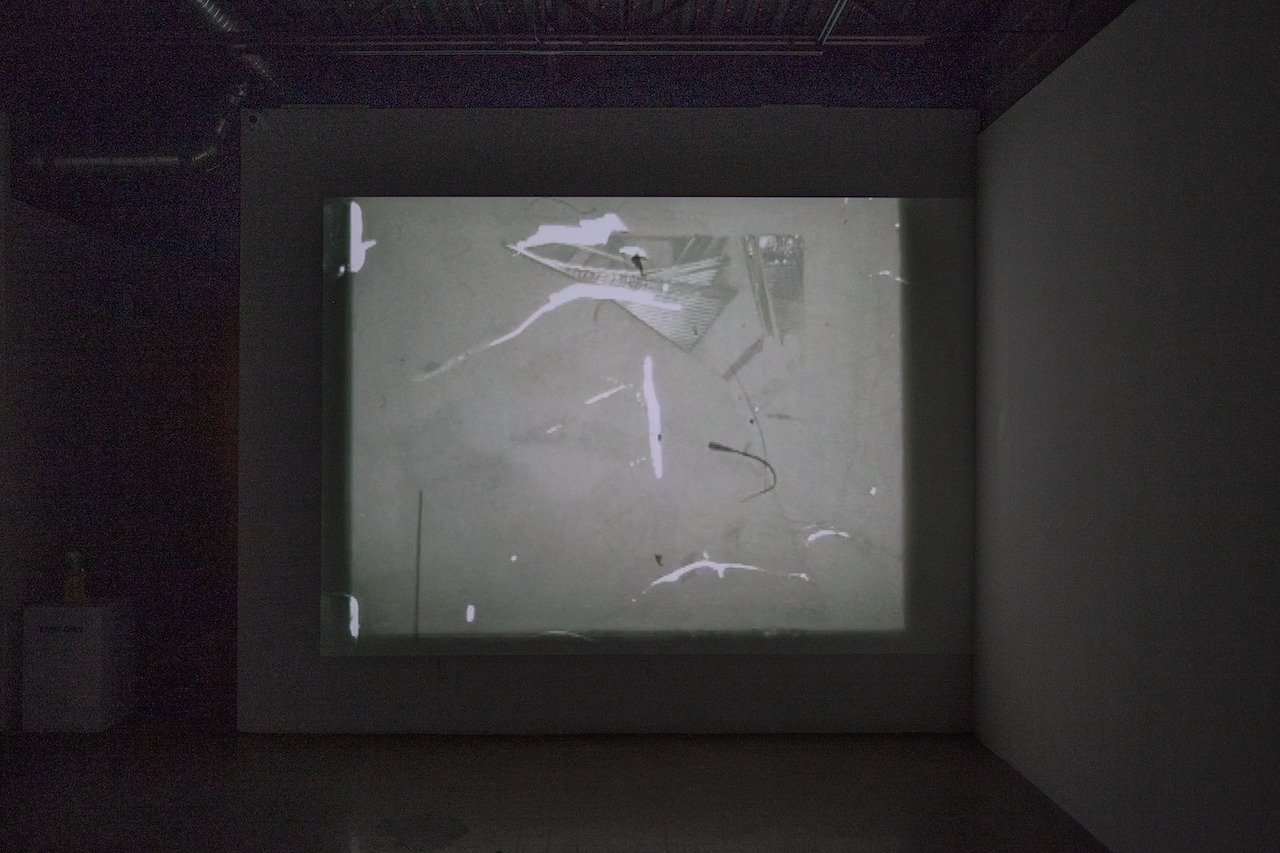
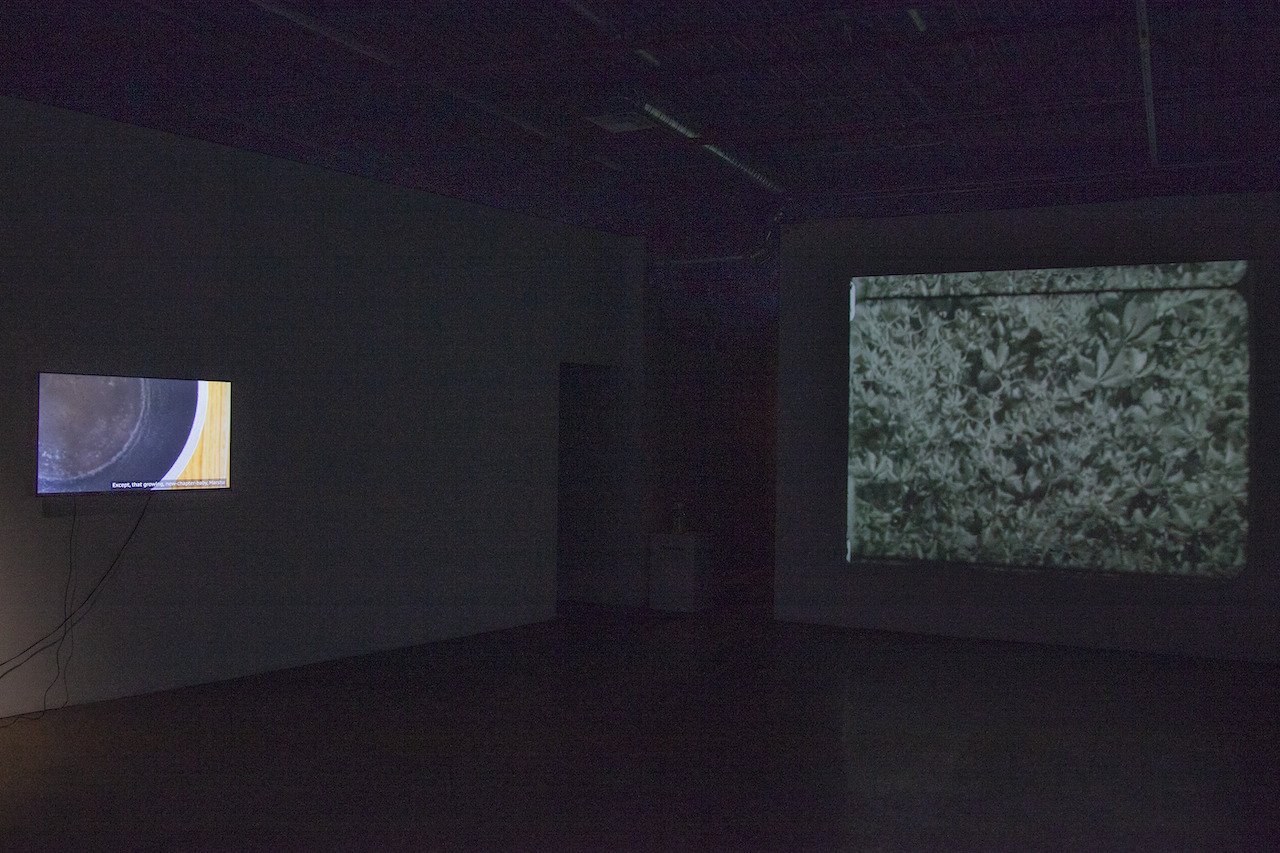
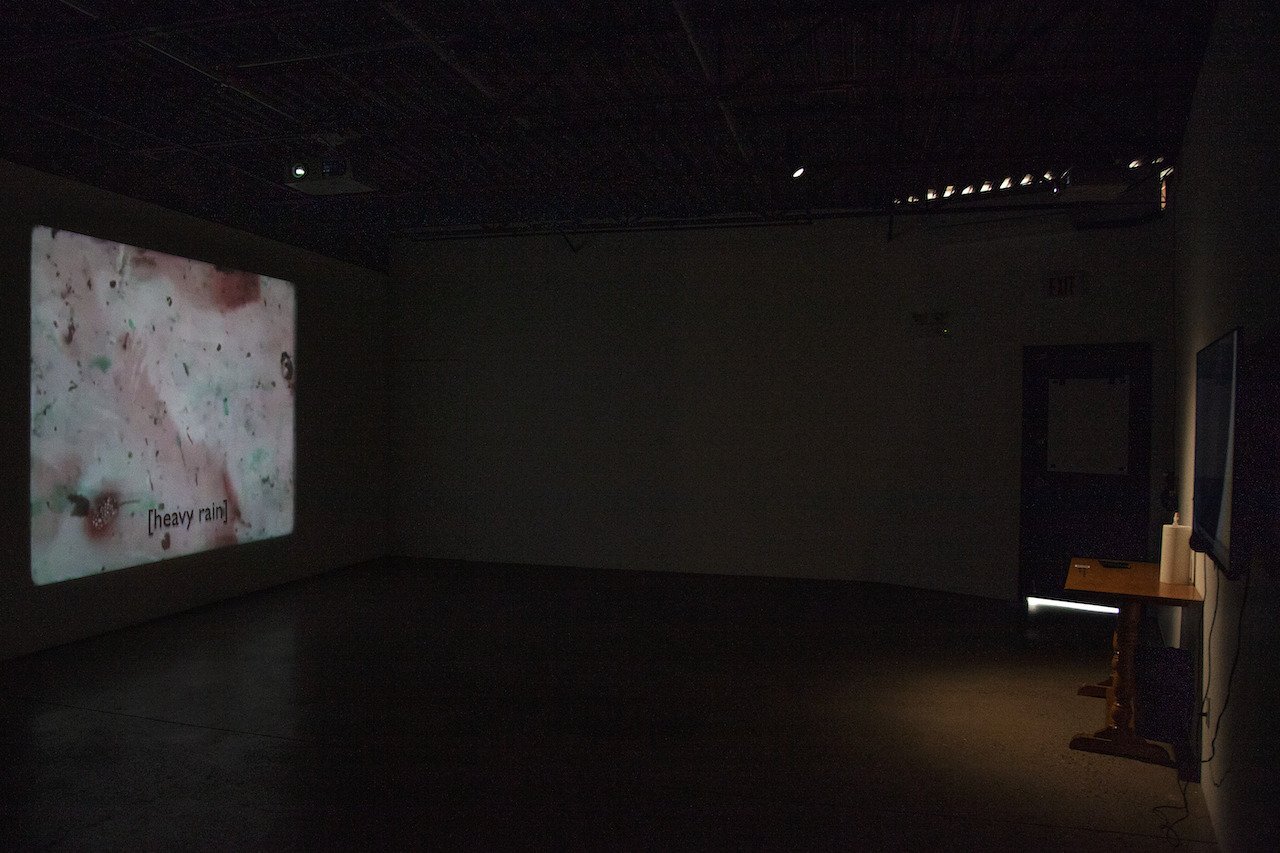
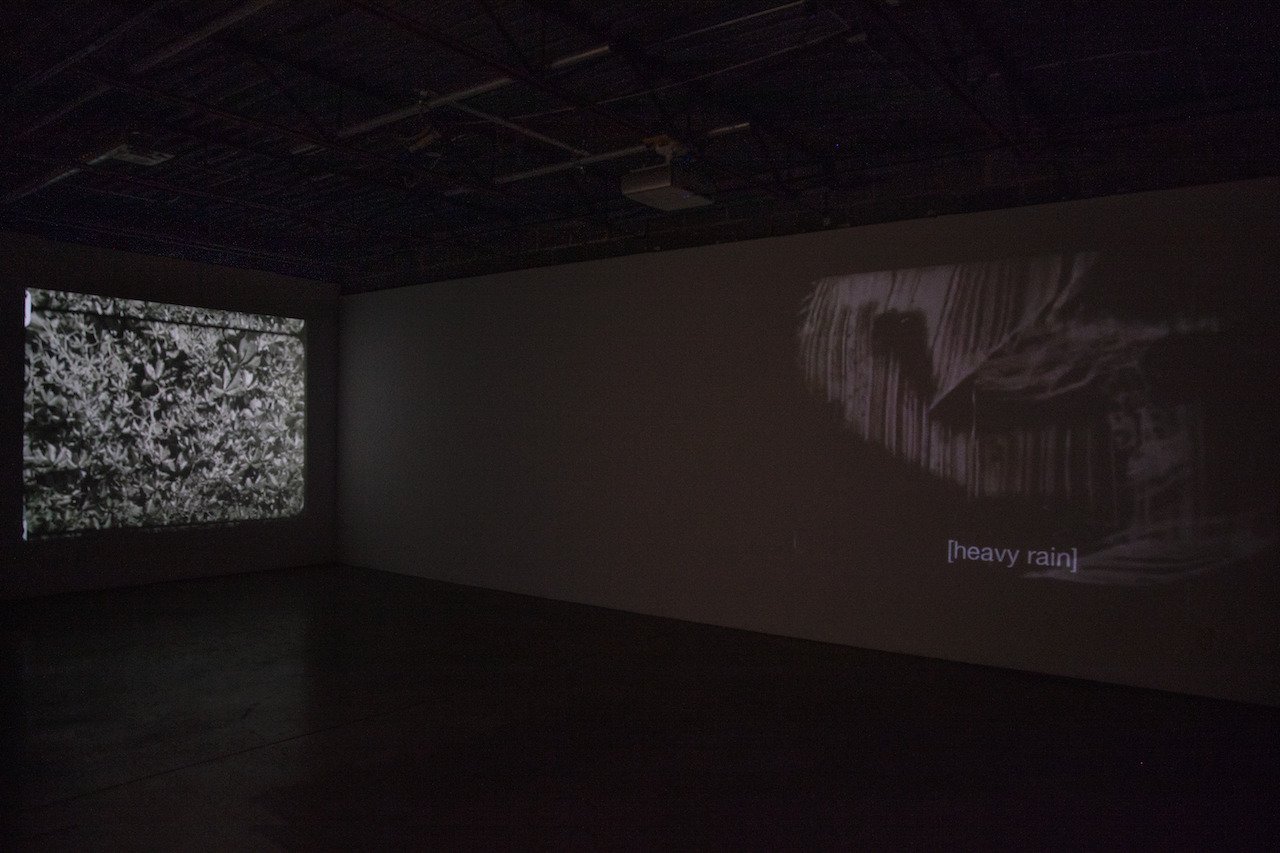
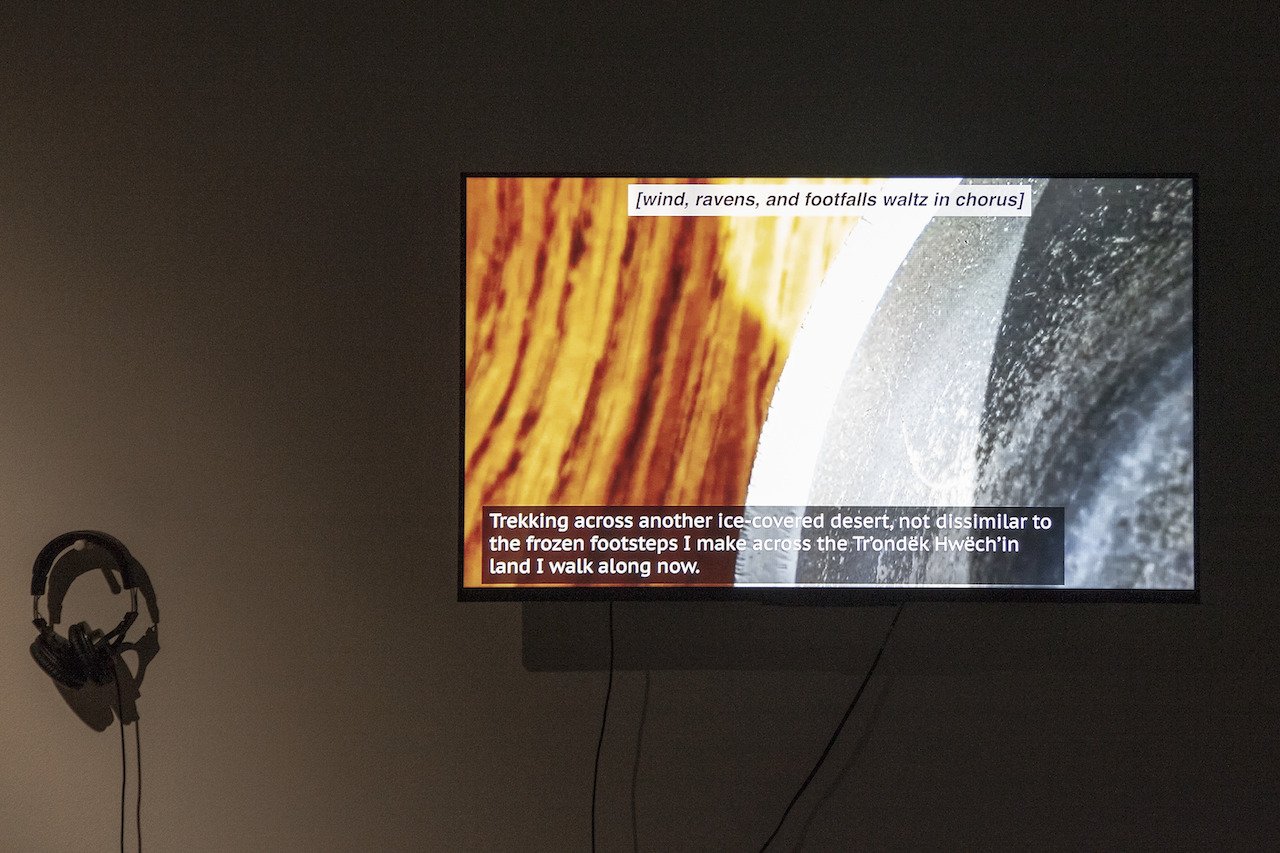
a n c e s t o r a d i o: a triptych by m. patchwork monoceros
PAVED Arts
Saskatoon, SK
September 23, 2021 to October 22, 2021
Conceptualized and created from the found audio documenting a day in the life of the artist’s mother and themself at 16months, a n c e s t o r a d i o is an experimental film triptych exploring the confluence of archival memories, inherited grief and their vibrations into the movements of present life and liberation dreams. Two years after this recording and a few months short of her 40th birthday, the artist’s mother passed away, transitioning into ancestor.
tuning the ocean (i) reaches a net into the static filling the space where memories should live, but do not. With each dip into the deep, electric water, wisps of memory left after their mother’s death float through the weave and are dissolved back into the writhing water mass. Buoyed by a submarinic aural landscape, tuning the ocean (i) submerges our ancestral antenna, divining a frequency, searching for a clear channel. (16mm)
artifracture (ii) crunches melodically across Arctic vistas, accompanying monoceros on a journey North during the winter months. An intimate undressing of an object and domestic mirror into loss’s unrelenting shadows. Shadows that travel, hooked to the heels and leaving trails that dissolve on sight. (digital)
inviting the entanglement (iii) weaves a meditation about the phantasmagorical rhythm and repetition grief brought when it entered monoceros’ life and aged alongside them. Welcoming, inviting, making spiritual room for the patterns, messes, nests of knots that appear in everything they have seen and touched since that first losing. Manifesting tactility in the absence of corporeal comfort and memory. (16mm)
-
m. patchwork monoceros is a poet and artist exploring polysensory production through text/ile, performance, and installation. A Black and chronically ill creator, they are currently based in Treaty 1 / Winnipeg, MB, home of the Métis First Nation and the traditional territory of the Anishinaabe, Dene, Cree, Dakota, and Oji-Cree Nations. They have read and performed at Drop the Mic (Winnipeg, MB 2019), This is Not a Sentence (Paoli, IN 2018), Republic of Inclusion (Ottawa, ON 2017), and at Buddies in Bad Times Theatre (Toronto, ON 2016). monoceros is a VONA fellow (Berkeley, CA 2014) and has since been awarded grants from the Canada, Manitoba, Ontario, and Toronto Arts Councils. patch has been a guest lecturer at the University of Winnipeg, Concordia University, Ontario College of Art and Design, Ryerson University, and Yukon College School of Visual Art. patch’s writing has appeared in magazines such as Recenter Press Journal, Contemporary Verse2, This, Make/Shift, Shameless, and The Peak as well as the When Language Runs Dry zine. In 2019 patch’s work appeared at the Dunlop Art Gallery (Regina, SK) and MAWA/Mentoring Artists for Women’s Art (Winnipeg, MB). Also in 2019, patch was awarded the JRG Emerging Artist Award for their continued pursuit of integrating technology and accessibility through film via their series a n c e s t o r a d i o. In 2020 patch’s work was featured at Gallery 1C03 (University of Winnipeg); Window Gallery (Winnipeg); the Art Gallery of Southwestern Manitoba (Brandon)
TJ Cuthand, Thirza Cuthand is an Indian Within the Meaning of the Indian Act (still), 2017. Digital video. Image courtesy the artist.
TJ Cuthand, Less Lethal Fetishes (still), 2020. HD Video. Image courtesy of the artist.
The Rhythm of This Desire: Works by TJ Cuthand
Exhibition essay by Erica Violet Lee
Artist talk facilitated by Jas M. Morgan
July 15, 2021 to August 20, 2021
A loose retrospective of Regina-born artist, writer, and performer TJ Cuthand’s moving image works, The Rhythm Of This Desire is an online exhibition that sits with the diverse intimacies of the artist’s vast filmography. Spanning two and a half decades, Cuthand’s experimental narratives consider the lived realities and intersections of Indigeneity, queer and Two-Spirit identity, sexuality, and madness with a mindful awareness often borne of the personal. The autobiographical, the fictive, and the performative coalesce in varying intensities throughout their work in a way that gives over space to the necessity of internal subjectivities as well as the urgencies of the oftentimes not-so-external world.
Alongside three programs of select film and video works, The Rhythm Of This Desire will be accompanied by a live-streamed performance by Cuthand, an exhibition essay authored by poet and scholar Erica Violet Lee, and an artist talk facilitated by writer, curator, and researcher Jas M. Morgan. This exhibition sees the artist’s work staged within their home territory and welcomes discussion centering the relations and collaborative practices distinct to the curation of their work within Treaty 6 Land.
-
July 13, 2021
The first time I saw [TJ] Cuthand’s work, I blushed. The last time I viewed [his] work, I blushed harder. It never seems to get easier to hide what you’re feeling when you’re in a room with such raw and potent materials.
Cuthand’s films are not an uncomplicated experience for the viewer. That would be far too unfulfilling. If there’s anything I know about [TJ], it’s that, like any great performer, [he is] all about the tease.
The first [TJ] Cuthand film I saw was in a little theatre in Saskatoon. Entitled “You Are a Lesbian Vampire” (2008), this experience of Cuthand’s signature, casual parlance overlaid on a scenario of lust and queer maybe-could-be-love was one of the first times I saw queer – and more specifically (as we must be) lesbian Indigenous sexualities displayed onscreen. At the time, I didn’t yet know I was queer, or more likely, just hadn’t yet admitted it to myself because there was little room to even consider queerness as possibly existing in tandem with Nativeness.
I do not exaggerate when I say that it is thanks to the work of artists like Cuthand, and Cuthand specifically, that so many of us are now able to exist in ways that are much more honest and genuine to our Two-Spirit souls and bodies. In stark contrast to the heteronormative standards of love that overwhelm Indigenous discourse to this day, Cuthand’s films are fearless declaration after fearless declaration of something much deeper than the shallow, packaged “pride” we are sold – they are embodied queer NDN sovereignty enacted.
The impact of Cuthand’s works never fails to strike fear into the hearts of colonizers and provoke lust in the gay little hearts of prairie neechies. [His] career, which has been ongoing since 1995, has accomplished more in shaping the world of plains art and theory than any white dude you can name, and [he] does it all using a bare (often quite literally) minimalist approach that is at once intentional and practical.
“Thirza Cuthand is an Indian Within the Meaning of the Indian Act” (2017) may be one of the artist’s most well-known pieces. Cuthand provocatively addresses the notions of whiteness in Indigenous communities and the difficulties of being a “white-passing” or “light-skinned” Indigenous person, contrasting the differences of [his] own experience with that of [his] family. “…white people thinking I was one of the ‘better ones’,” Cuthand contends, due to their appearance, is still a story rooted in anti-Indigenous racism, and deeper still, I consider, of anti-Blackness. In a conversation of identity that continues and evolves daily, the stakes are these: a demand for Native life and Native survival, despite and in spite of colonialism that still threatens to tear apart our worlds and our communities.
In “Woman Dress” (2019), a piece for the National Film Board, Cuthand documents an interview with [his] auntie. “Hi Auntie!”, the video begins, with familiar and warm phrasing; among images of the plains and running buffalo, a woman in a hide dress appears, like a long-gone but never forgotten ancestor walking into the room. Launching into a lesson about the traditional lack of gender pronouns in Cree culture and language, Cuthand is never afraid to challenge patriarchal notions of who our people are often assumed to be. By the end of the story, a powerful urban presence is established, complete with colorful graffiti and a conclusion that dreams of the Native femme freedom to travel and move through our lands without restraint that we are so often denied.
“Medicine Bundle” (2020) juxtaposes beautiful imagery of the prairies with stories of the varied, complex relationships between Cree people and bears; weaving tales that honour both the material and spiritual elements of such animal-human relations through the lens of sickness and pandemics. Cuthand outlines the significance of dreams and dreaming to our survival as Indigenous people. “Settlers don’t really understand…”, Cuthand says, “…so it’s not a story I tell often.” Thankfully, [he] trusts us as [his] audience just enough to lend us these precious, vulnerable histories of [his] family and of our nations, if only for a moment.
Intense is too quotidian a word to describe Cuthand’s art when dirt, flesh, and earth are [his] specialties. Flirting with form and the feel of its breaking, remaking queer and Two-Spirit histories, presence, and futures in a world where Indigenous people are allowed and encouraged to be complicated, messy, beautiful lovers, Cuthand is one of the most alluring, incisive, and hilarious political commentators of this moment. Smart is too neat a word for Cuthand’s art when it ranges from futuristic speculative Indigenous fiction in works like “Just Dandy” (2013), where the Evil Colonizing Queen is responsible for Turtle Island’s contraction of an invasive European flora, to “2 Spirit Introductory Special $19.99” (2015), an advertisement for a coming-out package (pun intended). [His] imagination is expansive and [his] talent never fails to meet the challenge set out.
Given [his] extraordinarily impressive range and prolific output, it’s clear that Cuthand is at once an artist, a theorist, a poet, a documentarian, a performer, and even a historian – though I’m certain all of these labels would be rejected outright for something way cooler. After all, queerness is not only about sexuality (though it doesn’t hurt), but about choosing to live as a creature inherently transgressive of borders and boundaries that some folks are so eager to impose on our skins and lands. Films like “Lessons in Baby Dyke Theory” (1995) still hold up as an intimate and vulnerable - yet never consumable - autobiographical look into Cuthand’s high school experience, skilfully thinking through representation, loneliness, and emerging victorious.
One thing is certain: Regina’s own (but never owned) anticolonial dreamer, [TJ] Cuthand, is just at the baby-dyke-beginning of a remarkable, one-of-a-kind career that will no doubt continue to make us blush like a prairie sunset bursting over the horizon: untameable, dreamy, material, and intangible. It’s one of those things you just need to experience for yourself.
-
July 15, 2021 / / There is an intimate and unguarded honesty that lives throughout TJ Cuthand’s film, video, and performance work. It is both urgent and contemplative, charming and radical, and often materializes through Cuthand’s unselfconsciously refined ability to return to the personal as a means for their ongoing acts of self-determination and autobiography. To begin our programming with the earliest of Cuthand’s works is an instinctive choice that grounds us within the enduring feeling of their ongoing practice. These are not conceptual kernels in their infancy that cumulatively lead to more recent preoccupations, but more so beautifully organic movements from past to present which echo the interconnected and reciprocal experience of subjectivity and relations over time. The work here is diaristic in nature and a lived document of the experience of coming into knowledge and understanding, with Cuthand often navigating the slippage and tensions between subject and object with a playful self-awareness. It is an affective archive of the realizations and rightful rebellions which come to the fore as we begin to understand the ways in which the world works upon and around us in all of our specificities.
Please note, the works in this program reference pedophilia, suicidal ideation, self-harm, and the targeted anti-Indigenous violence of colonial psychiatry.
Lessons in Baby Dyke Theory, 1995, Hi-8, 3:30In 1995, when Thirza Cuthand was 16, she felt like the only lesbian at her Saskatoon high school. This turned out to be untrue, but the lack of visibility in her high school coupled with the lack of representation of Queer teenagers in the ’90s made her make her first video, a comedic short about teenage lesbian loneliness and trying to bribe classmates to come out with the promise of candy.
Bisexual Wannabe, 1997, Hi-8, 3:00
Brokenhearted, a young lesbian considers doubling her dating possibilities.
Working Baby Dyke Theory, 1997, Hi-8, 5:00
A teenage lesbian’s attempts to form friendships with older lesbians leads her on a disturbing ride through the ageist terrain of the dyke community.
Untouchable, 1998, Hi-8, 4:25
A girl with a bad habit of falling for older women befriends a boy lover. This video is an examination of relationships between adults and teenagers. It involves ice cream trucks and bowie knives.
Helpless Maiden Makes an “I” Statement, 1999, digital video, 6:12
By using clips of evil queens/witches this video plays off the sadomasochistic lesboerotic subtexts commonly found in children’s entertainment. A helpless maiden is tiring of her consensual s/m relationship with her lover, and “evil” queen. She wants to break up. An impassioned monologue in a dungeon with our heroine in wrist cuffs quickly becomes an emotionally messy ending in flames. This video was inspired by the artist’s own childhood “kiddie porn”, Disney movies that turned her on to no end and kicked off many a prepubescent masturbation session.
Manipulation/Dictation, 1999, Super 8, 4:00
Originally constructed using a Super 8 camera and a walkman, ‘Manipulation/Dictation’ investigates processes of lesbian seduction, betrayal, and the expectation that both parties can still be friends later.
Anhedonia, 2001, 16mm/digital video, 9:00
‘Anhedonia’ doesn’t play to the back of the church; it shoots directly to the point with poetry and images that evoke controversy in one mindset and passion in another. It shocks people into opening their eyes to the source of the illness in the Indigenous community and meets depression and suicide head-on. Statistics, split images, words, and flesh meld together making this short film long on compassion, screaming out for help, and recognition of the mentally ill’s dream of someday having a normal life.
Sight, 2012, Super 8, 3:23
Super 8 footage layered with Sharpie marked lines and circles obscuring the image illustrates the story of the filmmaker’s experience with temporary episodes of migraine-related blindness and her cousin’s self-induced blindness later in life. Paralleling the experience of blindness with mental illness, Cuthand deftly elucidates that any of us could lose any of our abilities at any time.
Love & Numbers, 2004, digital video, 8:03
A Two-Spirited woman surrounded by spy signals and psychiatric walls attempts to make sense of love, global paranoia, and her place in the history of colonialism. Spliced in between her monologues are the binary codes of all the psychiatric drugs she has taken.
-
August 4, 2021 // In our second program, Cuthand’s storytelling augments its internal subjectivities with a heightened awareness of external constellations of understanding and perception. What might it feel like to be understood by others as we have come to understand ourselves? What taxonomies and hierarchies must we refuse in order to honour ourselves, our ancestors, our kin? Here, both who sees us and the ways in which we are seen guide Cuthand’s narrative methodologies which consider a multiplicity of time and being. The “we” and “us” used here are, of course, too broad. The care of these works lies within their specificity and their call that 2 Spirit, queer, and trans Indigenous futures are here with us now.
Please note, the works in this program reference suicidal ideation.
Thirza Cuthand Is an Indian Within the Meaning of the Indian Act, 2017, HD, 8:40Contemplating mixed-race identity in Canada, Cuthand presents us with images of blood ties and land ties for Indigenous people, and questions the use of the words “white-passing” and “light-skinned.” As a light-skinned Indigenous woman, Cuthand reiterates that racism and discrimination still happen for her, just in different ways. Community belonging is contrasted with the different experiences she has from her darker-skinned family. Ultimately, a video with more questions than answers, it situates the artist’s body in historical trauma and ongoing colonial survival.
Medicine Bundle, 2020, HD, 9:33
Cuthand discusses a medicine bundle in her family, and the bear cub spirit attached to it, as it heals her family through trauma and disease brought about by colonization.
Boi Oh Boi, 2012, HDV, 9:32
After a long period in life identifying as a Butch lesbian, Cuthand considers transitioning to male. This experience involved a six-month period of her life during which she went by the name Sarain, which she would have been called had she been born a boy, and asking to be called by male pronouns. Complicated by mental health crises, Cuthand found themselves in a mental health group home for women, having to hide their gender dysphoria. After a considerable amount of thought and discussion, Cuthand changed her mind and decided to remain a Butch lesbian. Explaining her decision, she touches on the desire to maintain a connection to the lesbian community, as well as the sexy genderfucking that happens when one is a masculine woman. Shot partially on location in Hamburg, Germany, riding back and forth on the UBahn is a metaphor for her eventual acceptance of fluctuating between a masculine and a feminine gender. In a nod to her two-spirited ancestors, she mentions that she would have been able to make up her own gender had colonization not happened.
2 Spirit Introductory Special $19.99, 2015, RED, 4:37
Don’t worry if you are just coming out as a 2 Spirited person, we have just the introductory special for you! New to the 2 Spirit lifestyle? `Want to talk to someone in the Spirit and the Flesh instead of reading The Spirit and the Flesh? We have just the service for you! Call now and for only 19.99 a month you can get instant unlimited telephone access to traditional knowledge and support. We also provide monthly gifts for subscribers, call now and we can hook you up with this beaded whisk! Perfect for DIY spankings and pancakes the morning after your first snag! Don’t hesitate, ring those phones!
Through The Looking Glass, 1999, digital video, 12:30
Half-breed Alice attempts to become queen and struggles with the Red Queen and the White Queen’s disapproval of her racial transgressions. A funny and quirky take on race, this piece stars Cosmosquaw as the Red Queen, Shawna Dempsey as the White Queen, and Thirza Cuthand as Alice.
2 Spirit Dreamcatcher Dot Com, 2017, HD, 4:56
‘2 Spirit Dreamcatcher Dot Com’ queers and indigenizes traditional dating site advertisements. Using a Butch NDN ‘Lavalife” lady (performed by director Cuthand), ‘2 Spirit Dreamcatcher Dot Com’ seduces the viewer into 2 Spirit “snagging and shacking up” with suggestions of nearby pipeline protests to take your date to and helpful elders who will matchmake you and tell off disrespectful suitors. It’s the culturally appropriate website all single 2 Spirit people wish existed. Following up on her video “2 Spirit Introductory Special $19.99” this work examines the forces of capitalism through envisioning a “financially unfeasible” service for a small minority community.
Just Dandy, 2013, HDV, 7:37
Invited to speak at an Indigenous Revolutionary Meeting, the narrator describes an intimate encounter with an Evil Colonizing Queen which leads to Turtle Island’s contraction of an invasive European flora.
-
August 13, 2021 // Bringing together three of Cuthand’s recent short films, NDN Survival Trilogy asks: what might decolonization look like in daily practice? Here, the relations between resource extraction, postcolonial futures, and lived Indigenous realities are made visible as the artist moves between dystopic fictions and personal histories.
Reclamation, 2018, HD, 13:11
“Reclamation” is a documentary-style imagining of a post-dystopic future in Canada after massive climate change, wars, pollution, and the after-effects of the large-scale colonial project which has now destroyed the land. When Indigenous people are left behind after a massive exodus by primarily privileged White settlers who have moved to Mars, the original inhabitants of this land cope by trying to restore and rehabilitate the beautiful country they feel they belong to. Complicated by the need to look after southern climate refugees, this Post-Dystopic society struggles to reinvent itself as a more healthy community, with opportunities for healing from shared trauma, and using traditional Indigenous scientific knowledge to reclaim Canada environmentally. Indigenous people demonstrate the jobs they are doing to heal Canada, the Earth, and themselves, like clean water projects, gathering litter, disposing safely of hazardous wastes, planting trees, conducting healing circles and ceremonies, playing together, and having discussions about what it feels like to be left behind on what was seen by White settlers as a dying, disposable, planet.
Extractions, 2019, HD, 15:13
A personal film about Canada’s extraction industry and its detrimental effects on the land and Indigenous peoples. This film parallels resource extraction with the booming child apprehension industry currently operating in Canada which is responsible for putting more Indigenous children into foster care than were in Residential Schools. As the filmmaker reviews her life and how these industries have affected her, she also reflects on having her own eggs retrieved and frozen to make an Indigenous baby.
Less Lethal Fetishes, 2019, HD, 9:24
Cuthand uses a latent gas mask fetish as a jumping-off point for looking at her role as a participant in the Whitney Biennial during a contentious year for the museum which had a war profiteer on the board. Faced with calls to withdraw, Cuthand talks about the considerations she had for trying to come up with a way to protest while also being implicated in Kander’s artwashing. Using the gas mask as a potential protest image, she also discusses visiting Chemical Valley, a site in southern Ontario where 40% of Canada’s petrochemical industry lies, and how her visit also left her implicated in artwashing petrochemical money.
-
TJ Cuthand was born in Regina, Saskatchewan, Canada in 1978, and grew up in Saskatoon. Since 1995 she has been making short experimental narrative videos and films about sexuality, madness, Queer identity and love, and Indigeneity, which have screened in festivals and galleries internationally, including the Tribeca Film Festival in New York City, Mix Brasil Festival of Sexual Diversity in Sao Paolo, ImagineNATIVE in Toronto, Frameline in San Francisco, Outfest in Los Angeles, and Oberhausen International Short Film Festival. His work has been exhibited at the Whitney Biennial, the Mendel in Saskatoon, The National Gallery in Ottawa, and The Walker Art Center in Minneapolis. He completed his Bachelor of Fine Arts majoring in Film and Video at Emily Carr University of Art and Design in 2005, and his Masters of Arts in Media Production at X University in 2015. They are of Plains Cree and Scots descent, a member of Little Pine First Nation, and currently resides in Toronto, Canada.
Erica Violet Lee is a nēhiyaw writer, scholar, and community organizer who lives in inner-city Saskatoon. She is a member of Thunderchild First Nation in Saskatchewan. Her lifework focuses on anti-colonial resistance, joy, and love in the time of revolutions. Erica holds a bachelor’s degree from the University of Saskatchewan and a graduate degree from the University of Toronto.
Jas M. Morgan is a Toronto-based SSHRC doctoral scholarship recipient, a McGill University Art History Ph.D. candidate, and an assistant professor in Ryerson University’s Department of English. They previously held the position of Editor-at-Large for Canadian Art. Morgan’s first book nîtisânak (Metonymy Press, 2018) won the prestigious 2019 Dayne Ogilive Prize and a 2019 Quebec Writer’s Federation first book prize and has been nominated for a Lambda Literary Award and an Indigenous Voices Literary Award.
-
Ayanna Dozier is a Brooklyn-based filmmaker-artist and writer working with performance, experimental film, installation, printmaking, and analog photography. Select exhibitions include; BRIC (Brooklyn, NY), Microscope Gallery (New York, NY), Block Museum (Chicago, IL), MoCA, Arlington (Arlington, VA), and The Shed (New York, NY). She was a 2022 Wave Hill Winter Workspace Resident (Bronx, NY), a 2018-2019 Helena Rubinstein Fellow in Critical Studies at the Whitney Independent Studies Program, and a Joan Tisch Teaching Fellow from 2017-2022 at Whitney Museum of American Art (New York, NY). Her film work is in the permanent collection of the Whitney Museum of American Art. She received her PhD in the Department of Art History and Communication Studies at McGill University (Montréal, QC) and is an assistant professor of communication, with an emphasis in film, at University of Massachusetts, Amherst.

